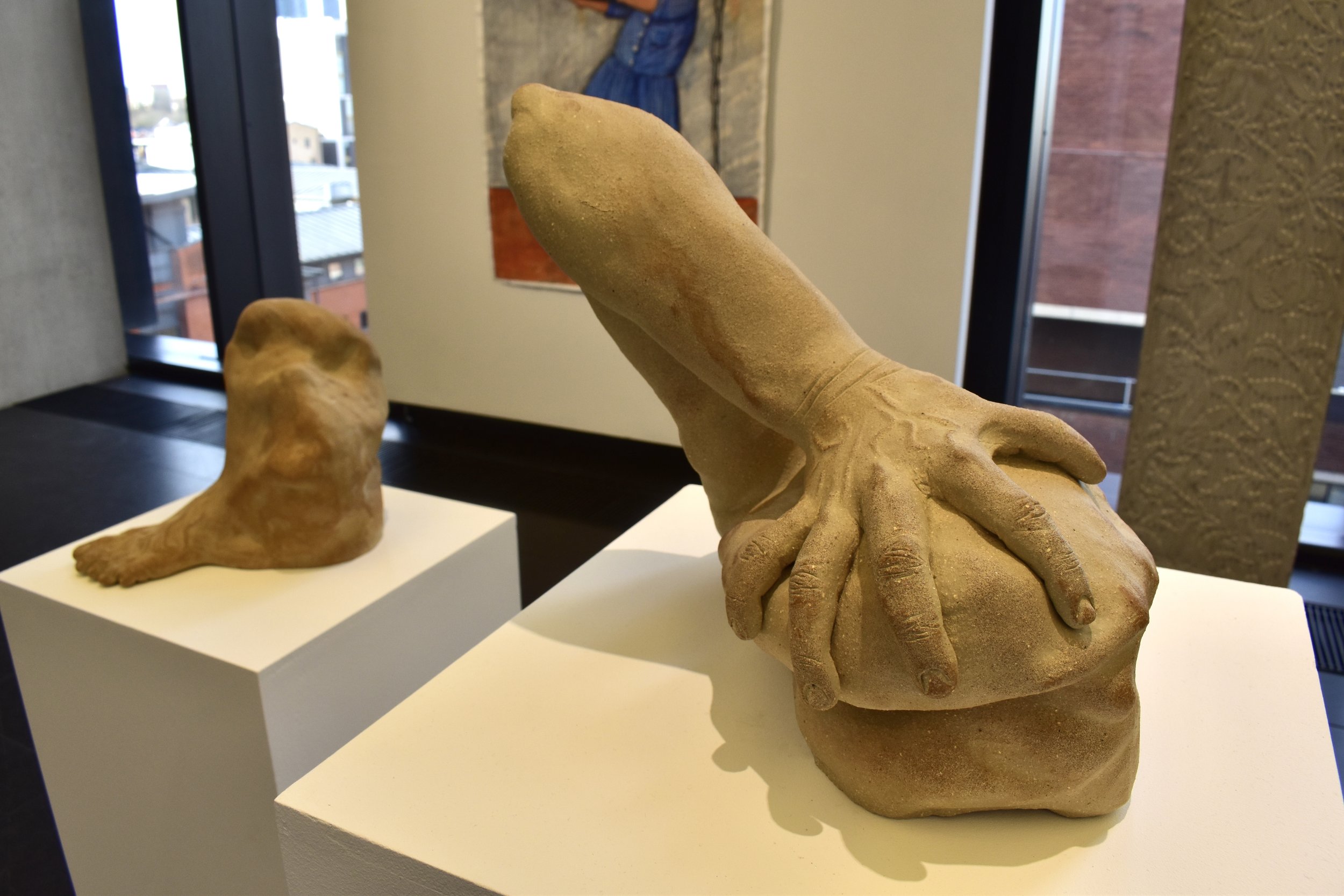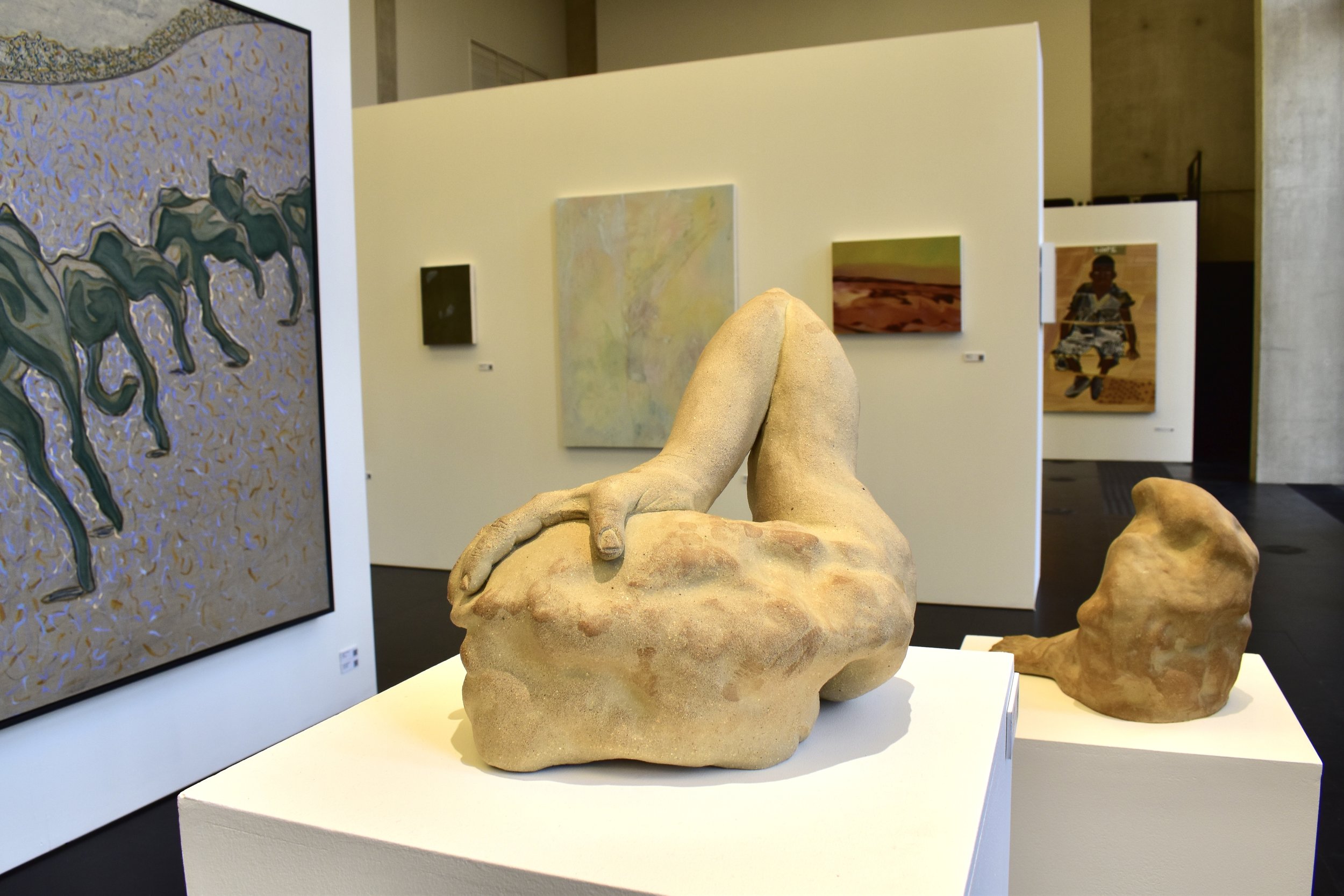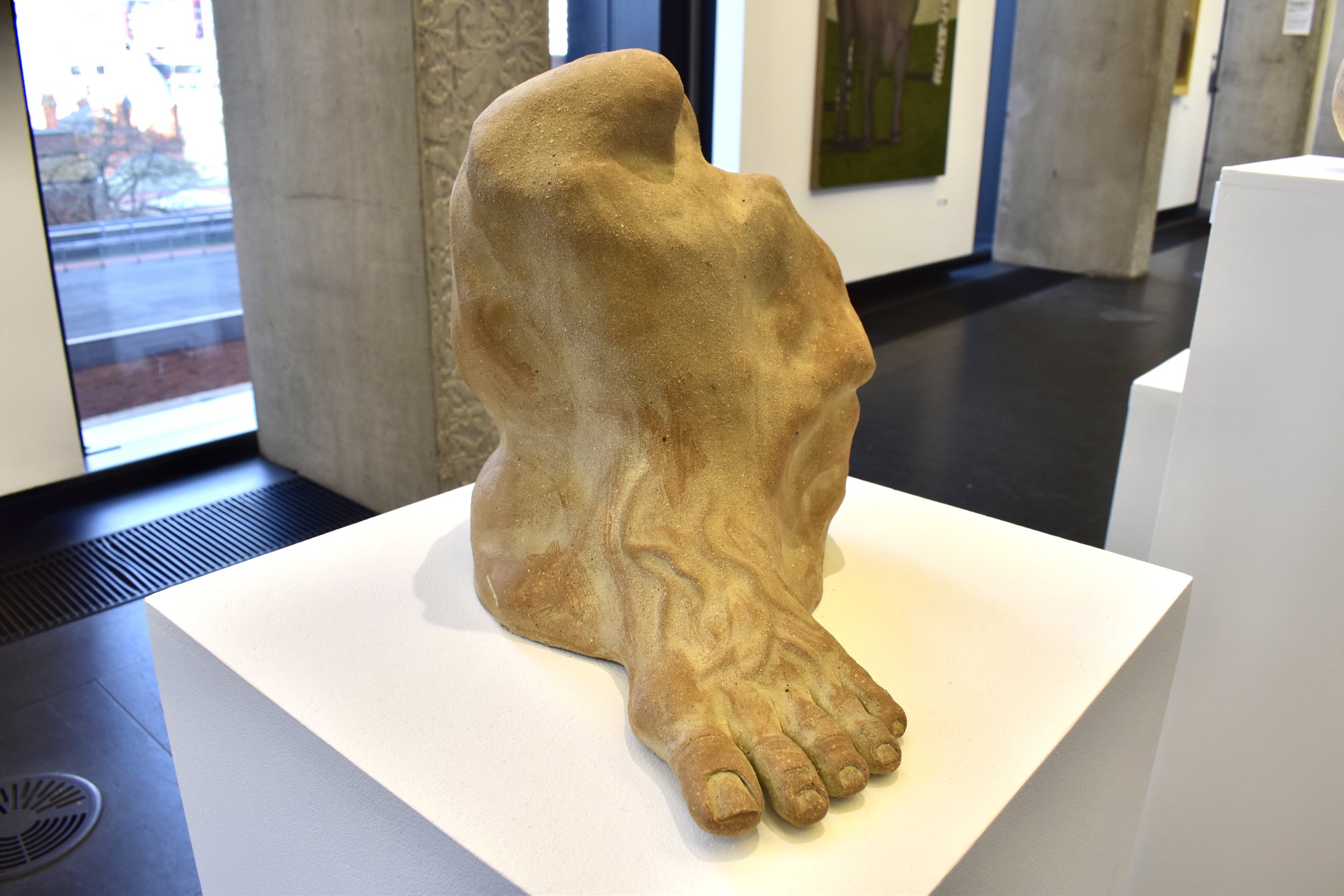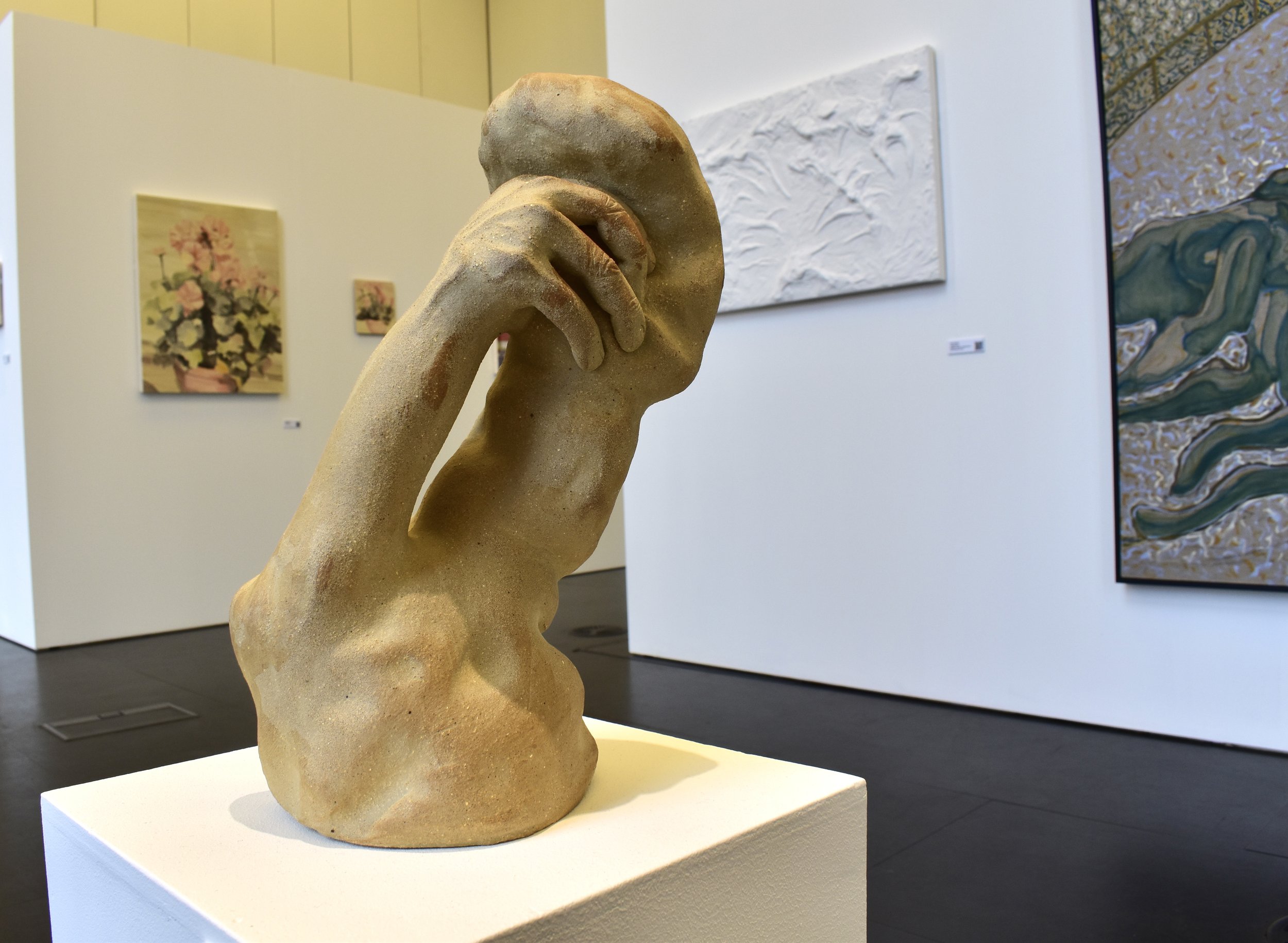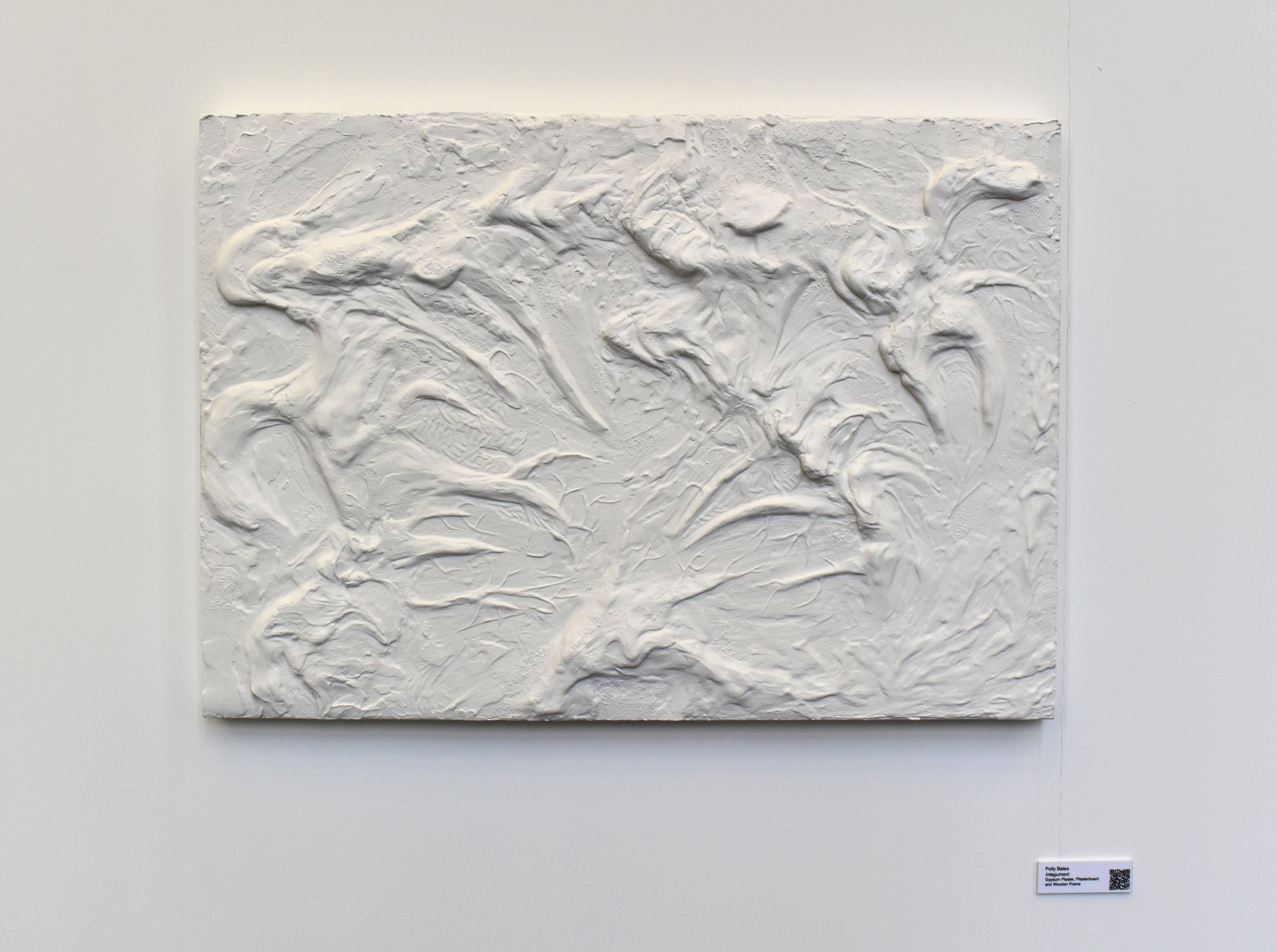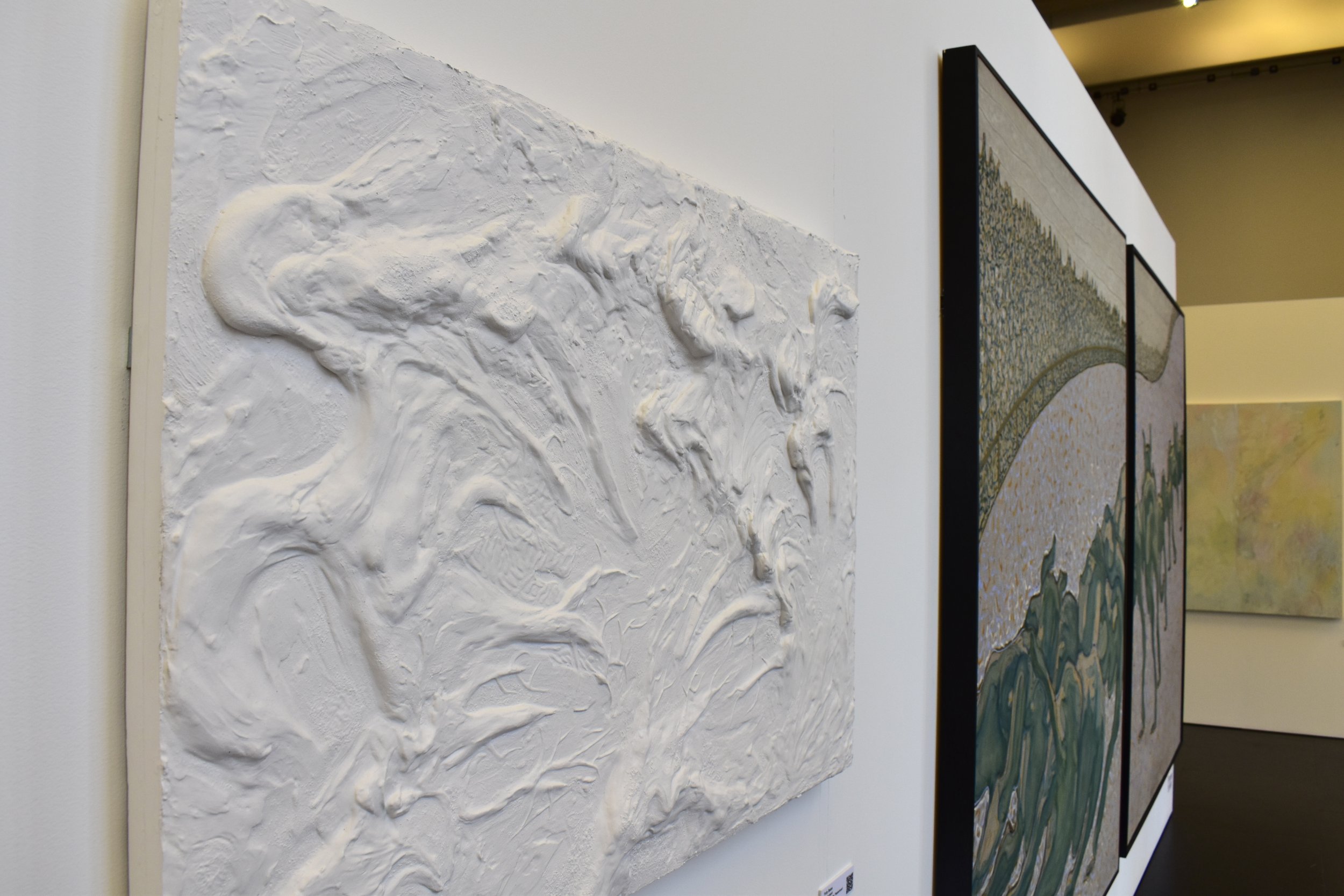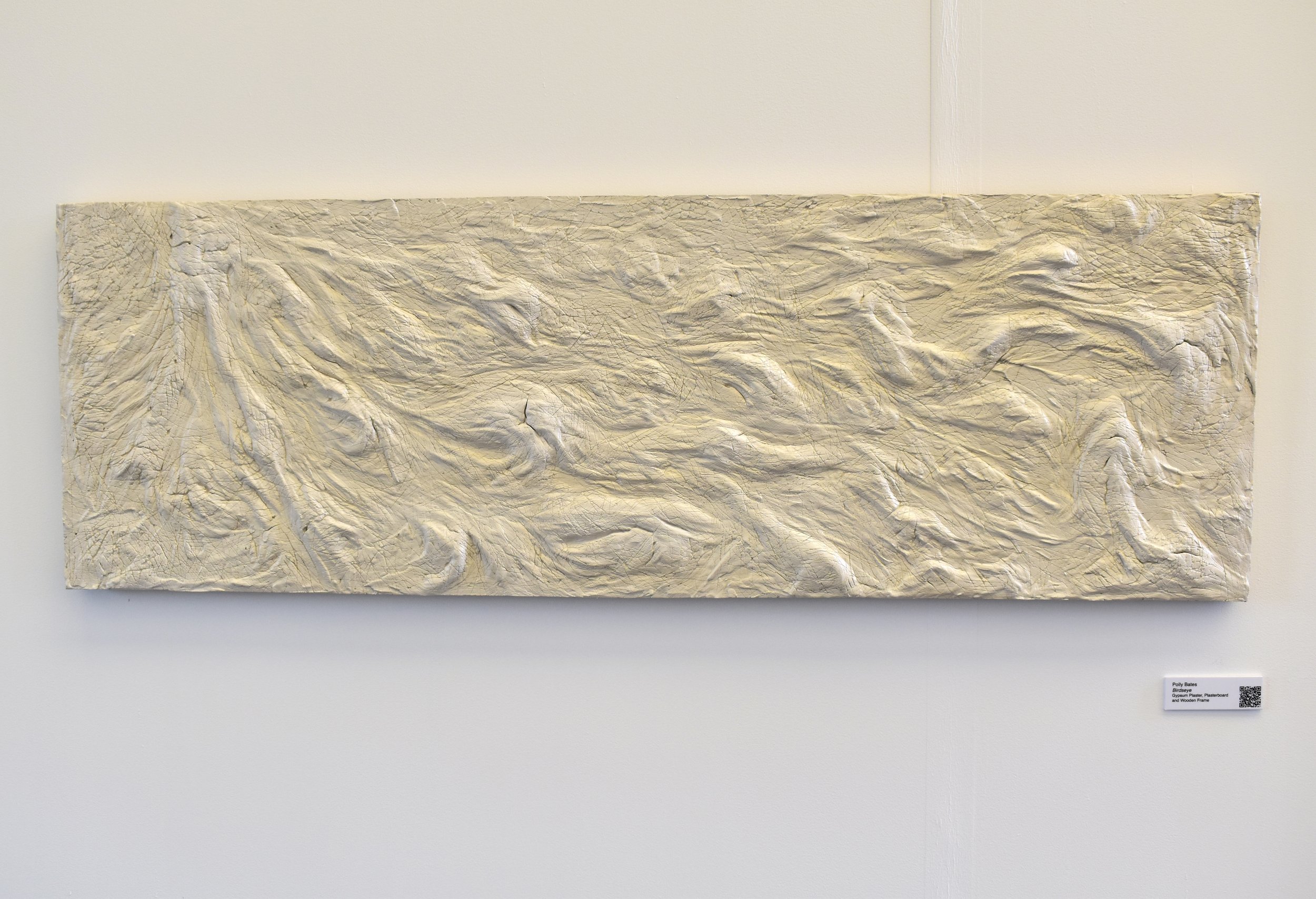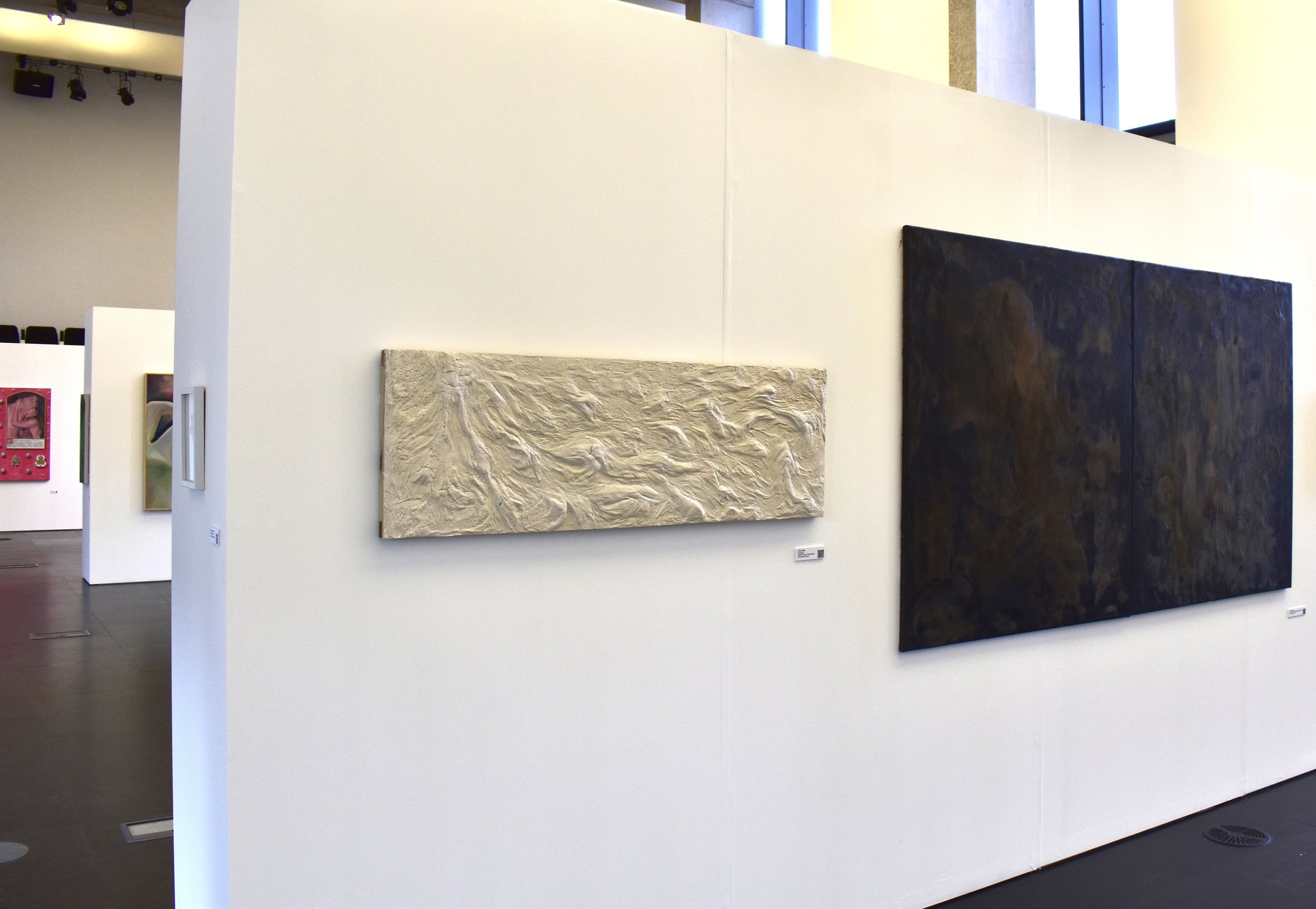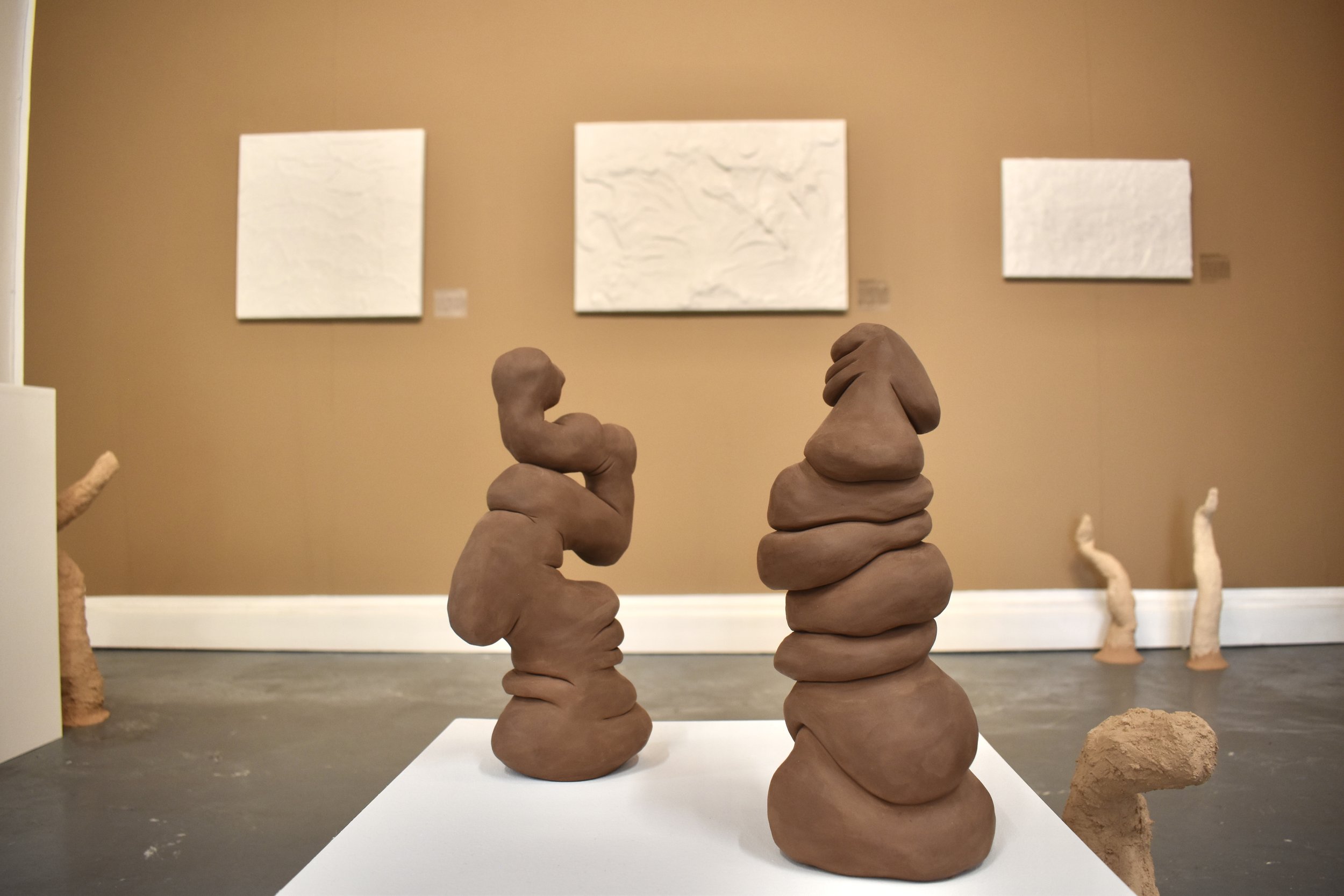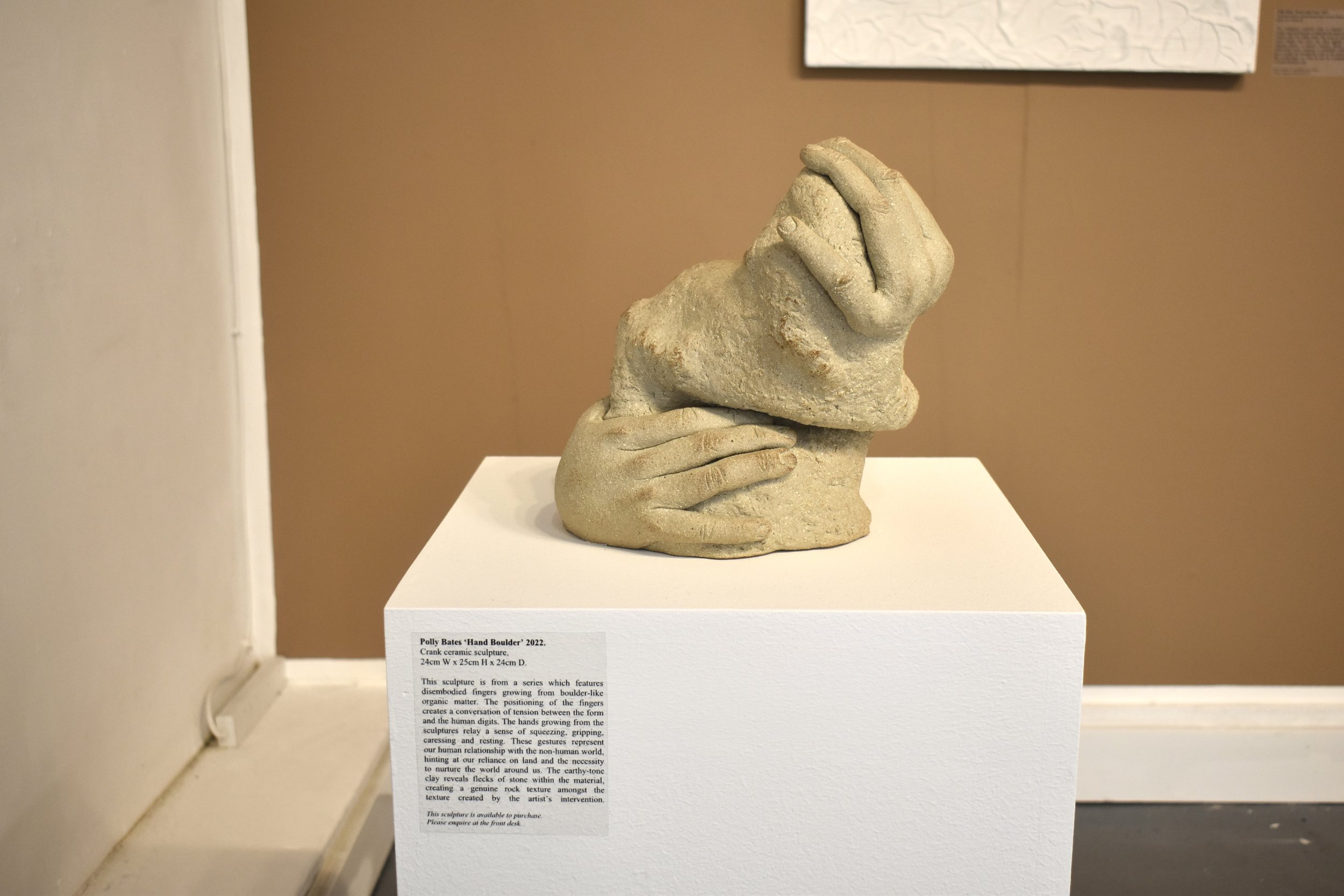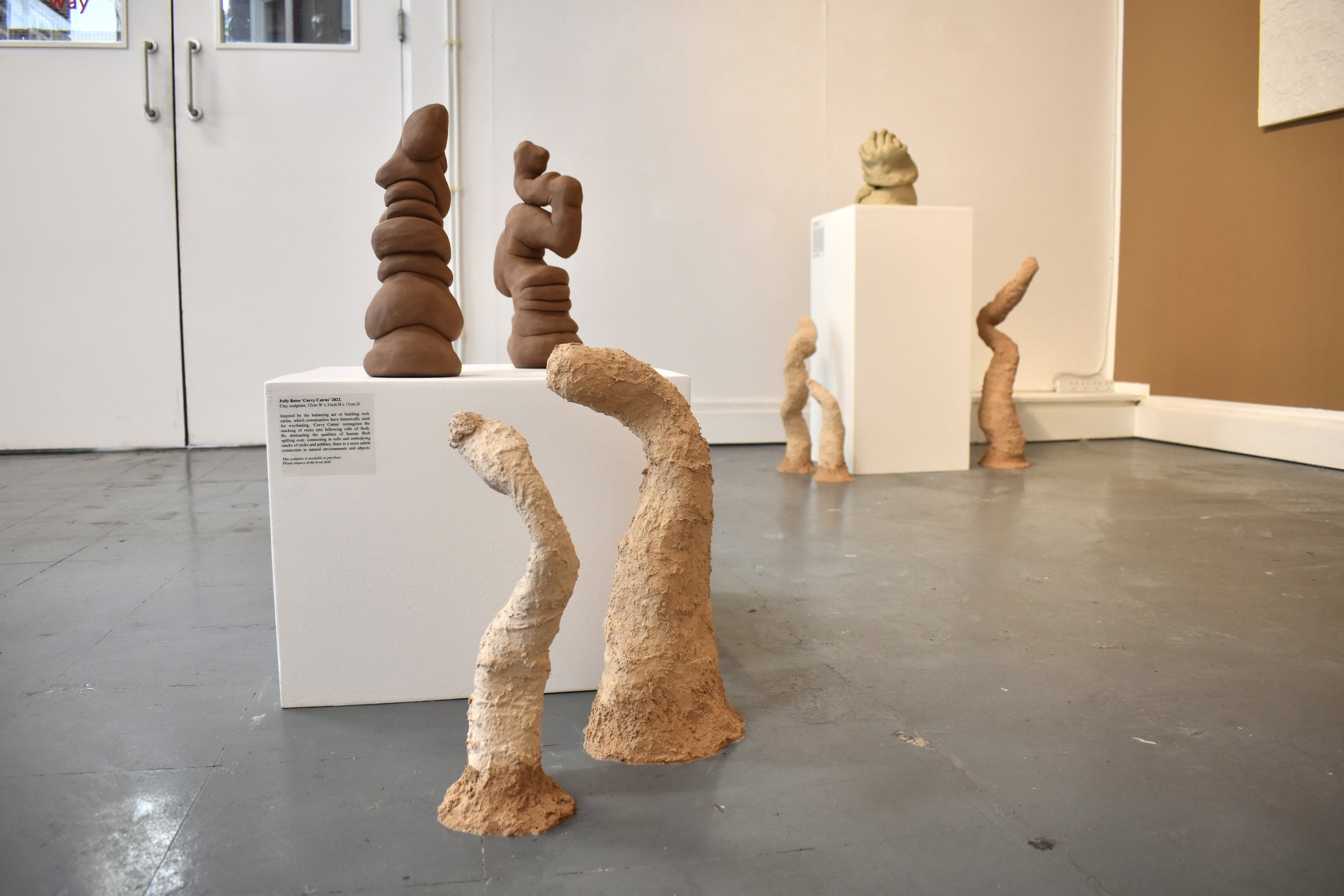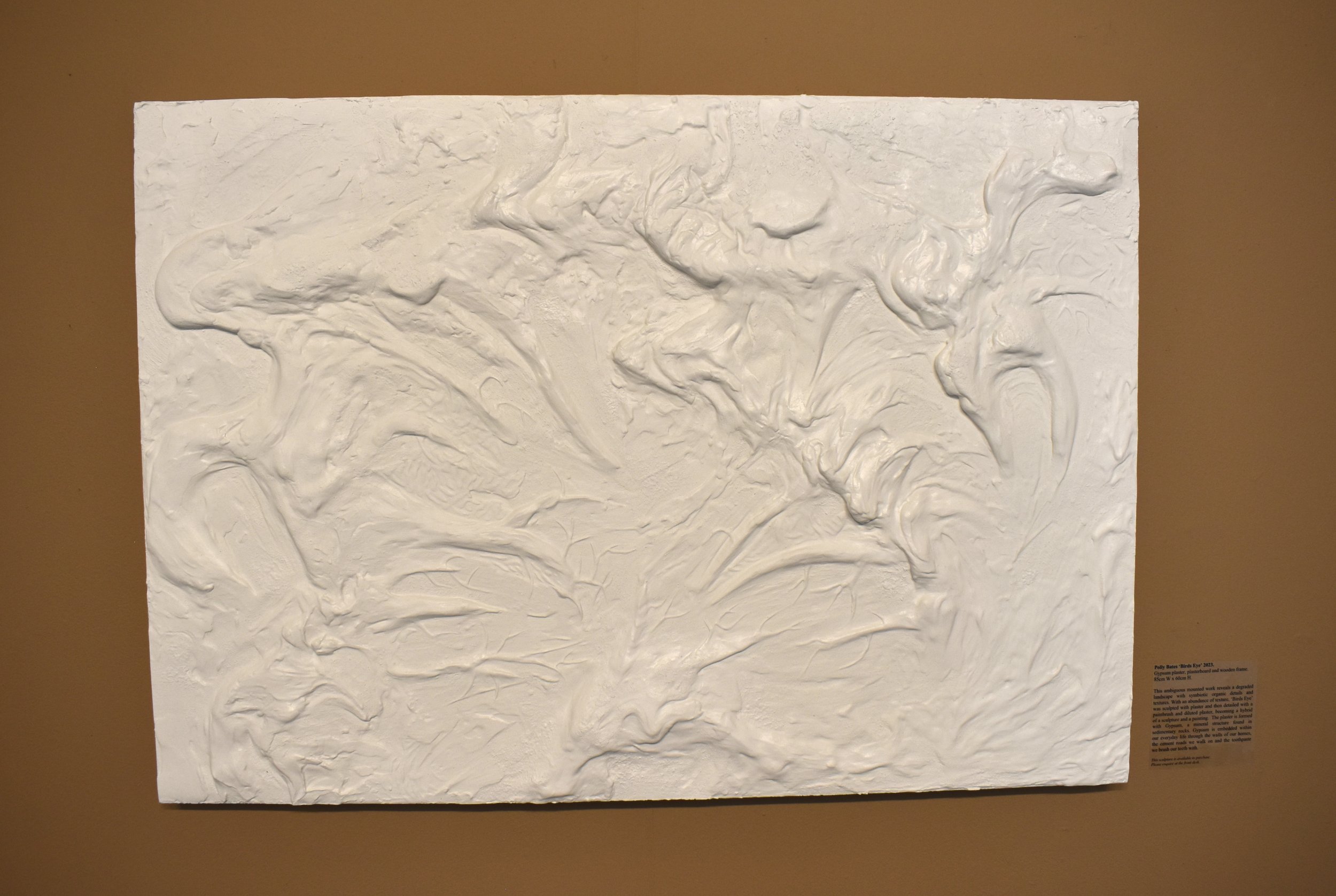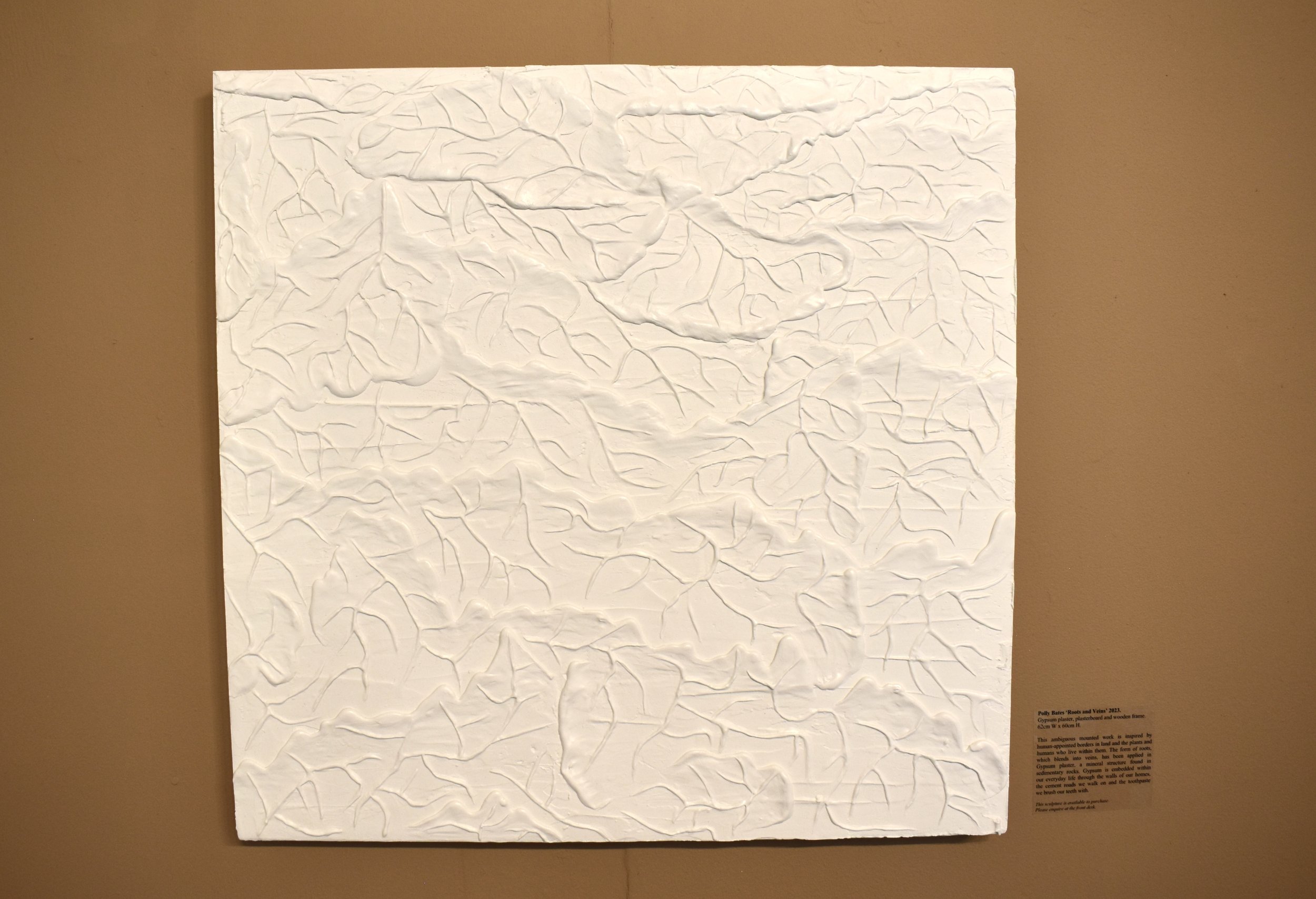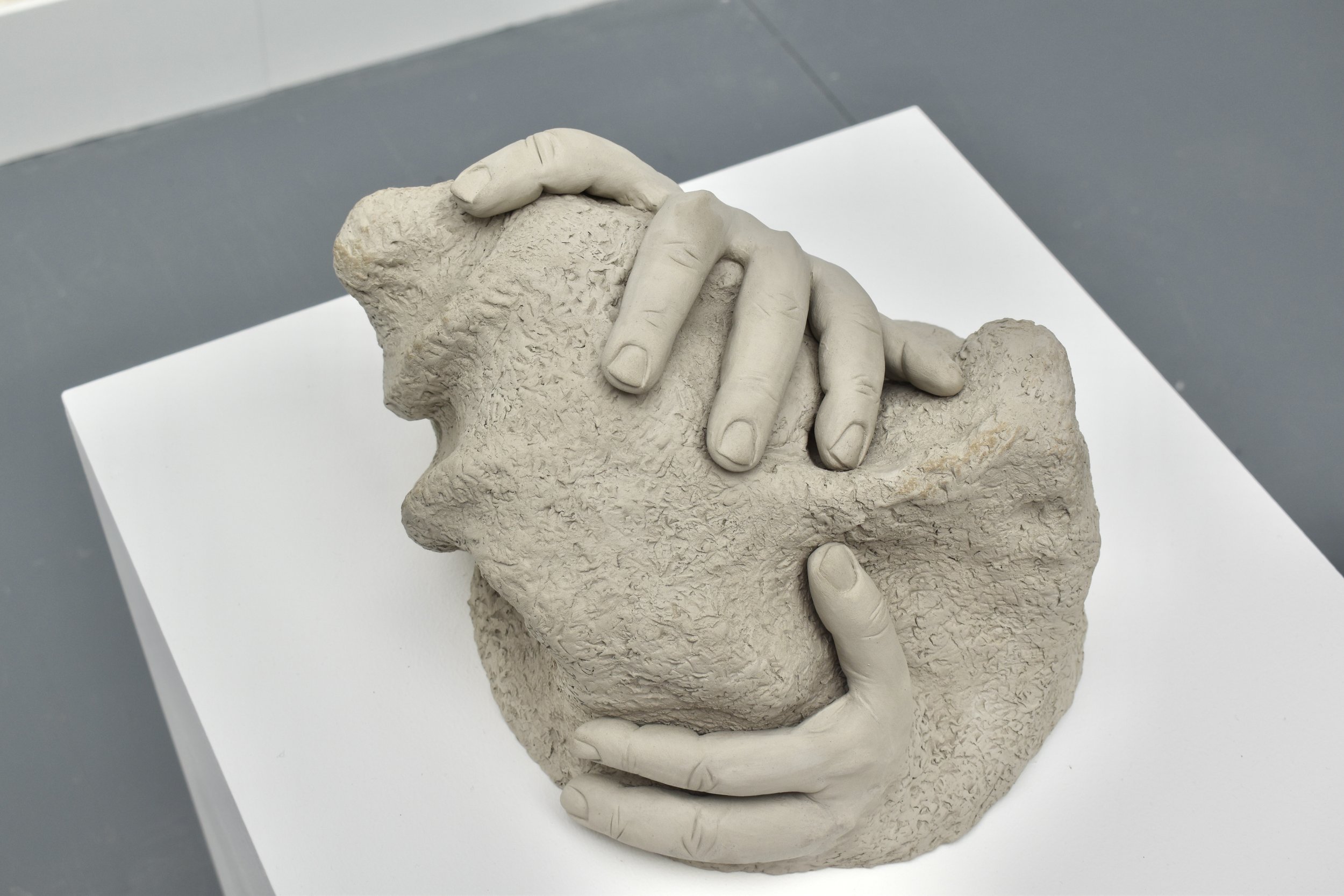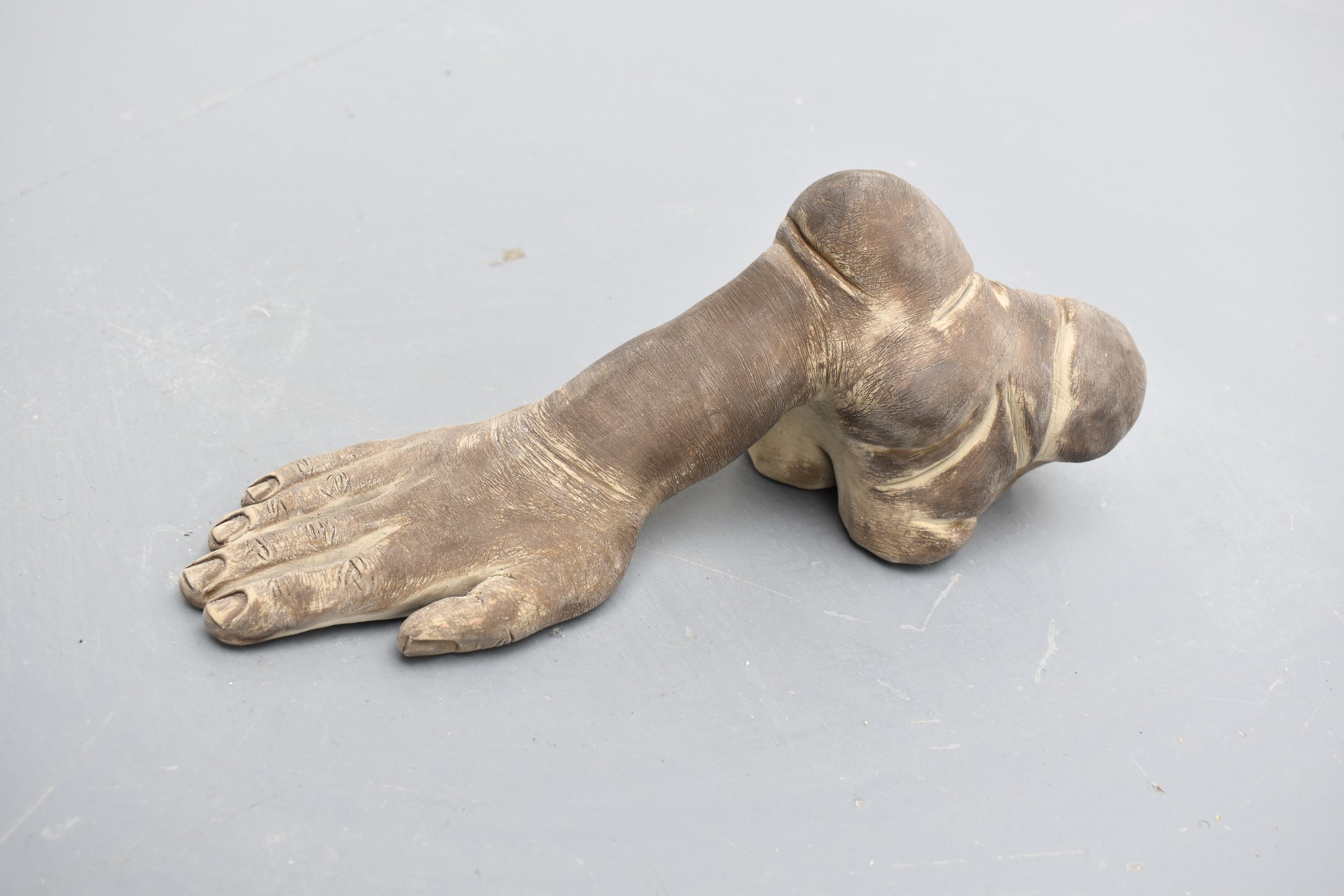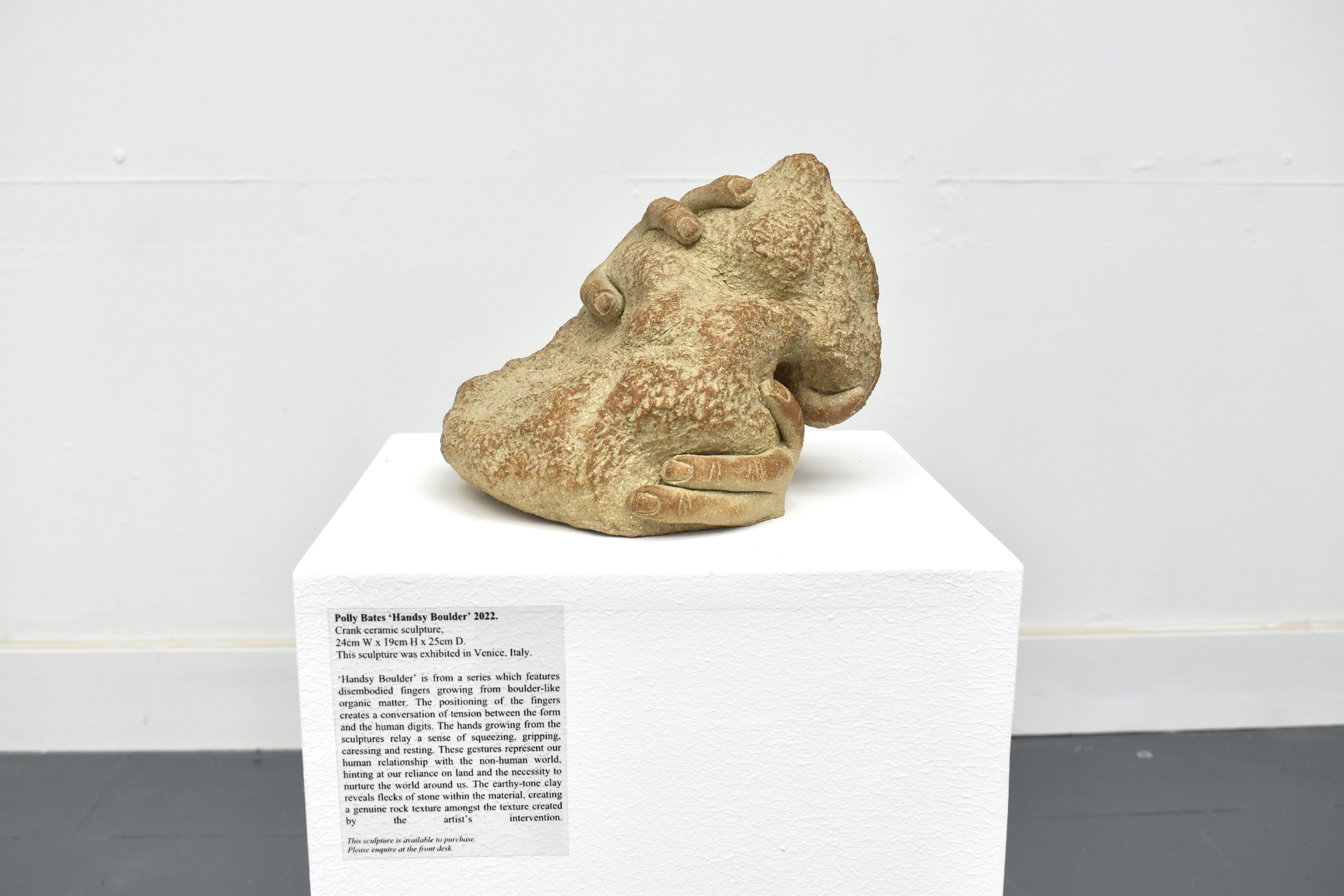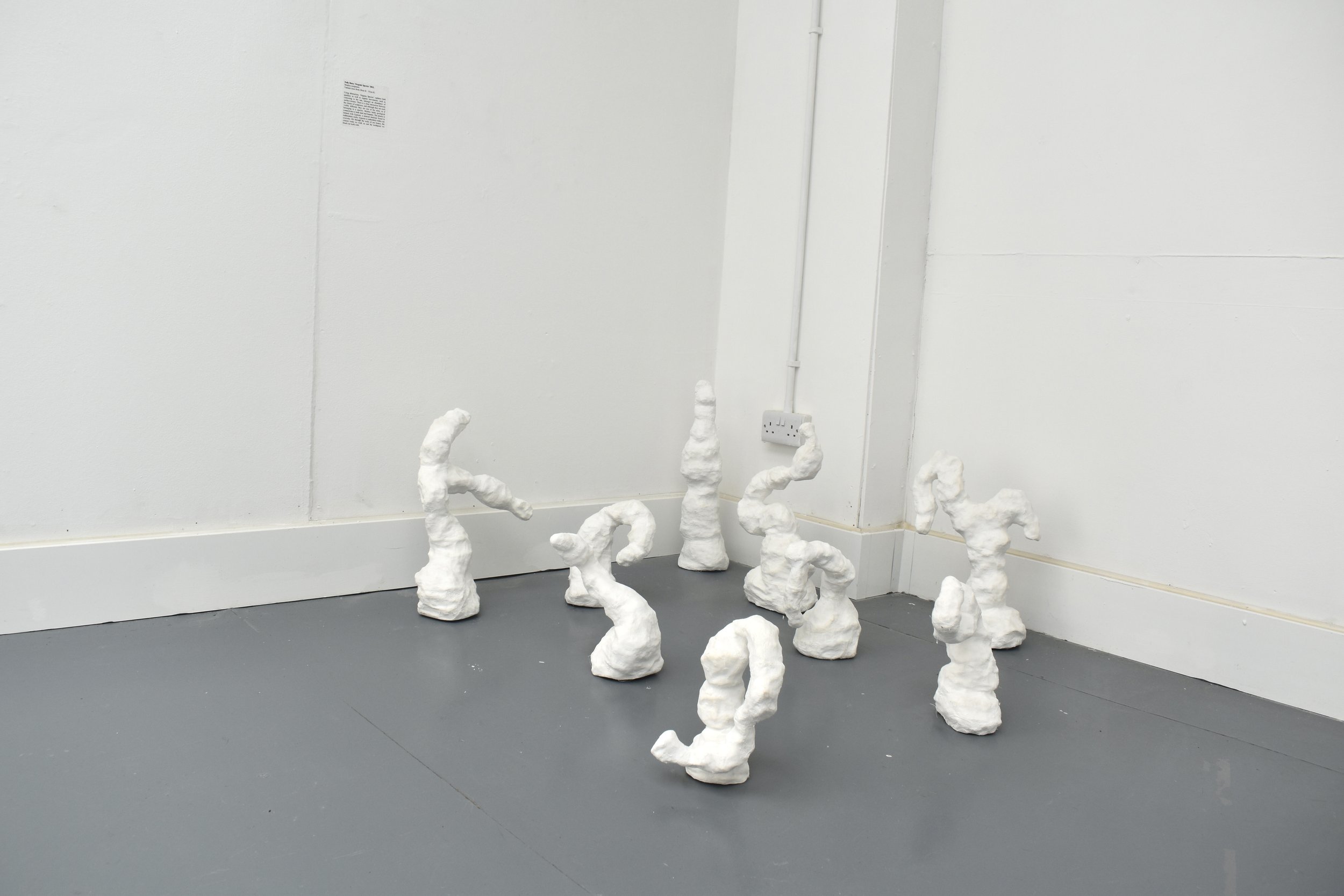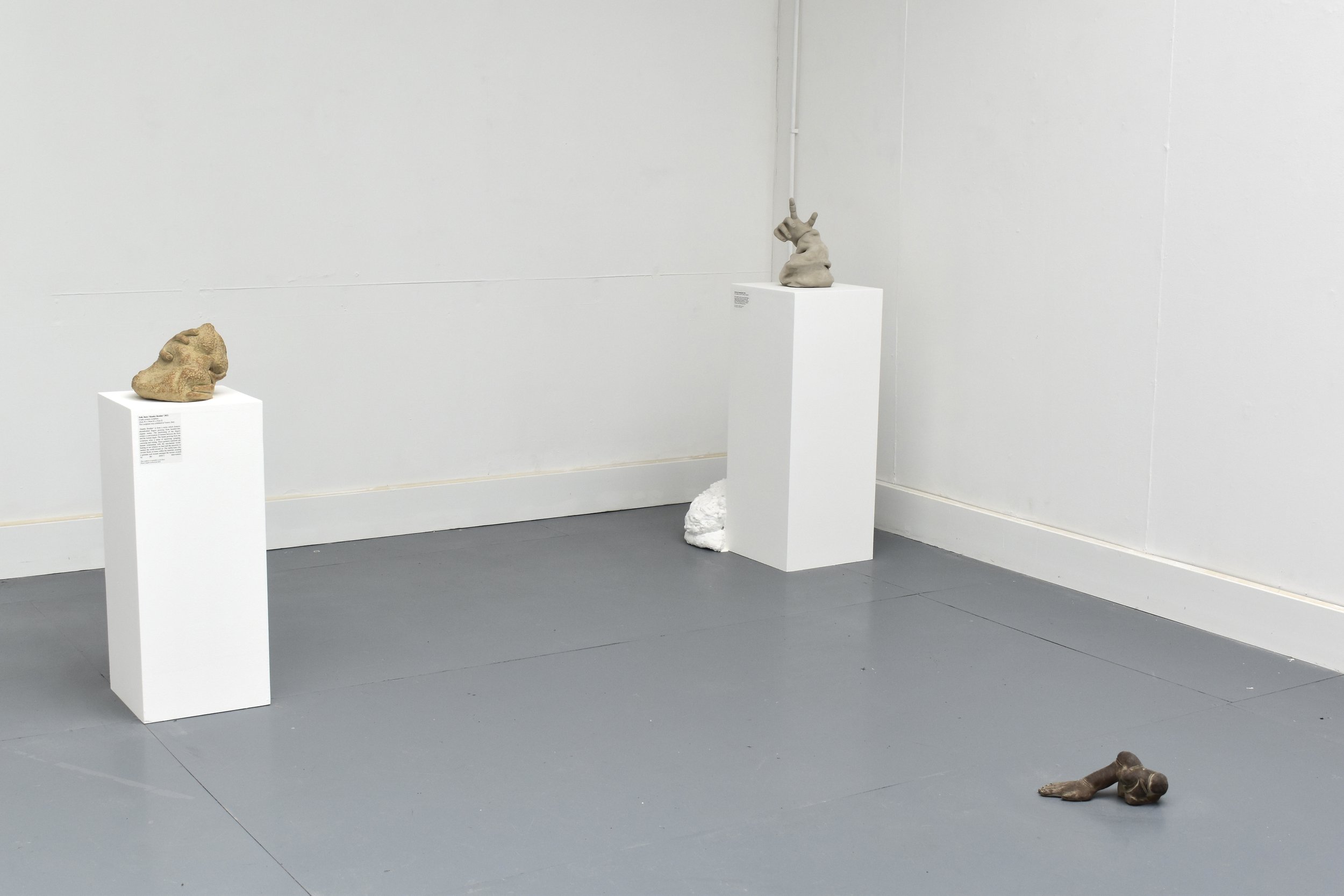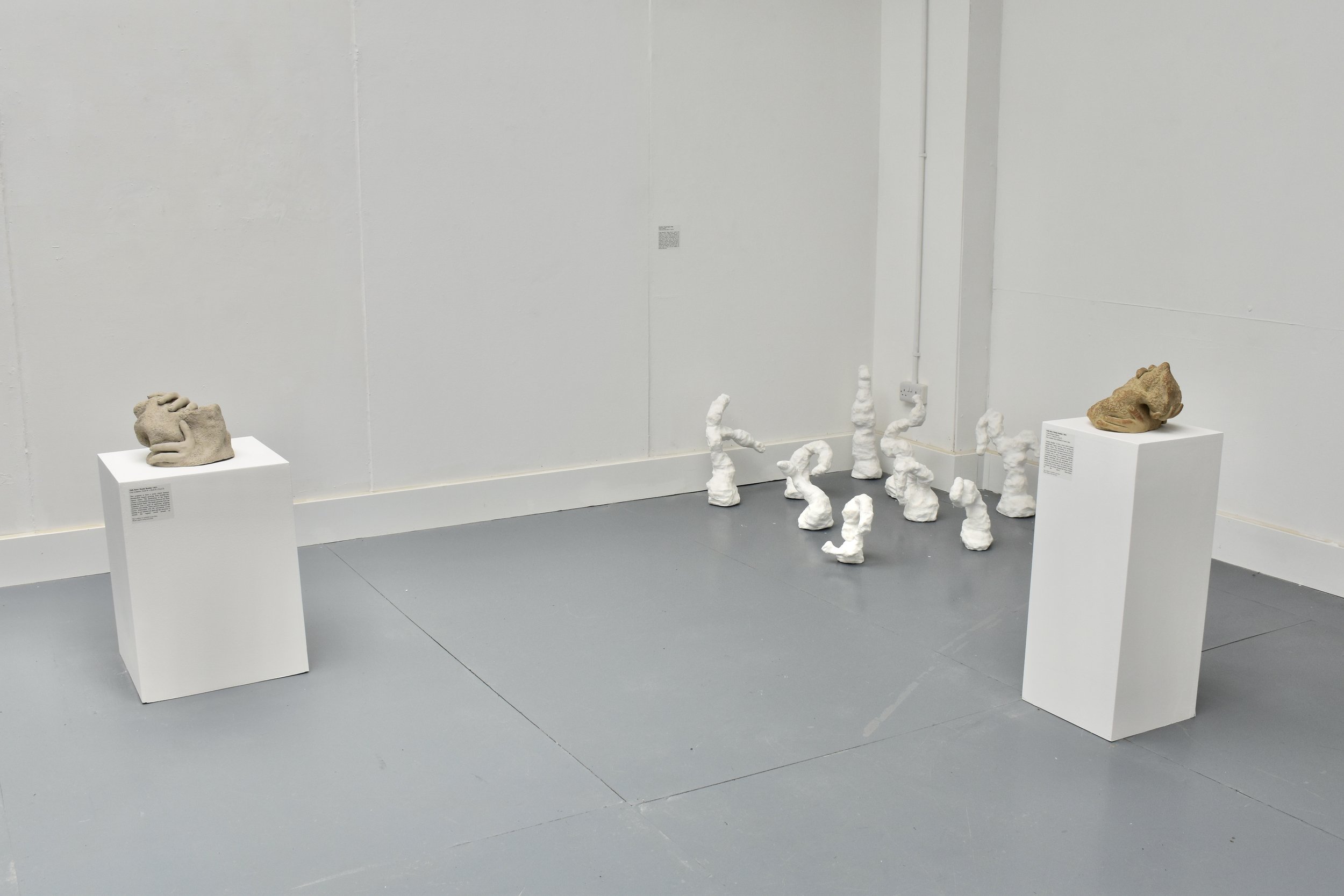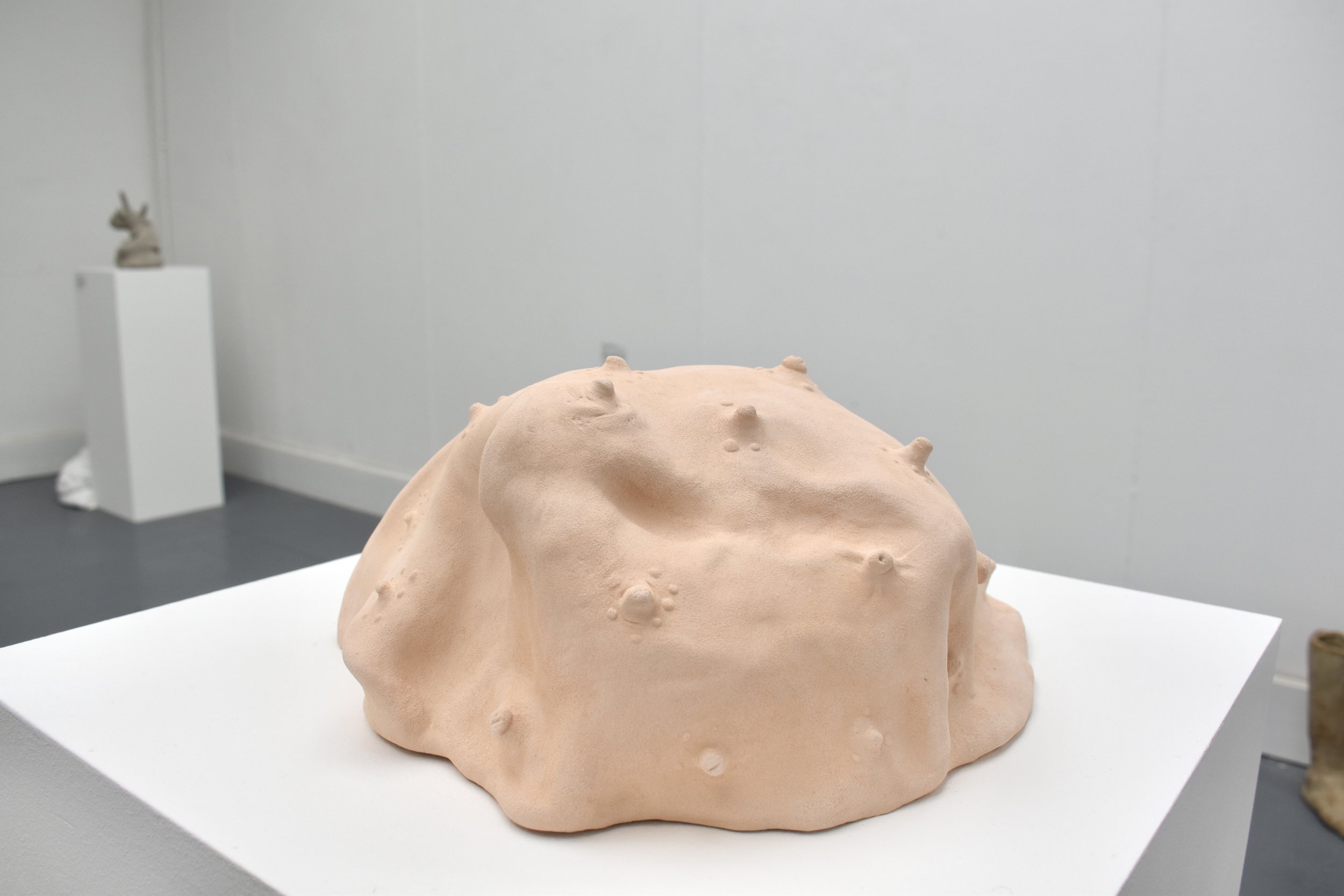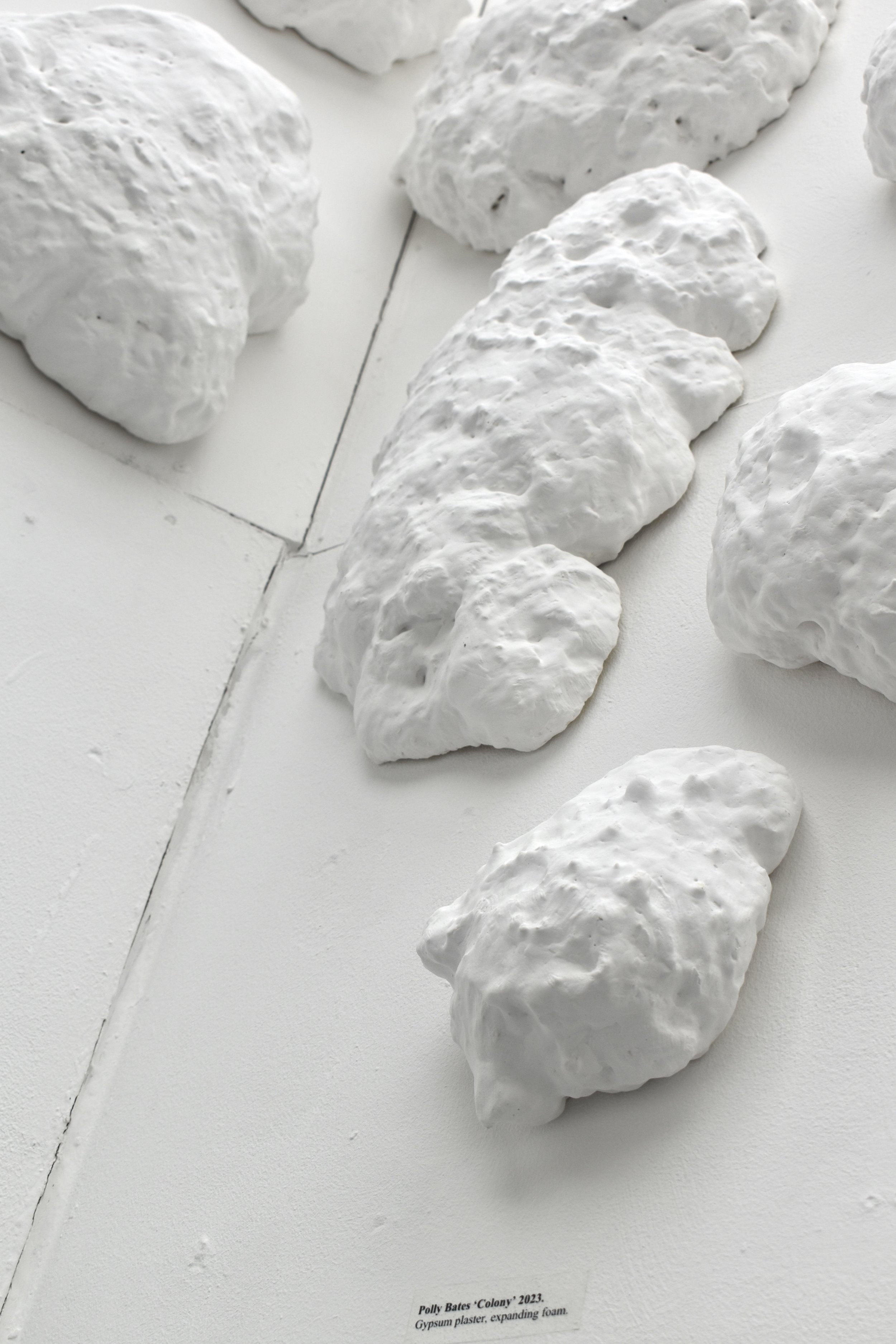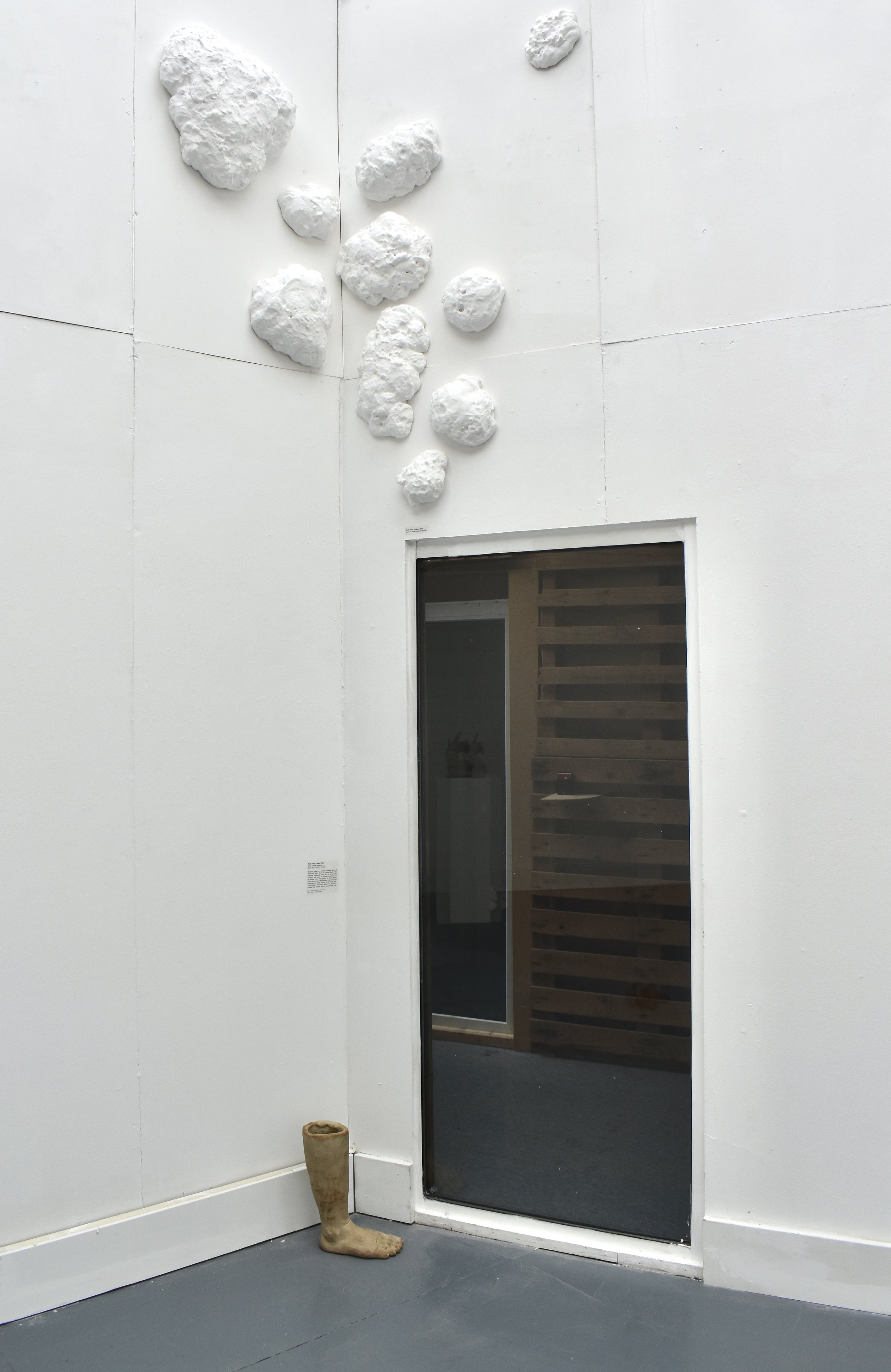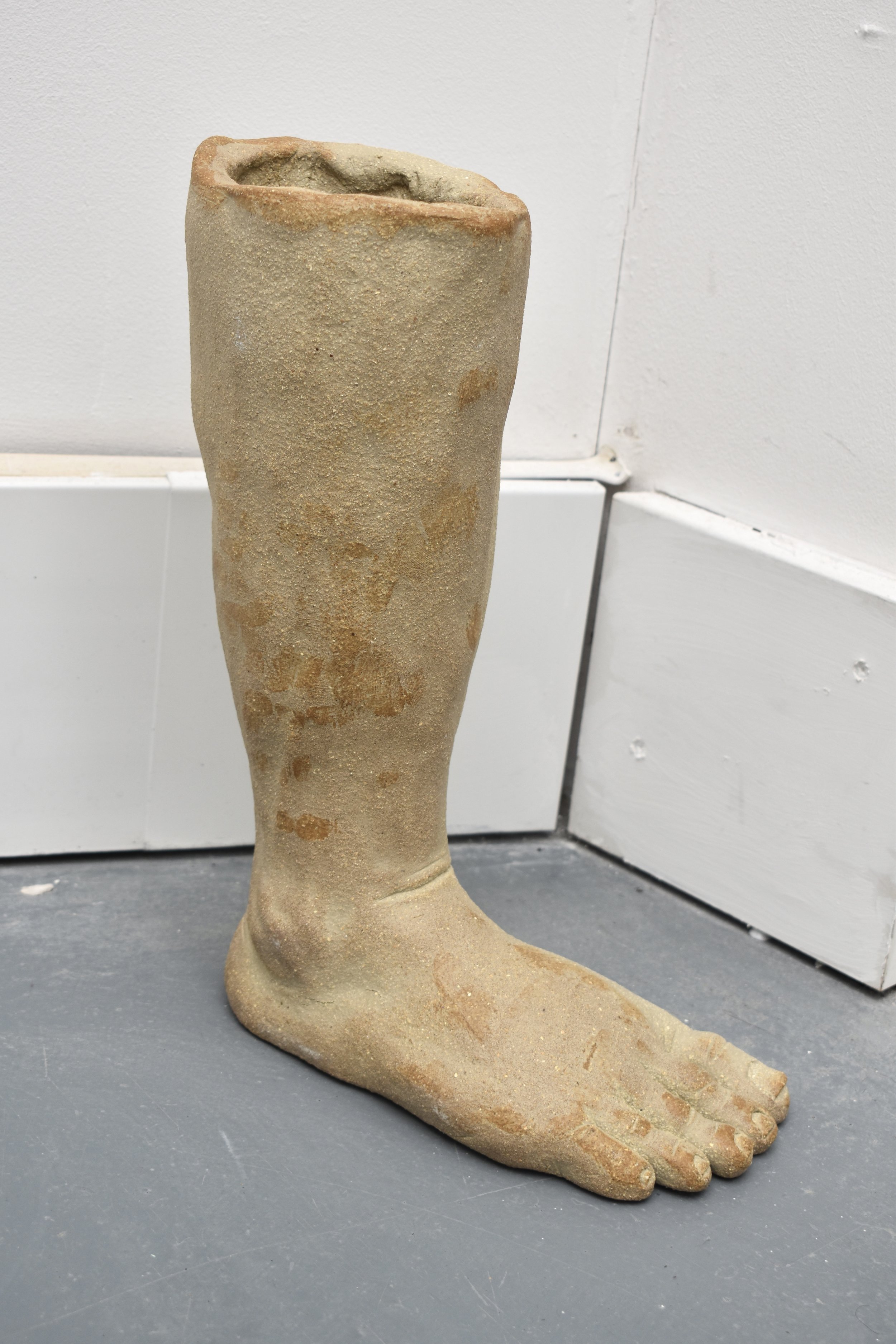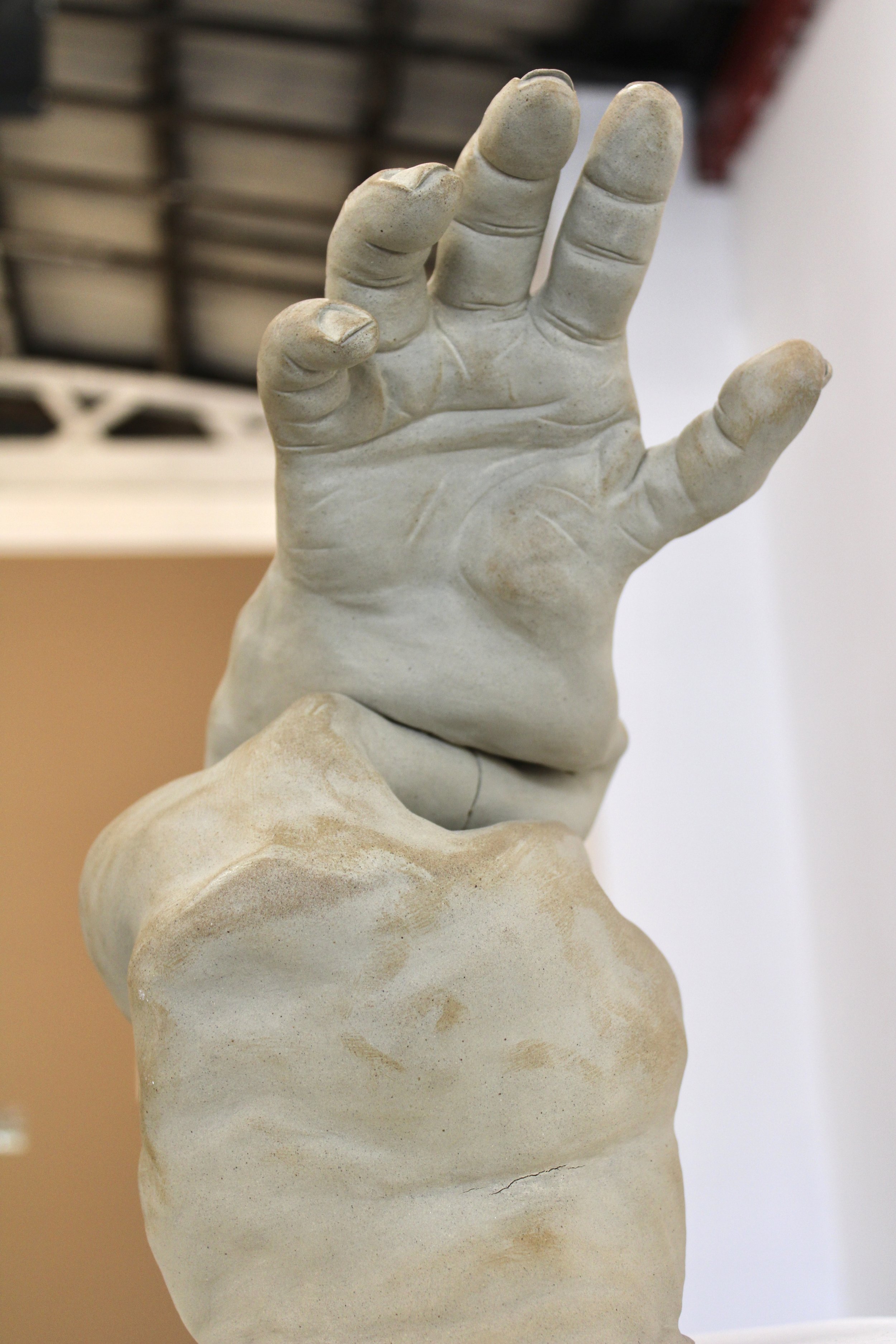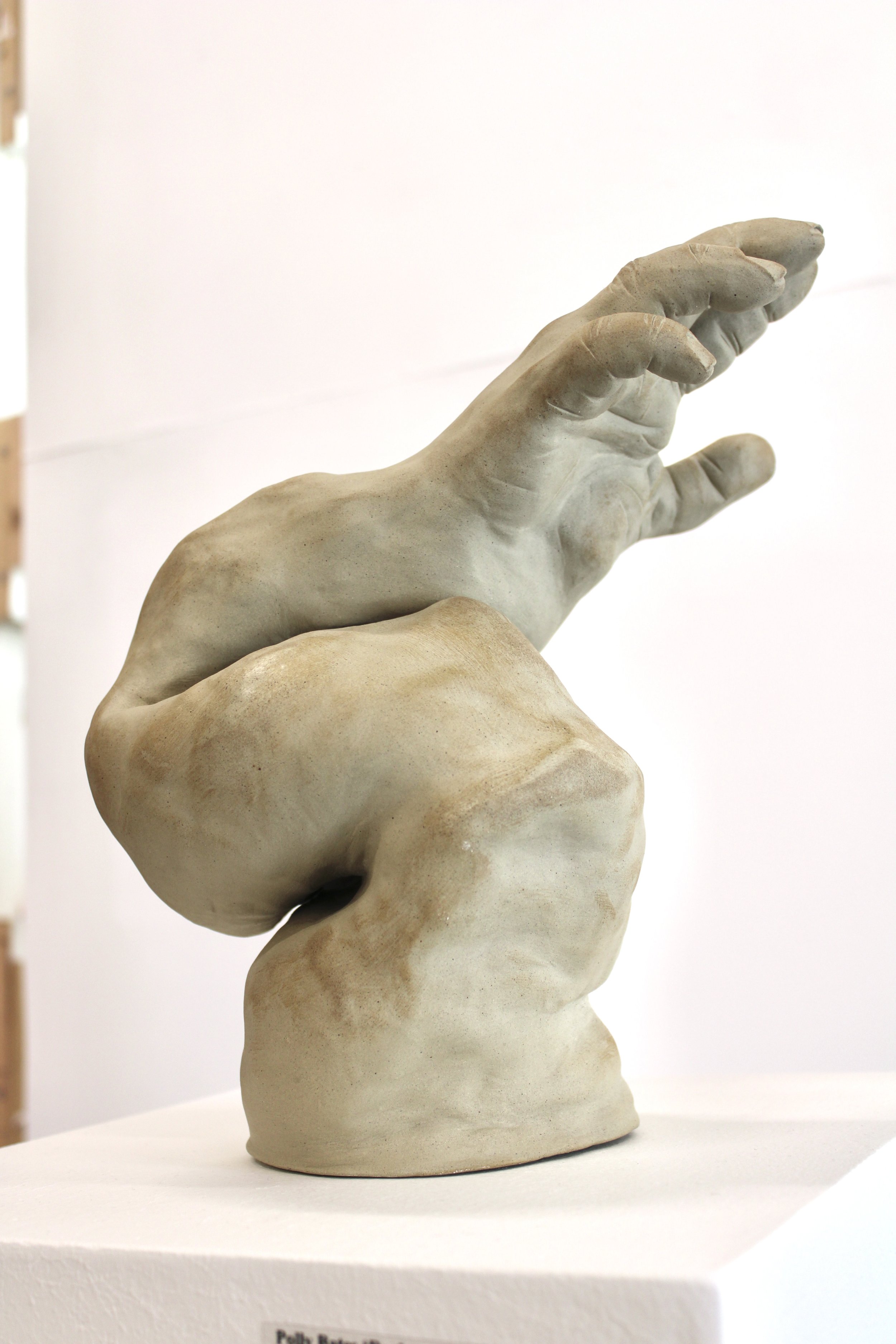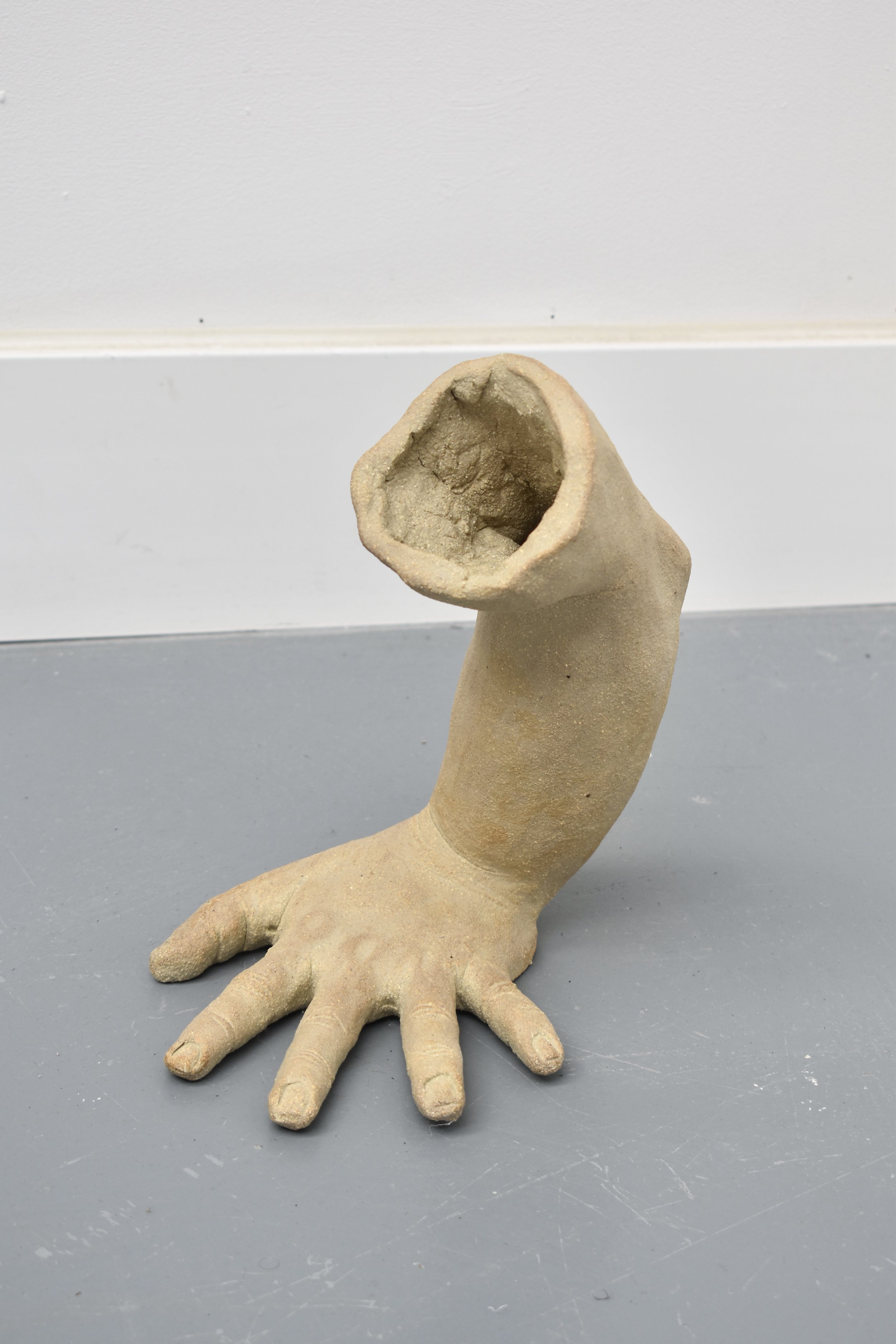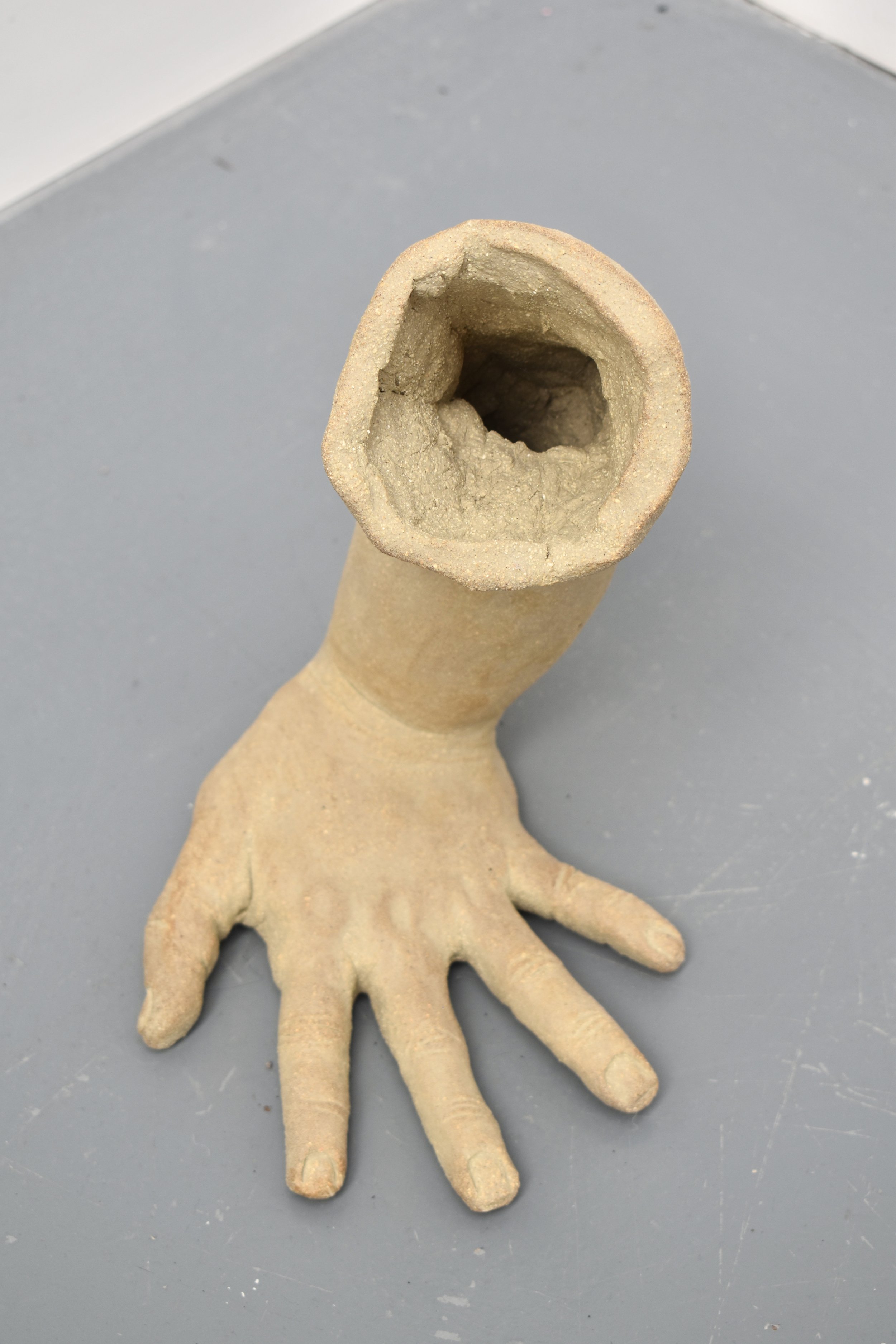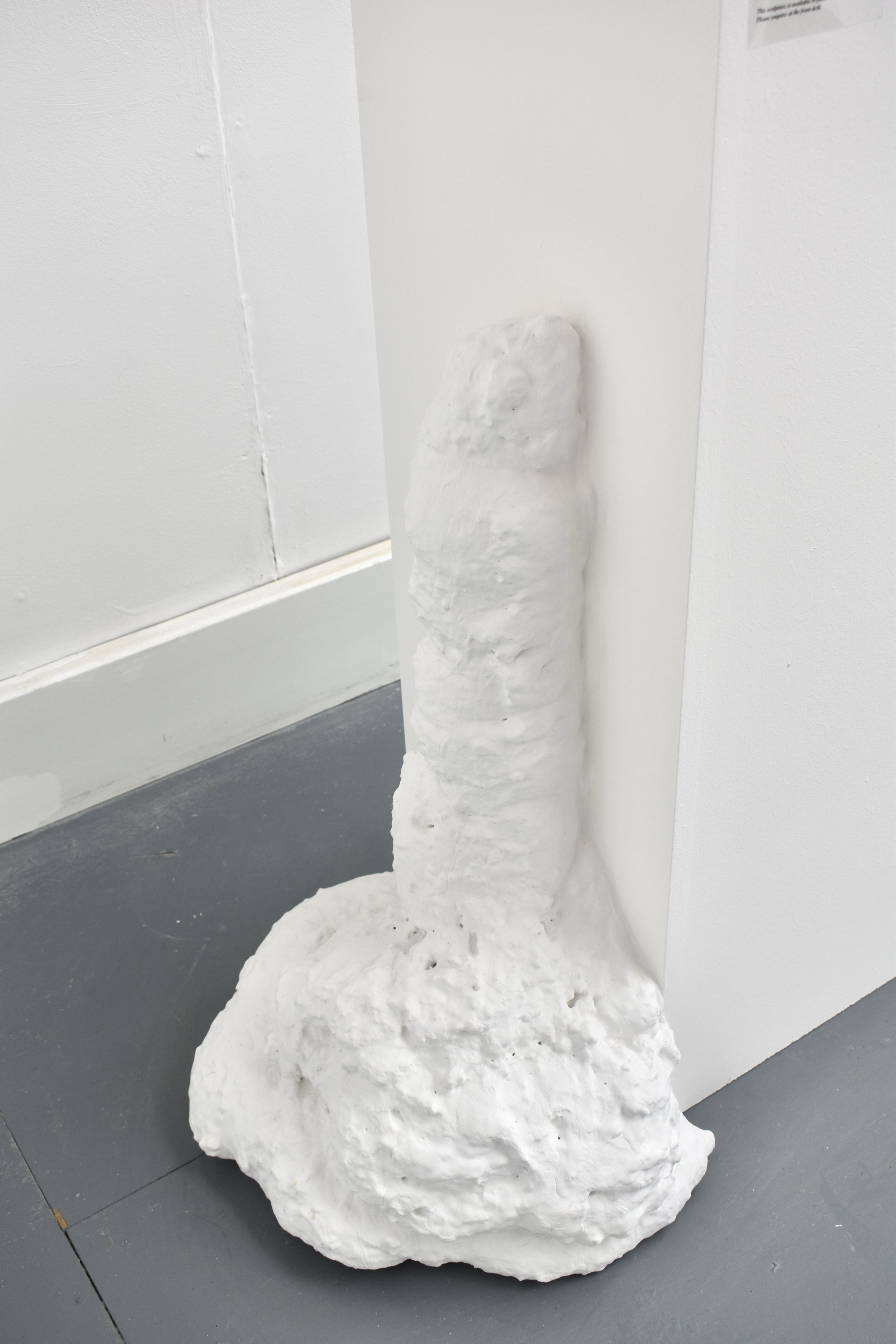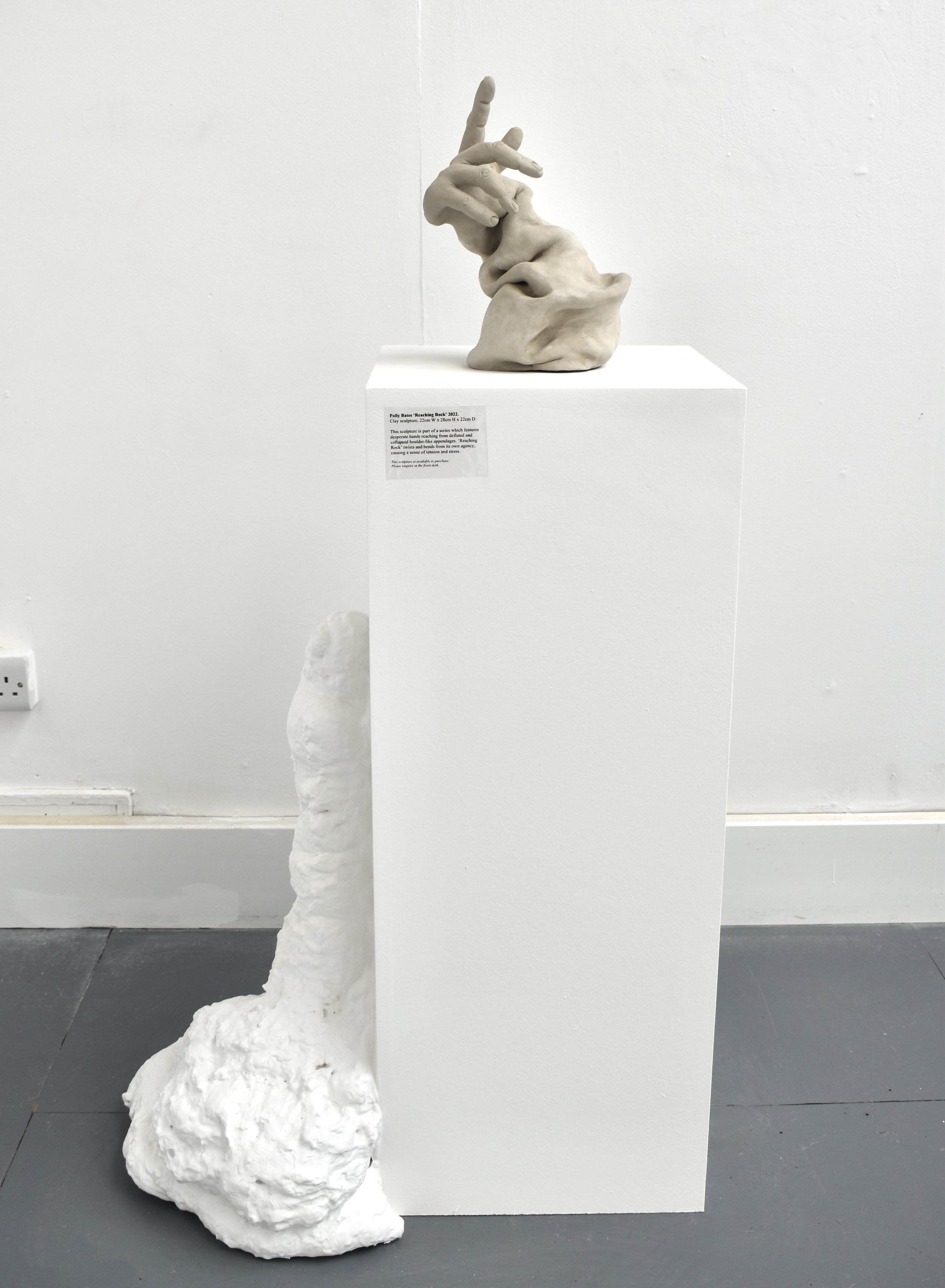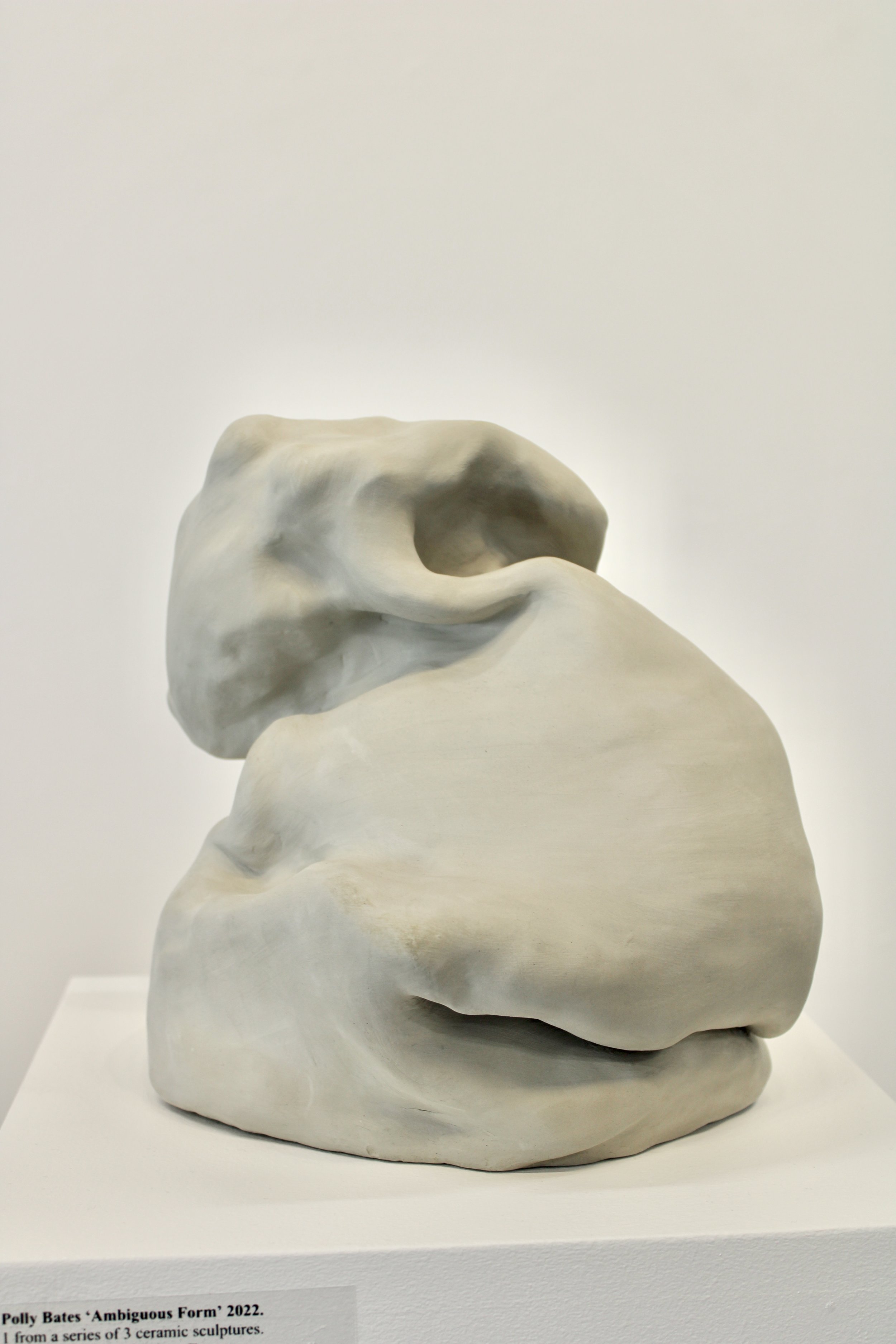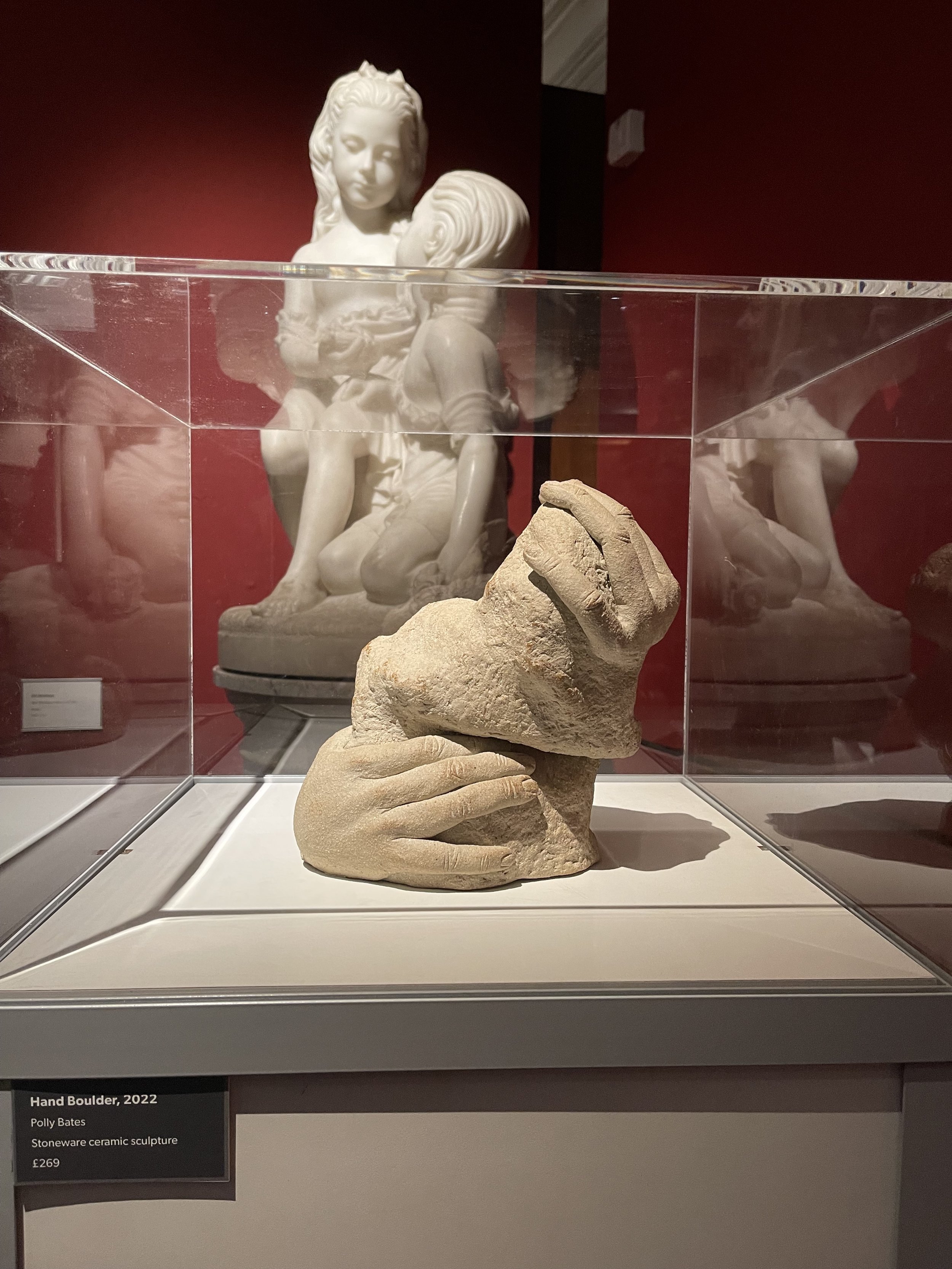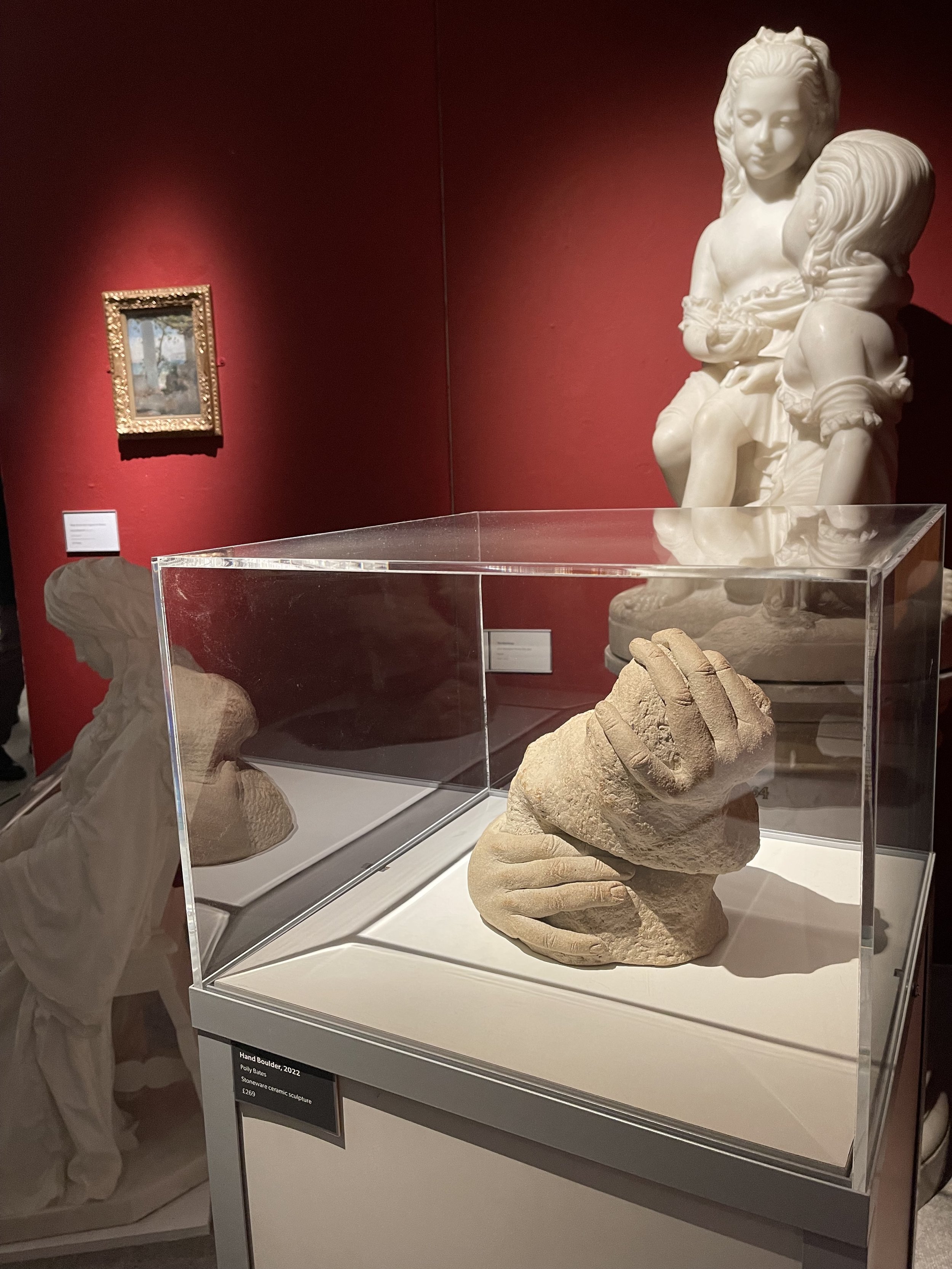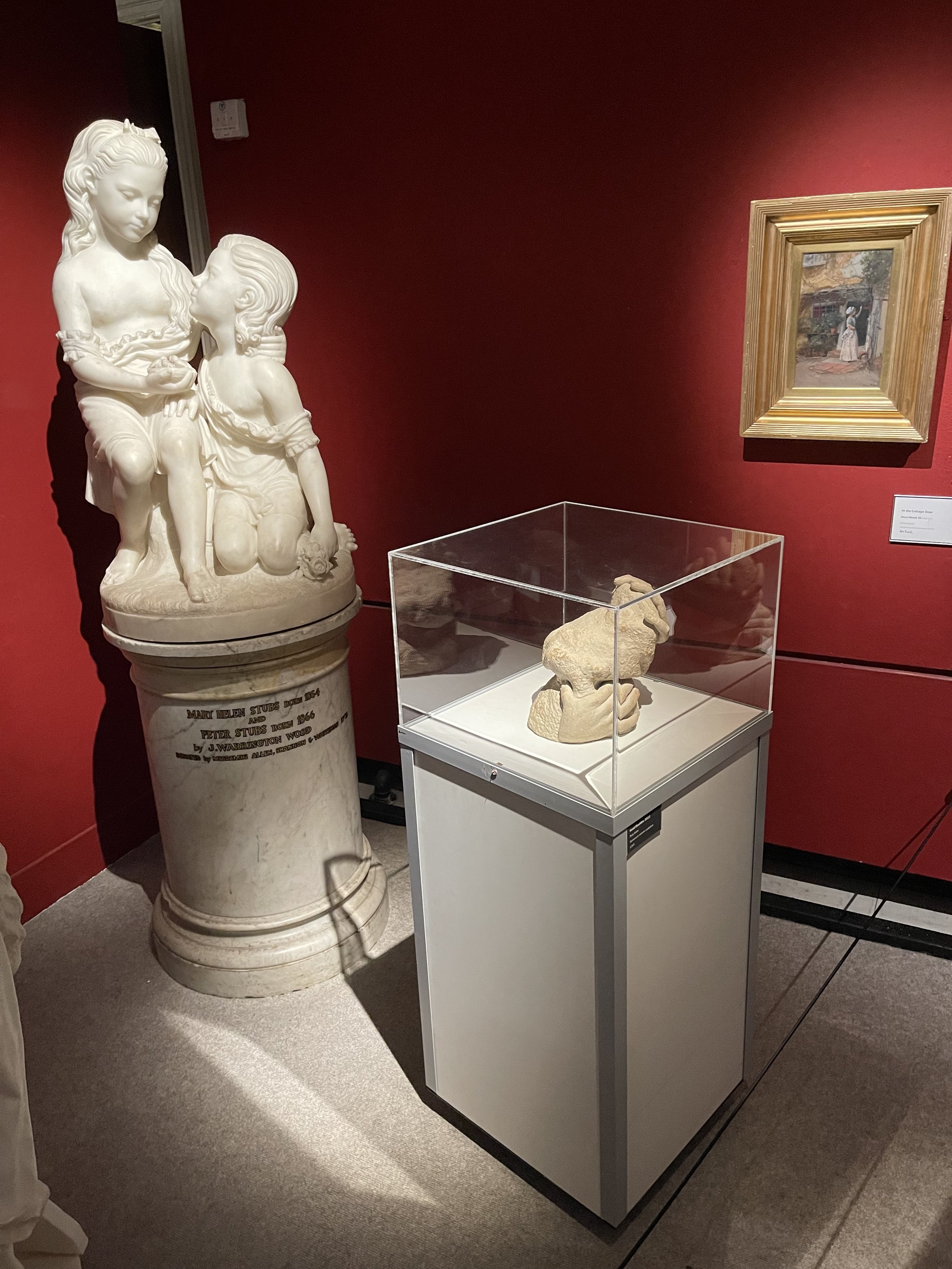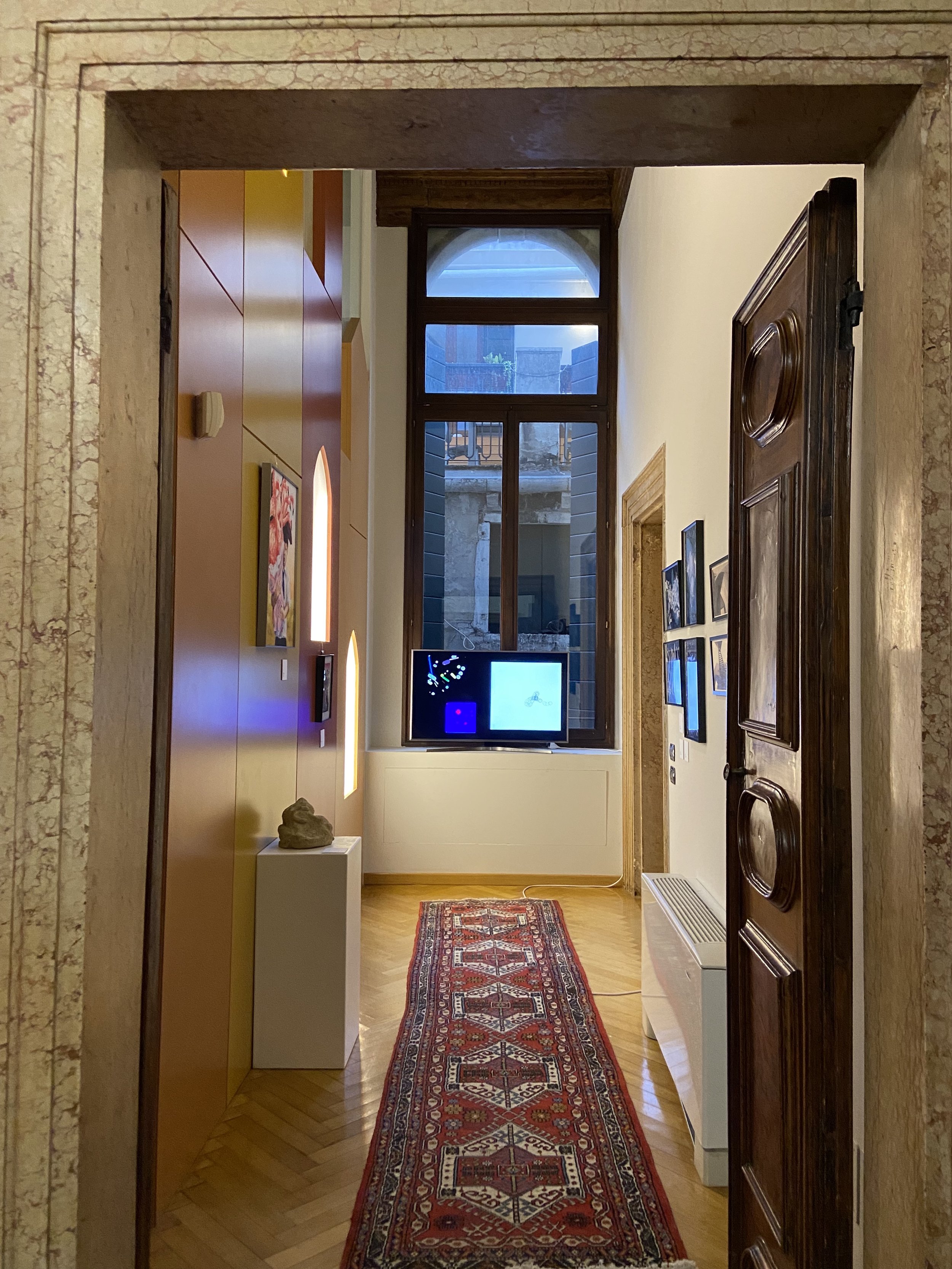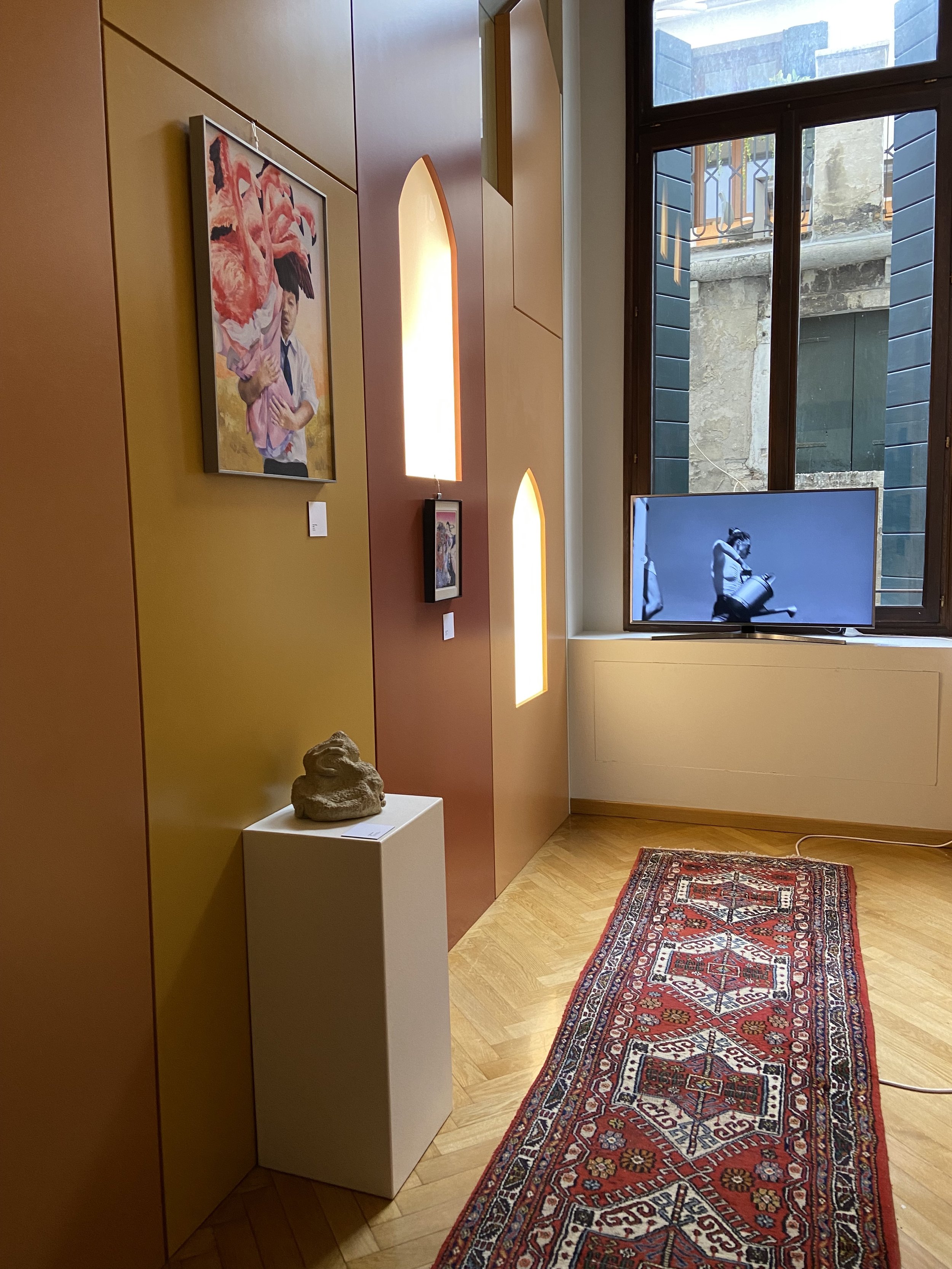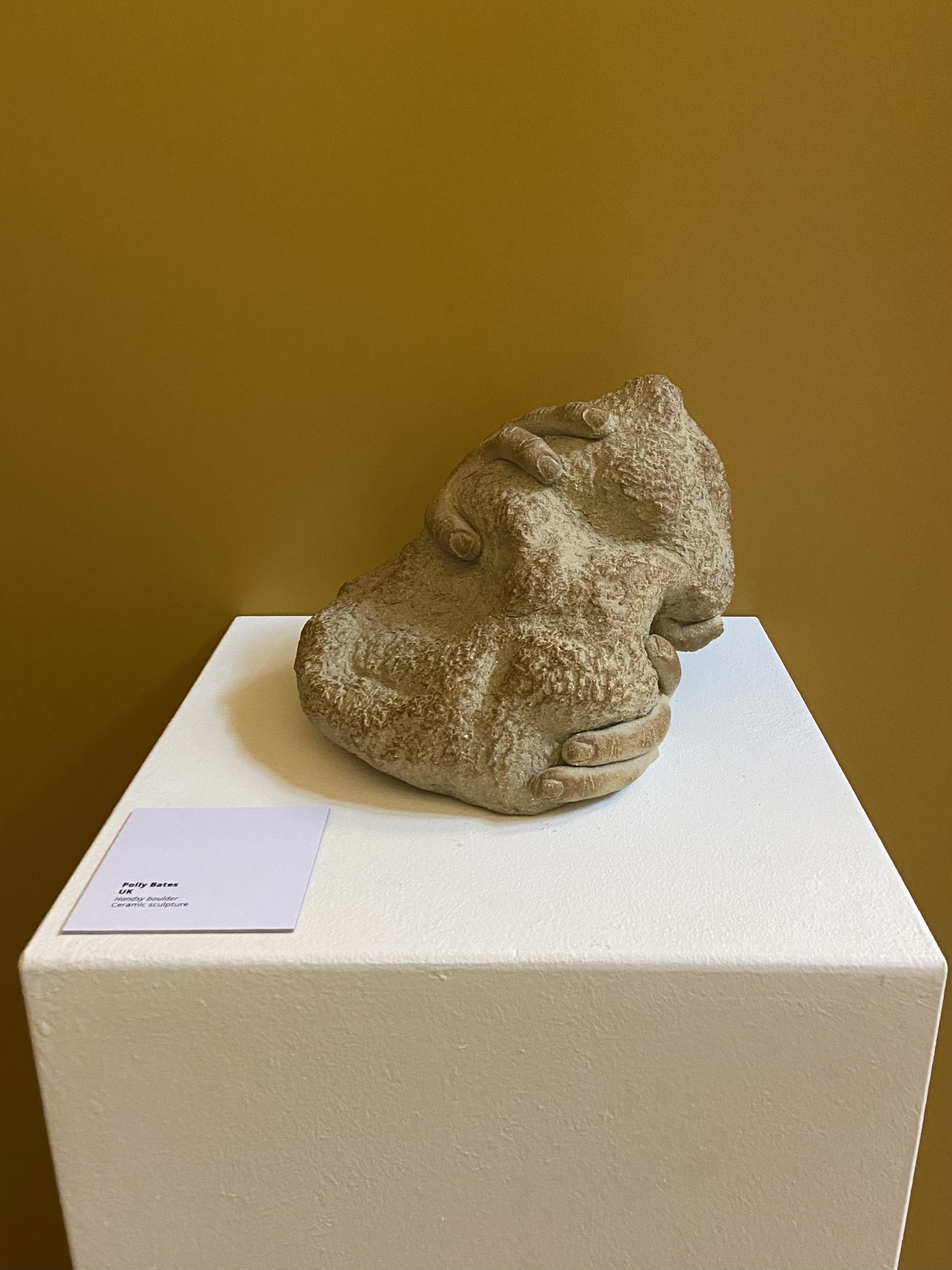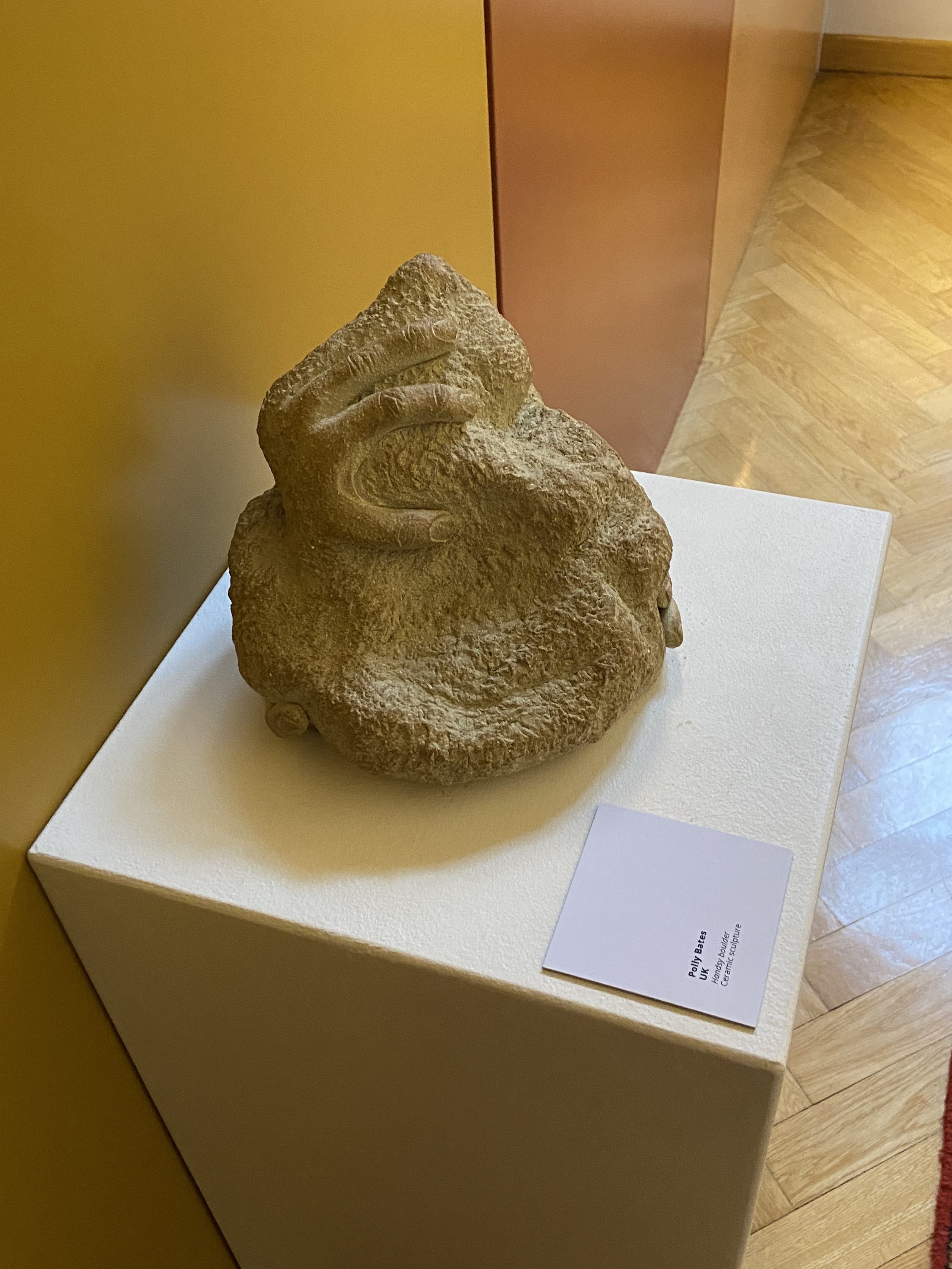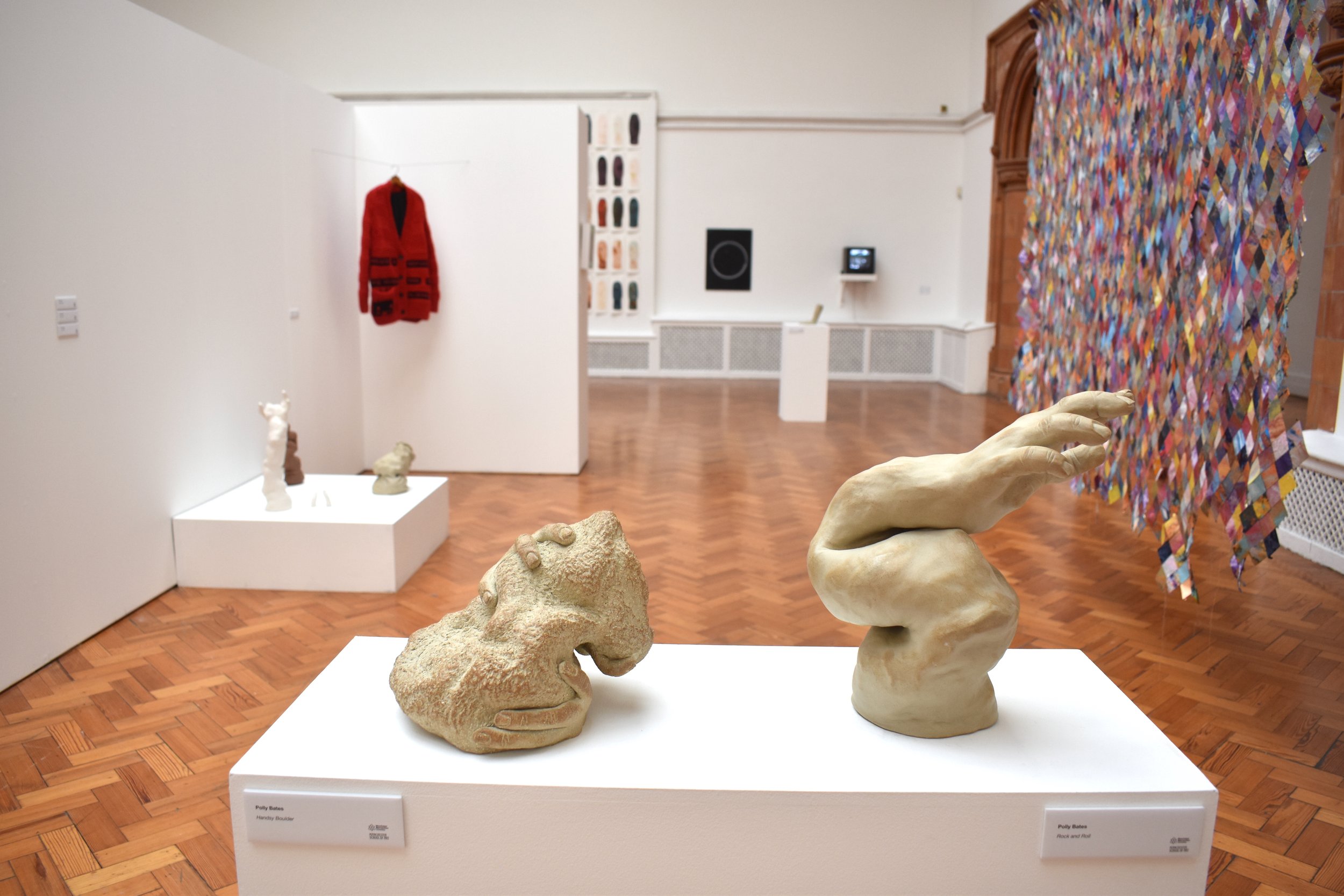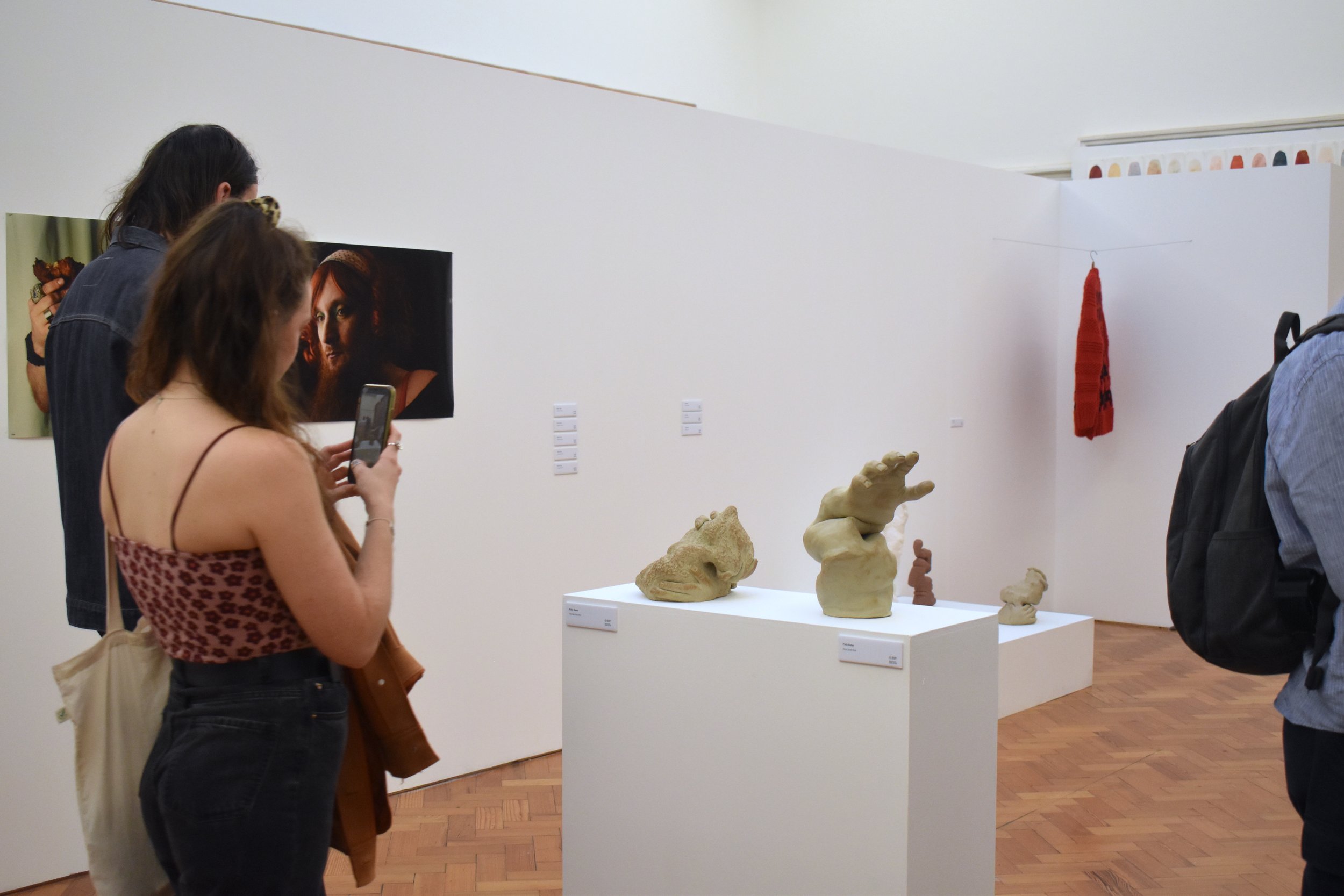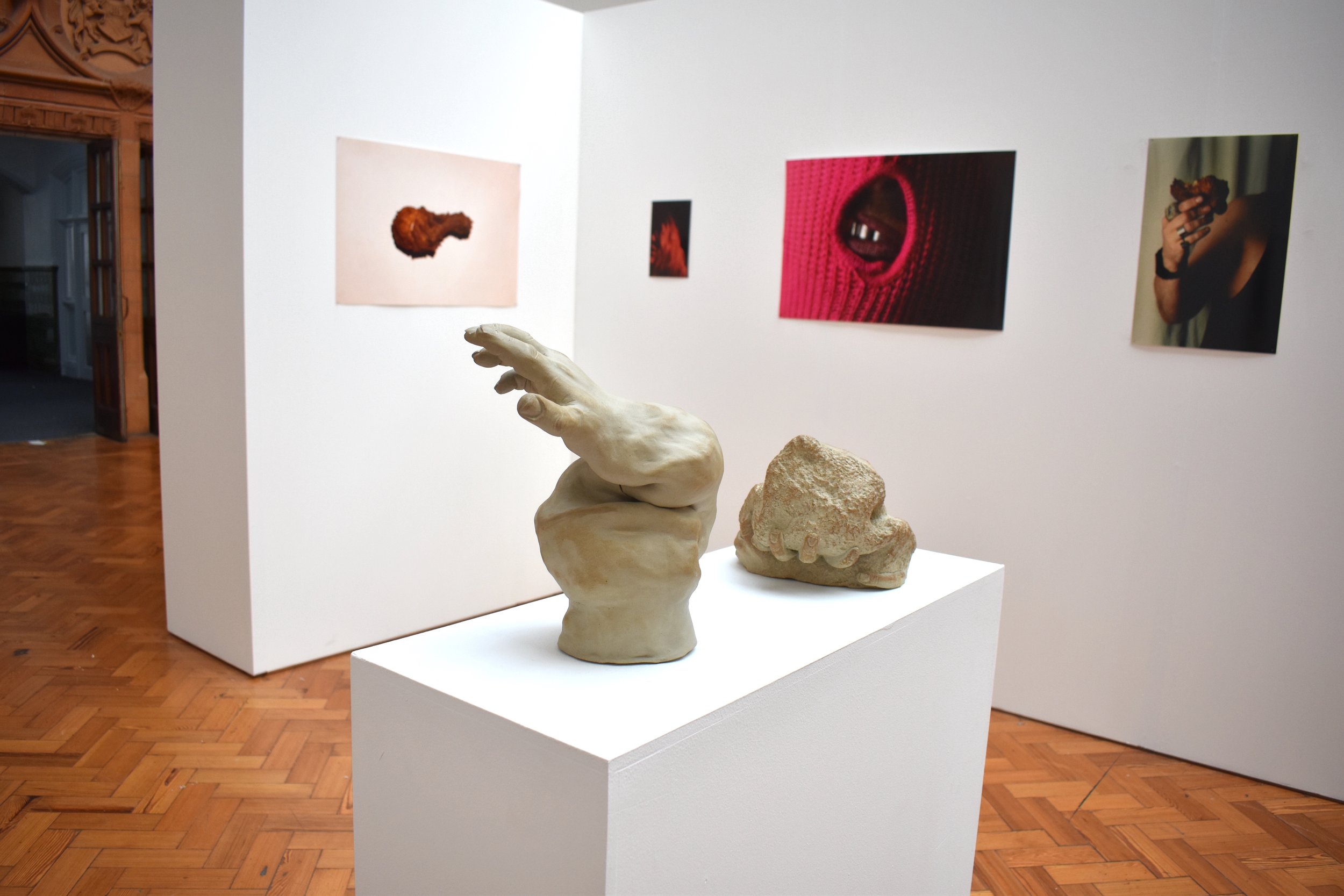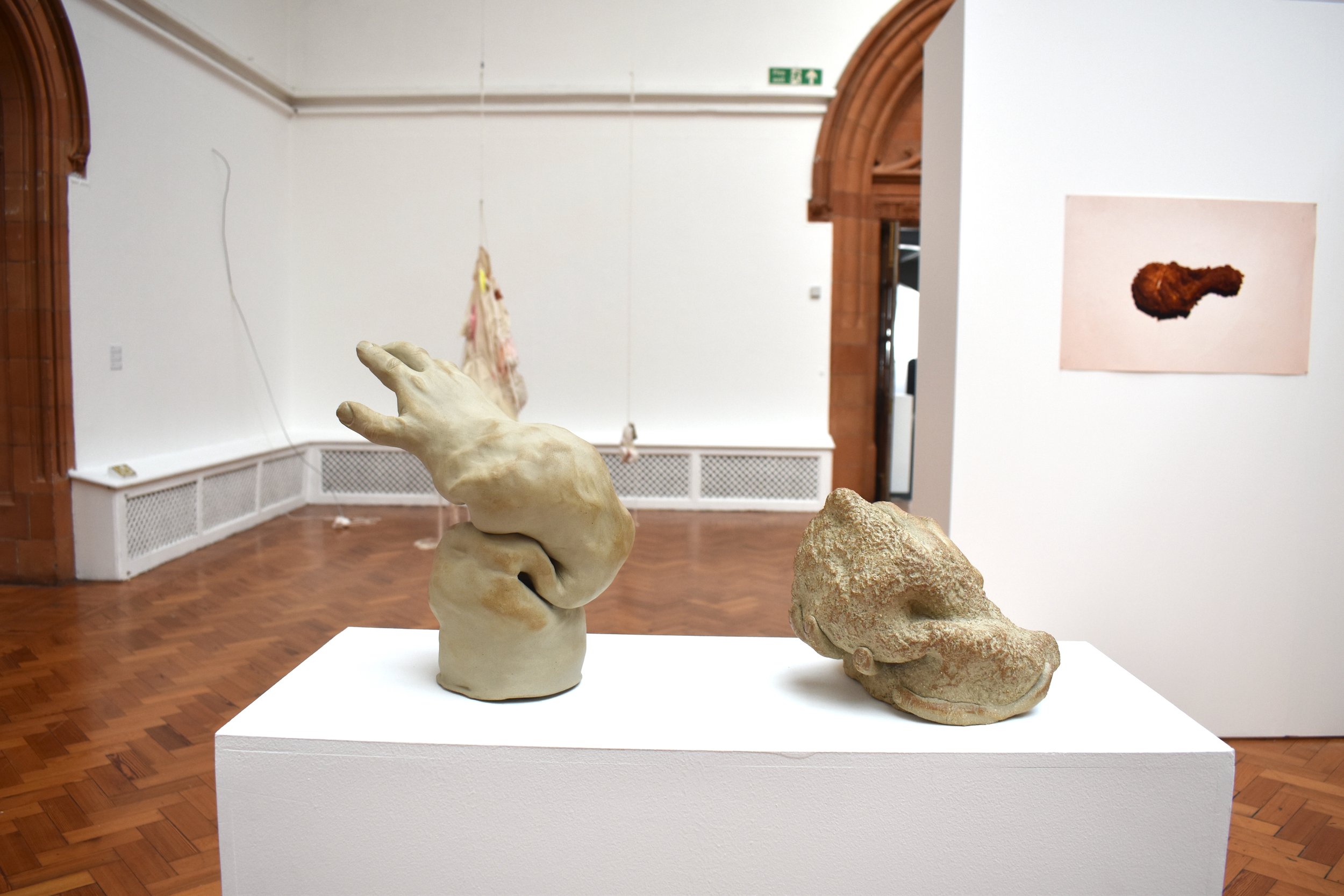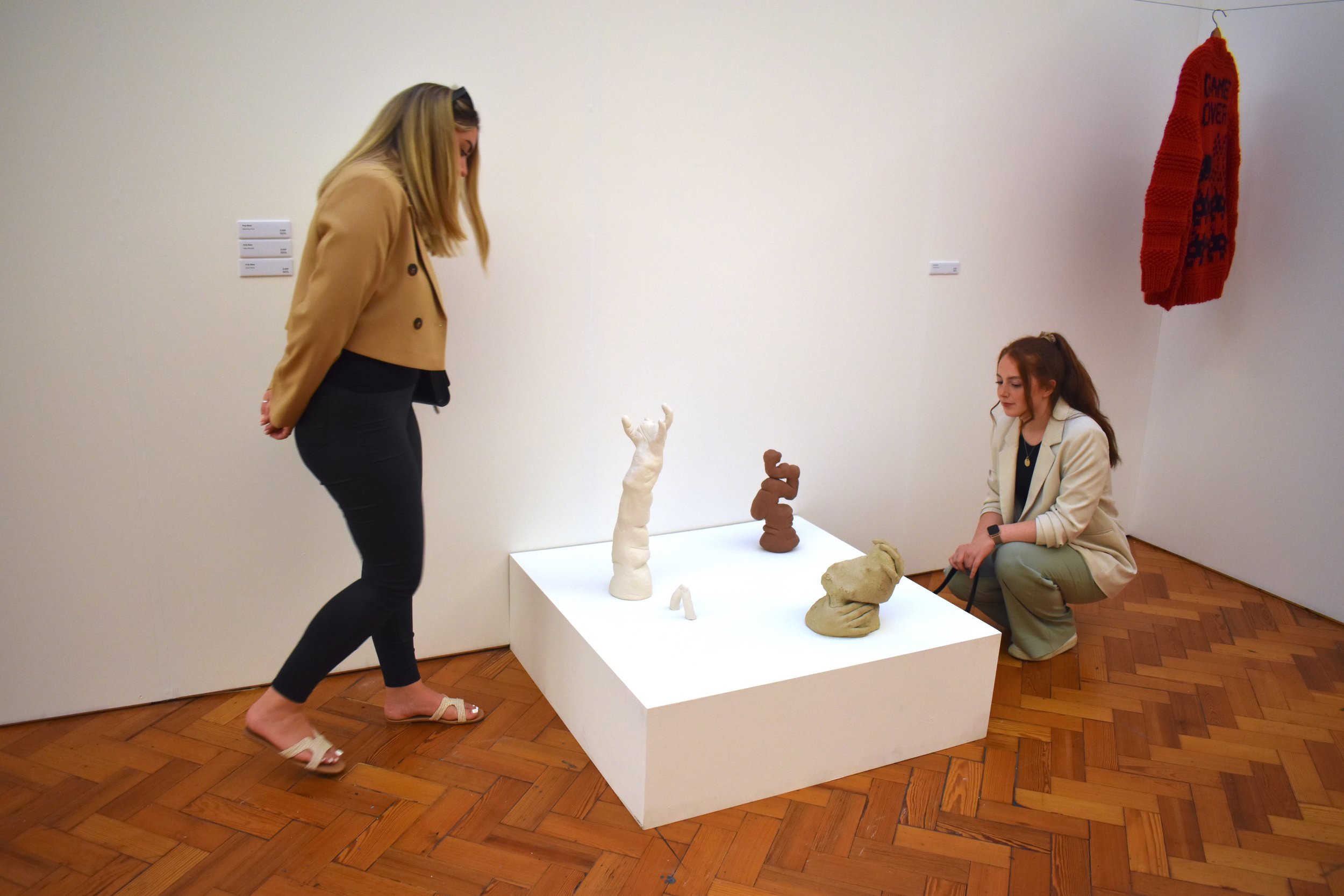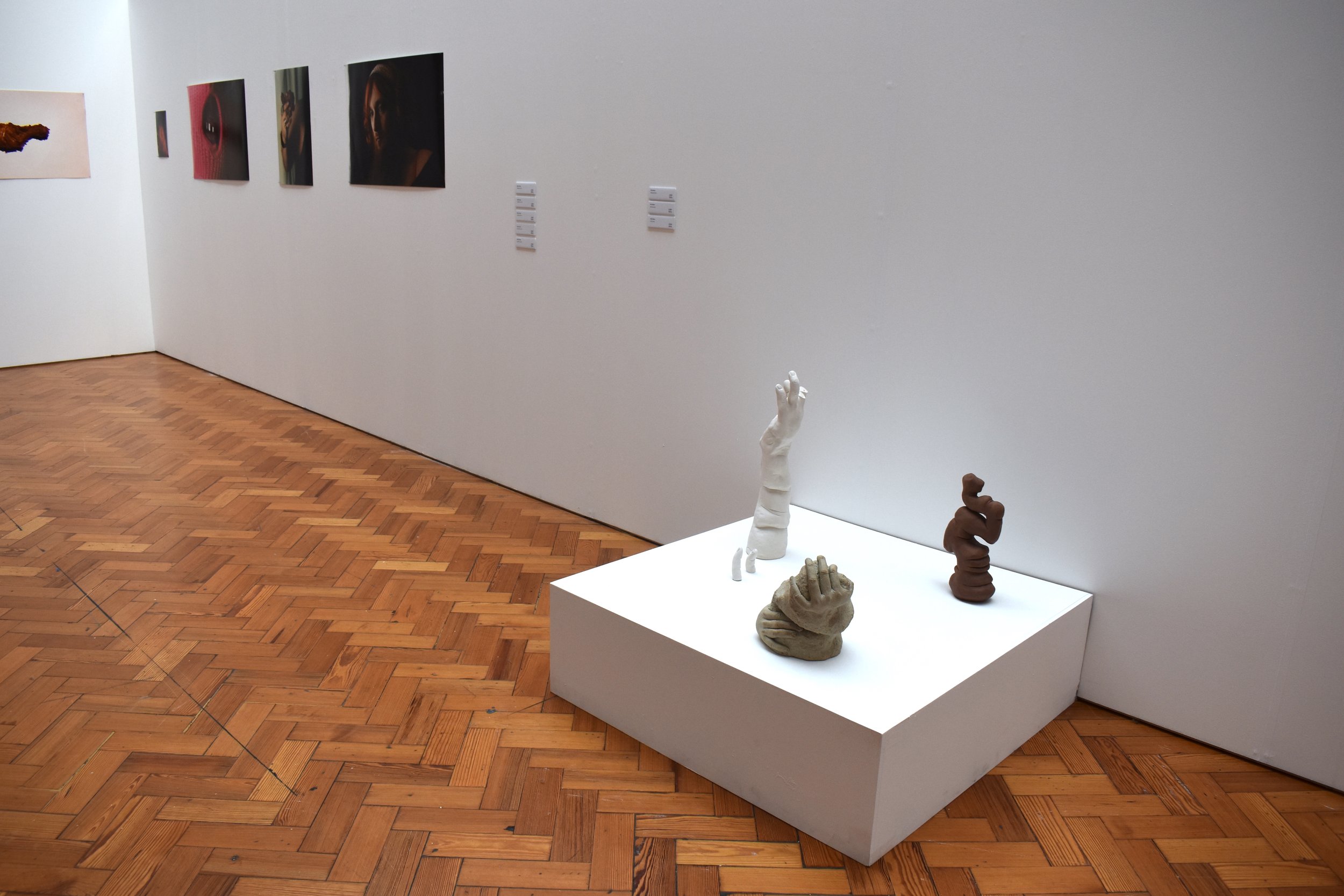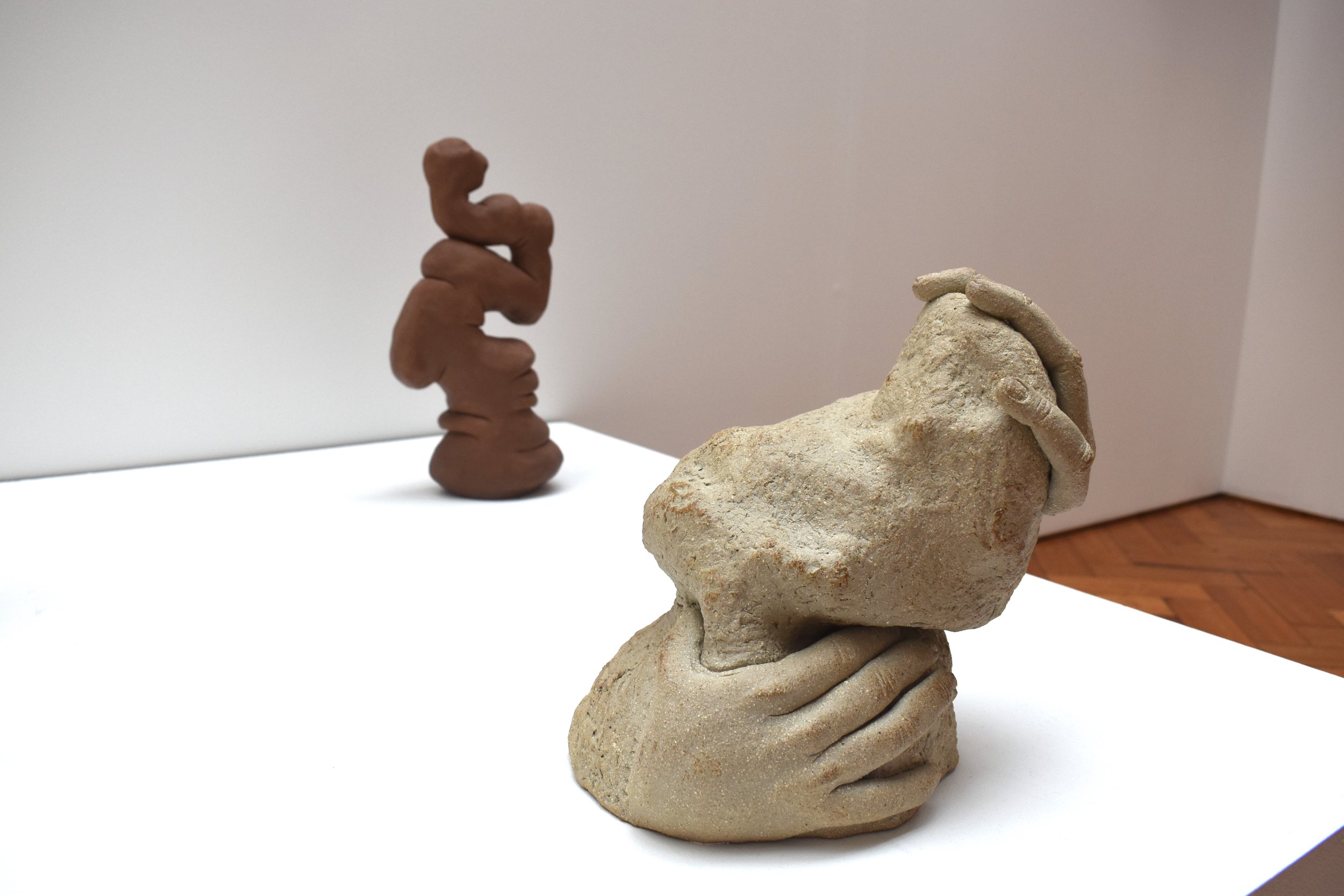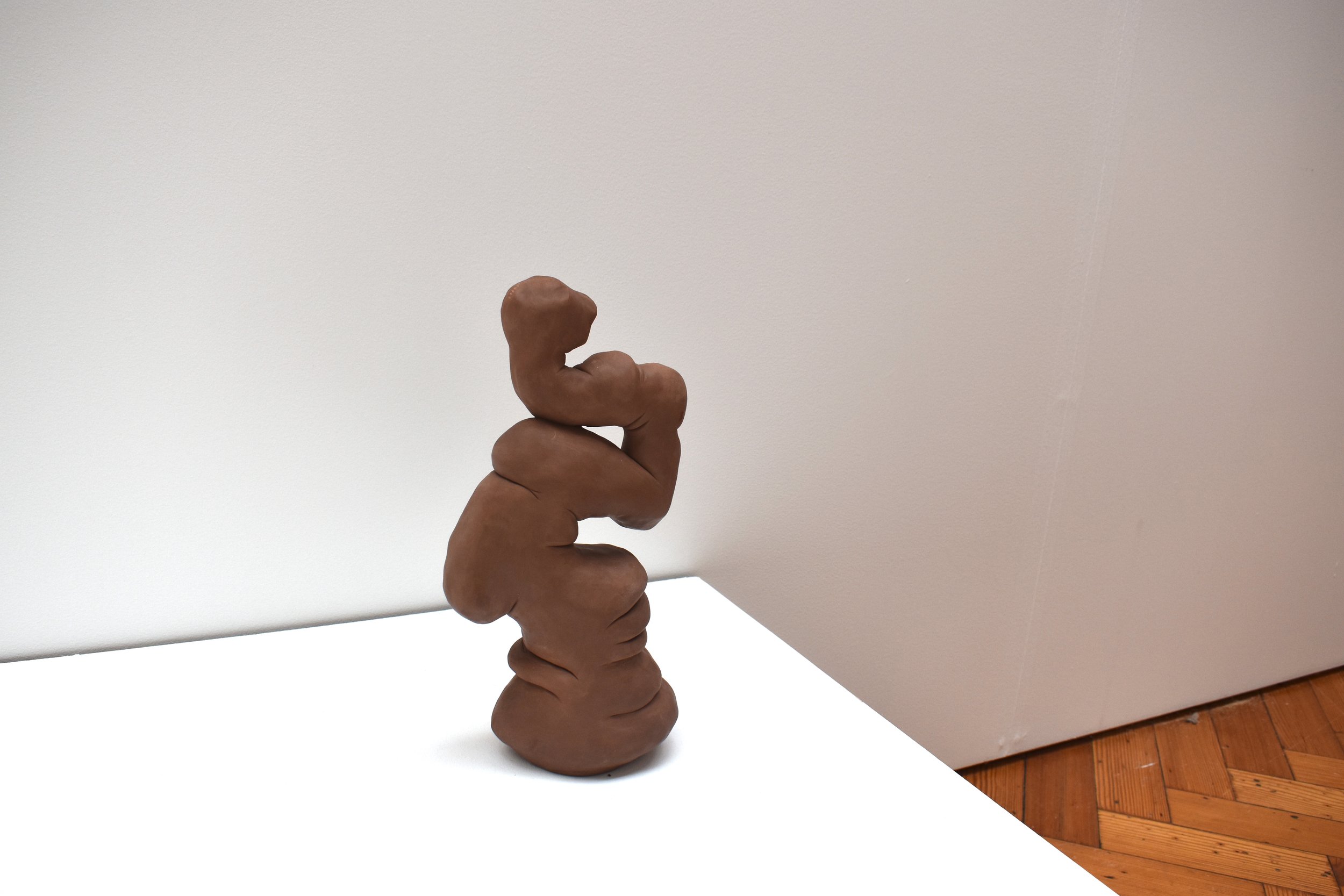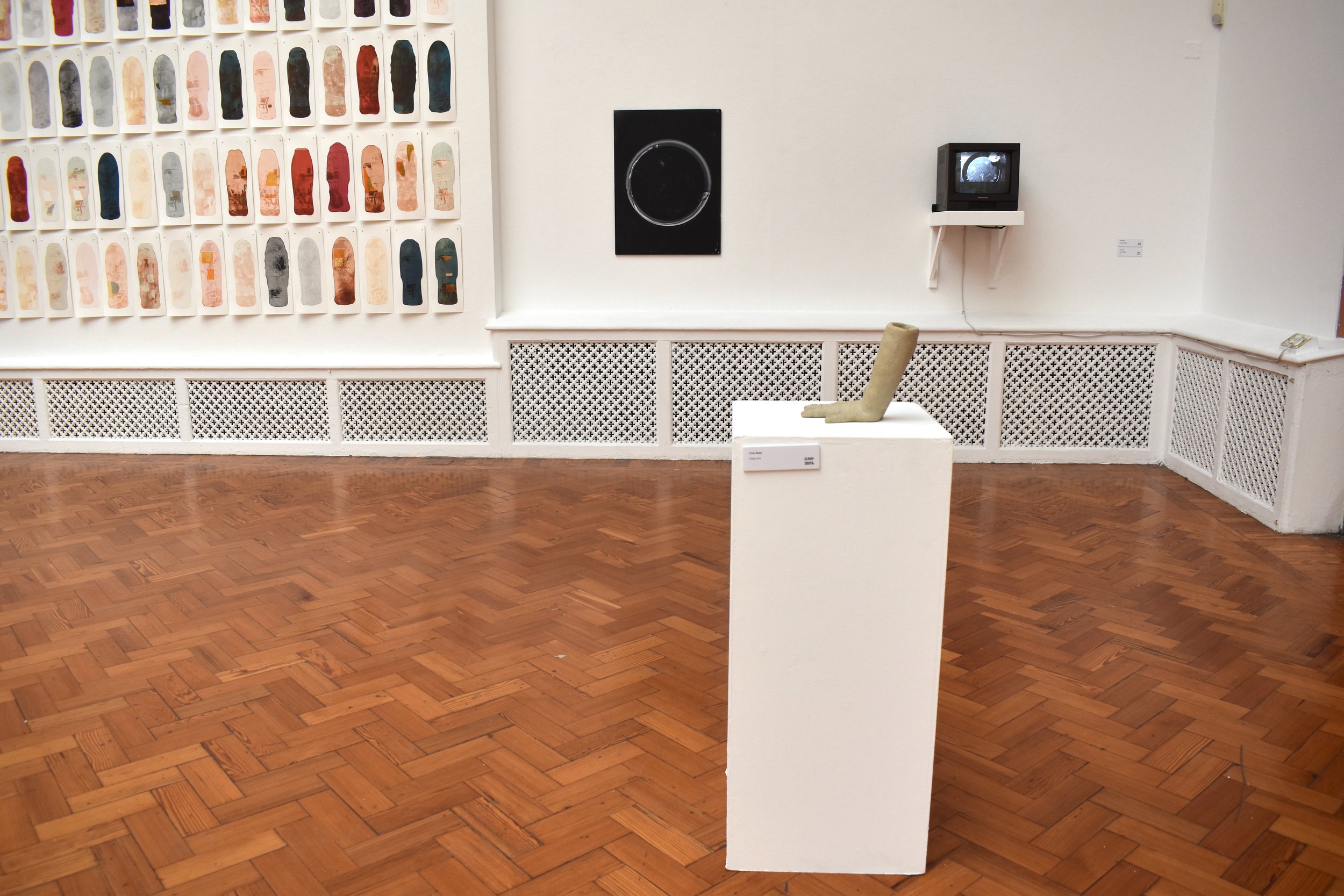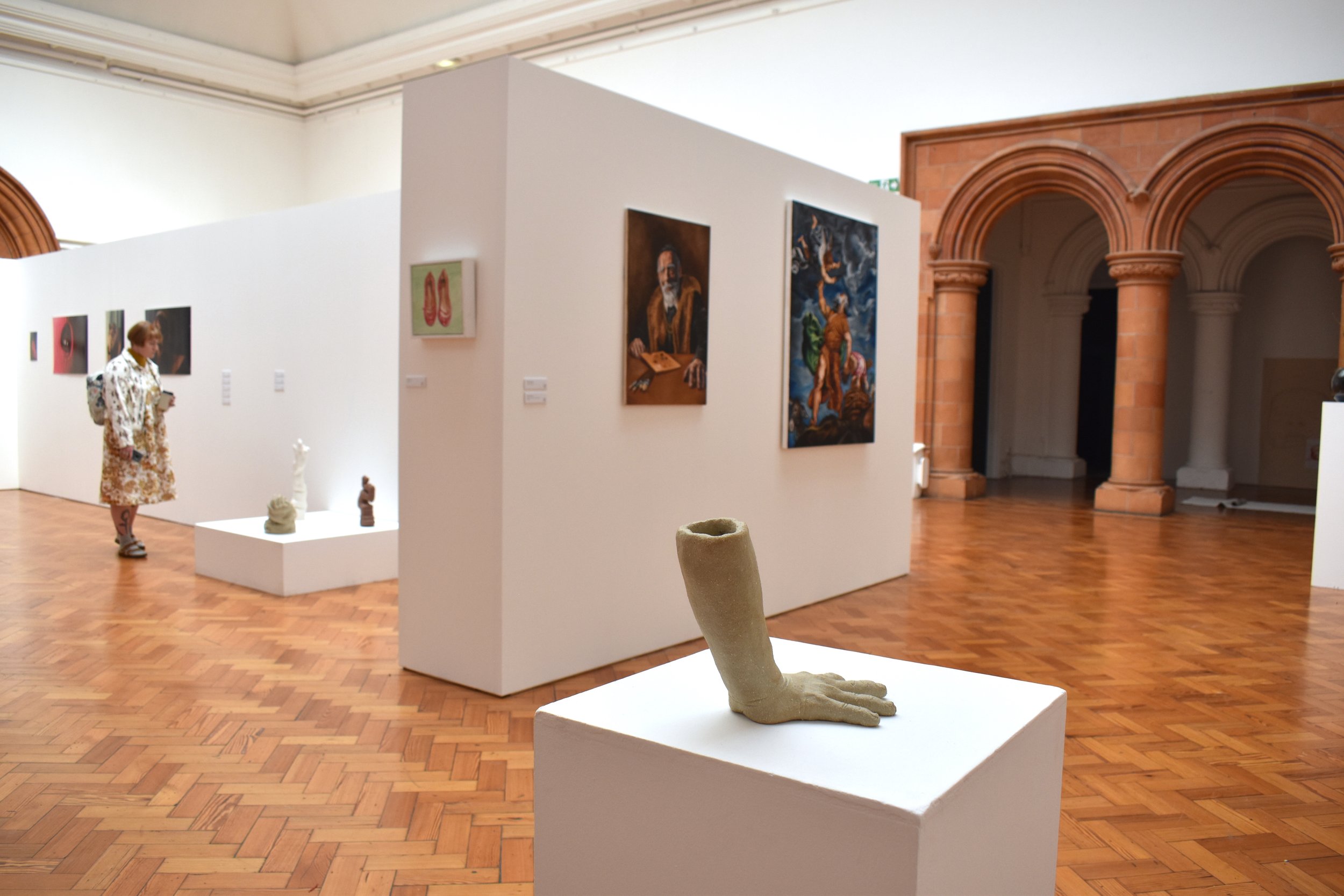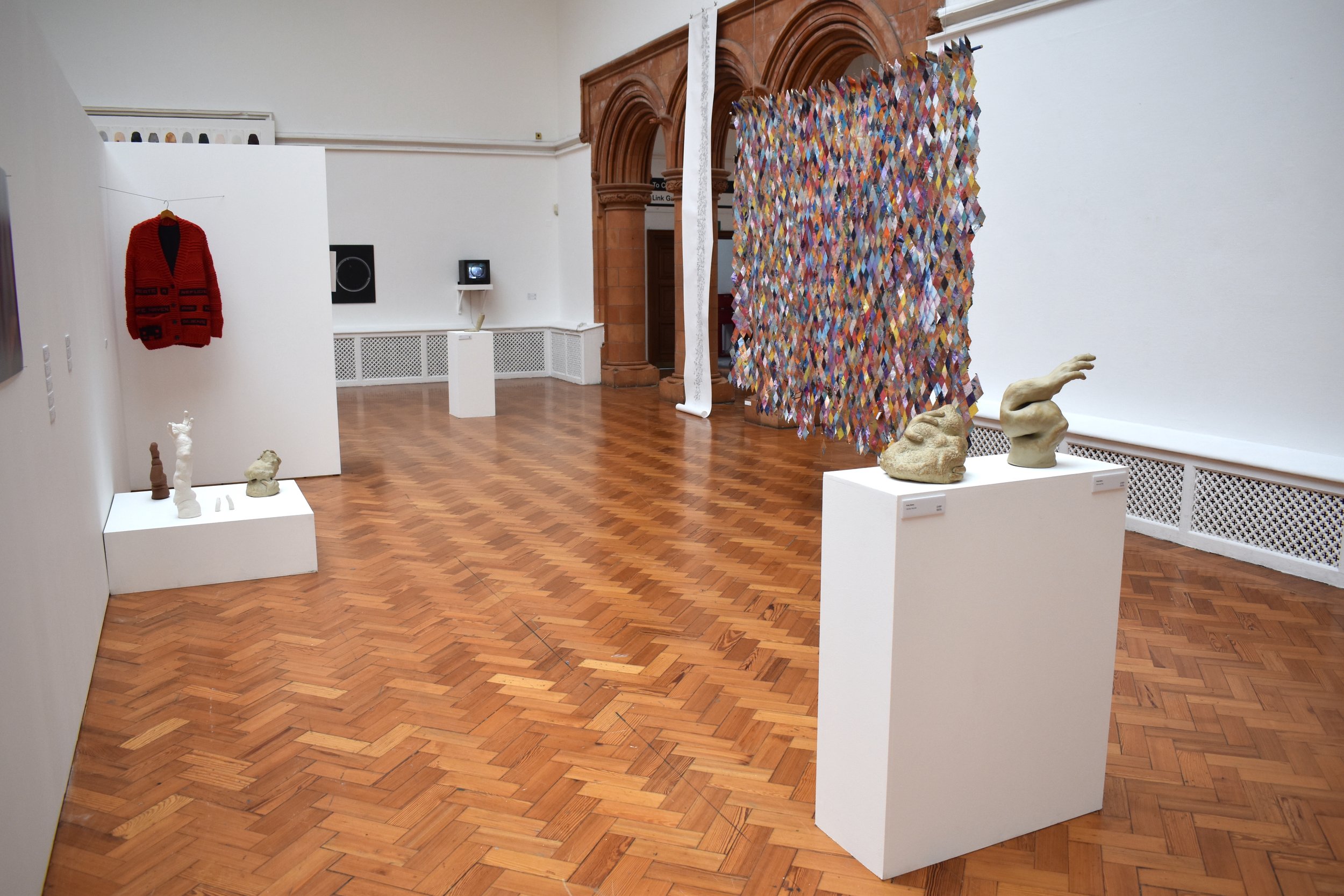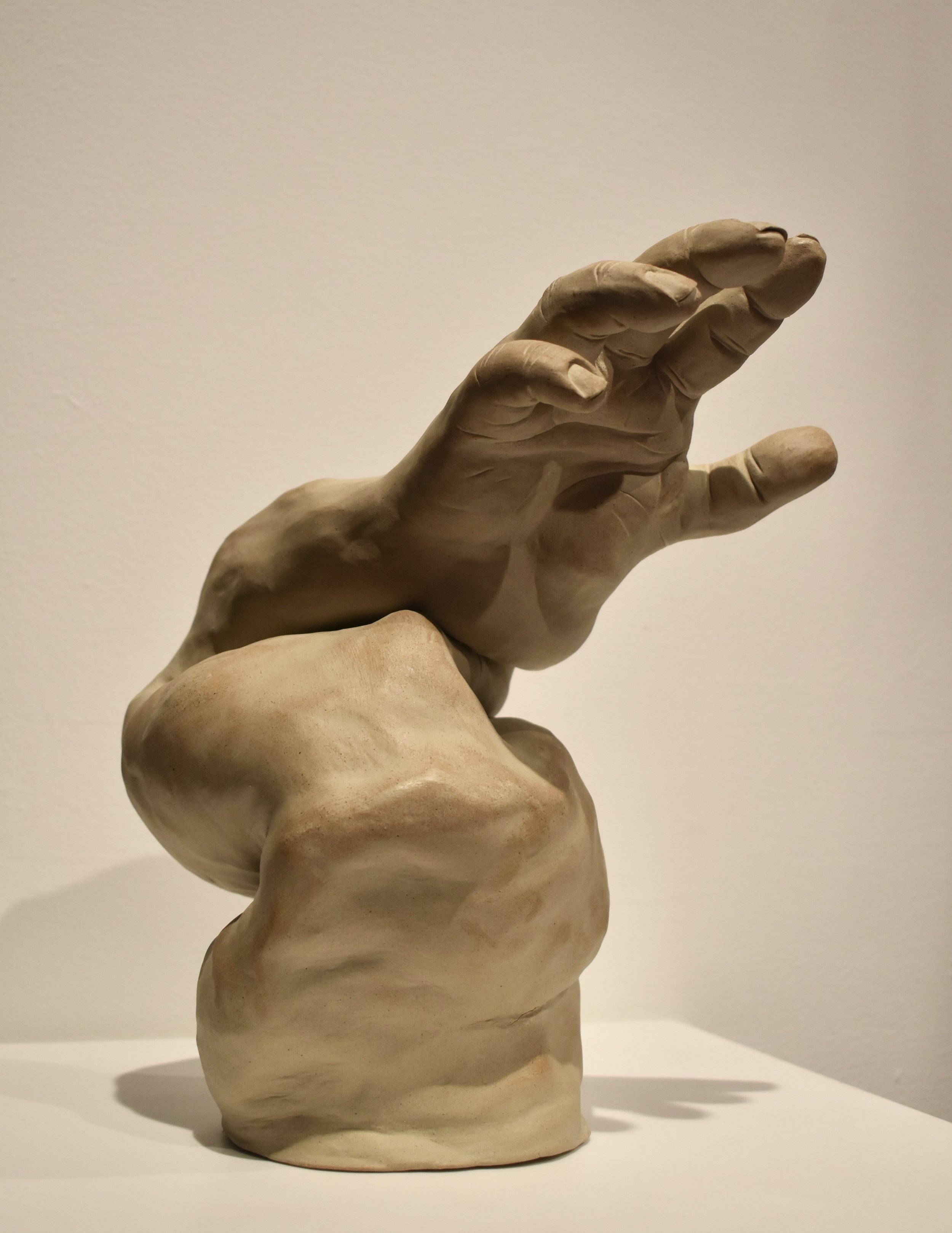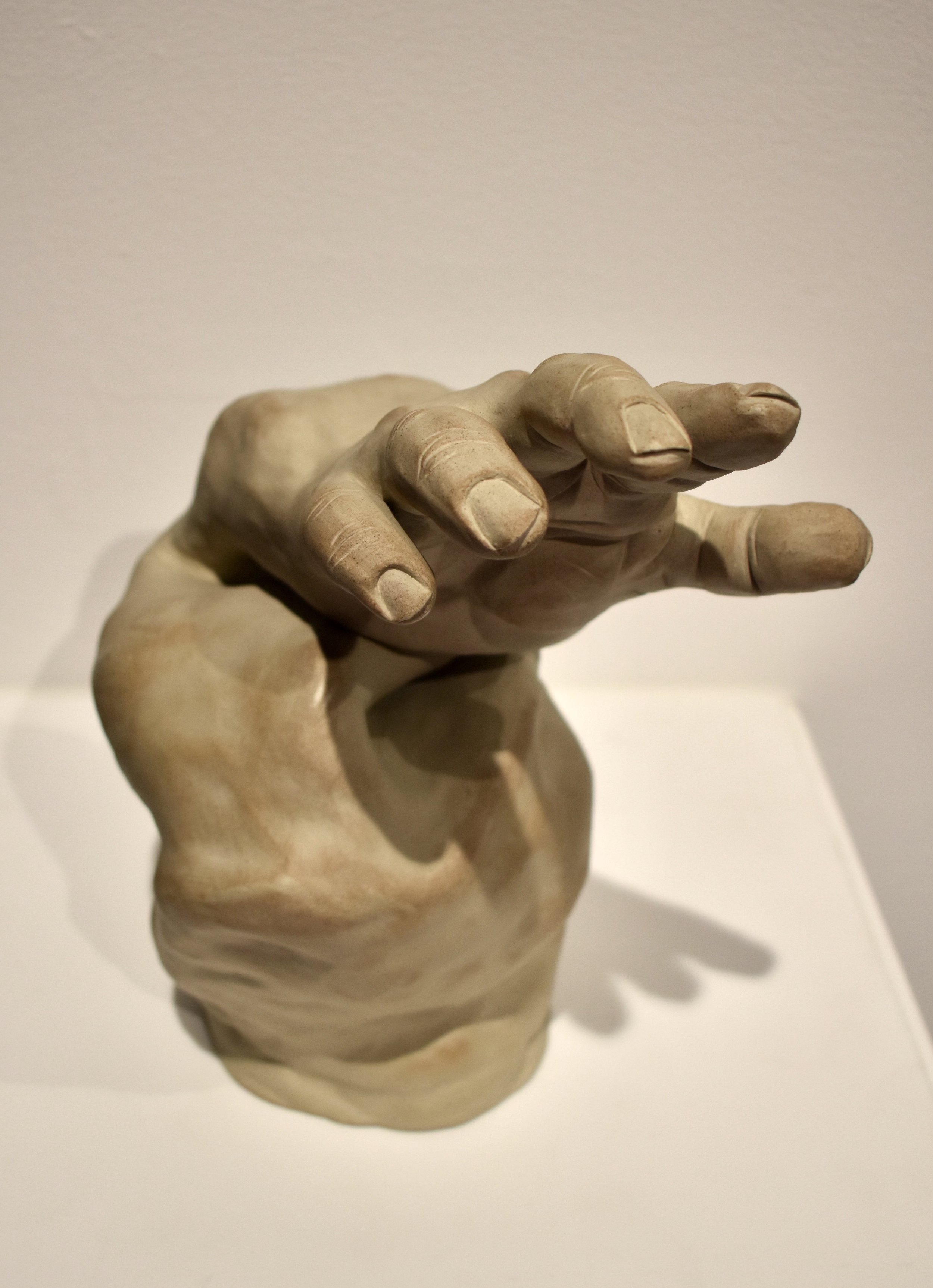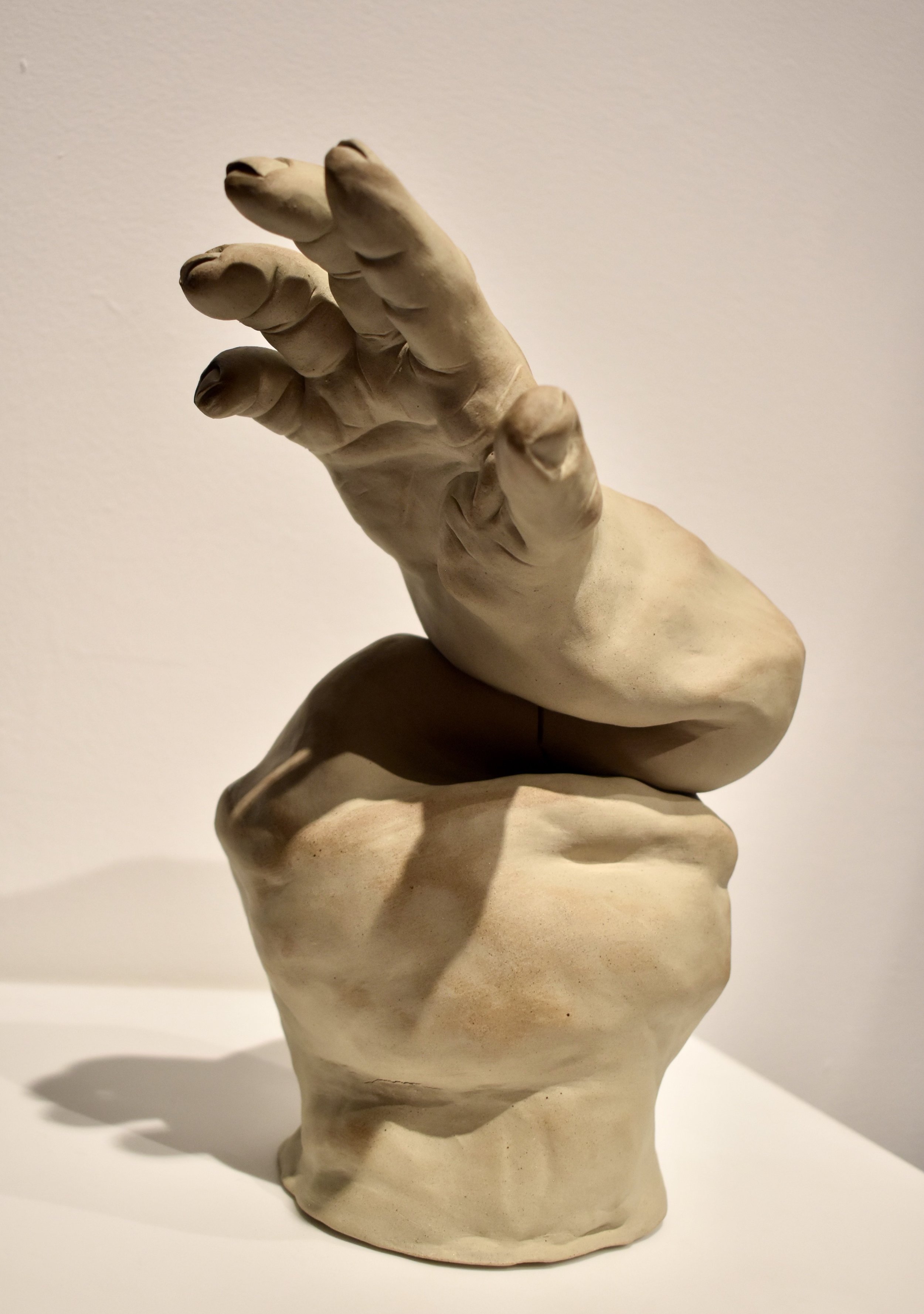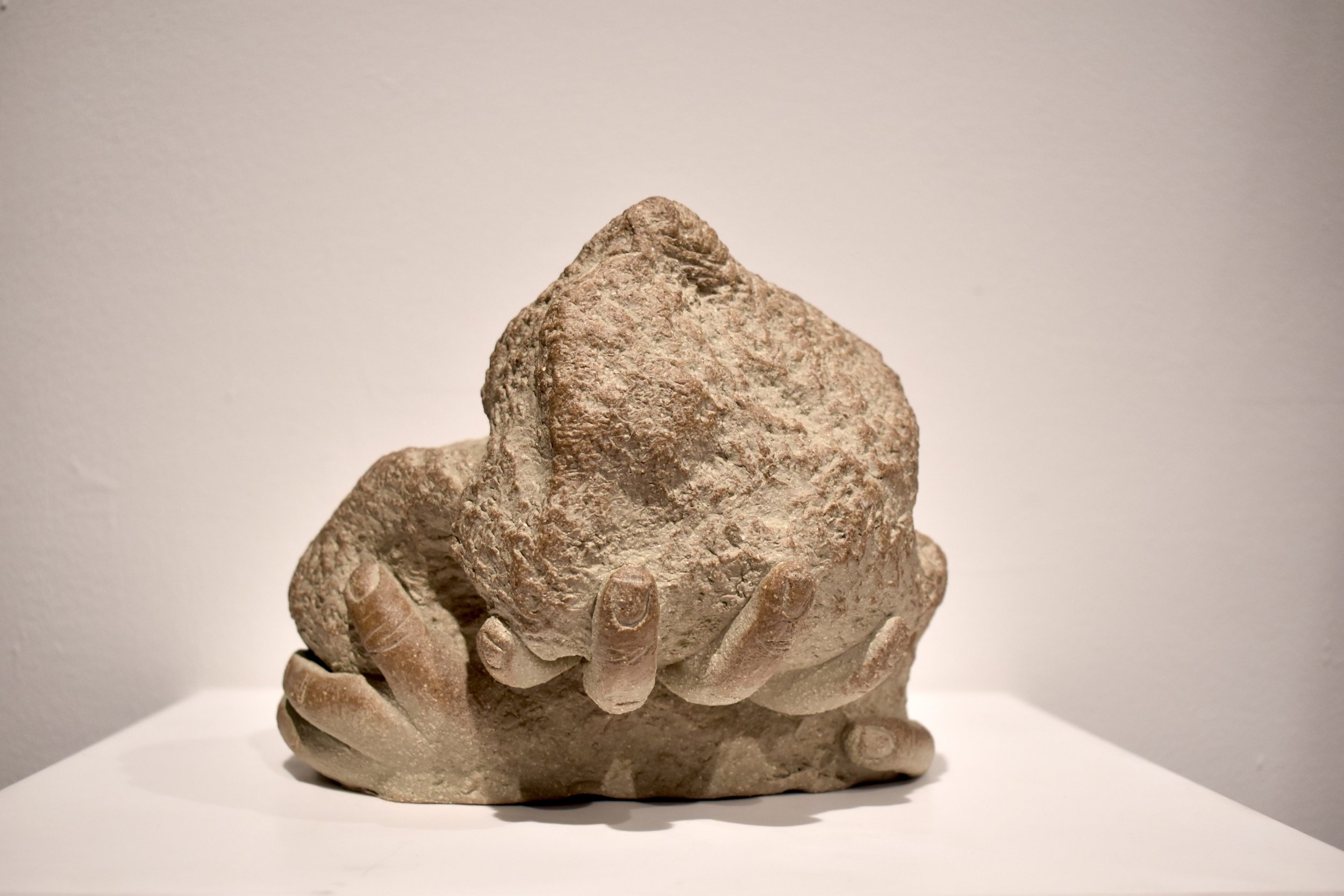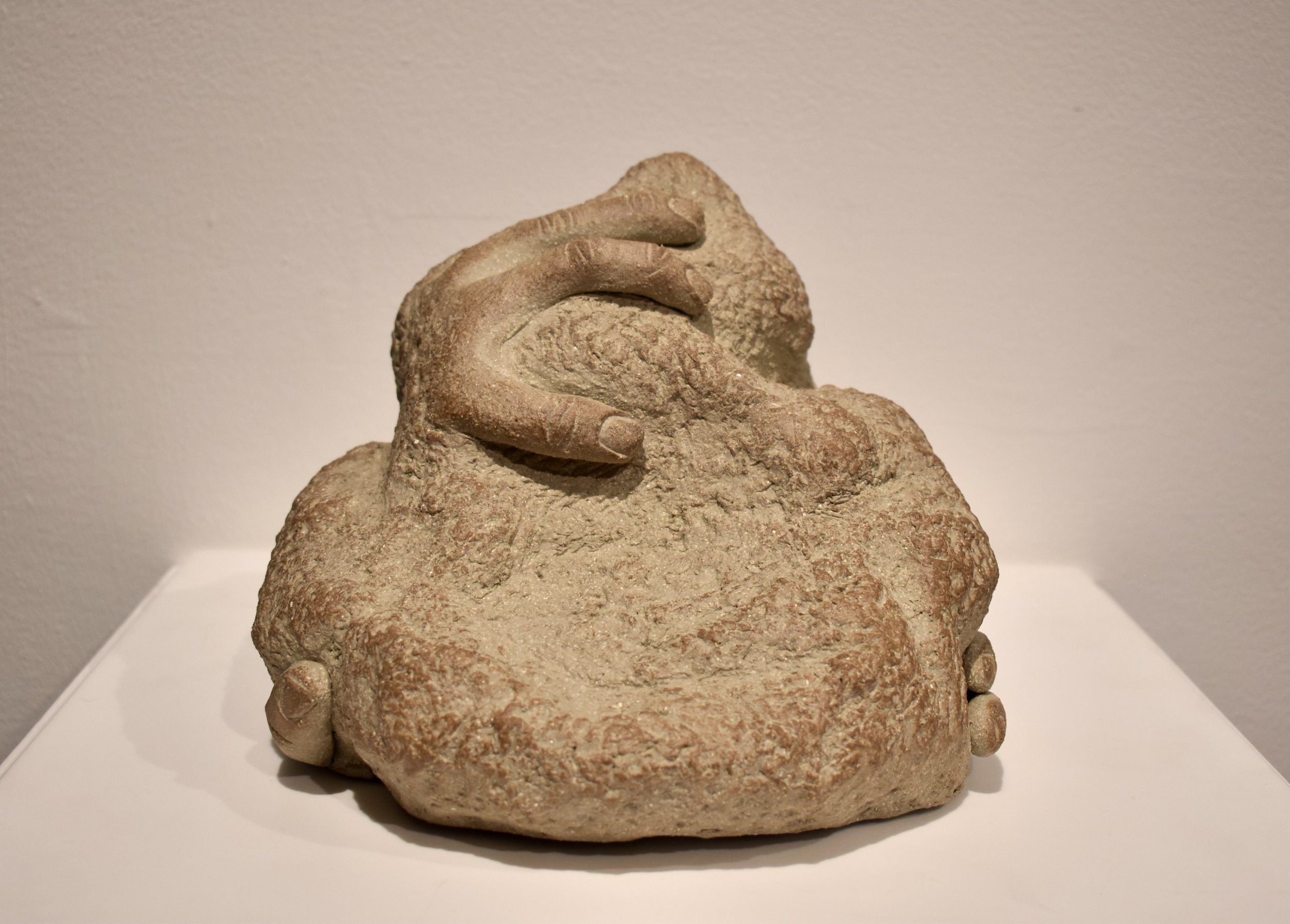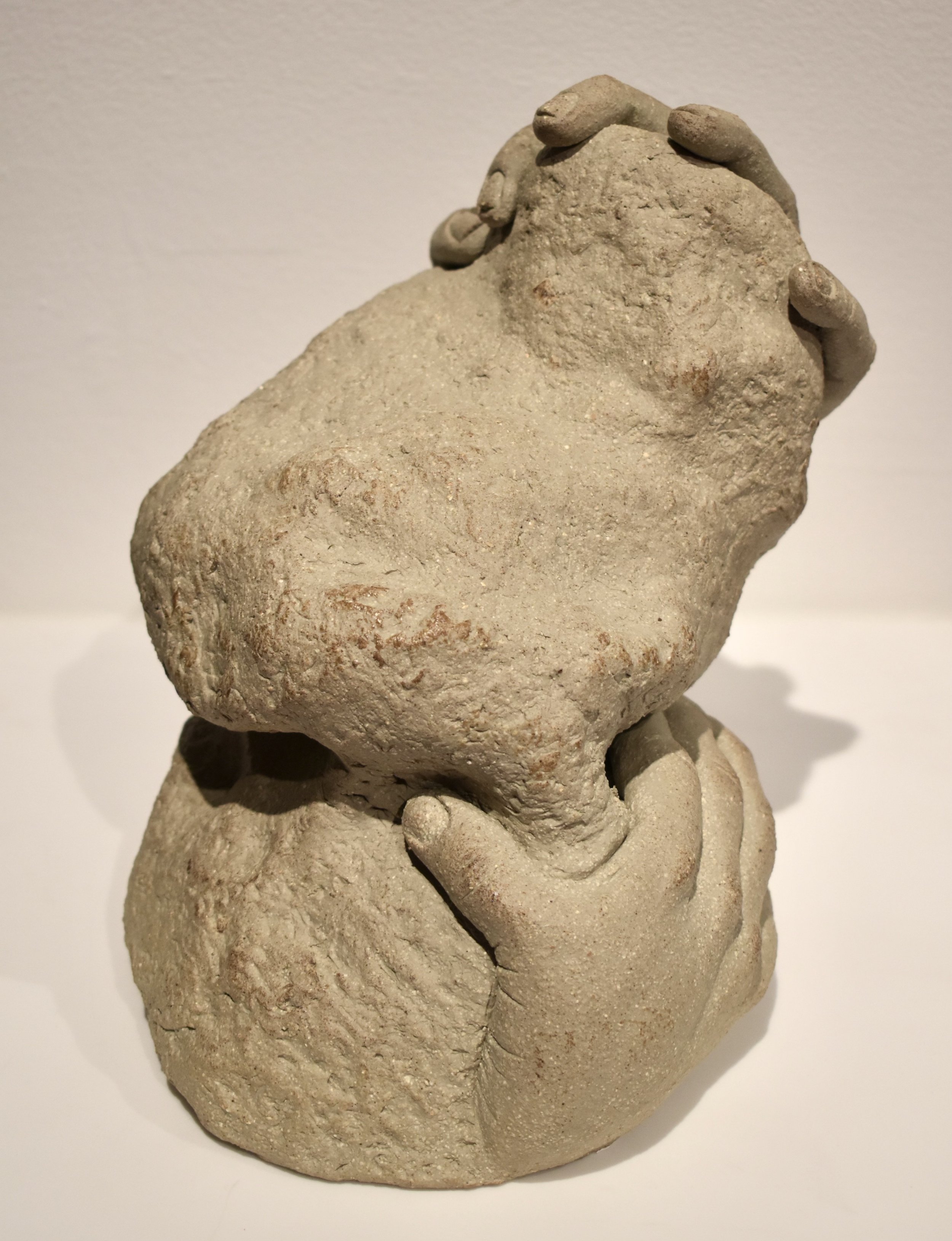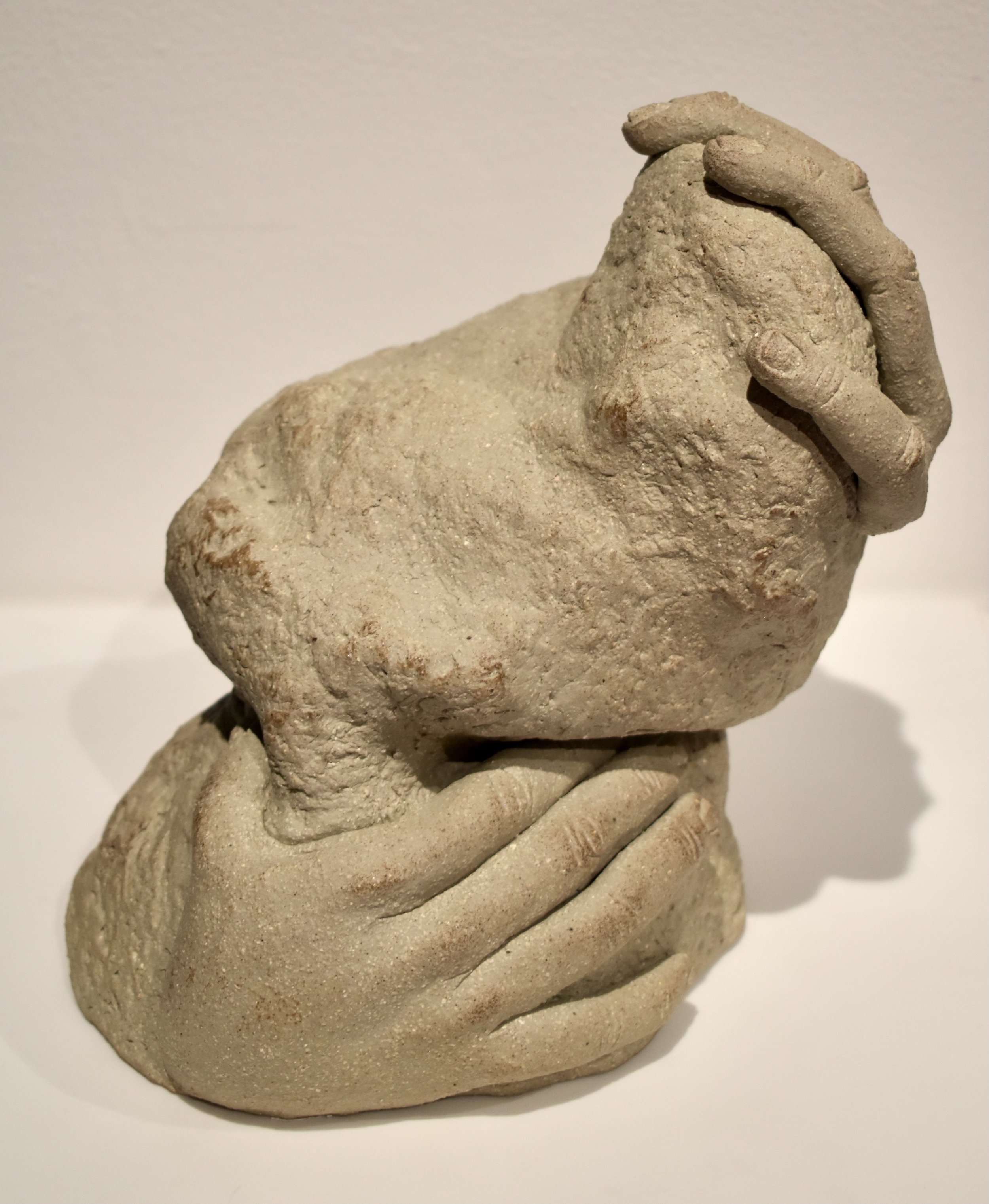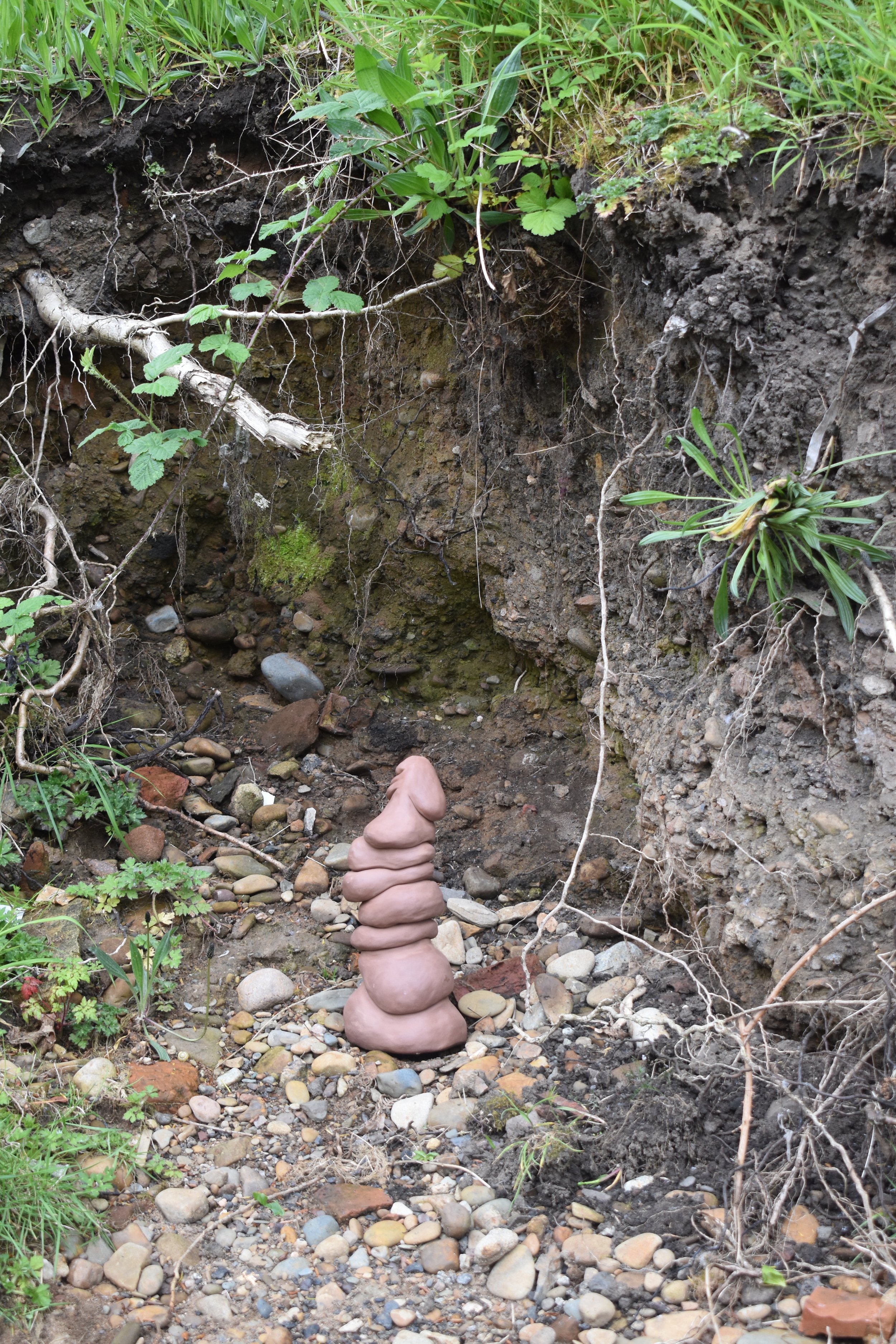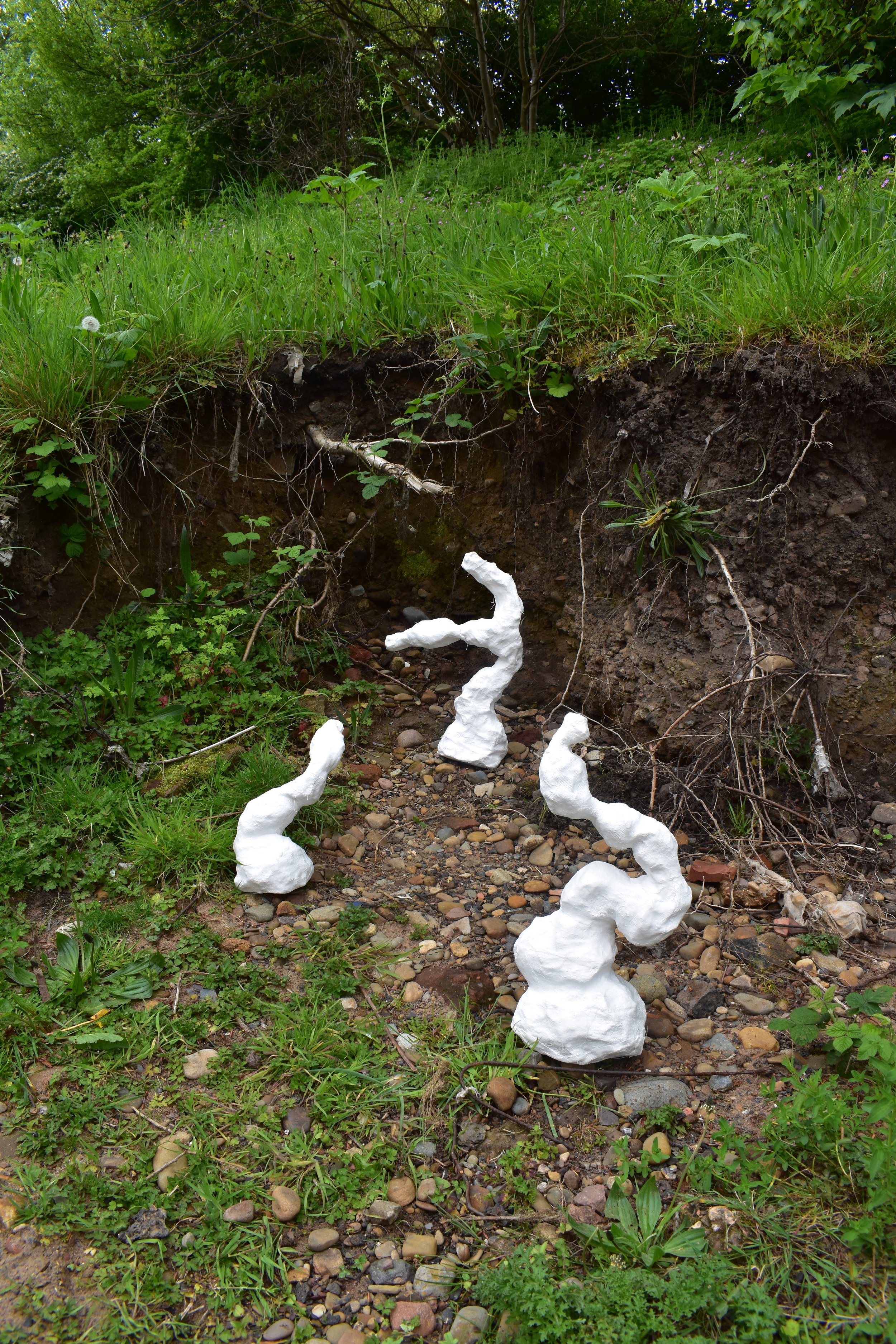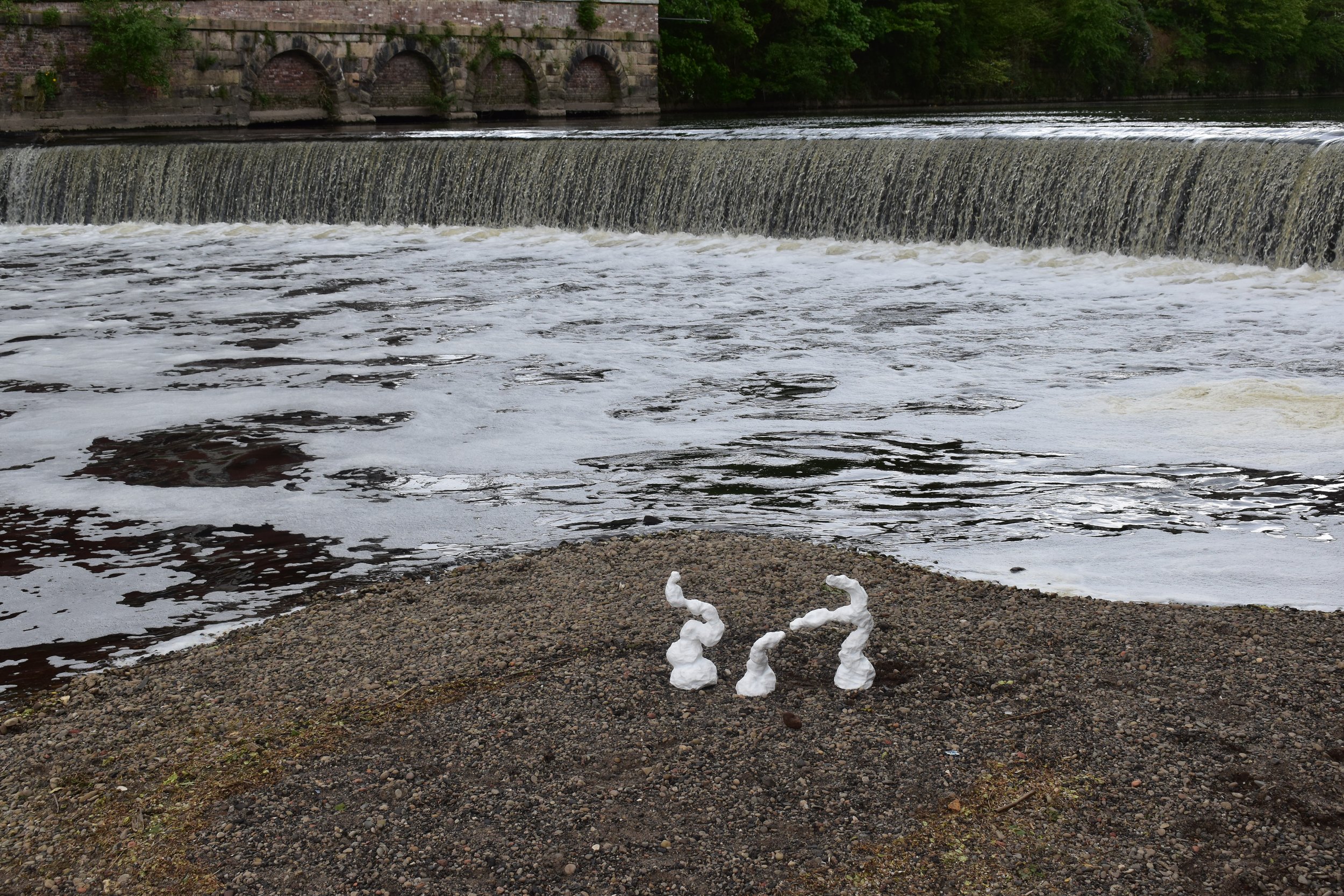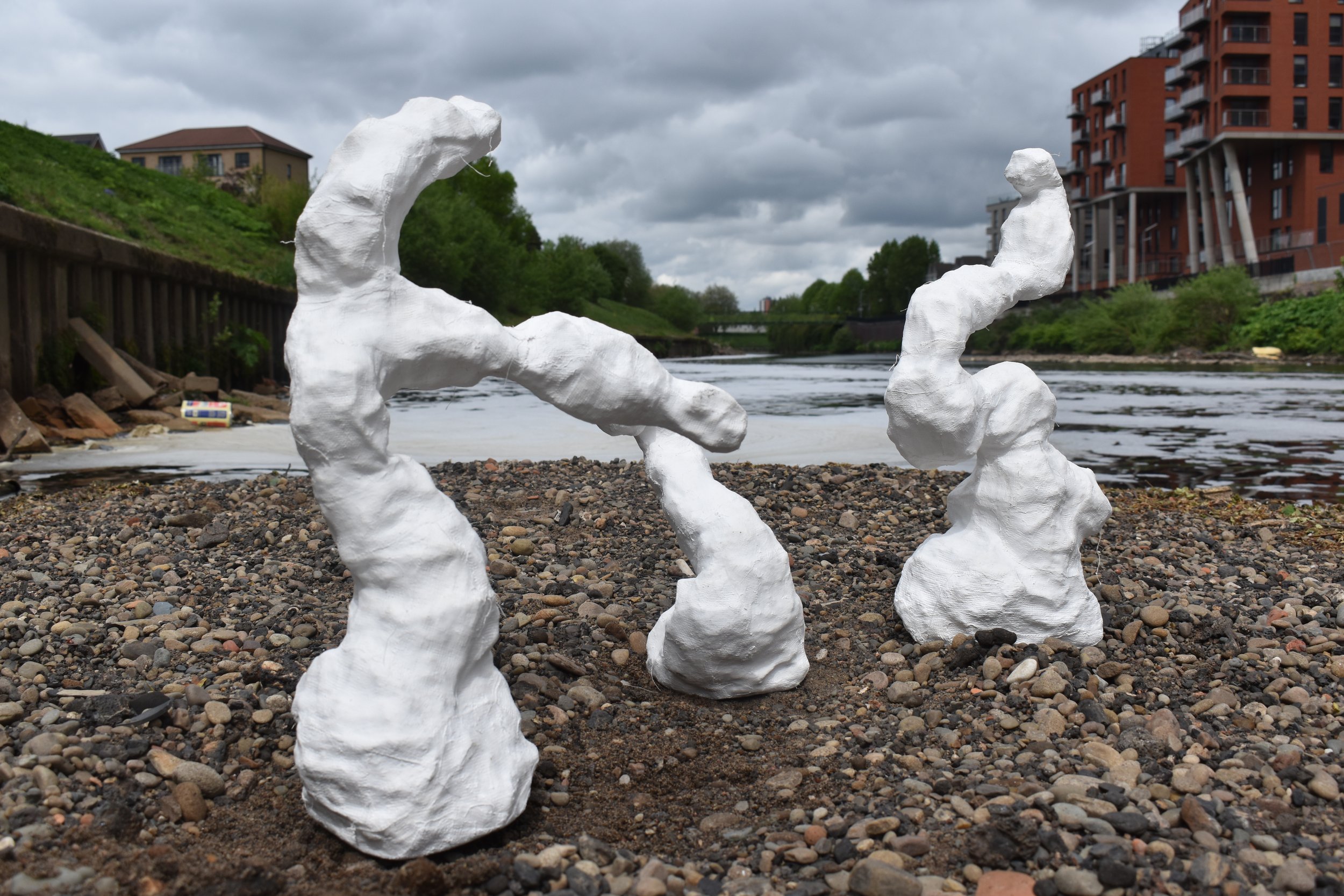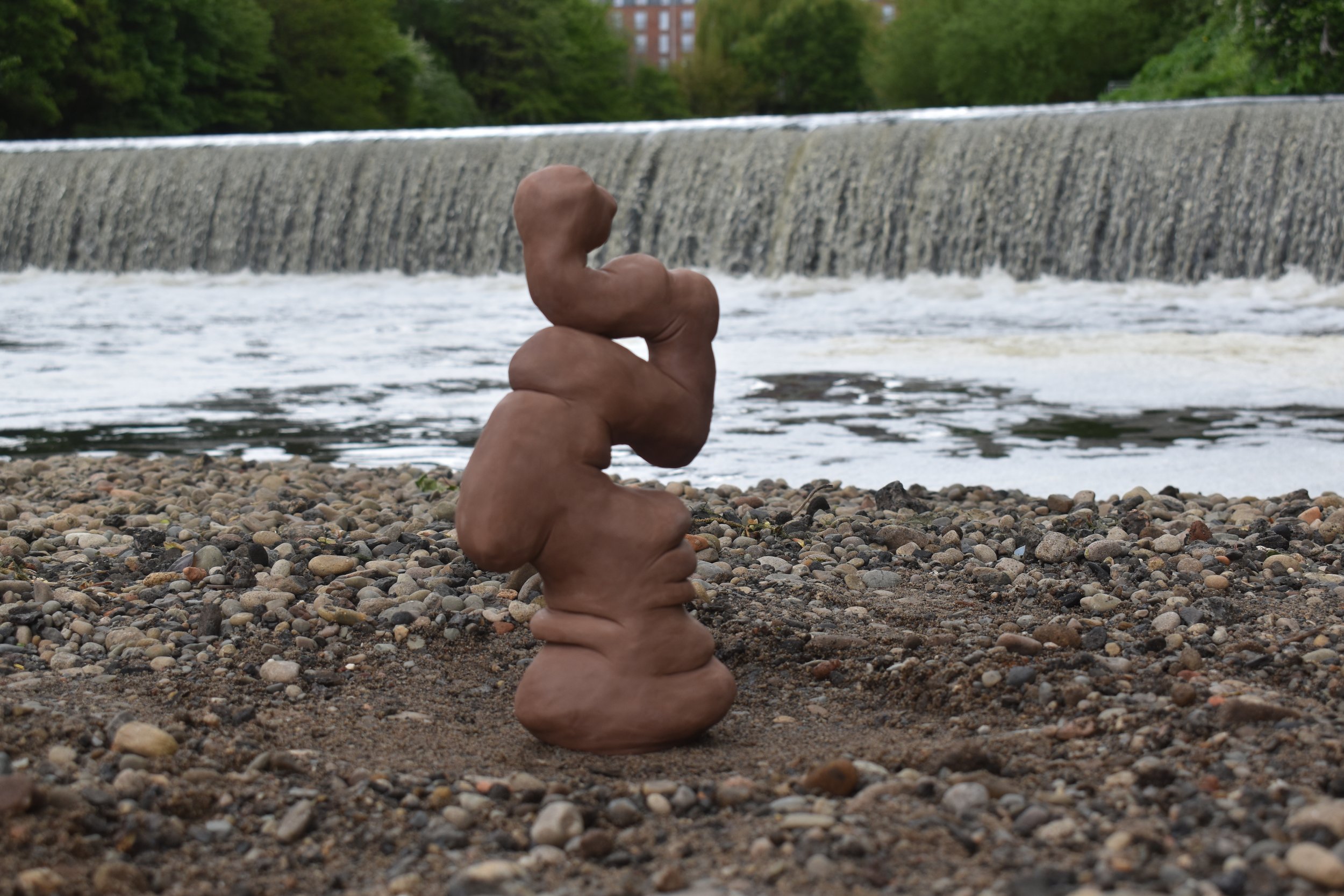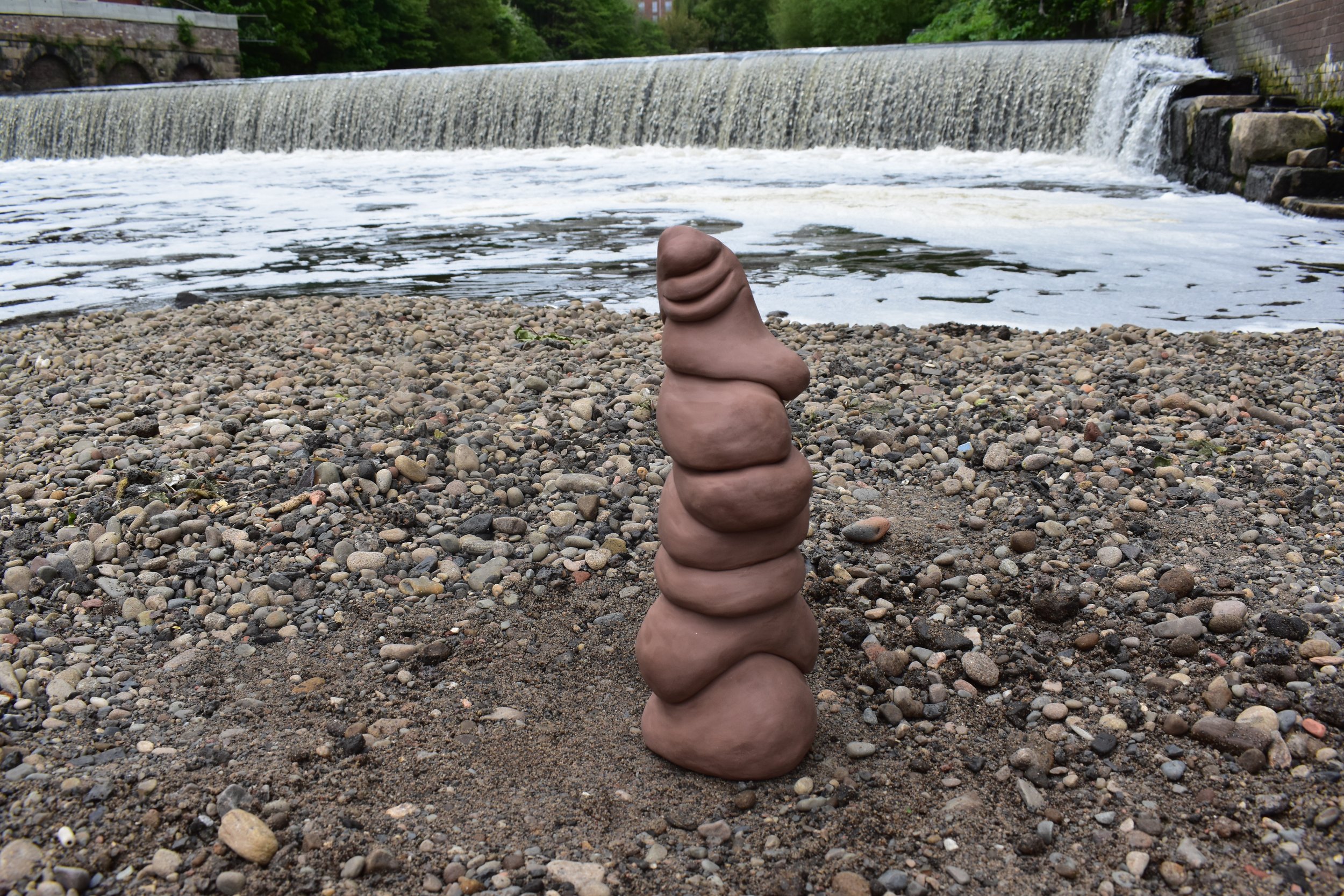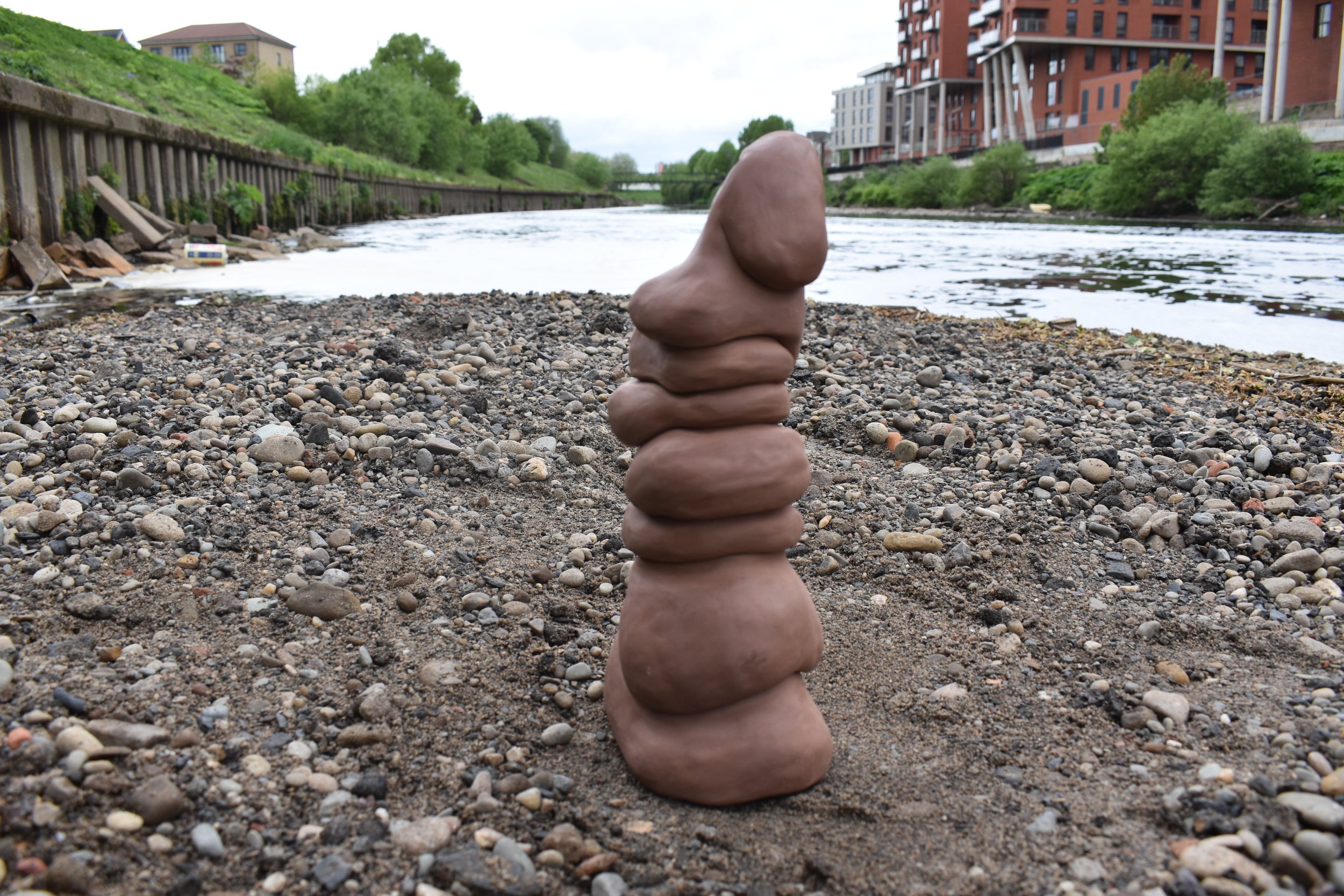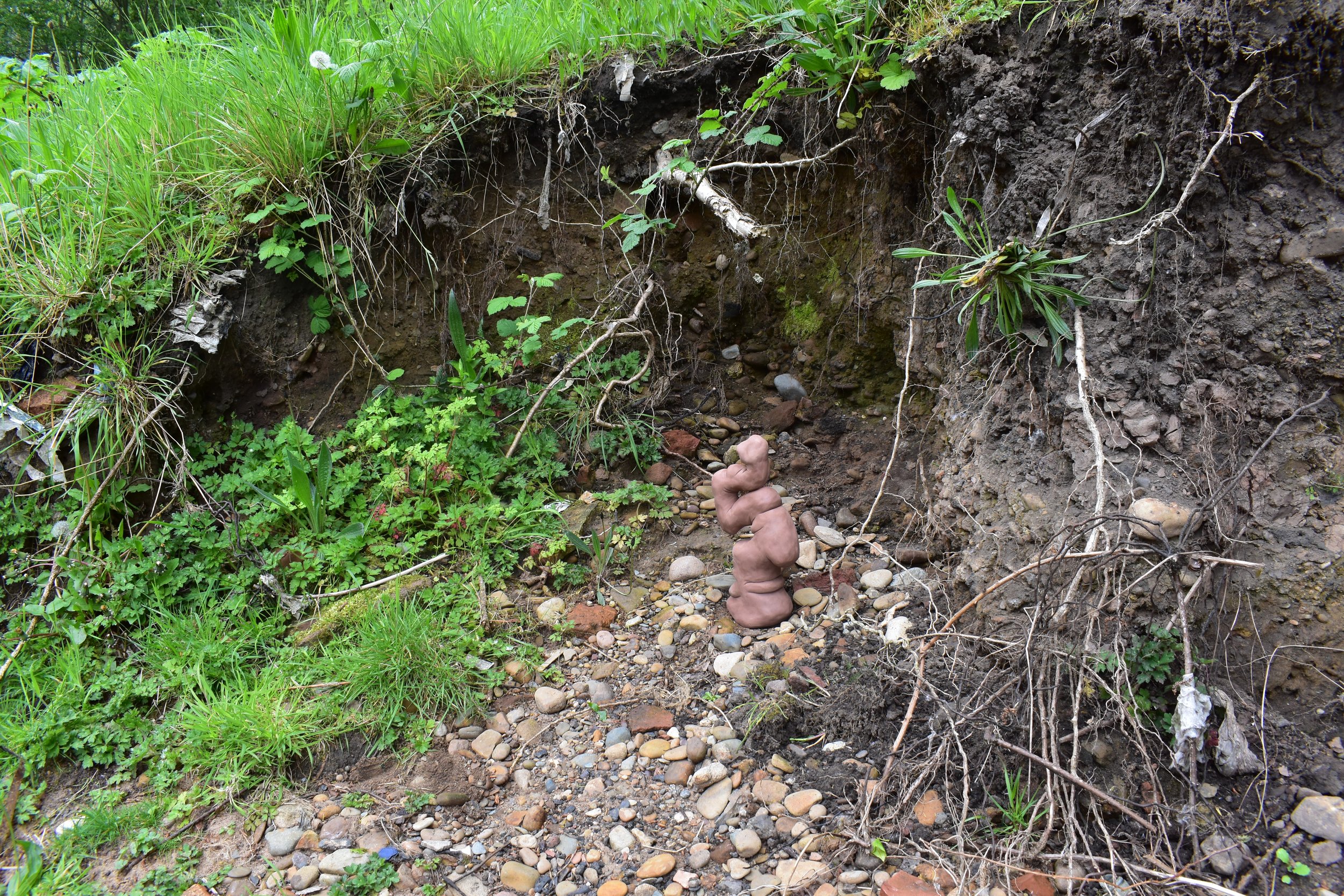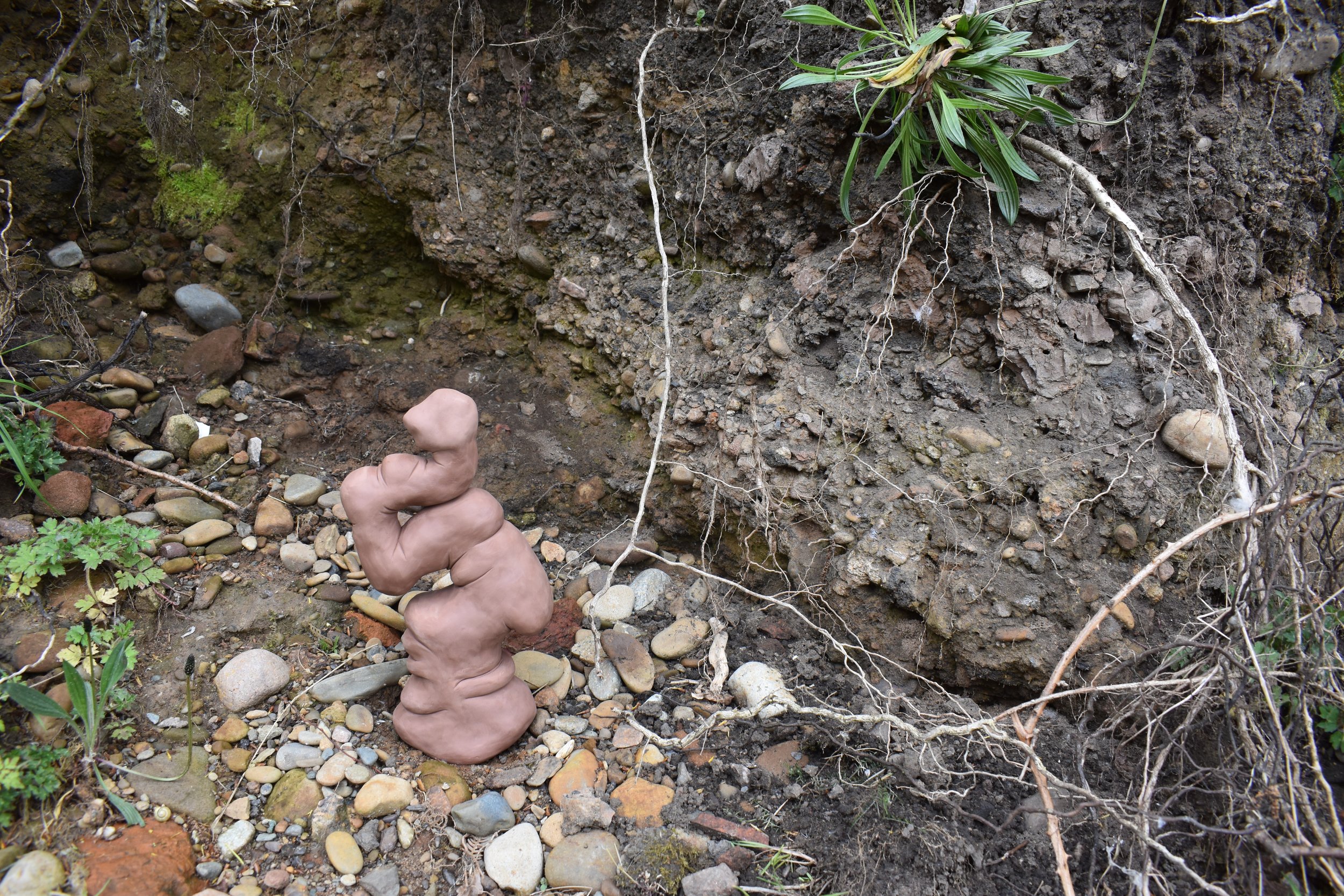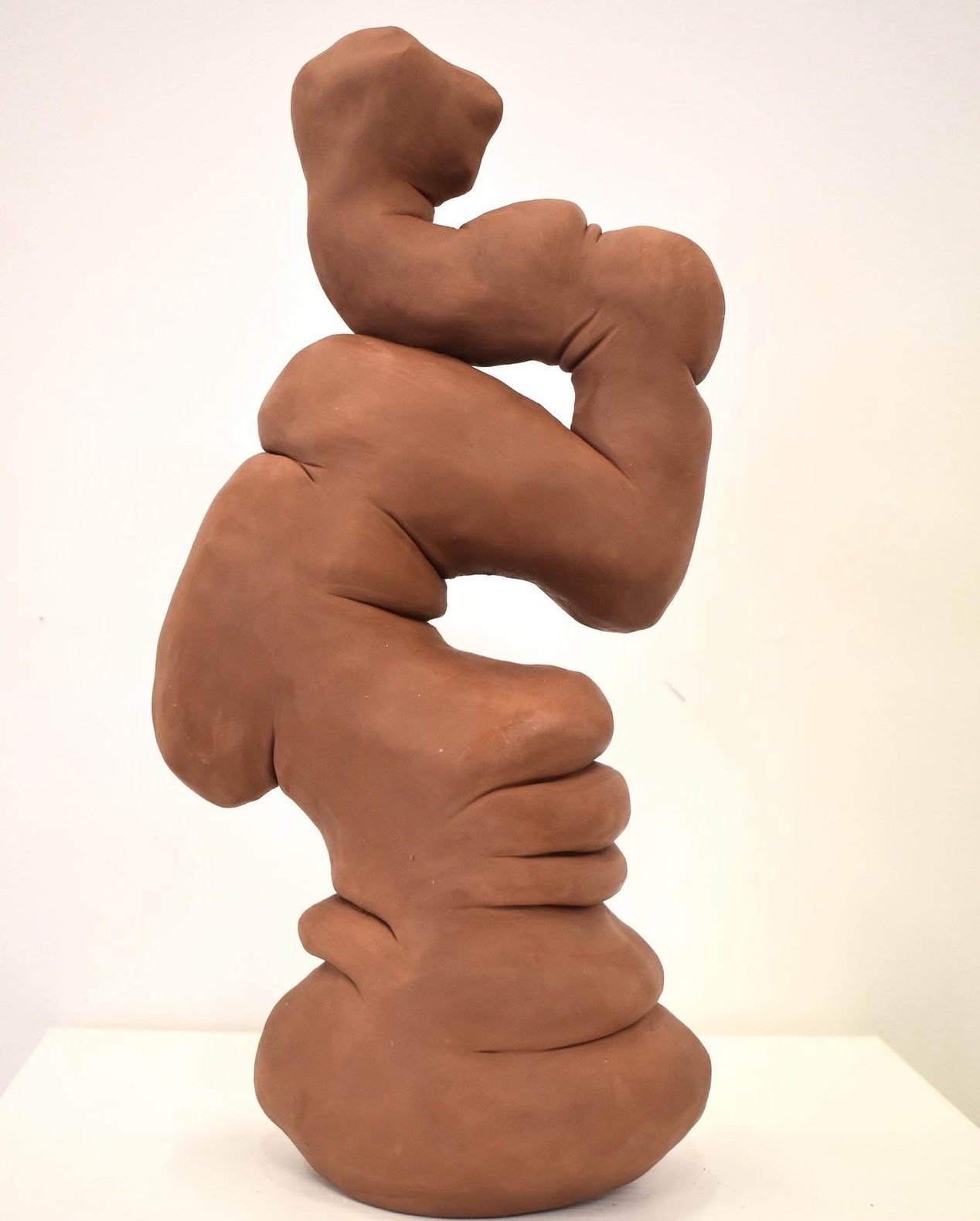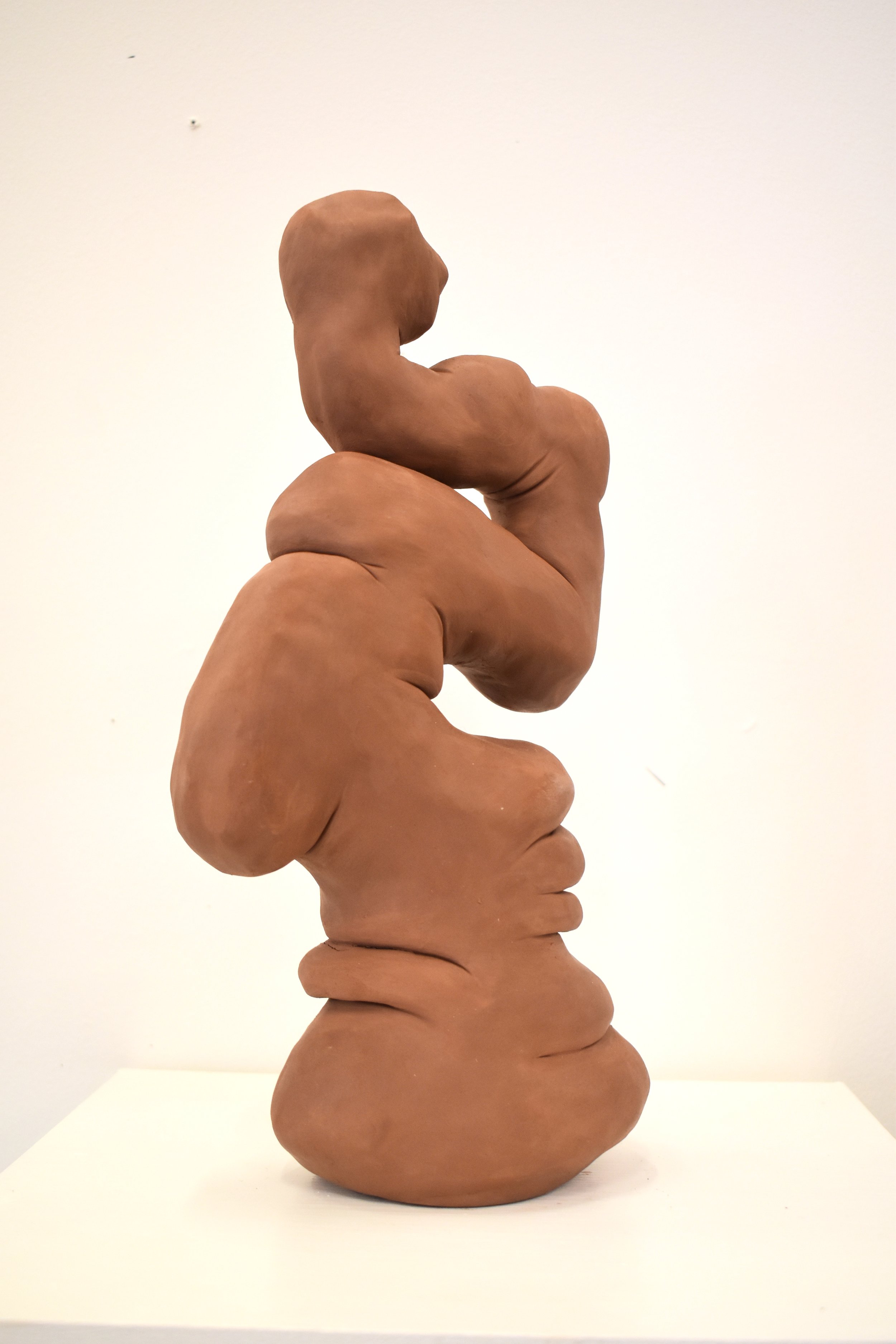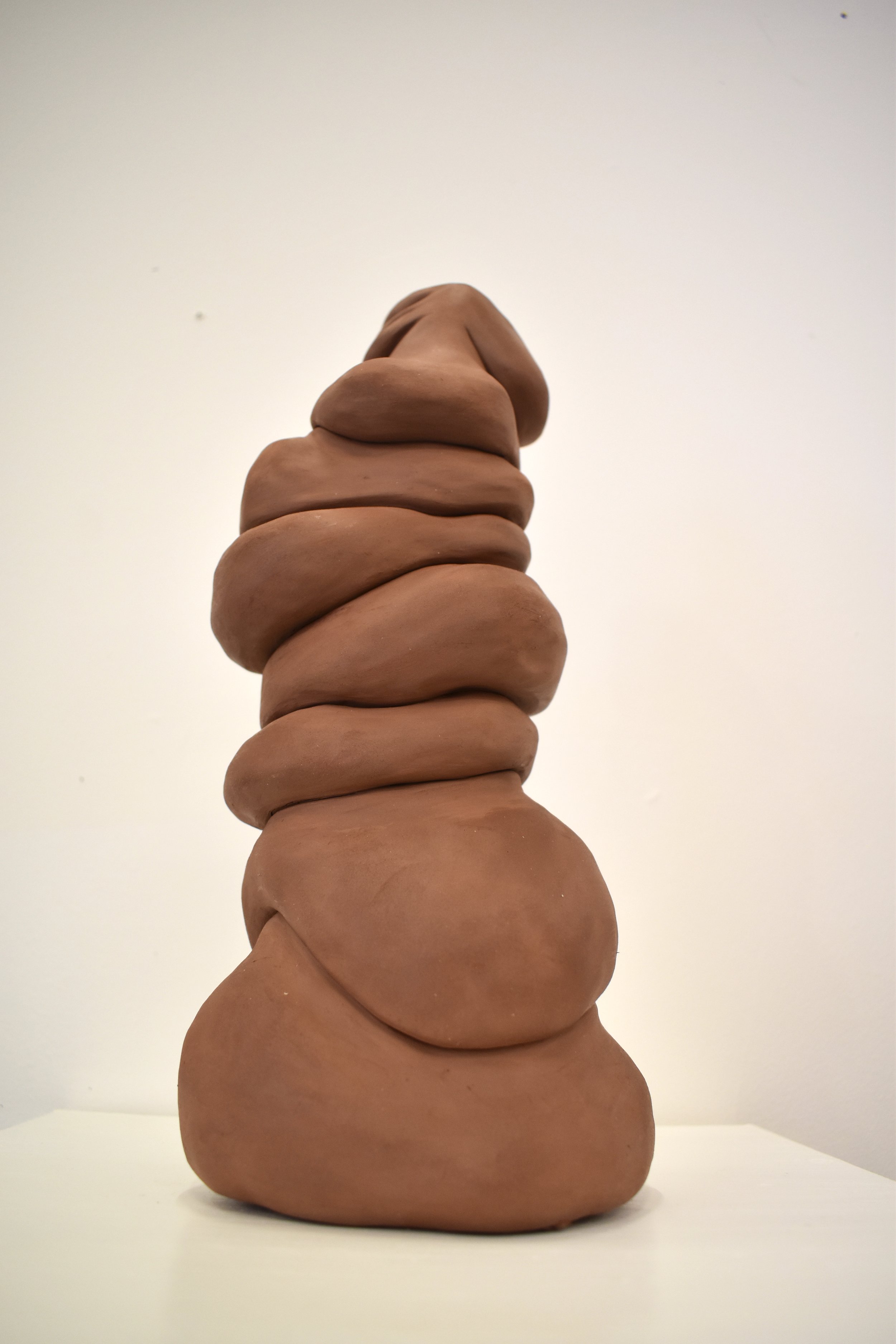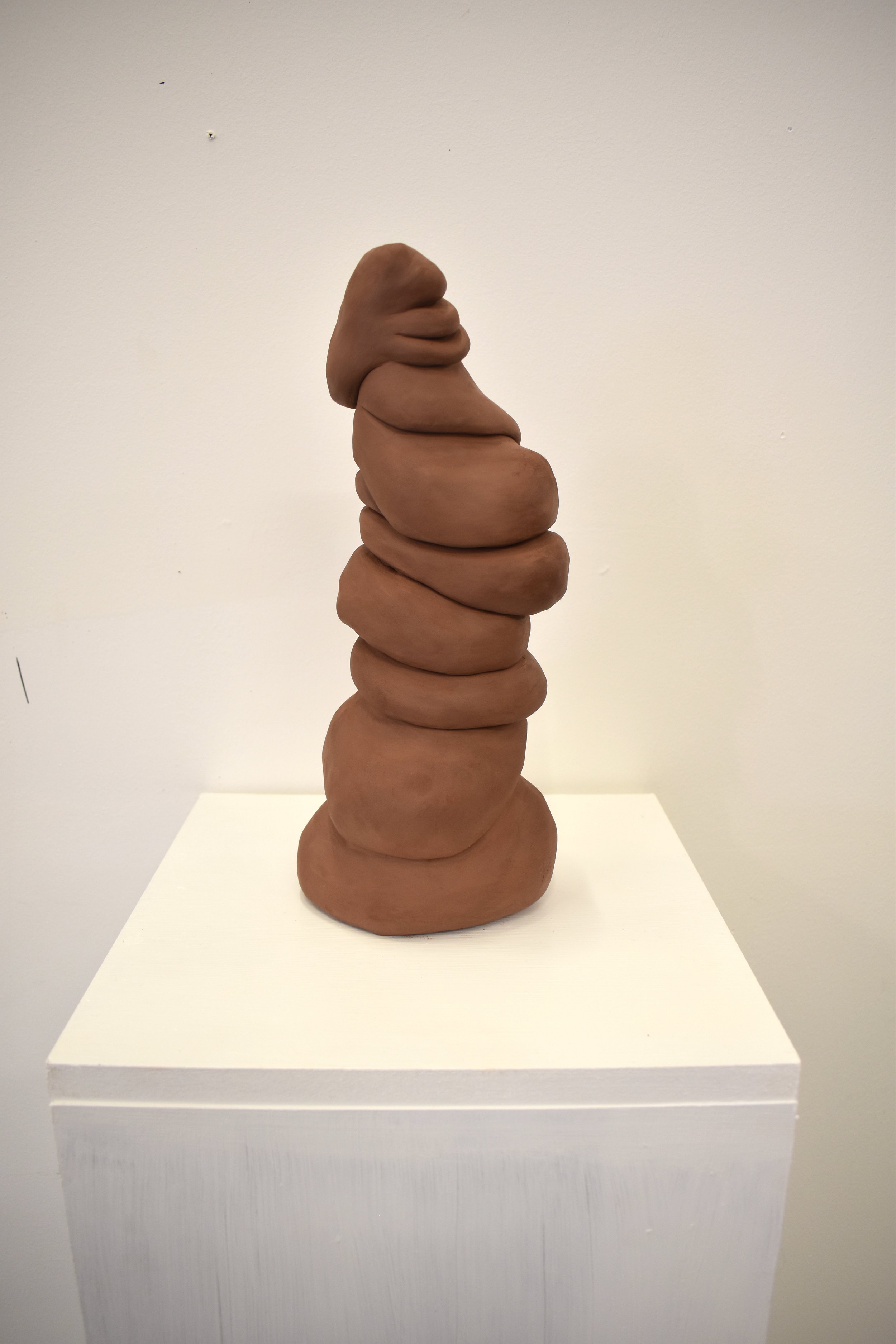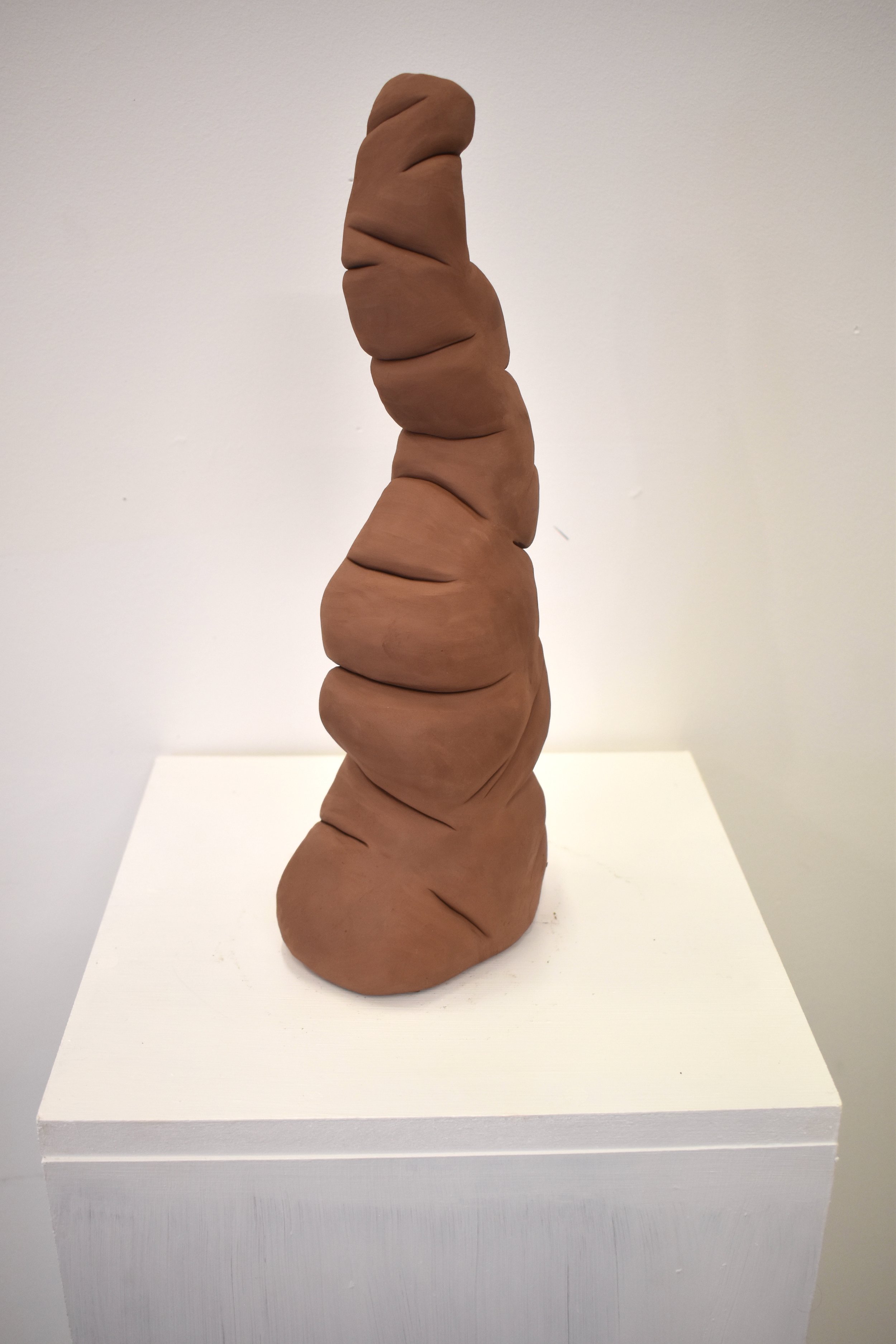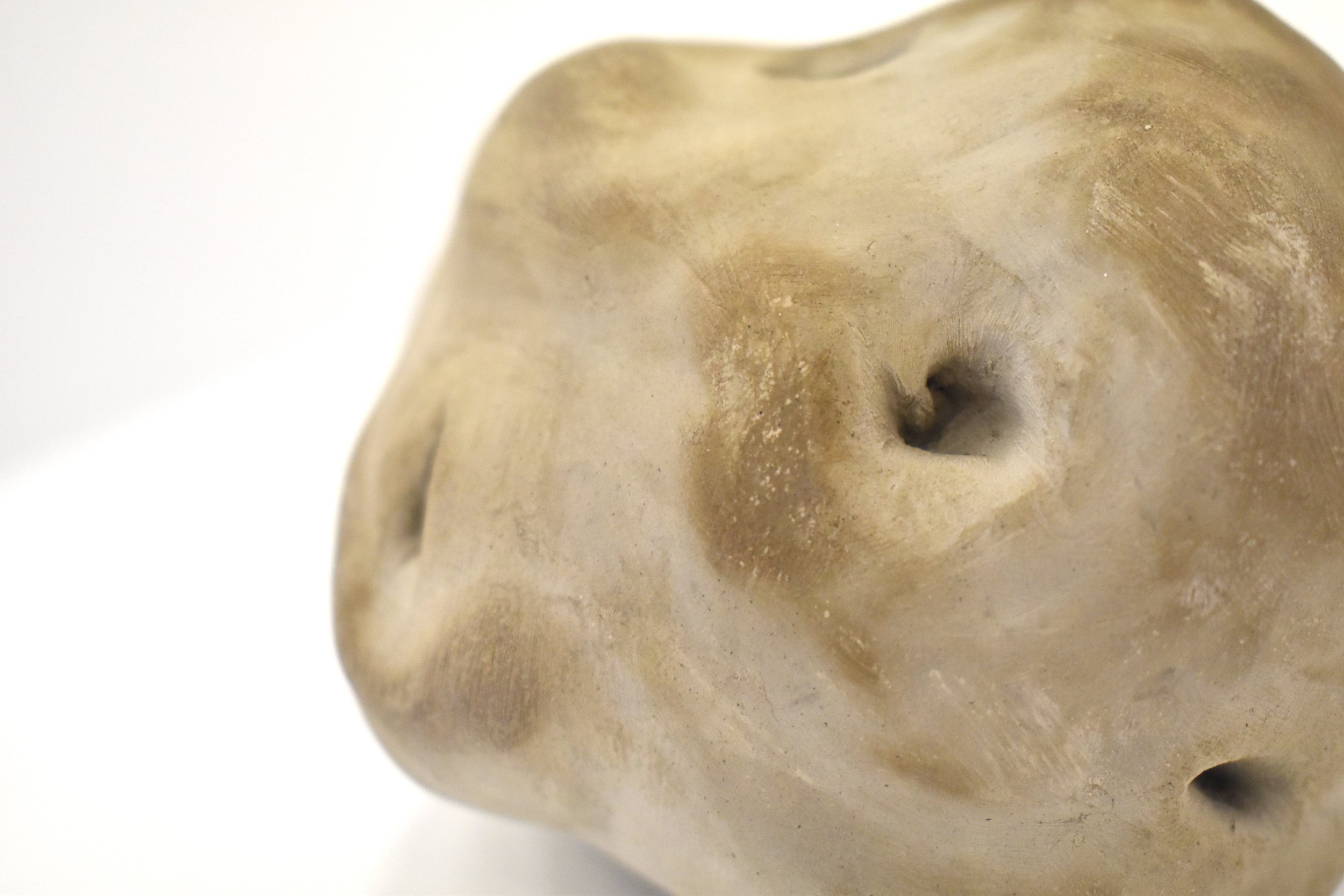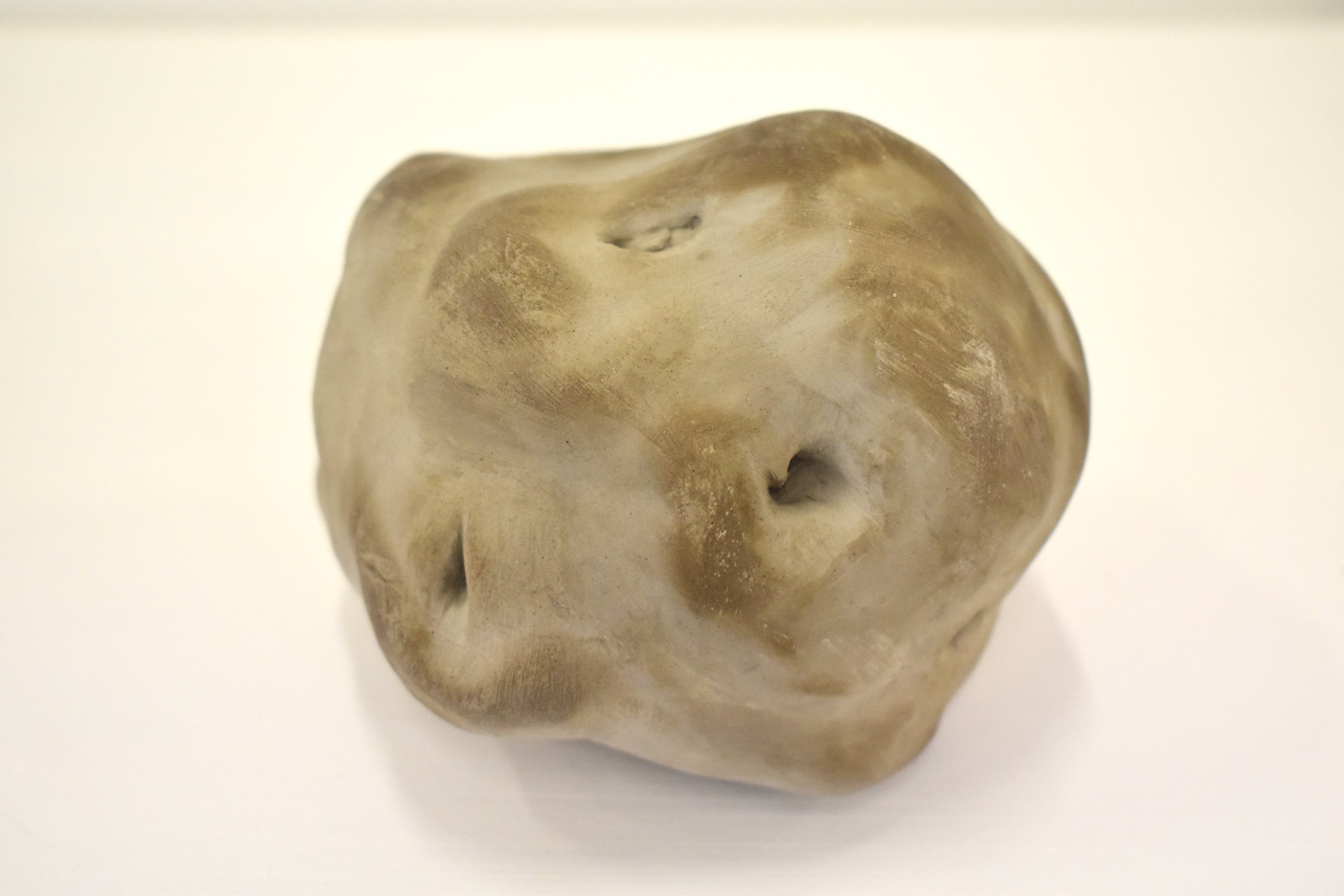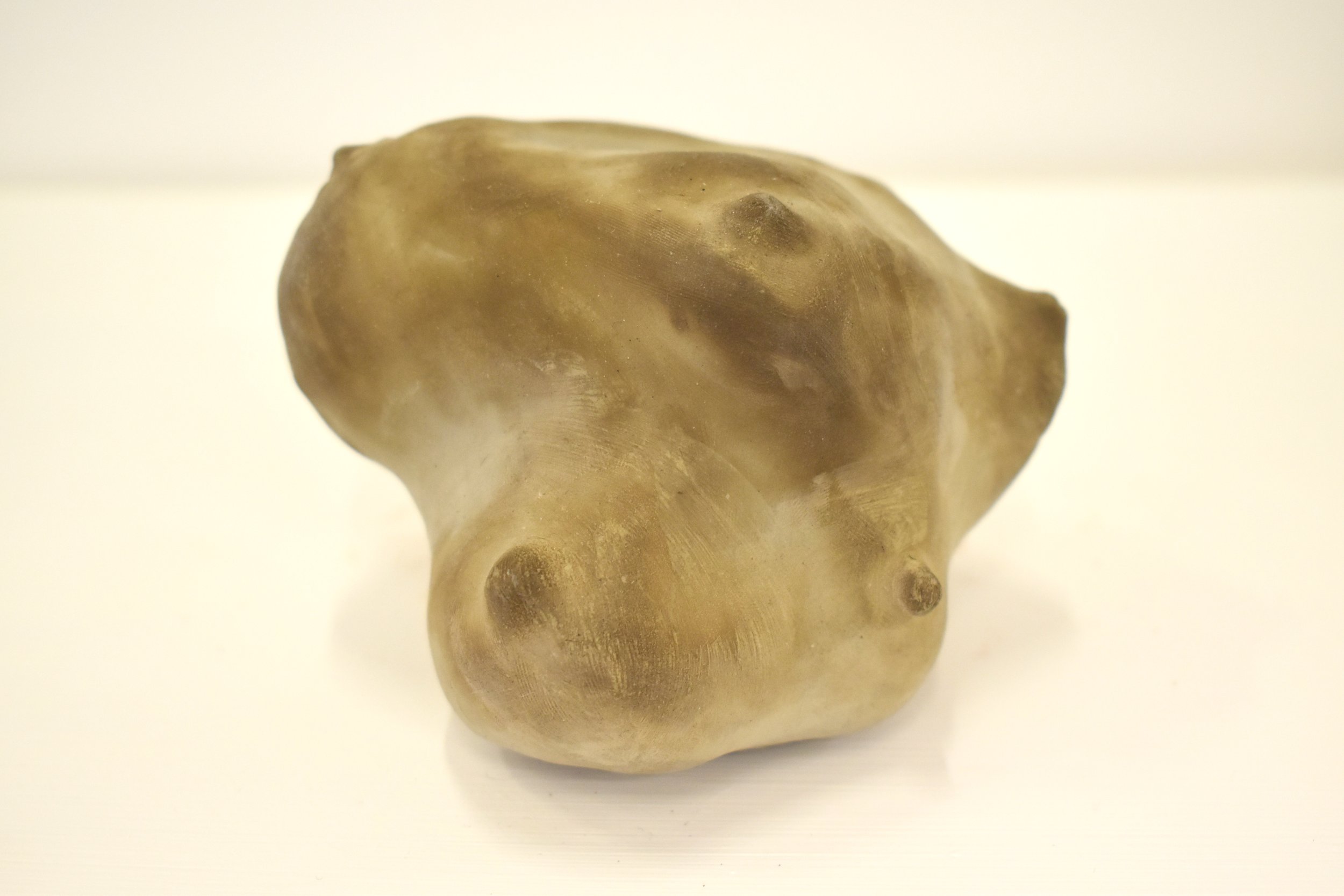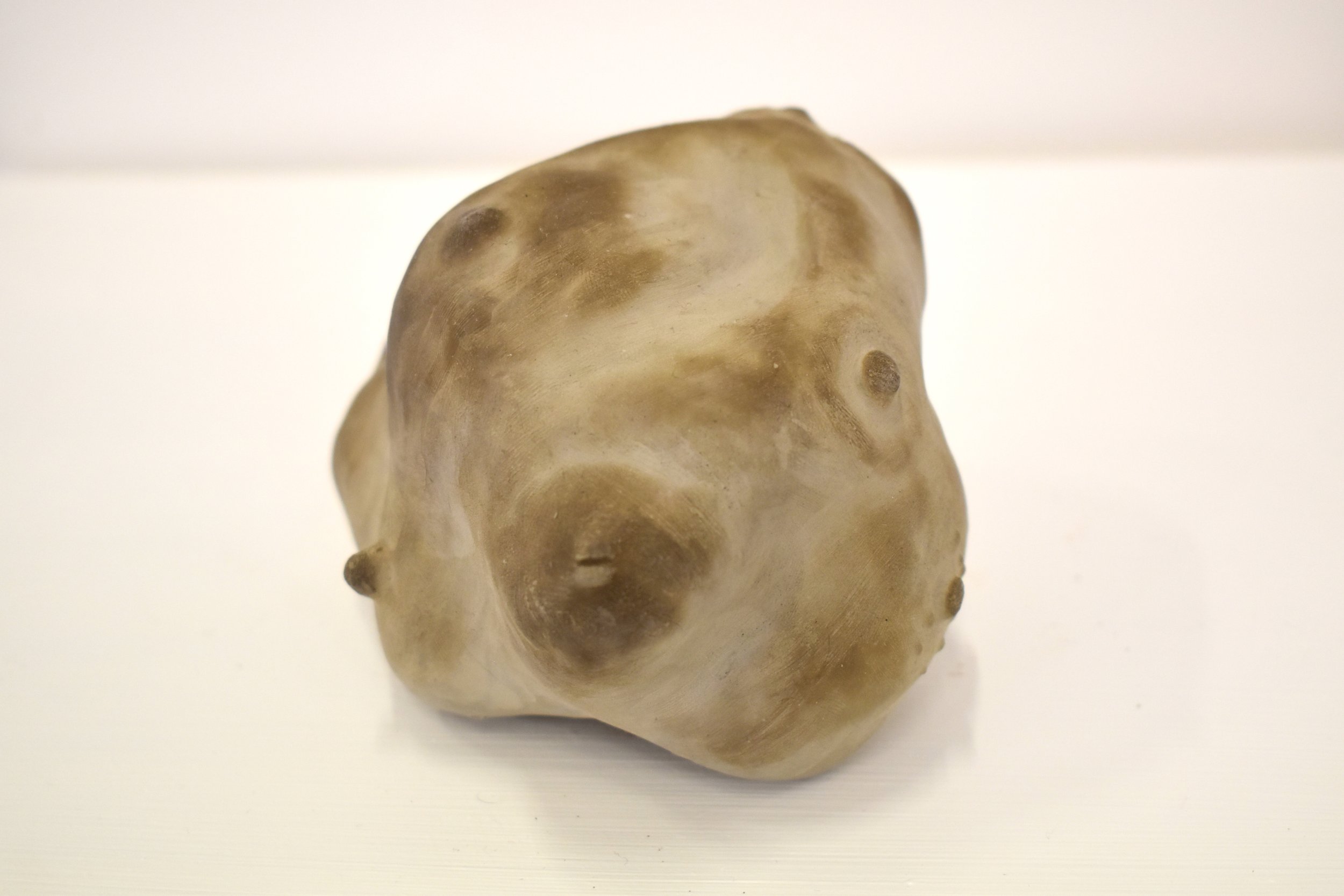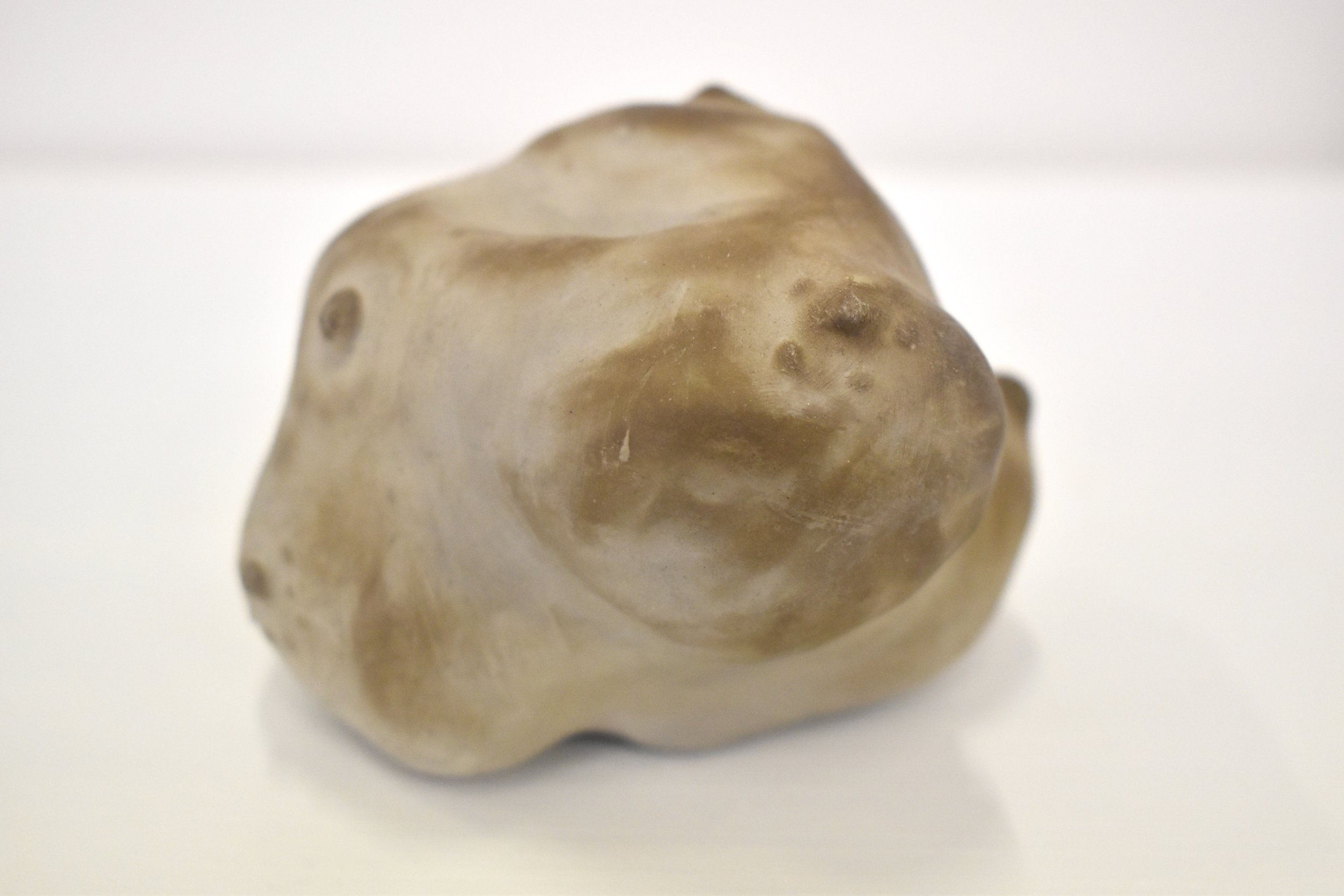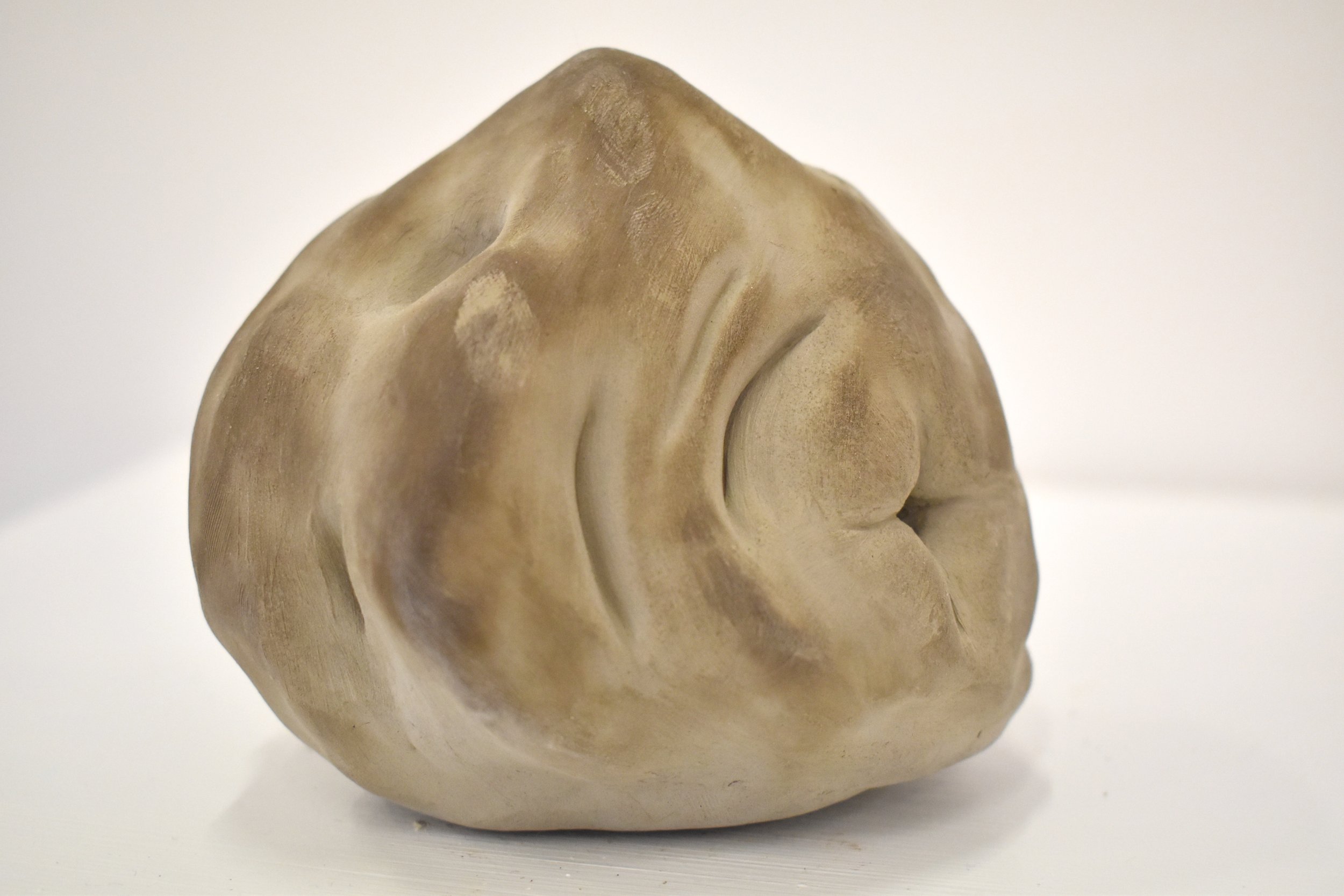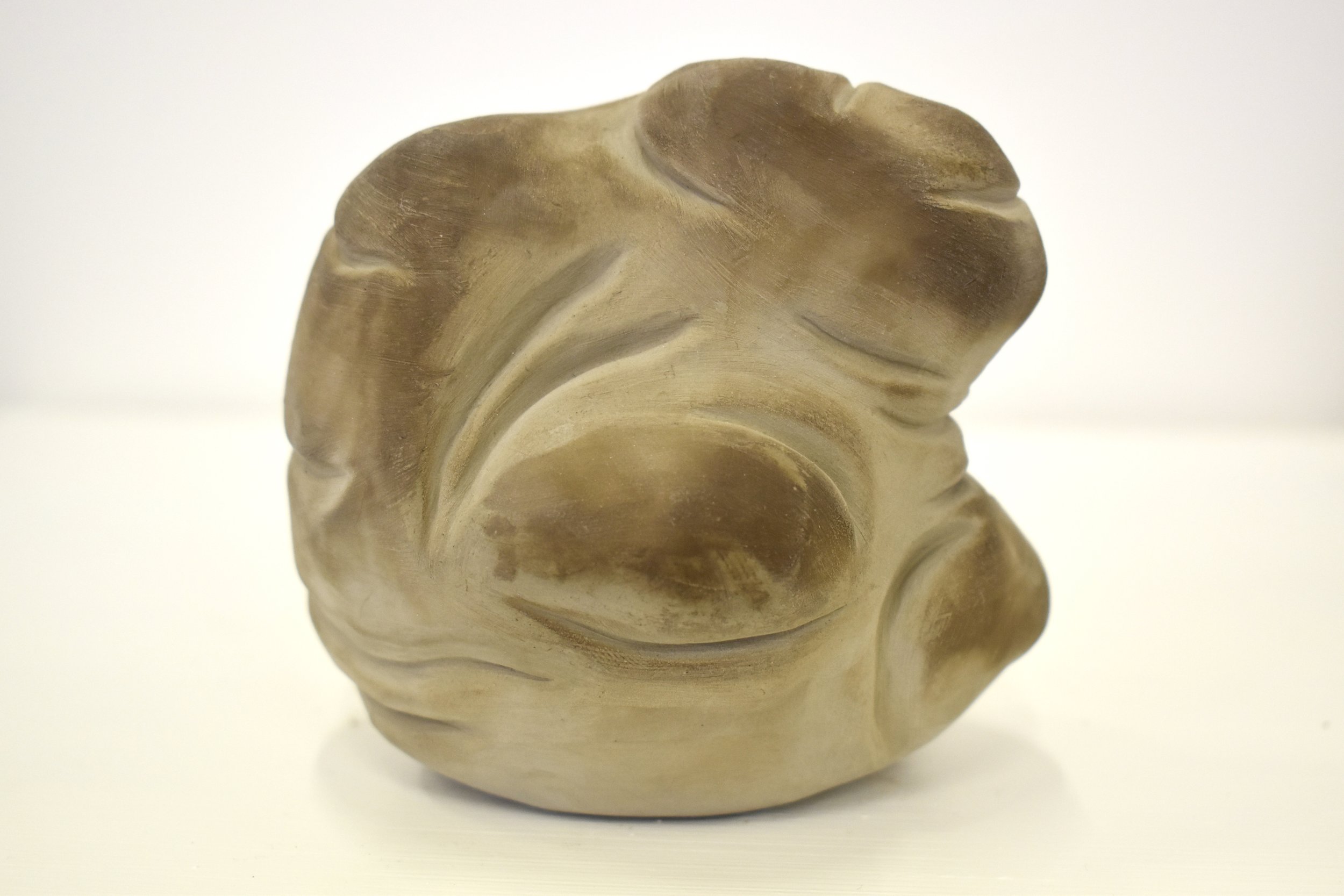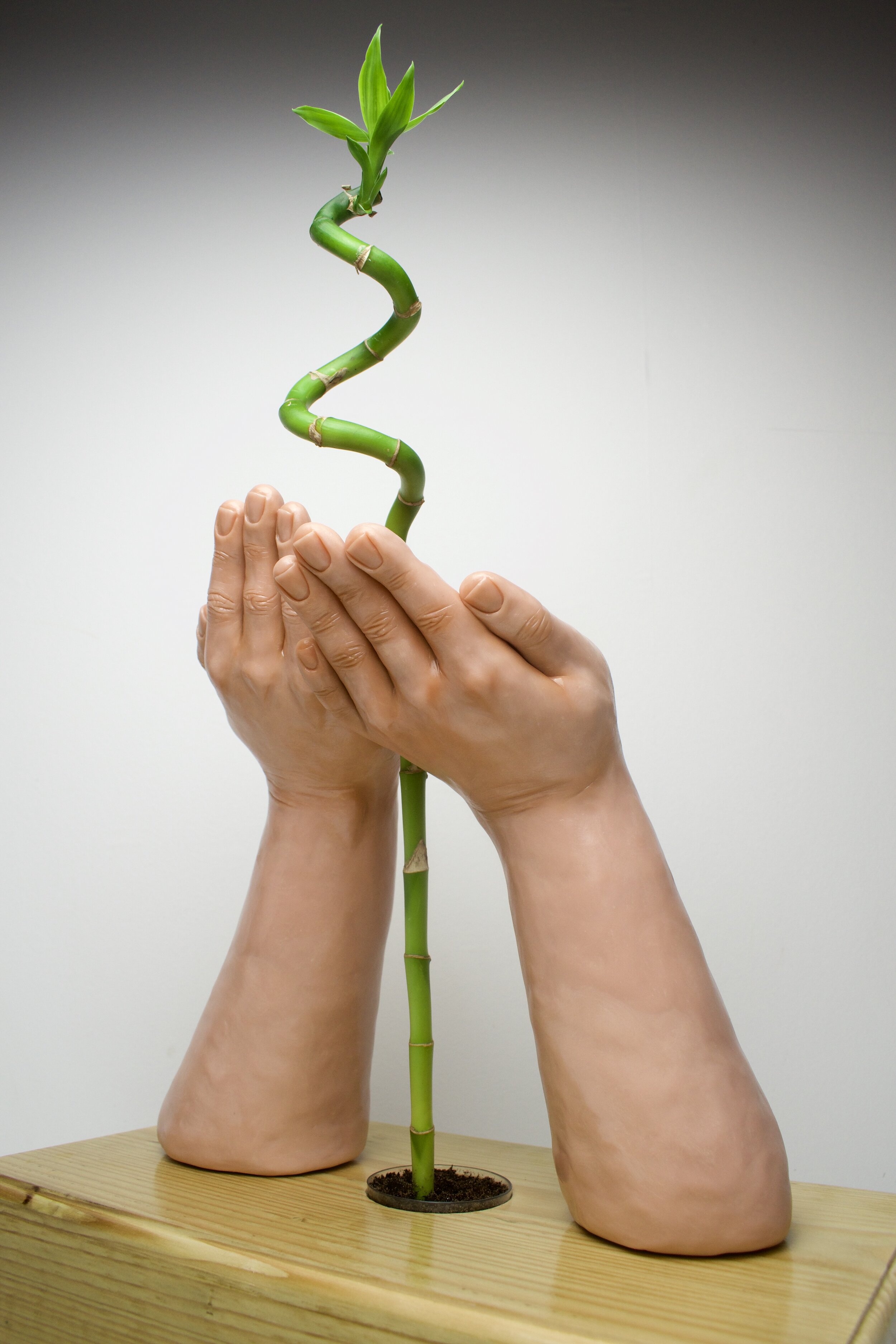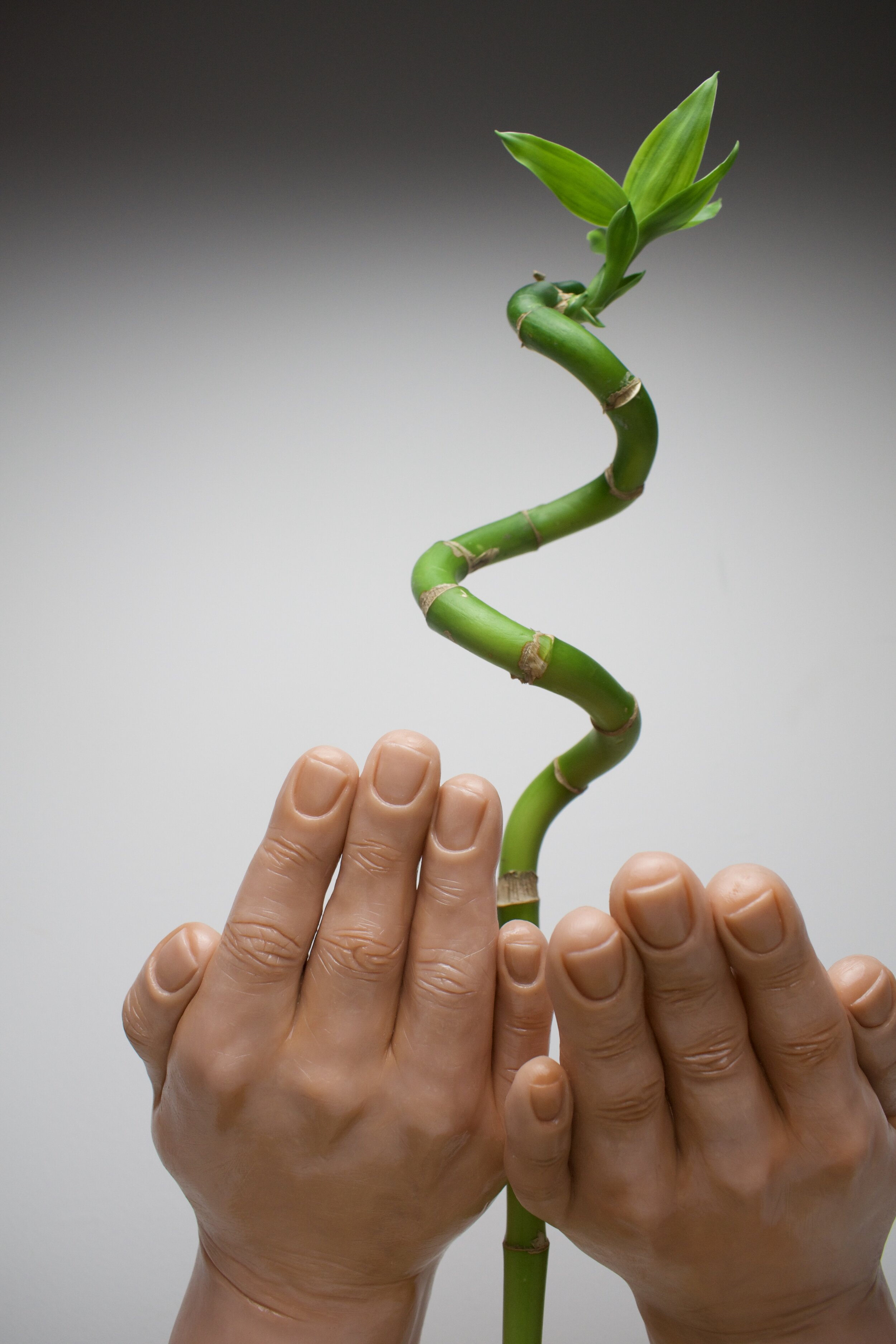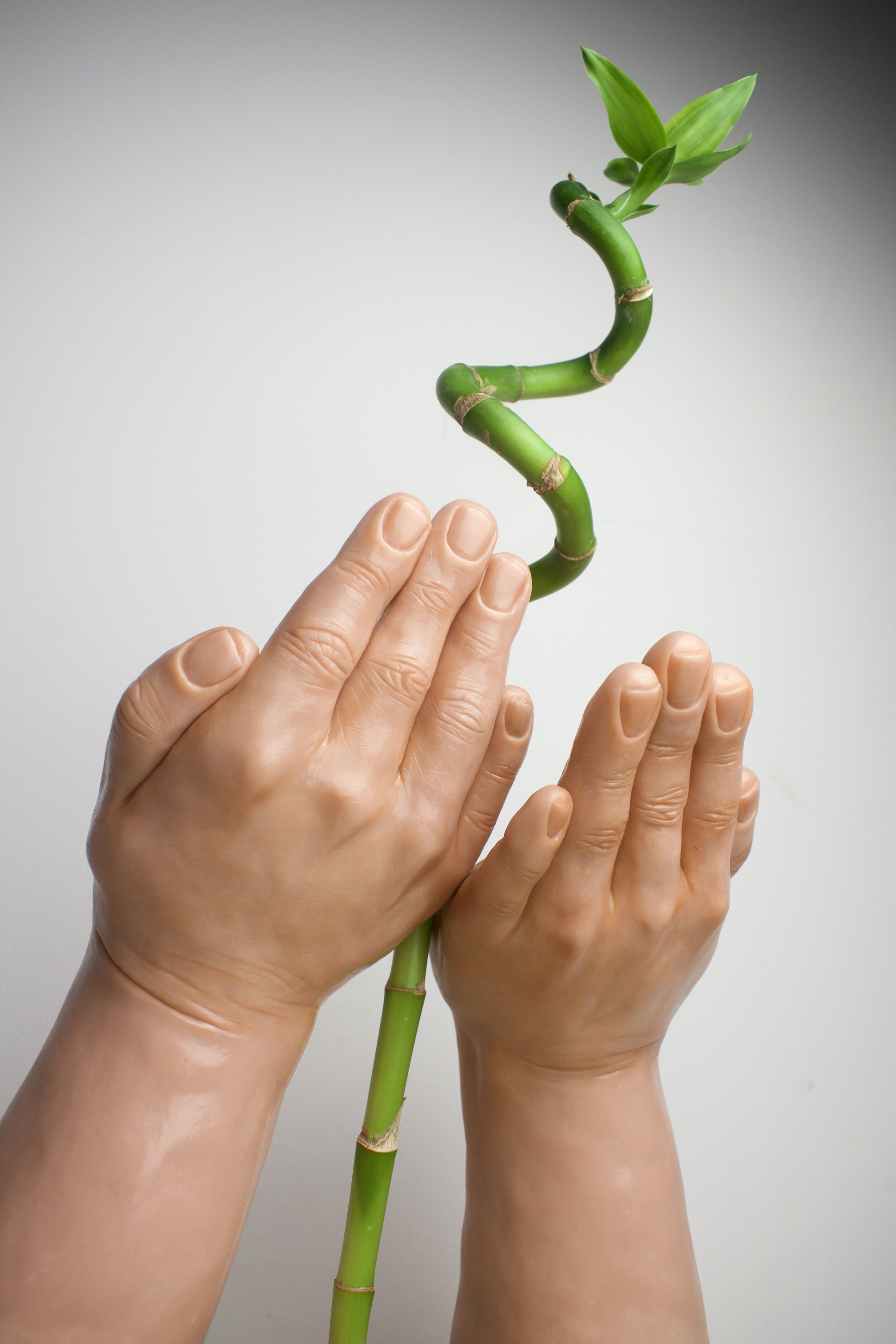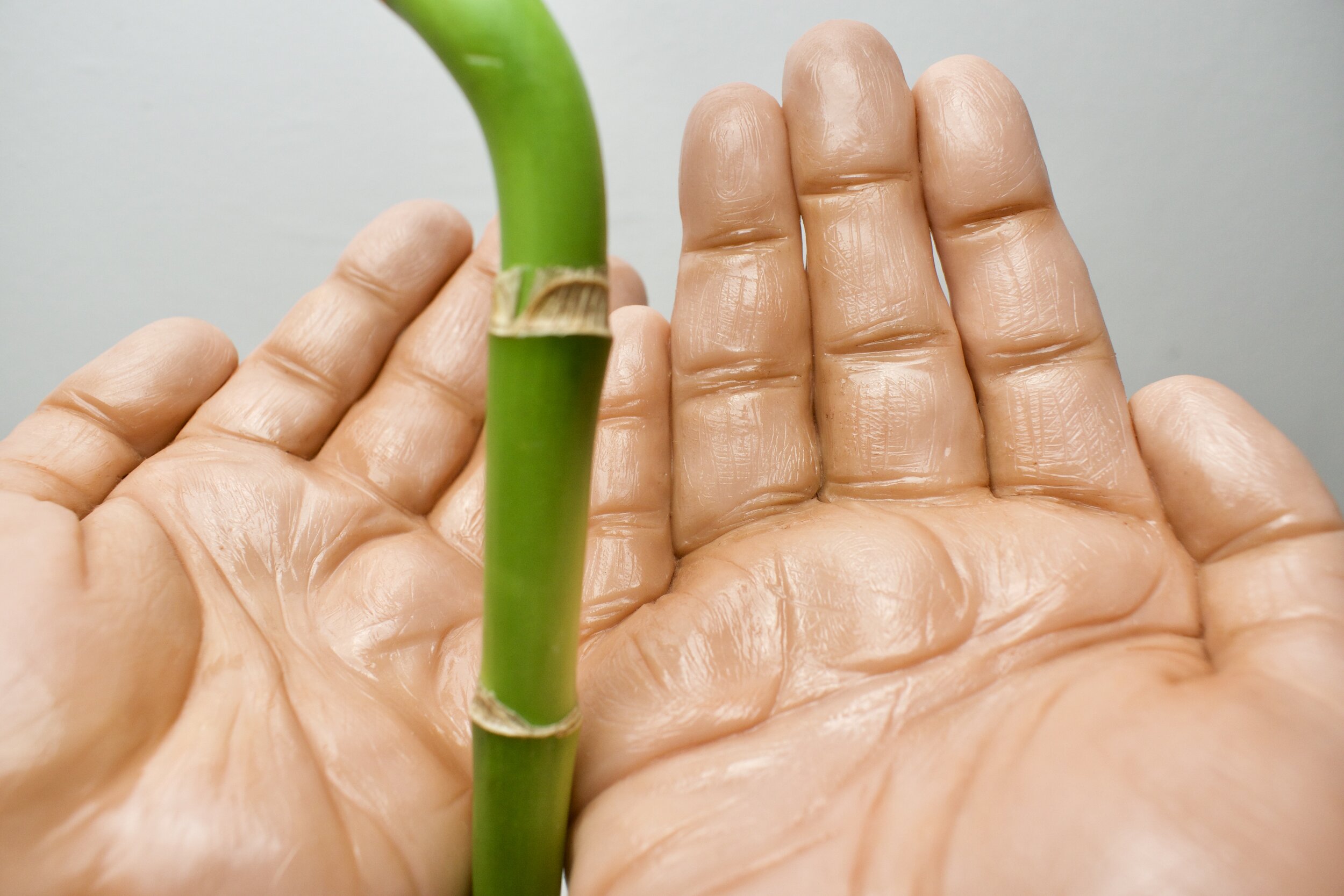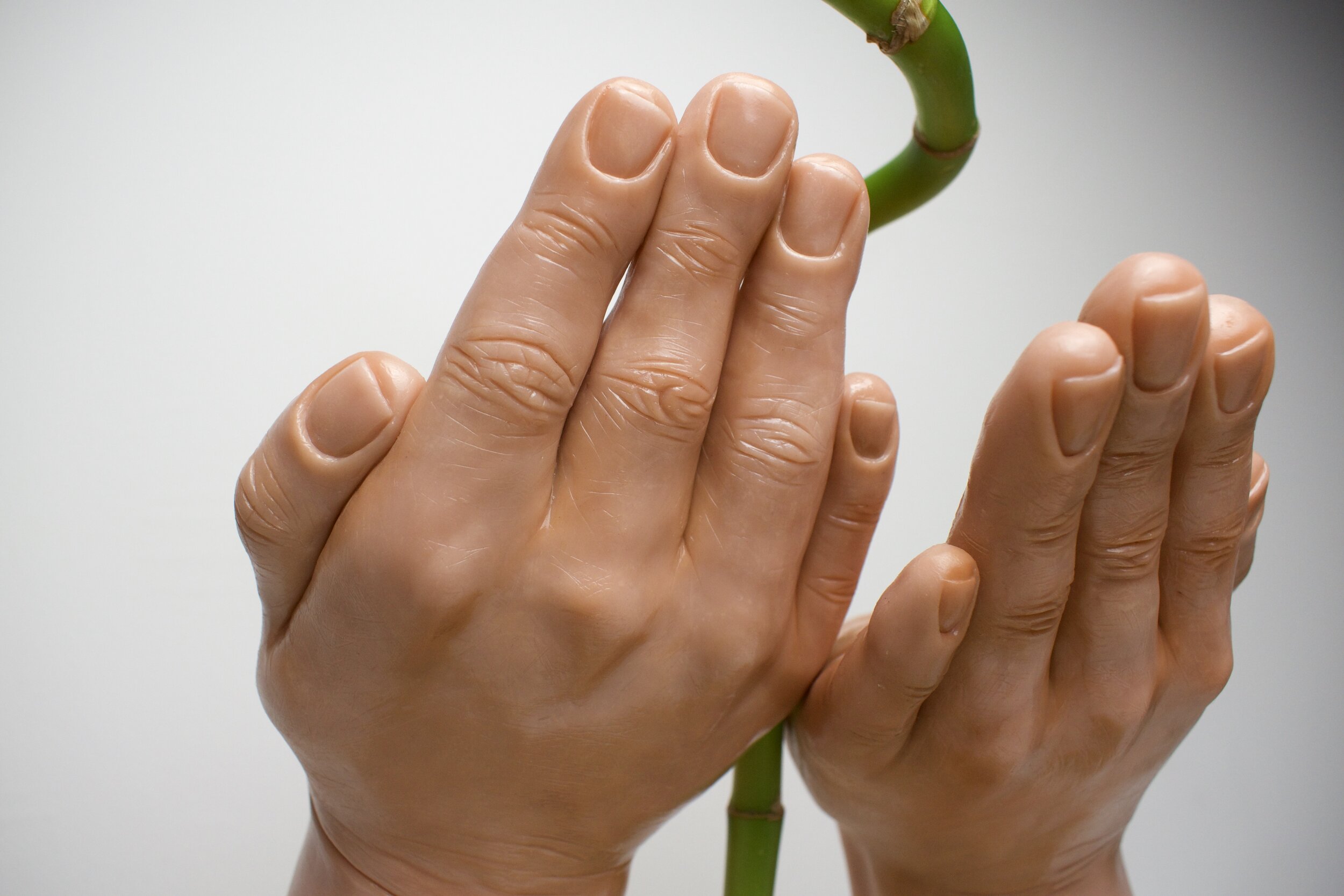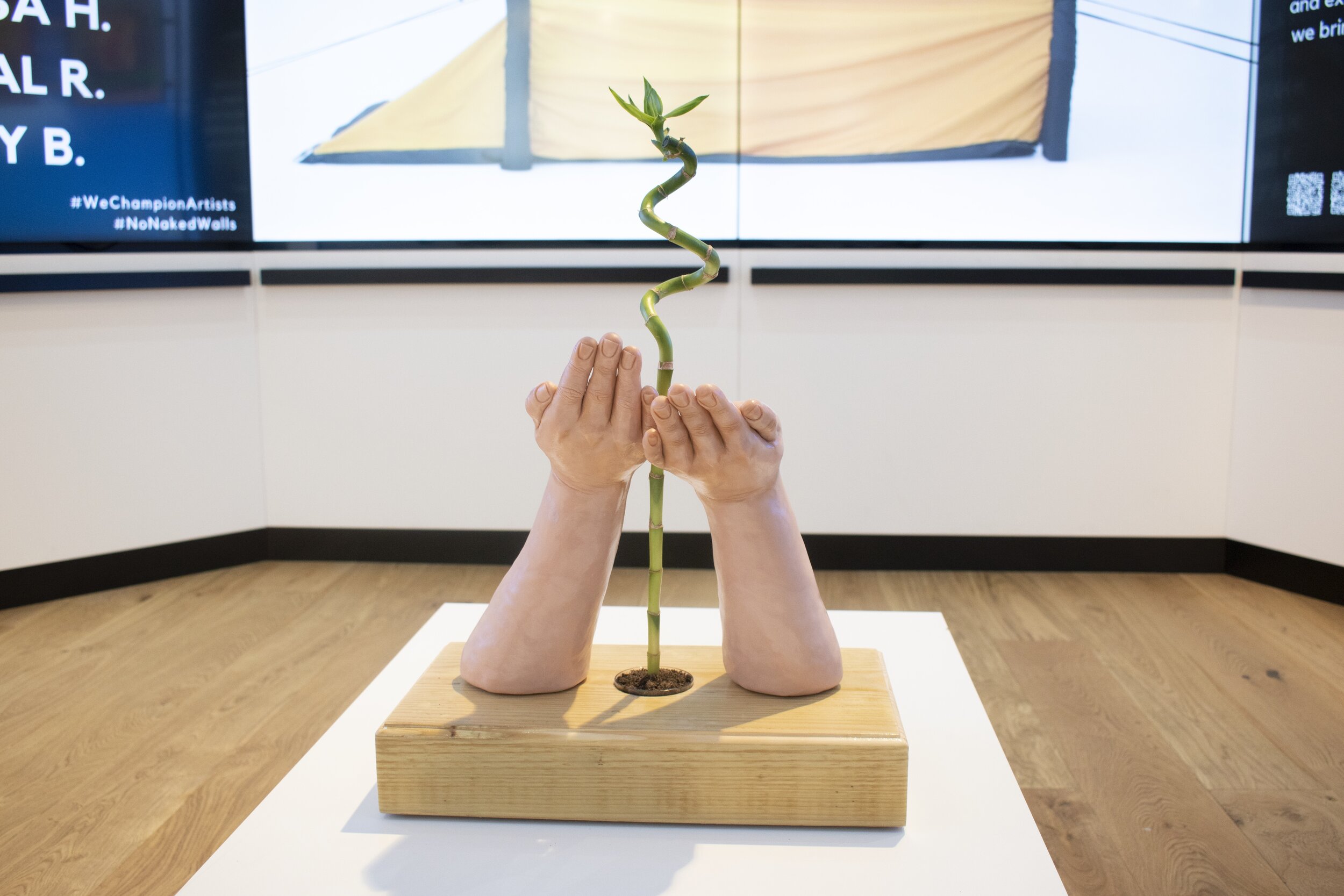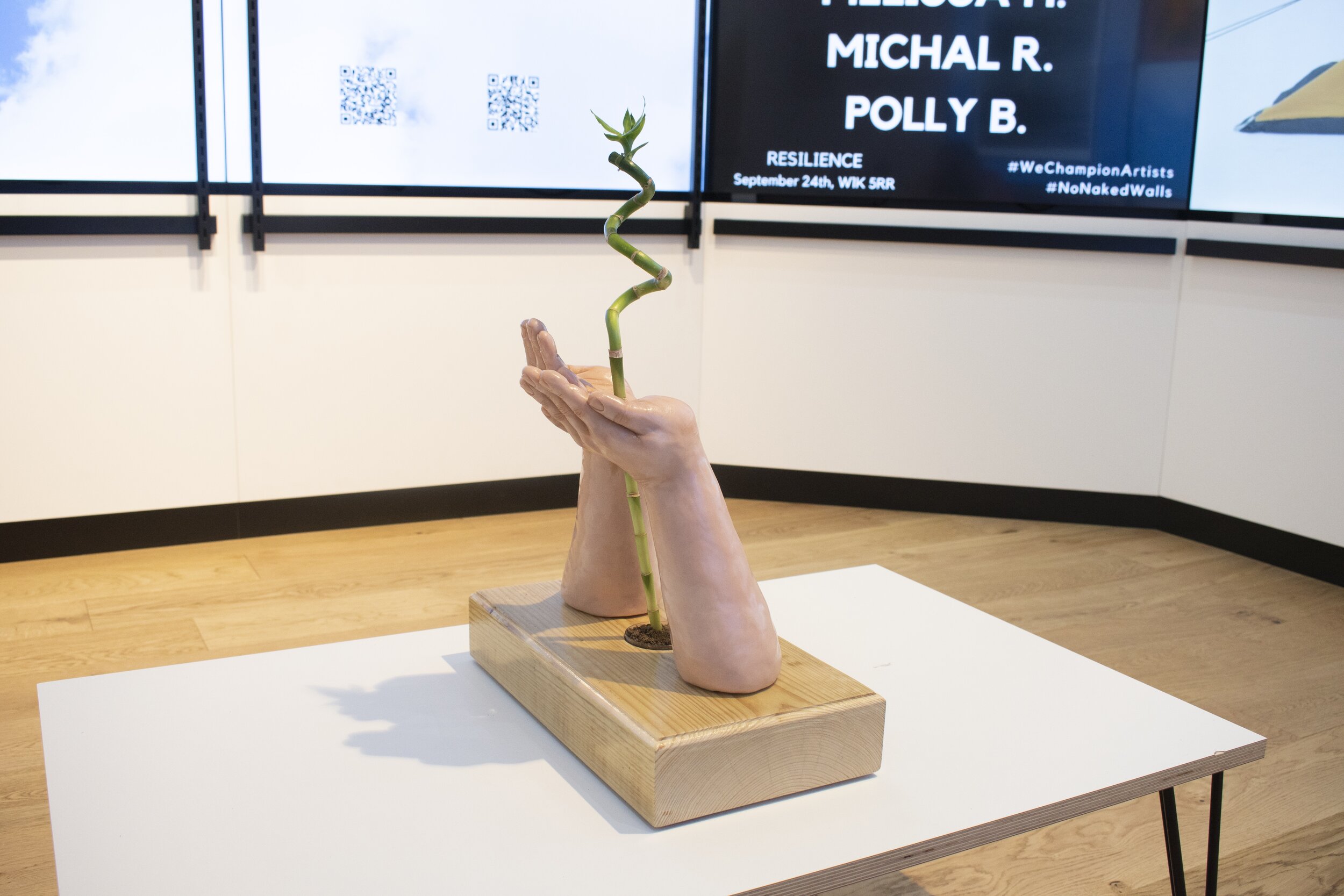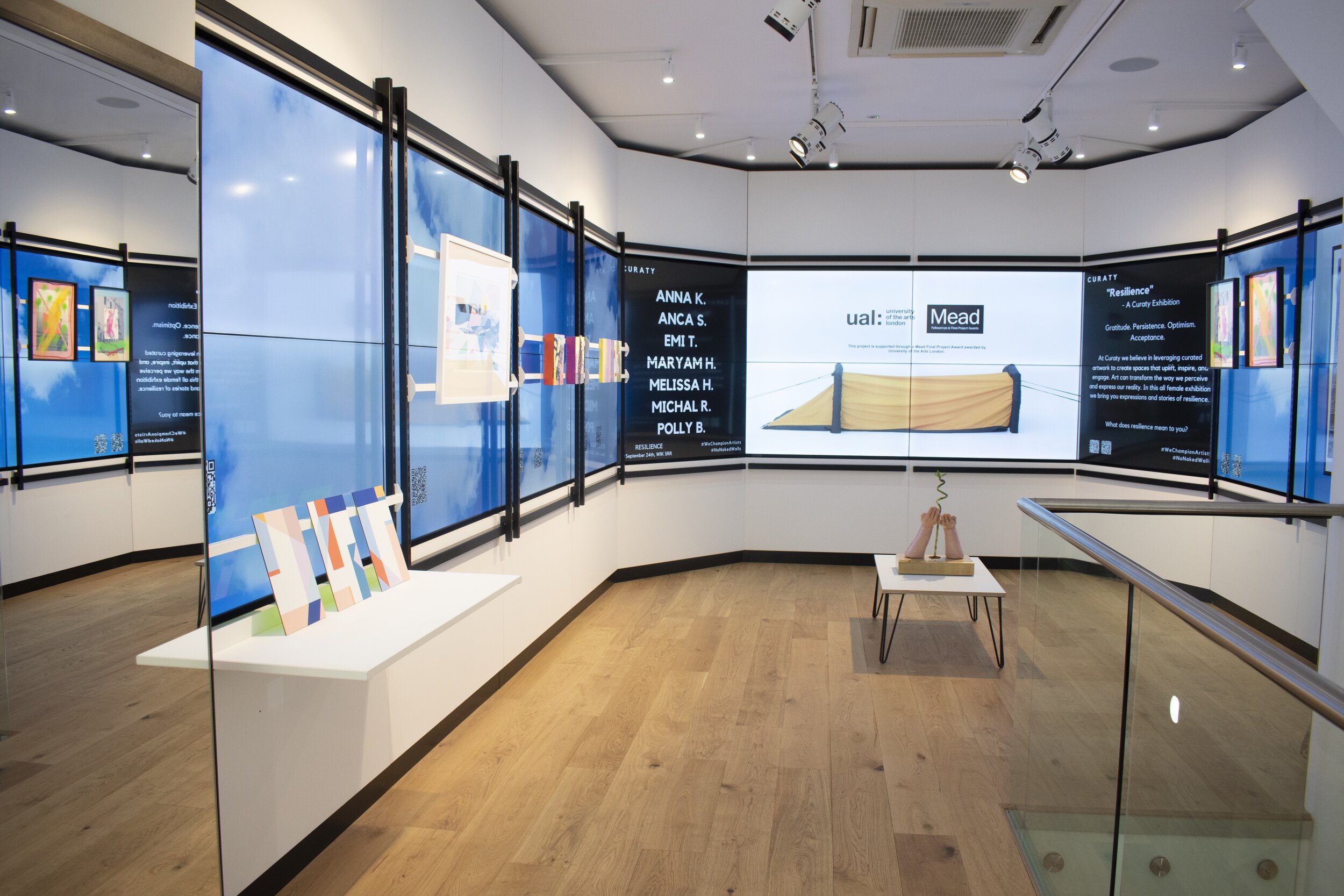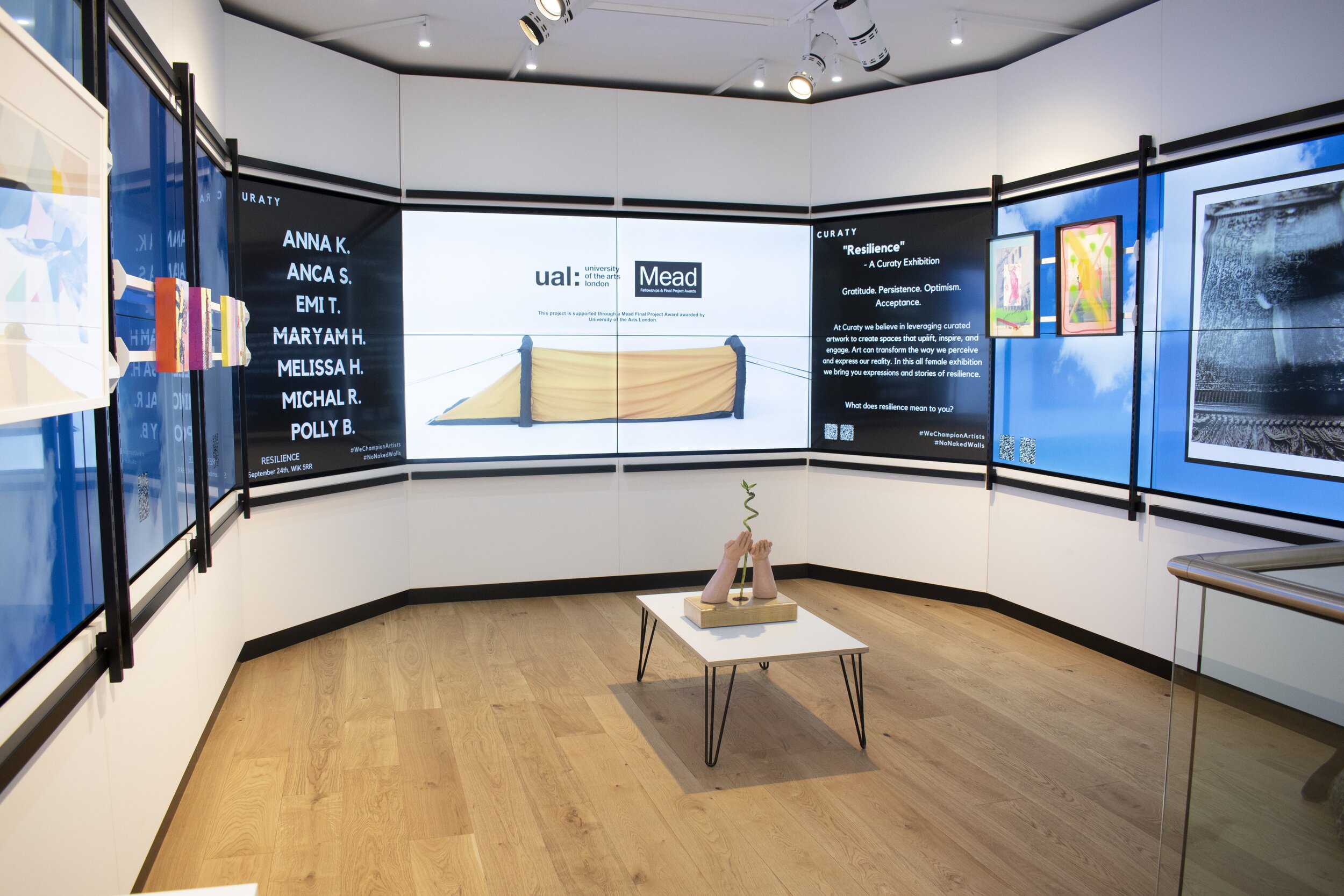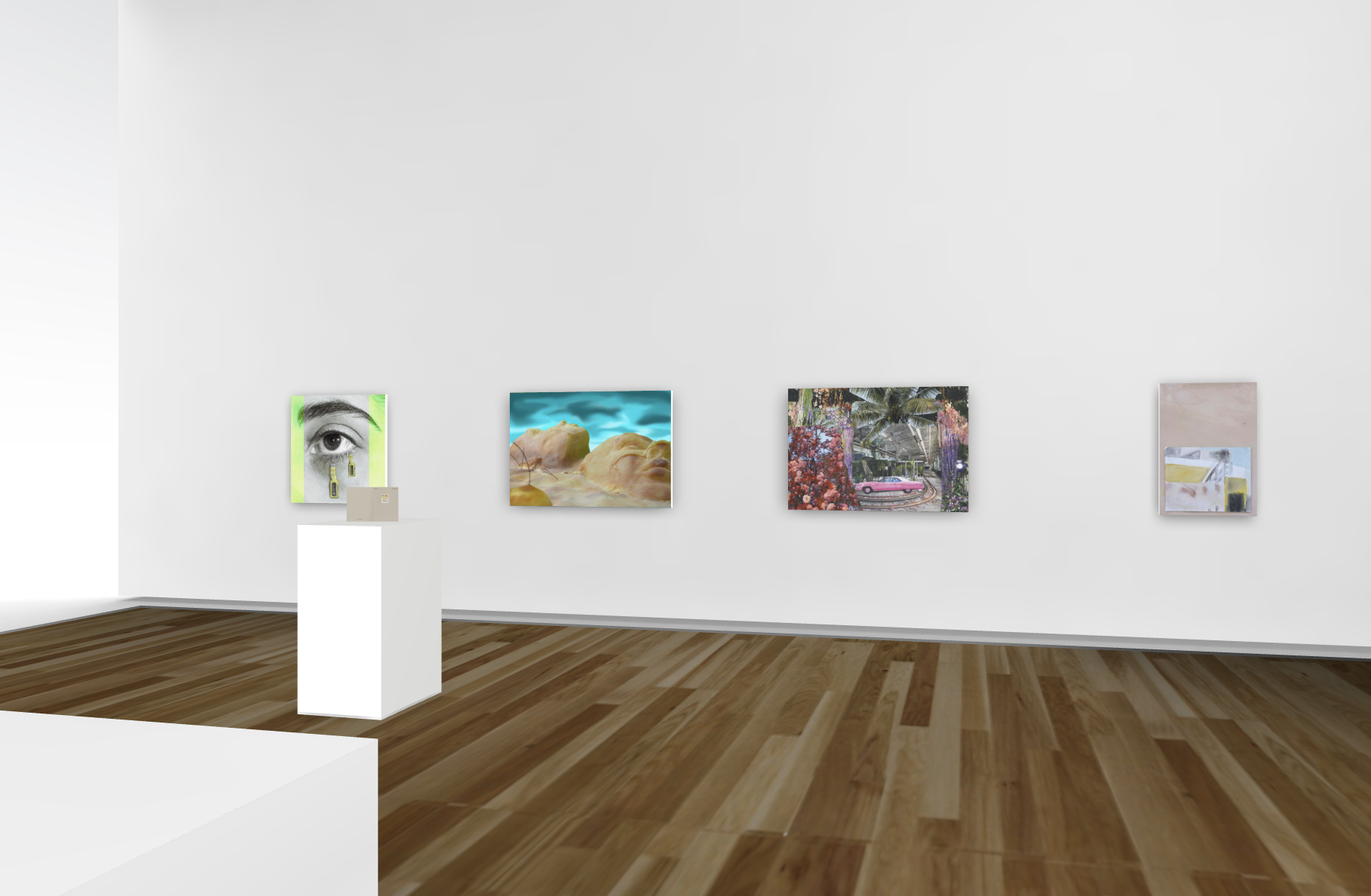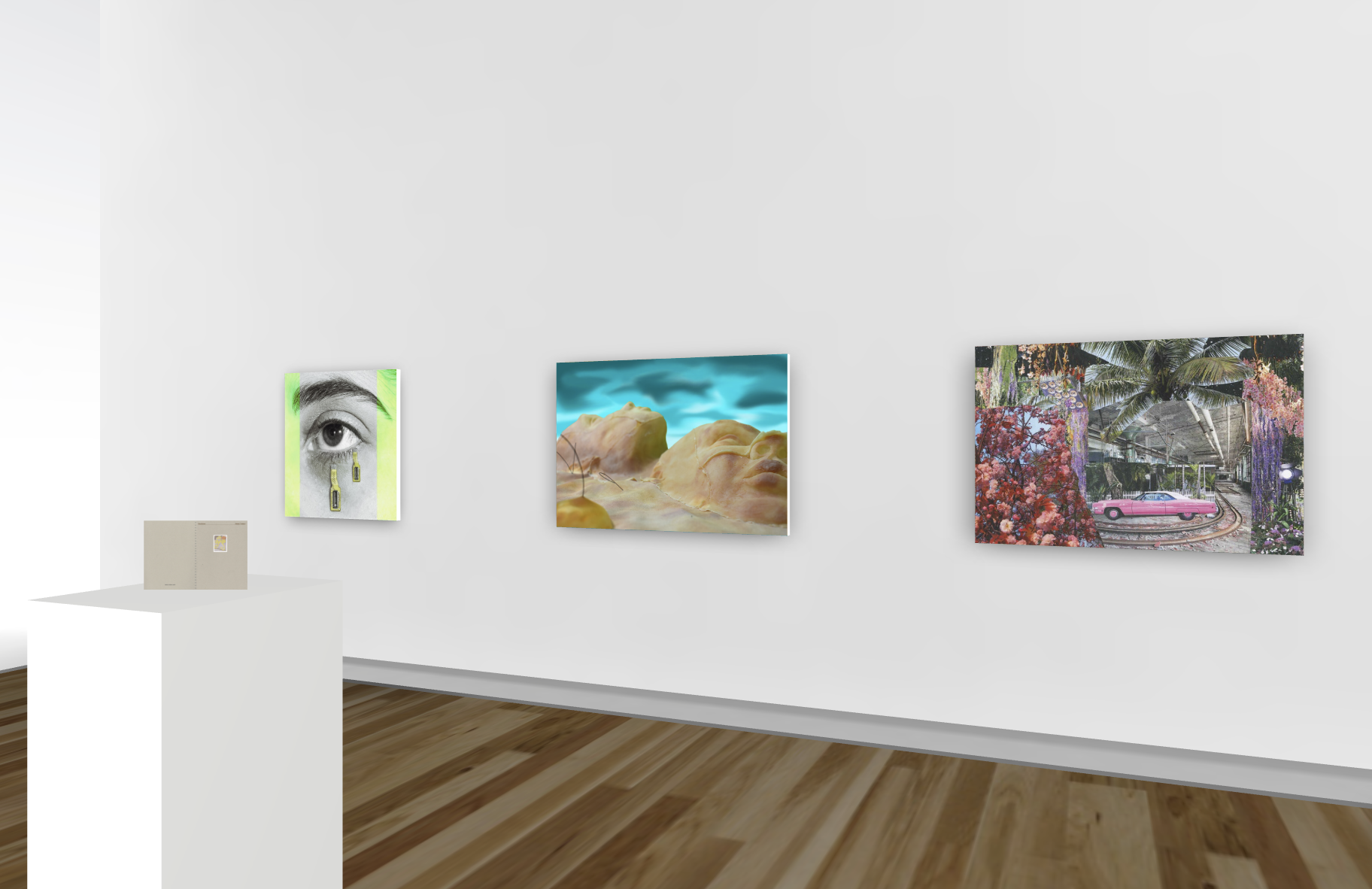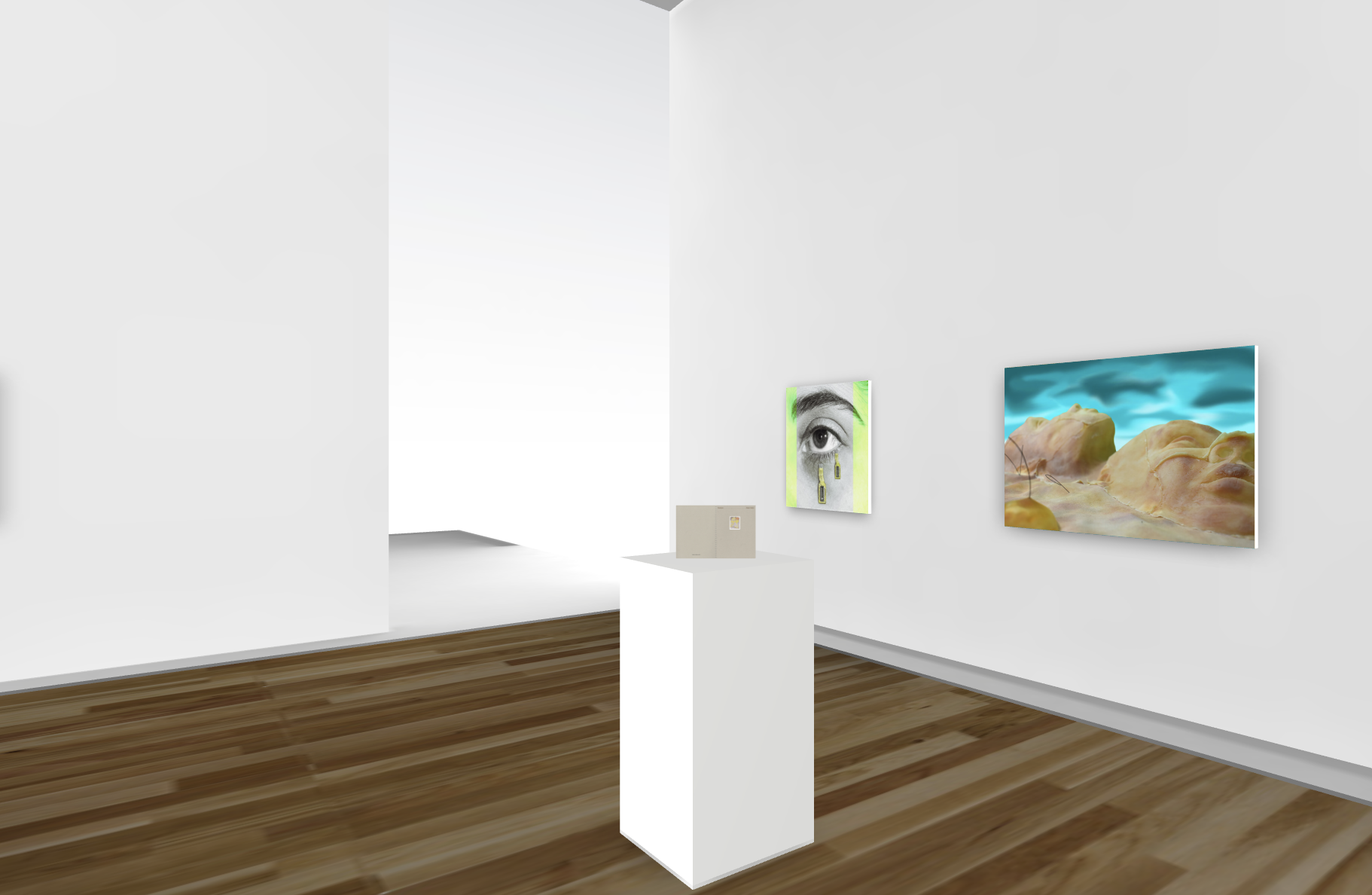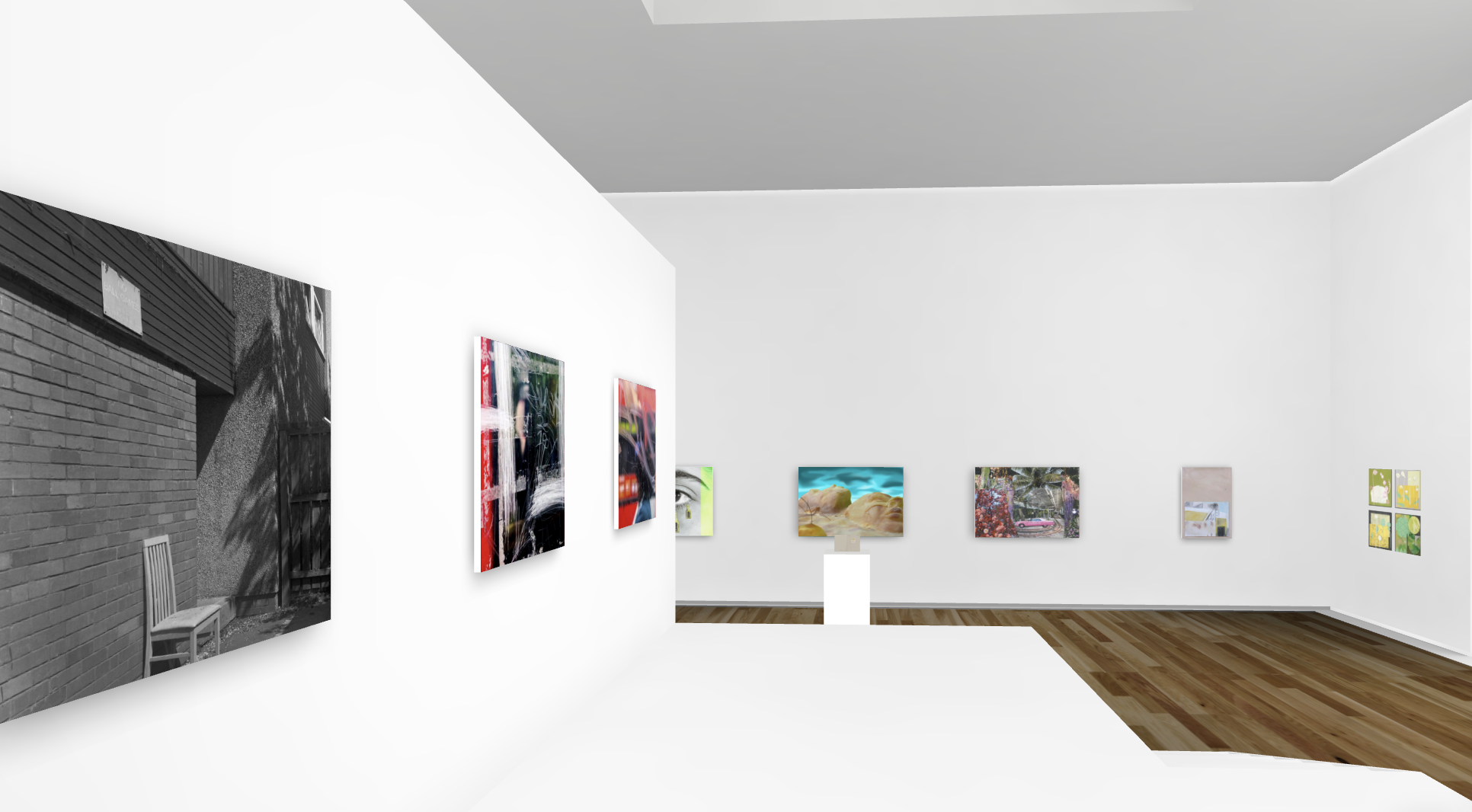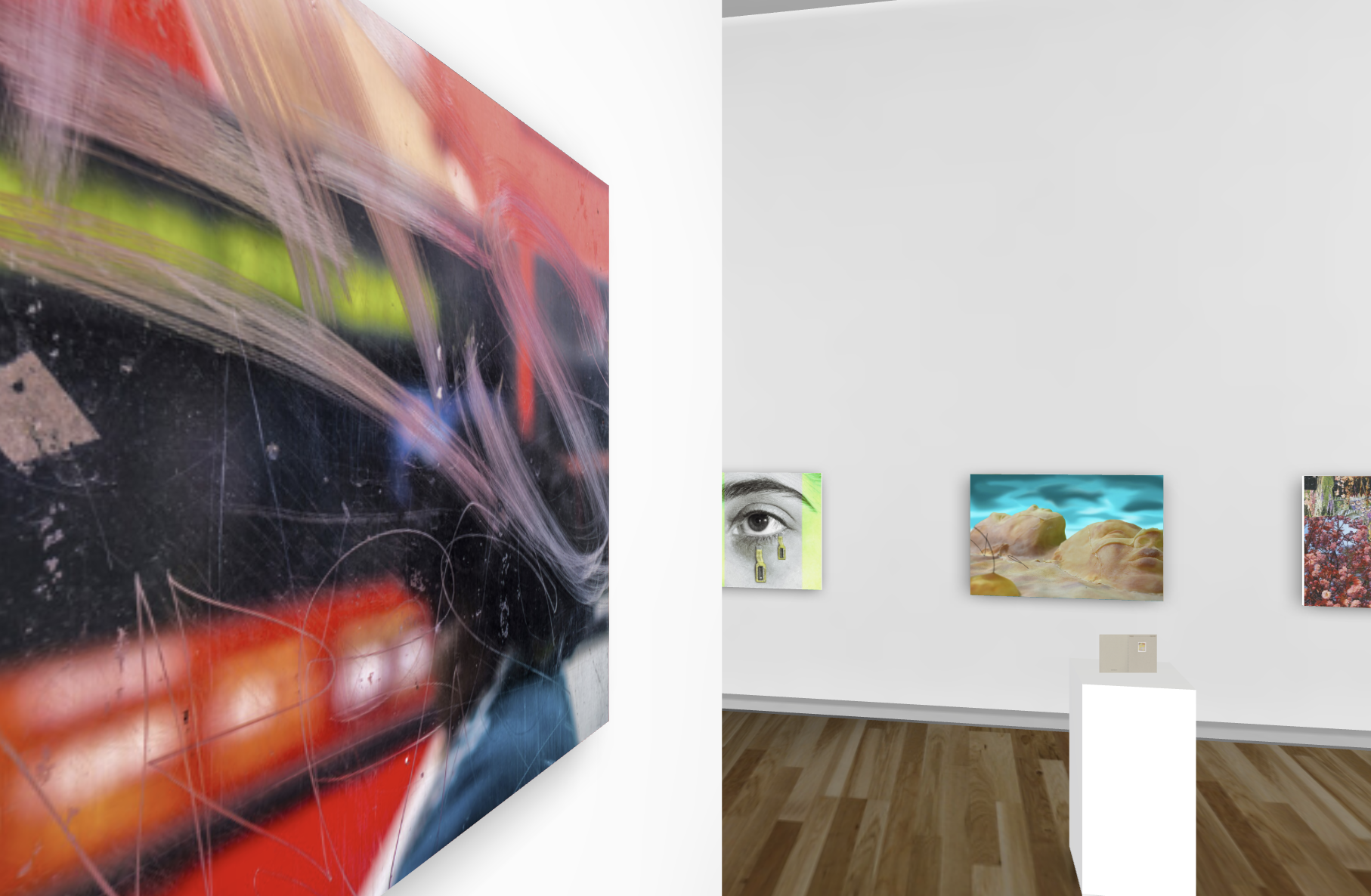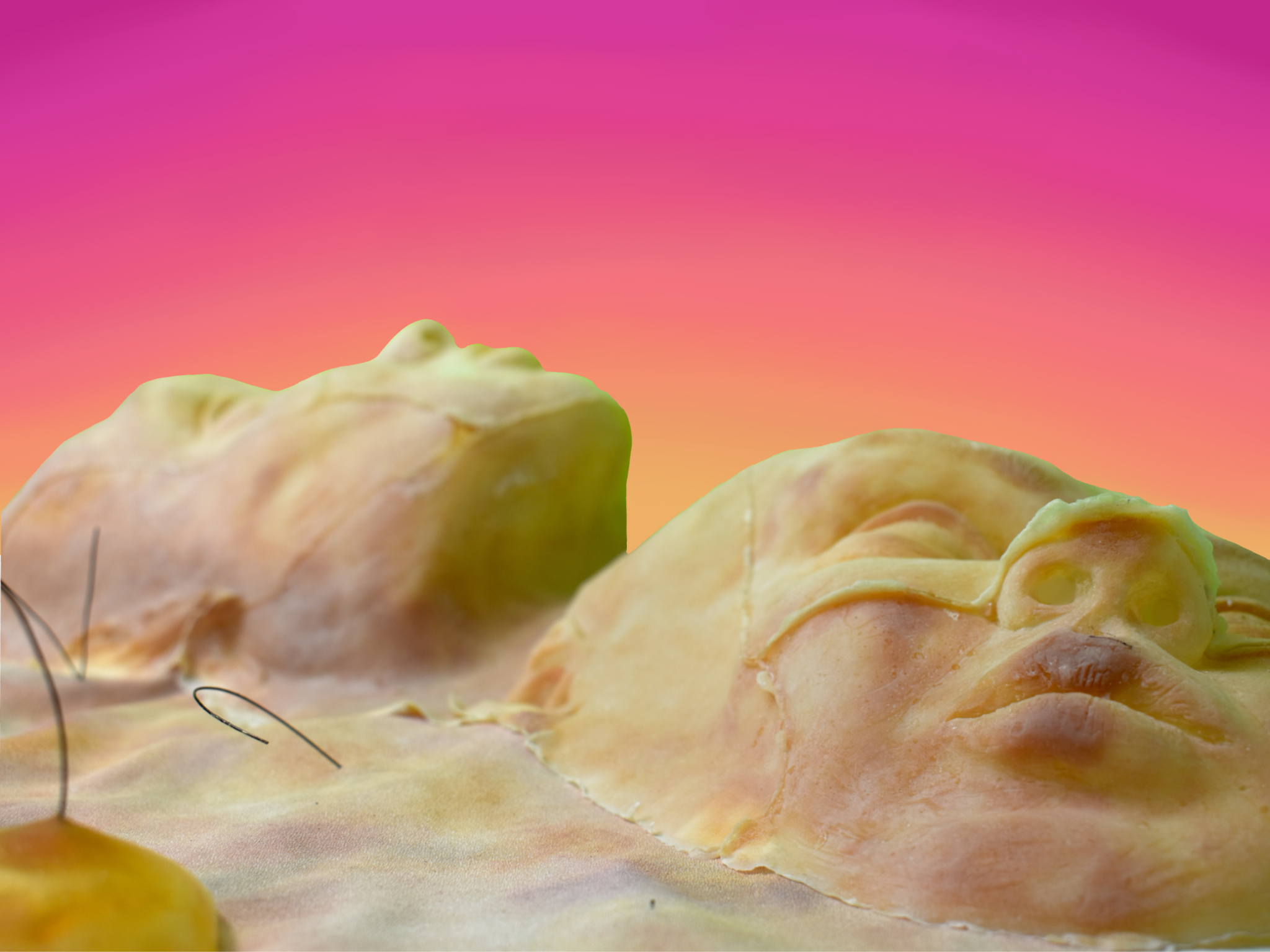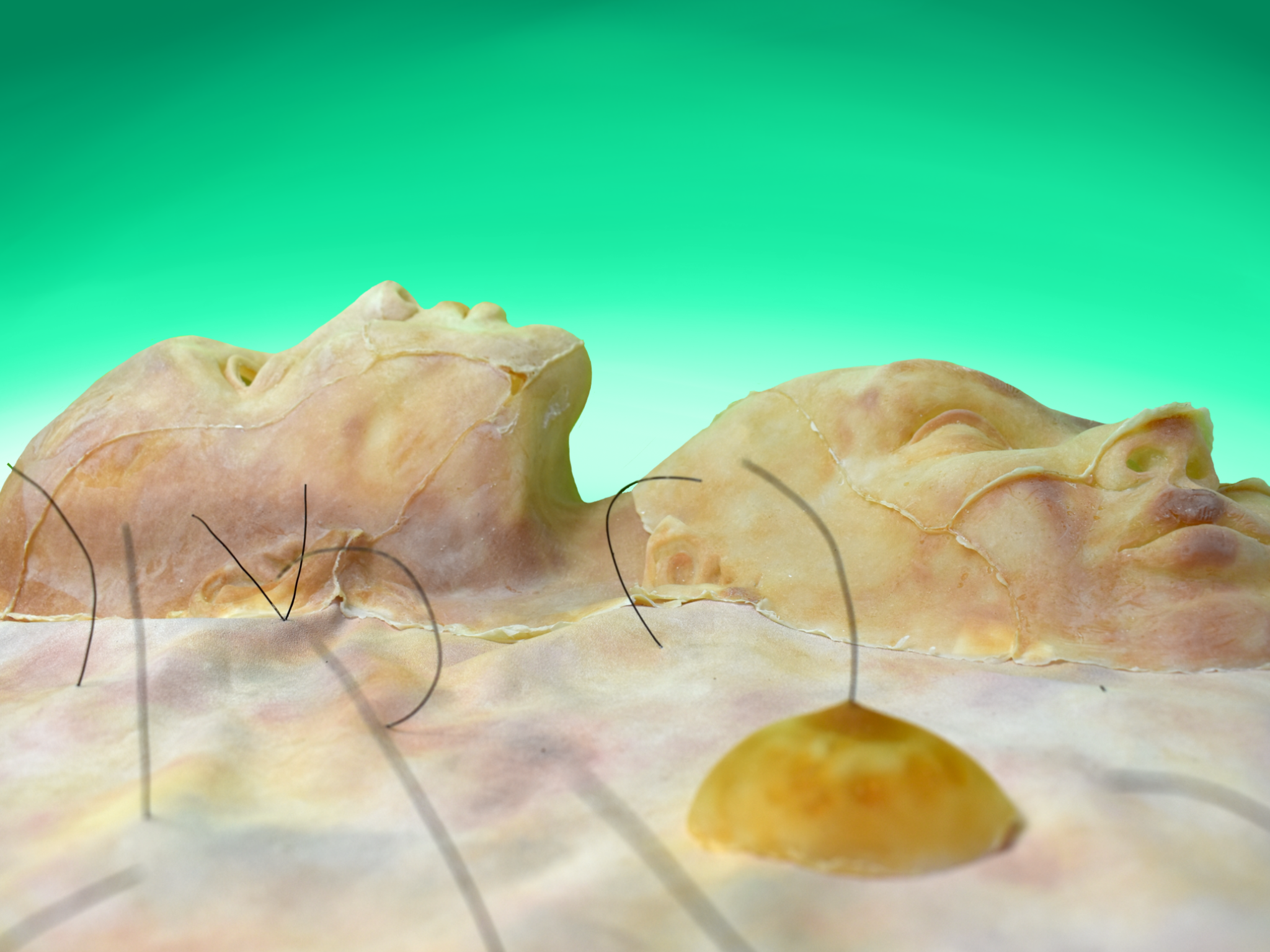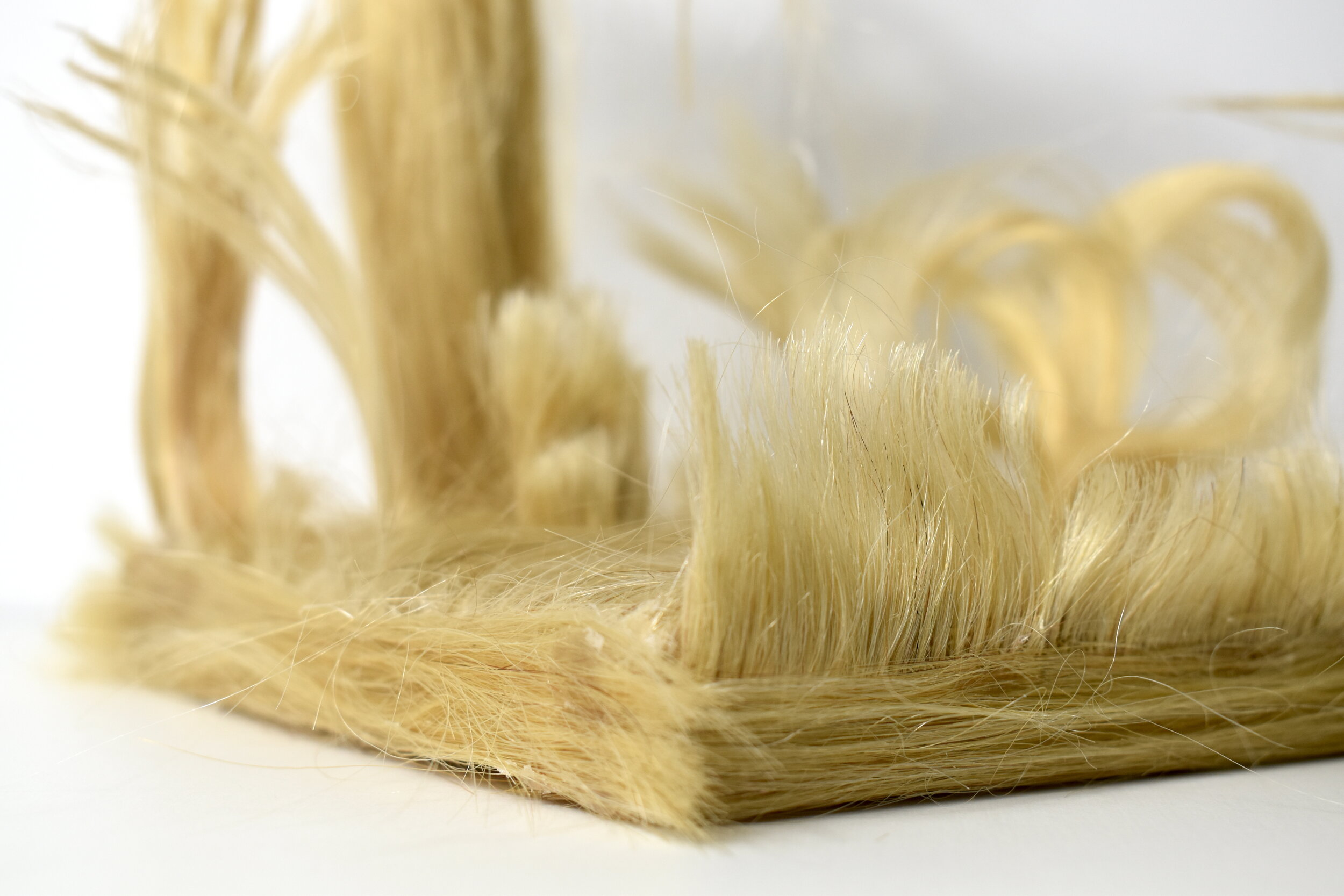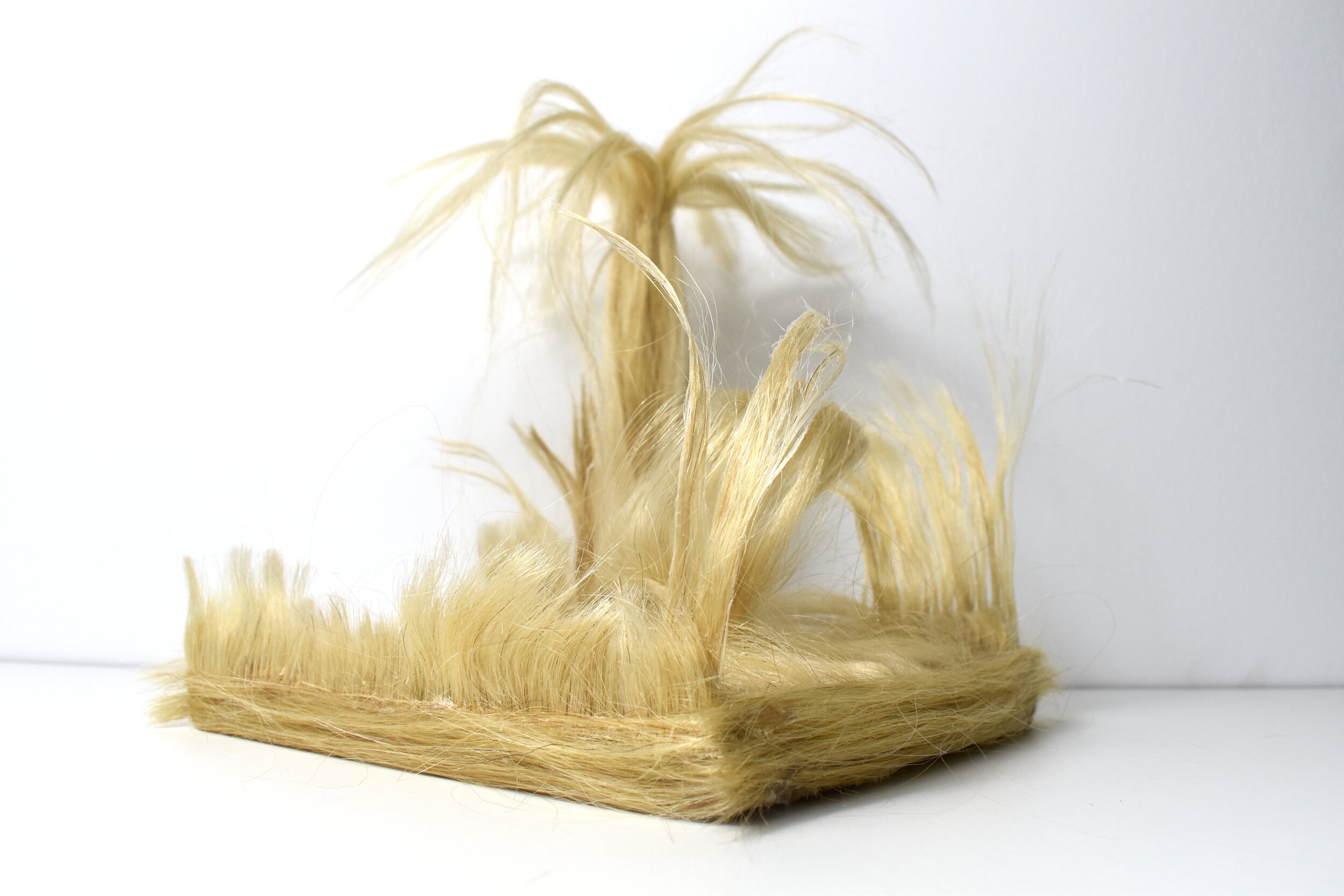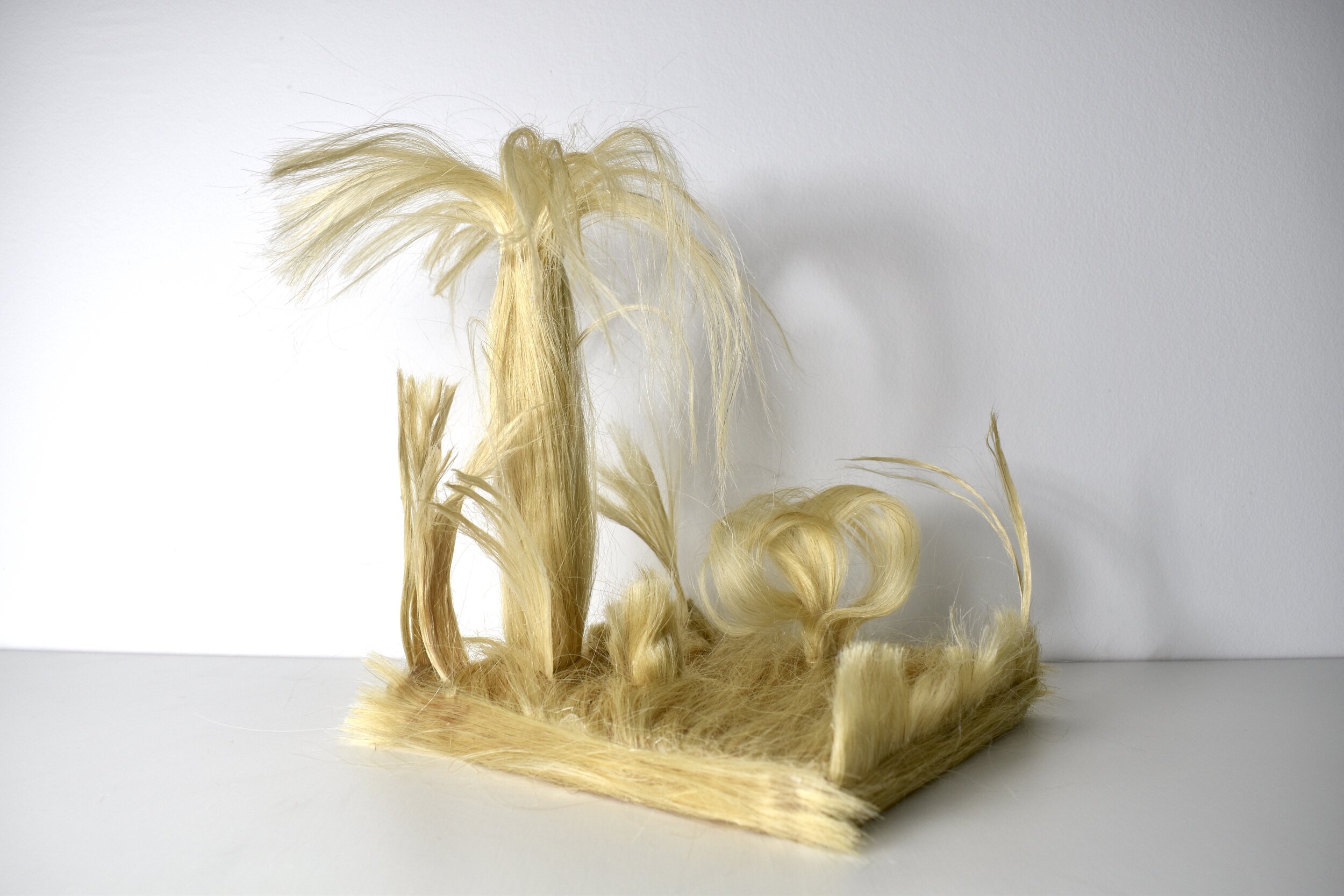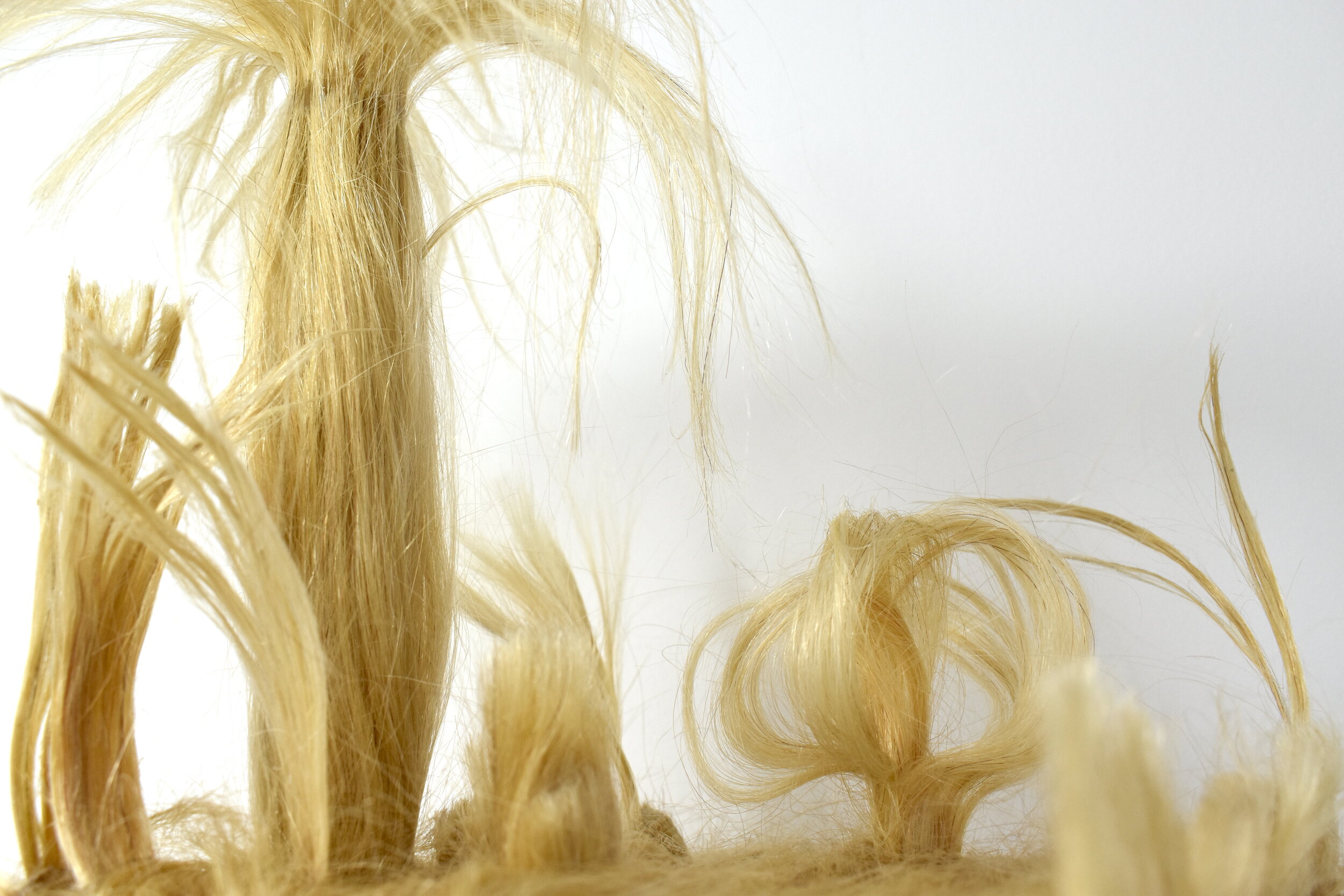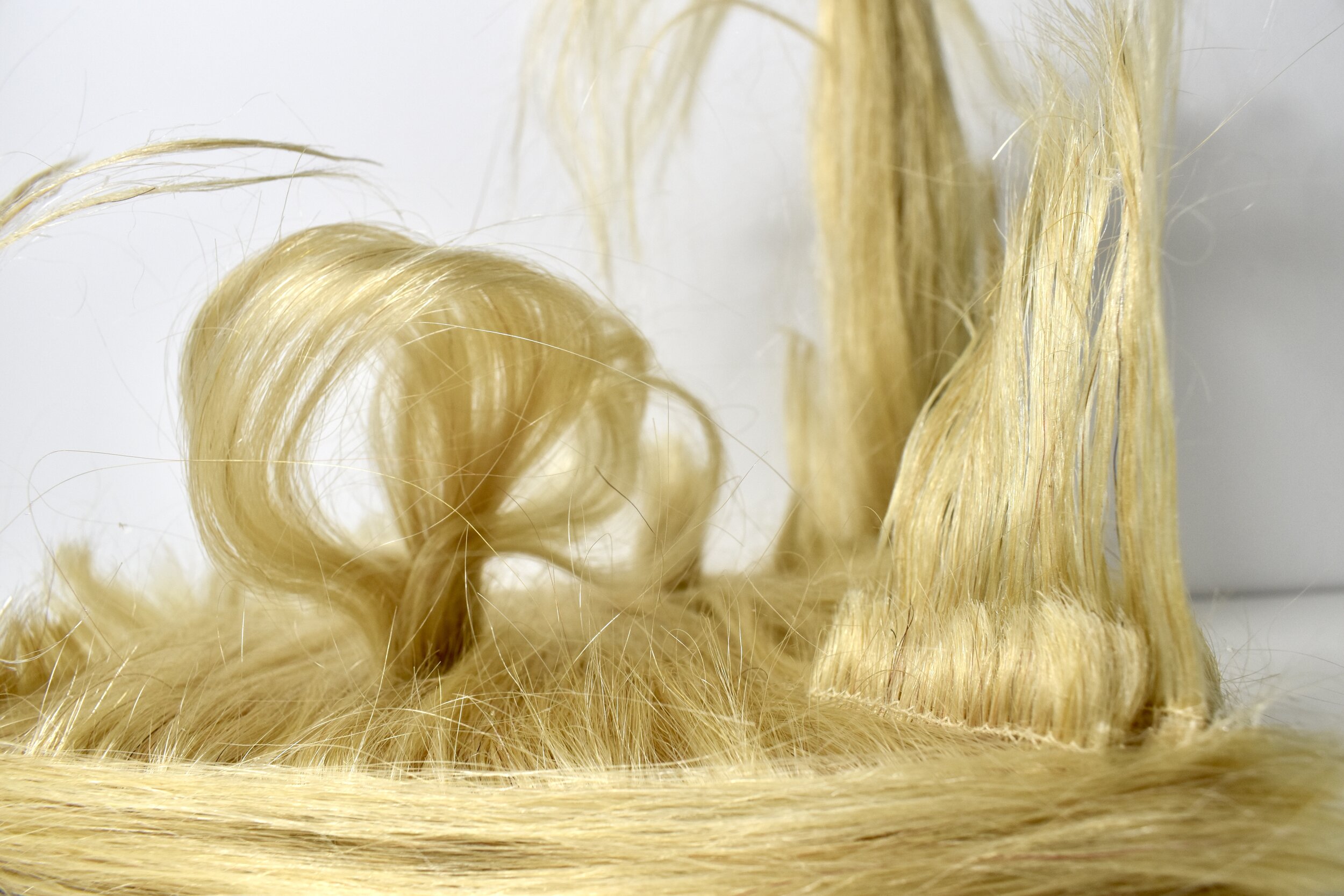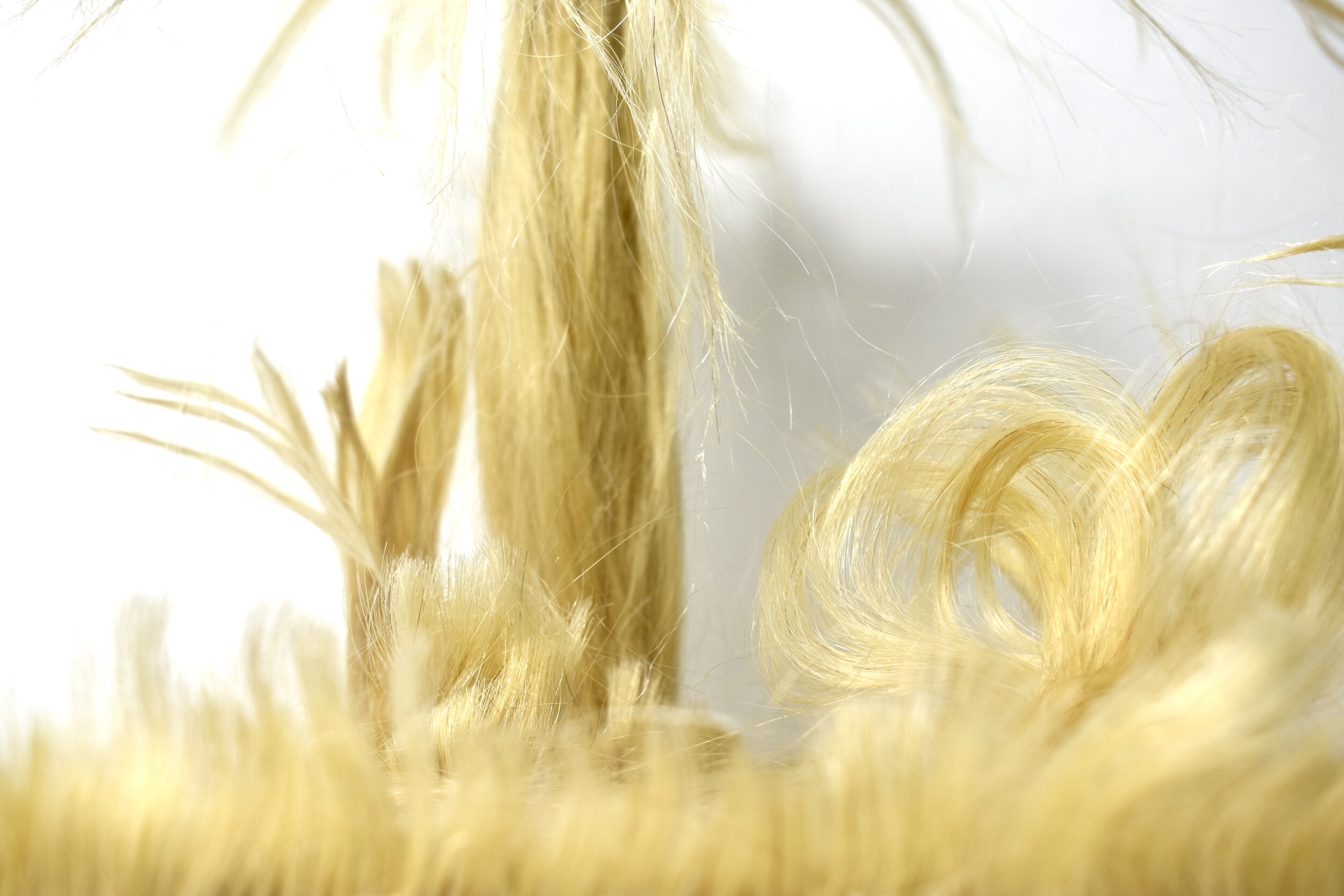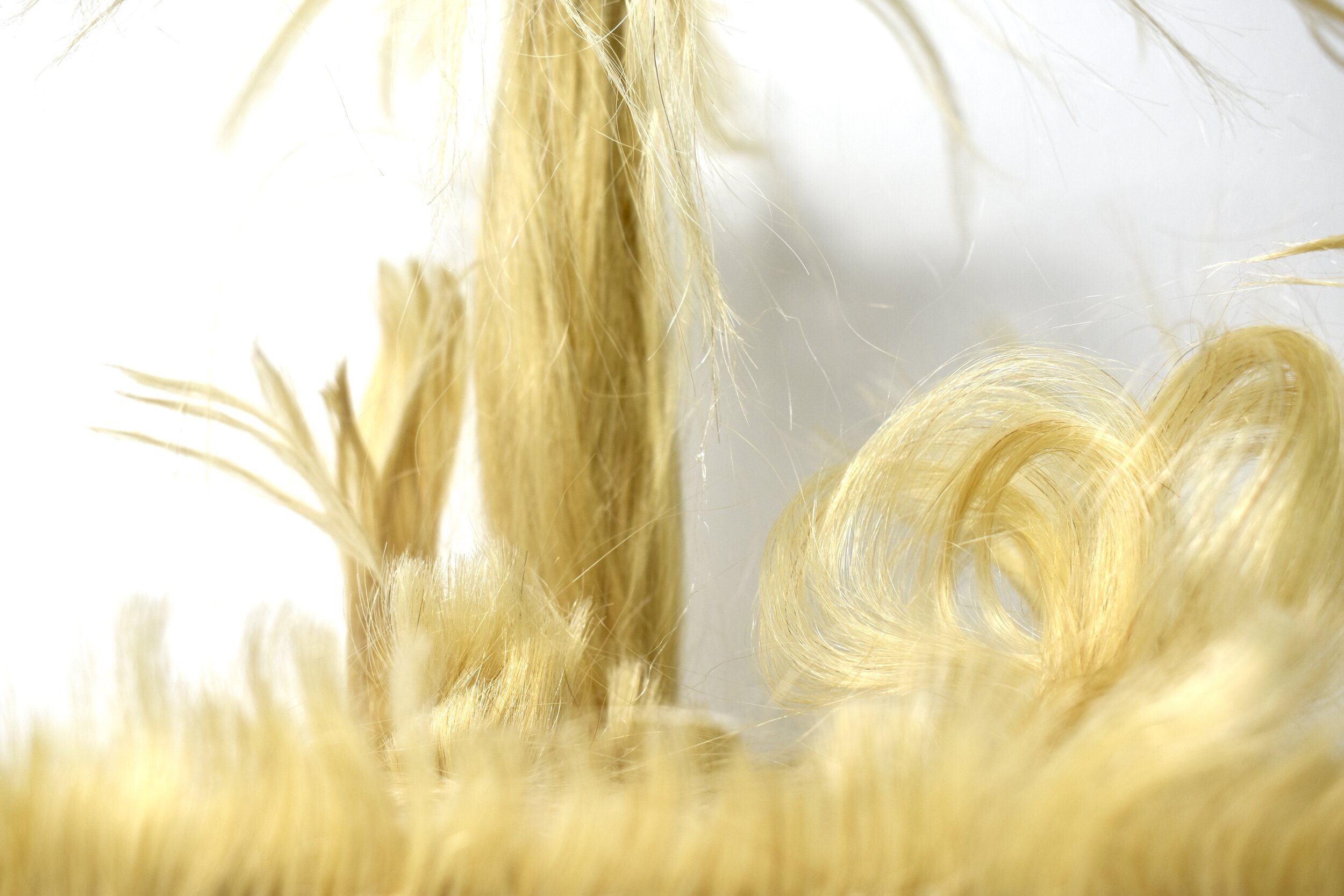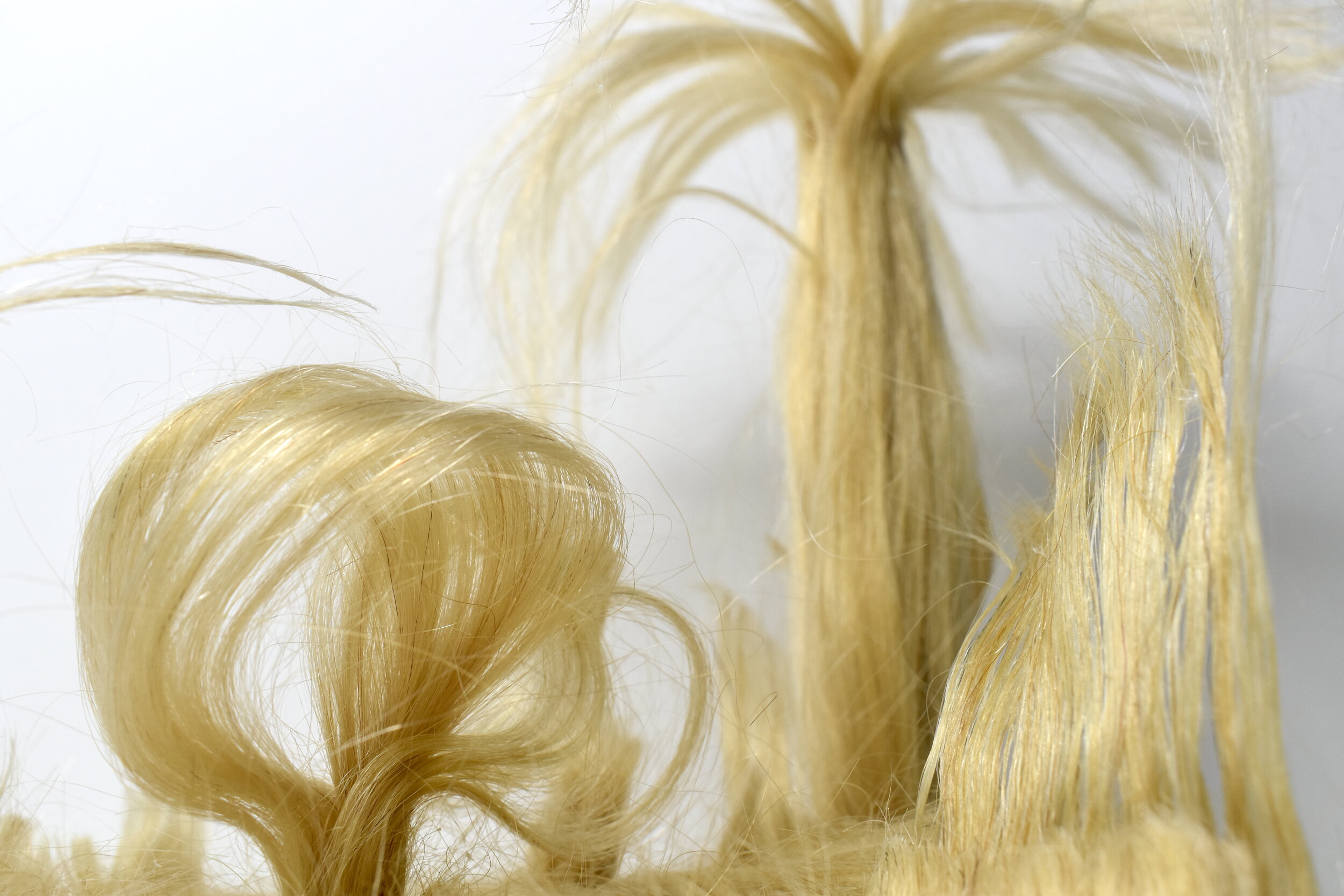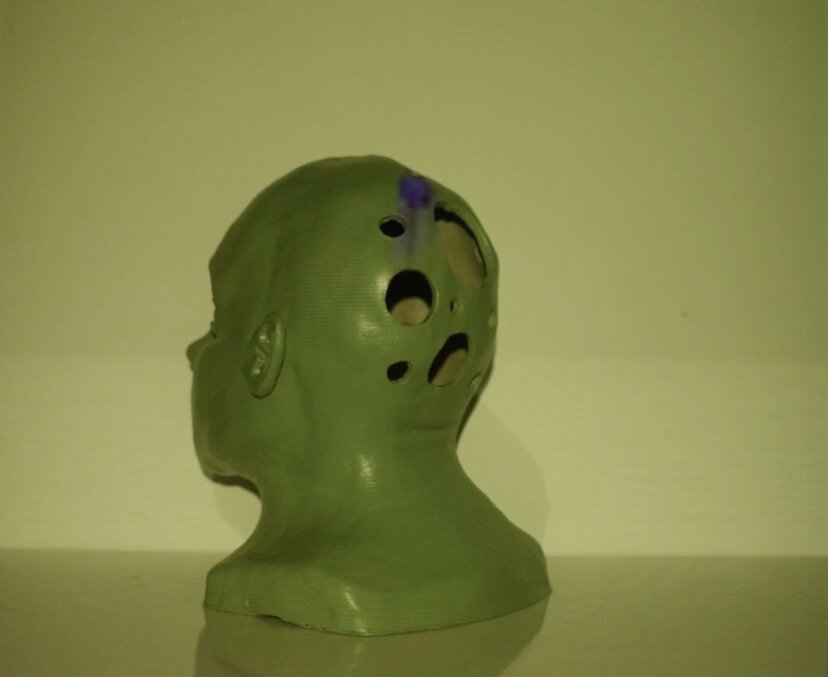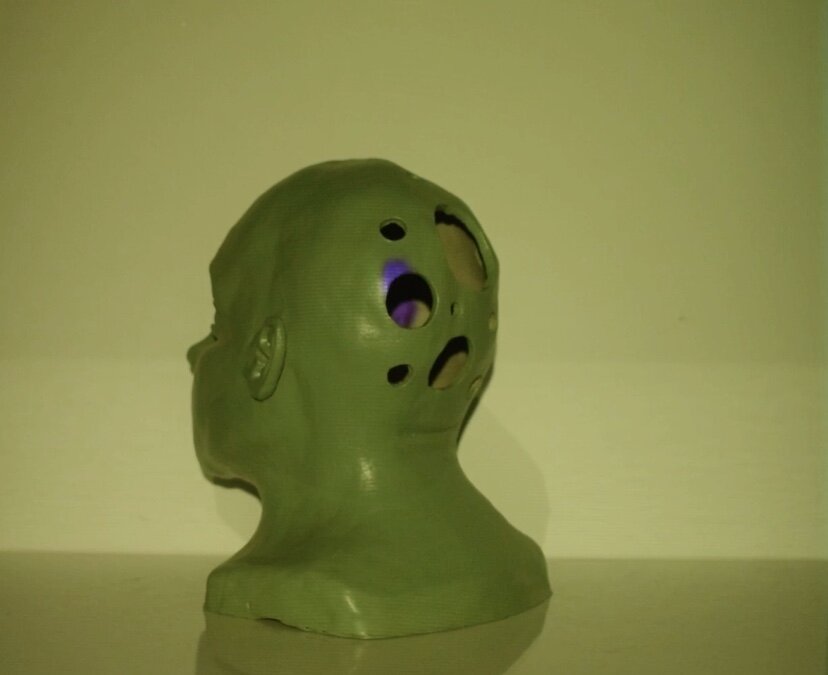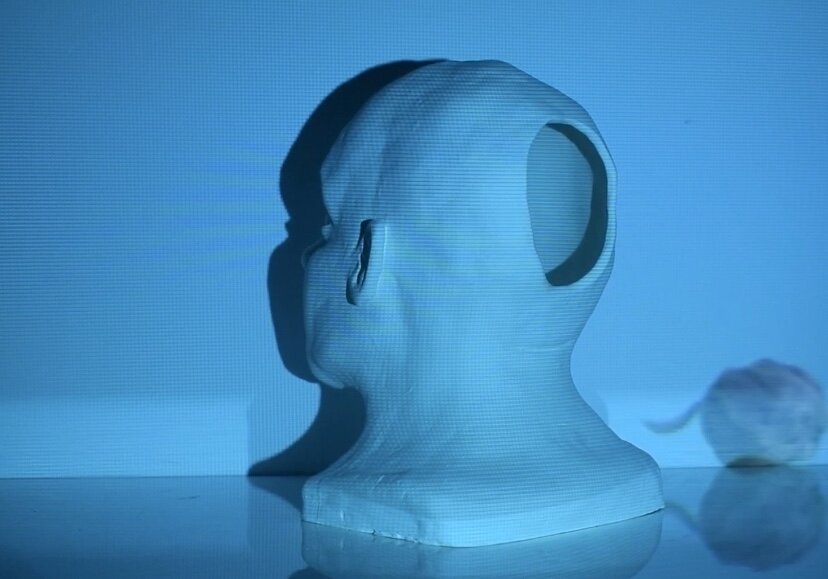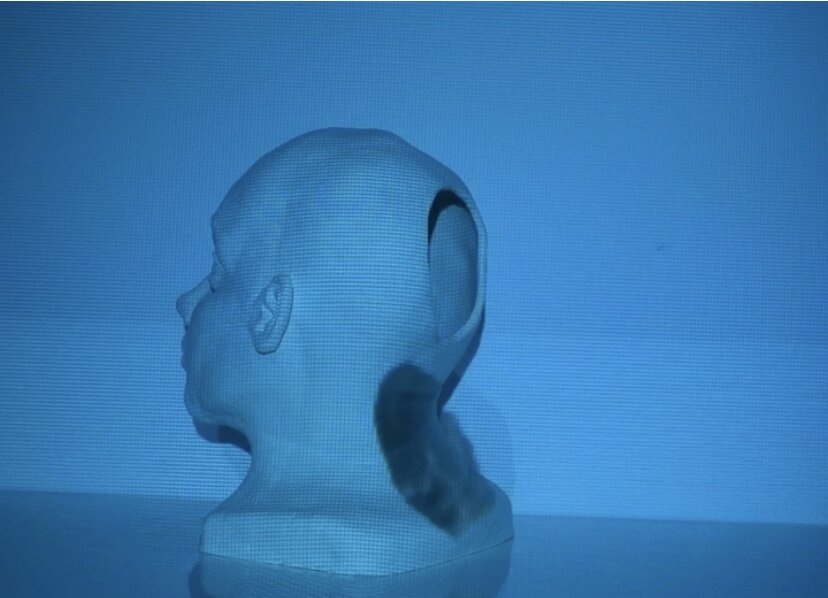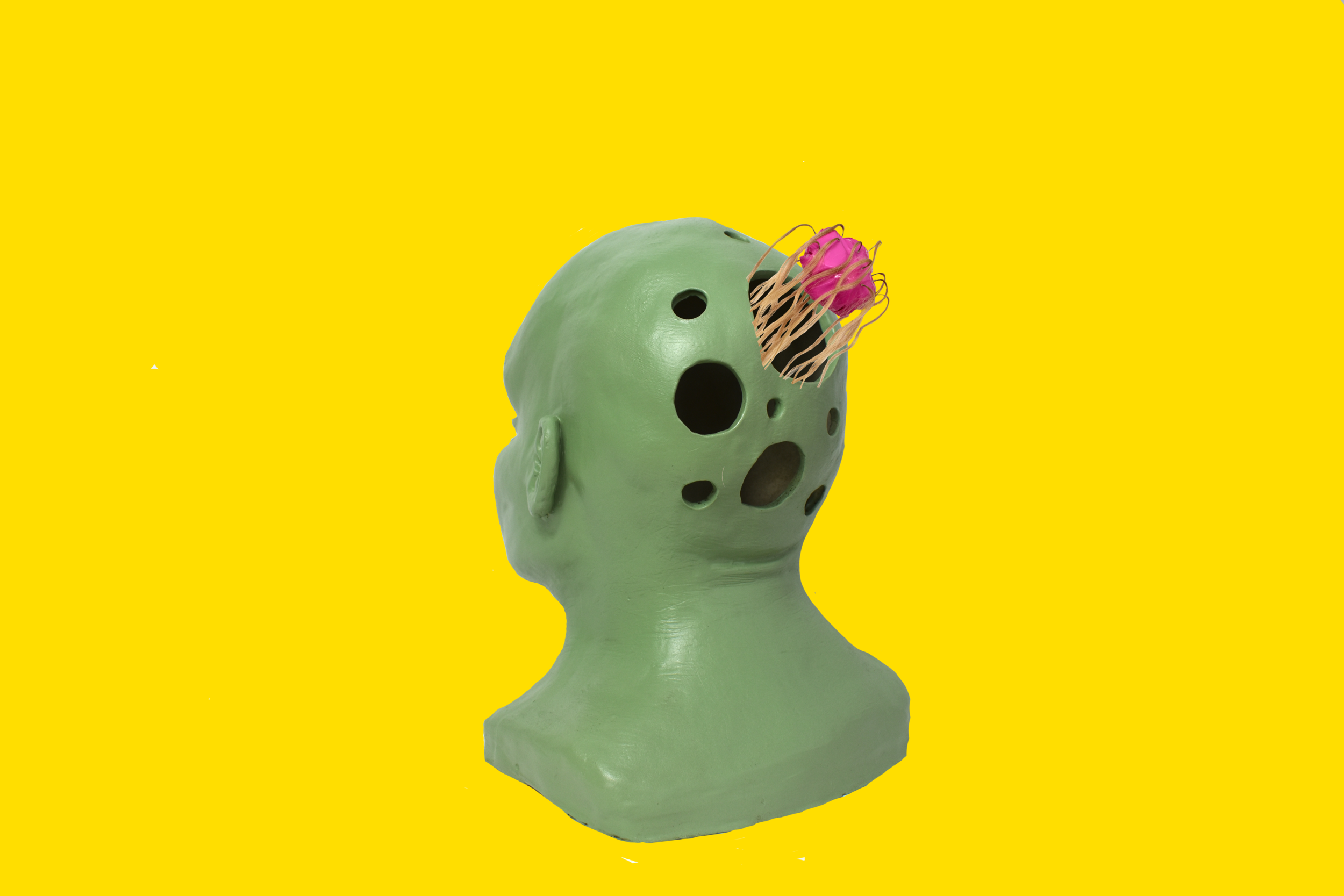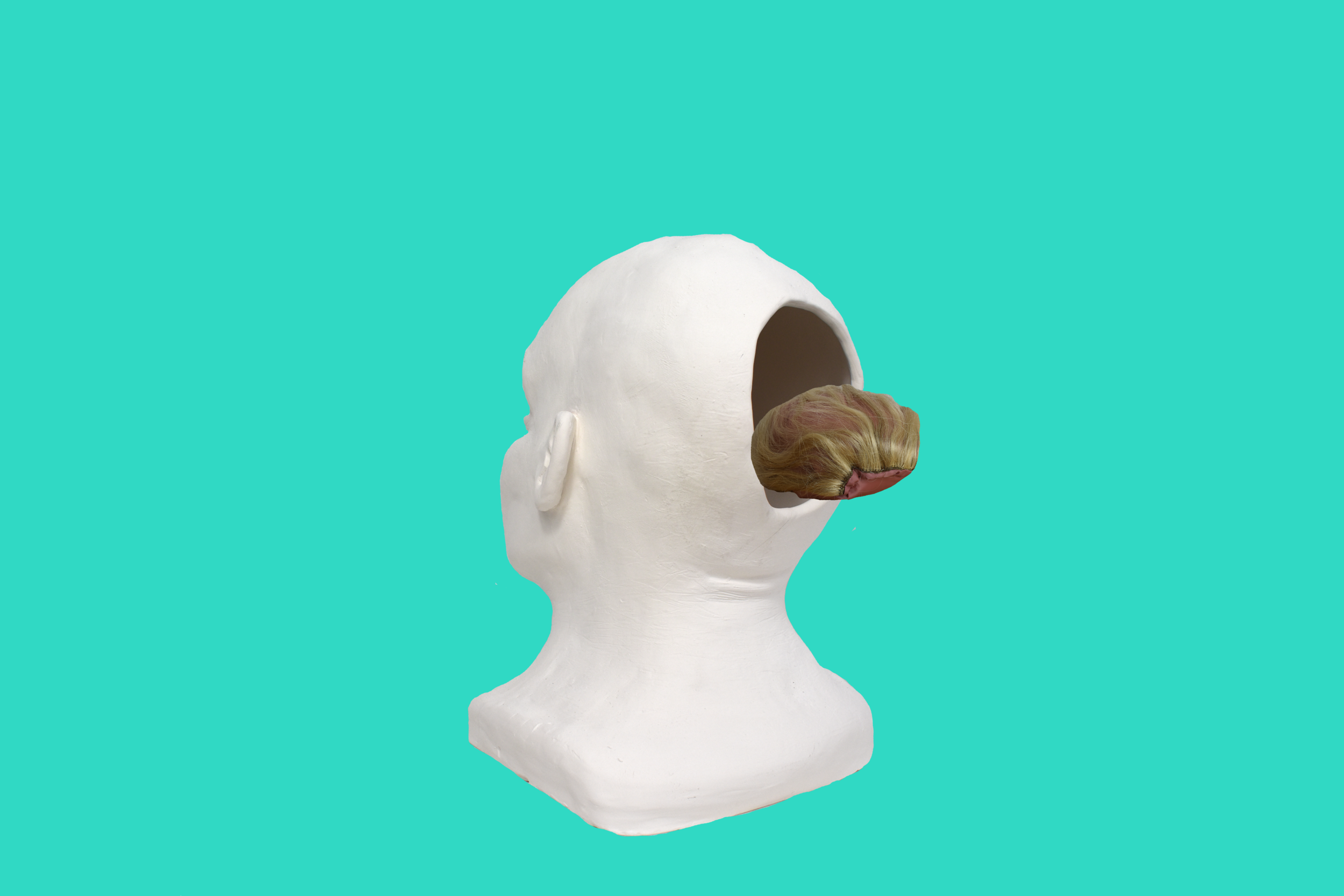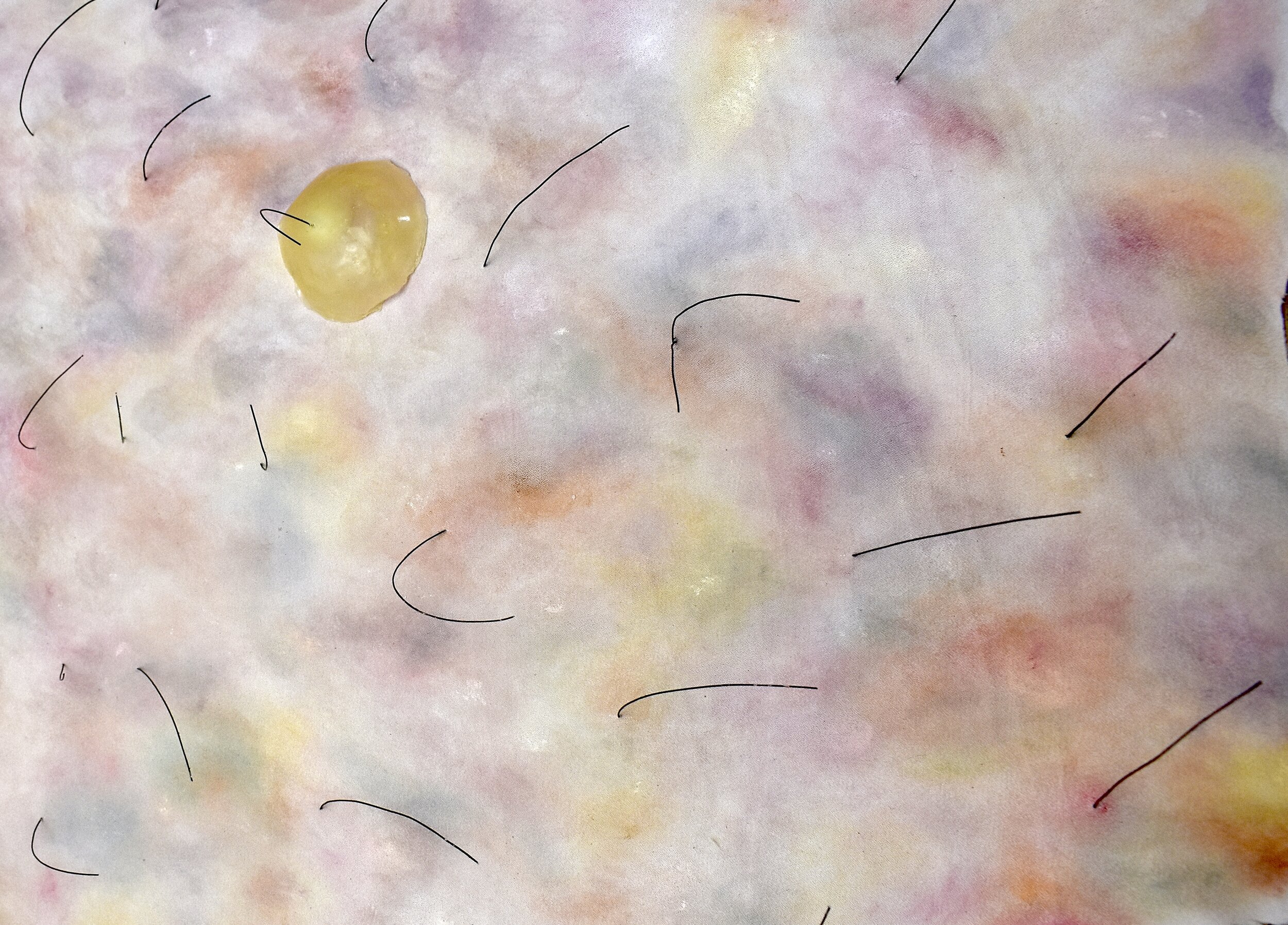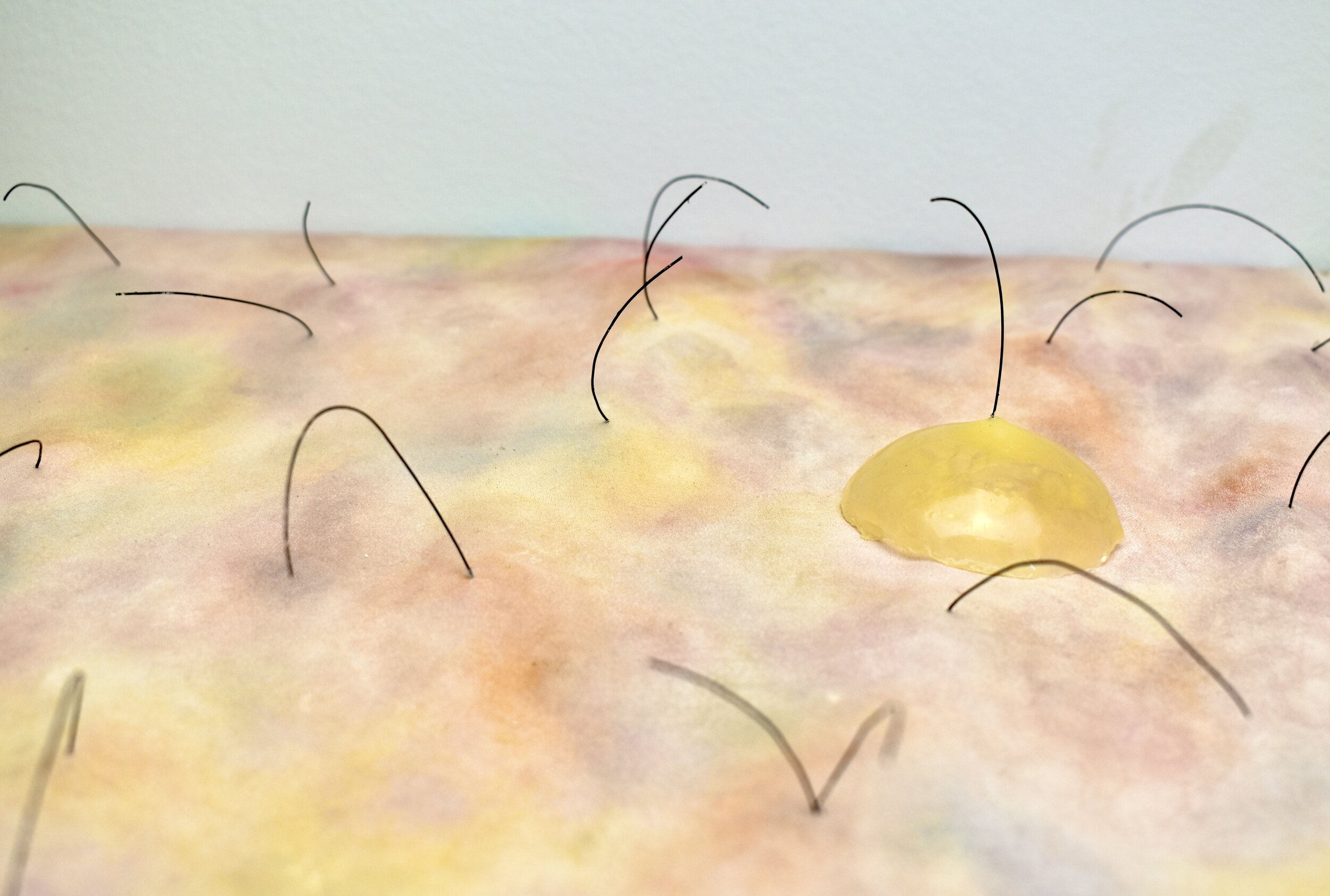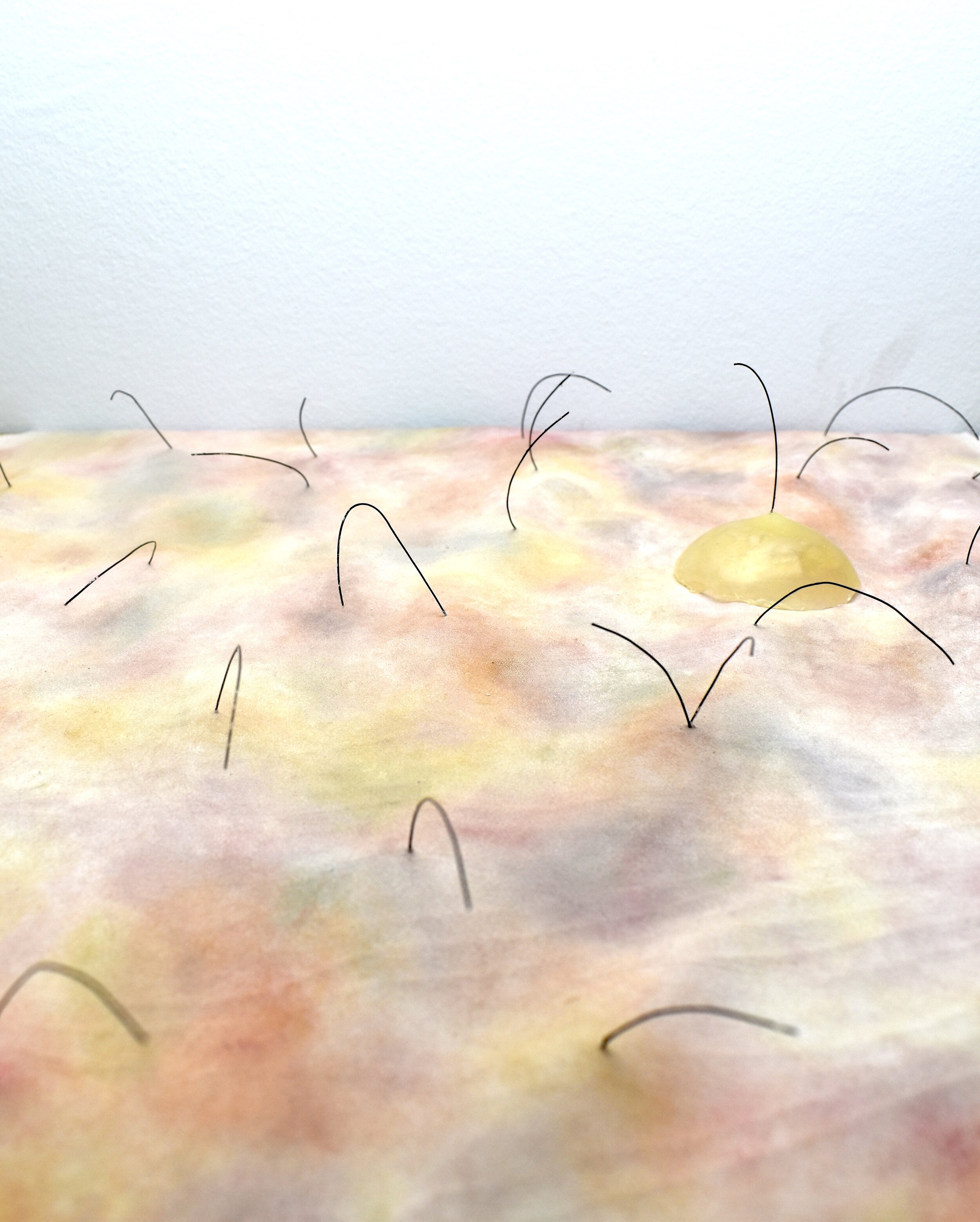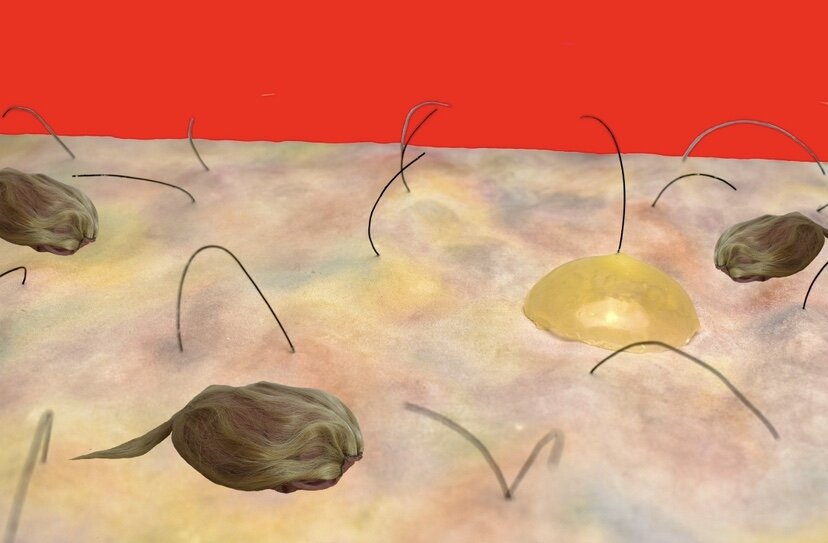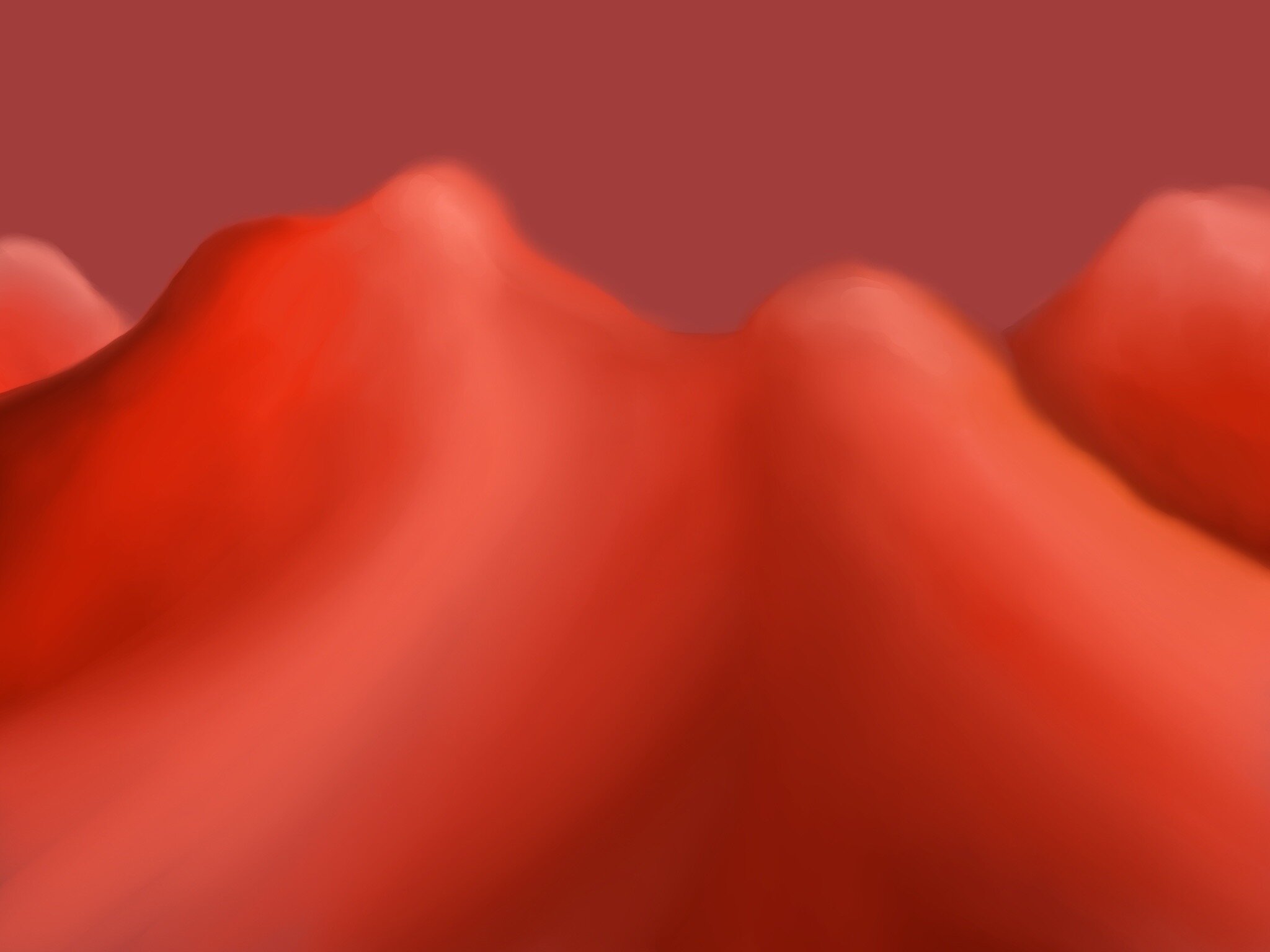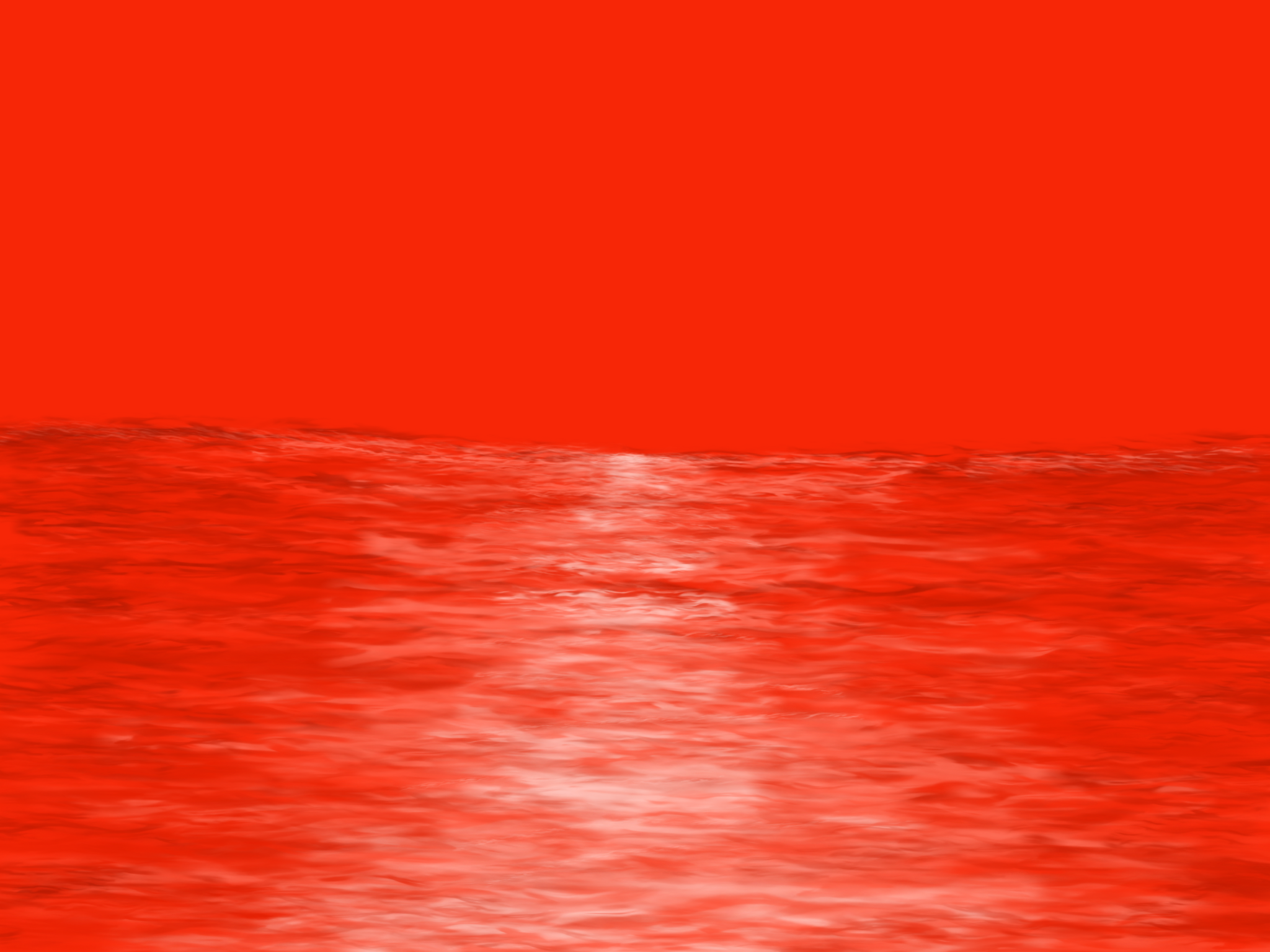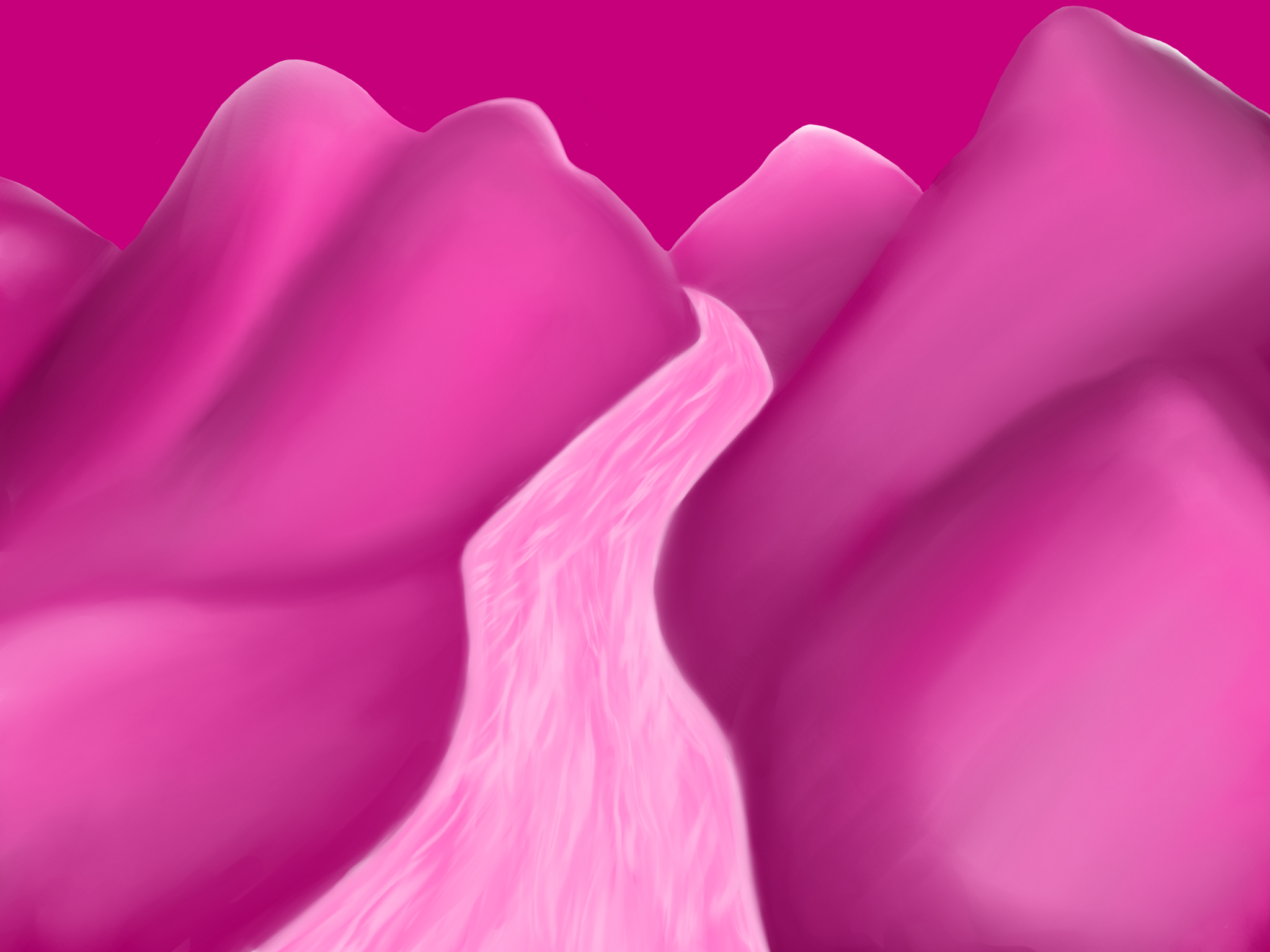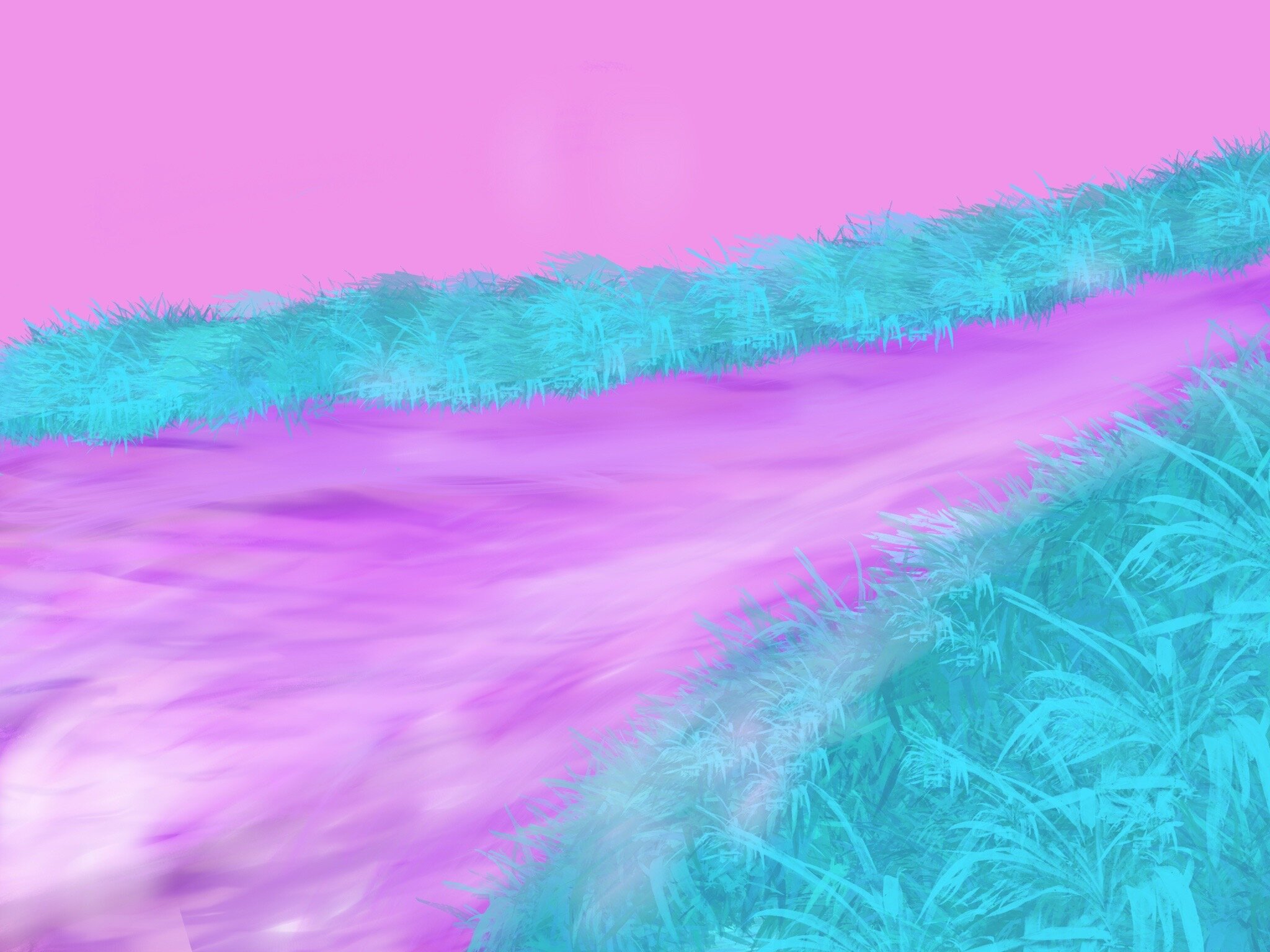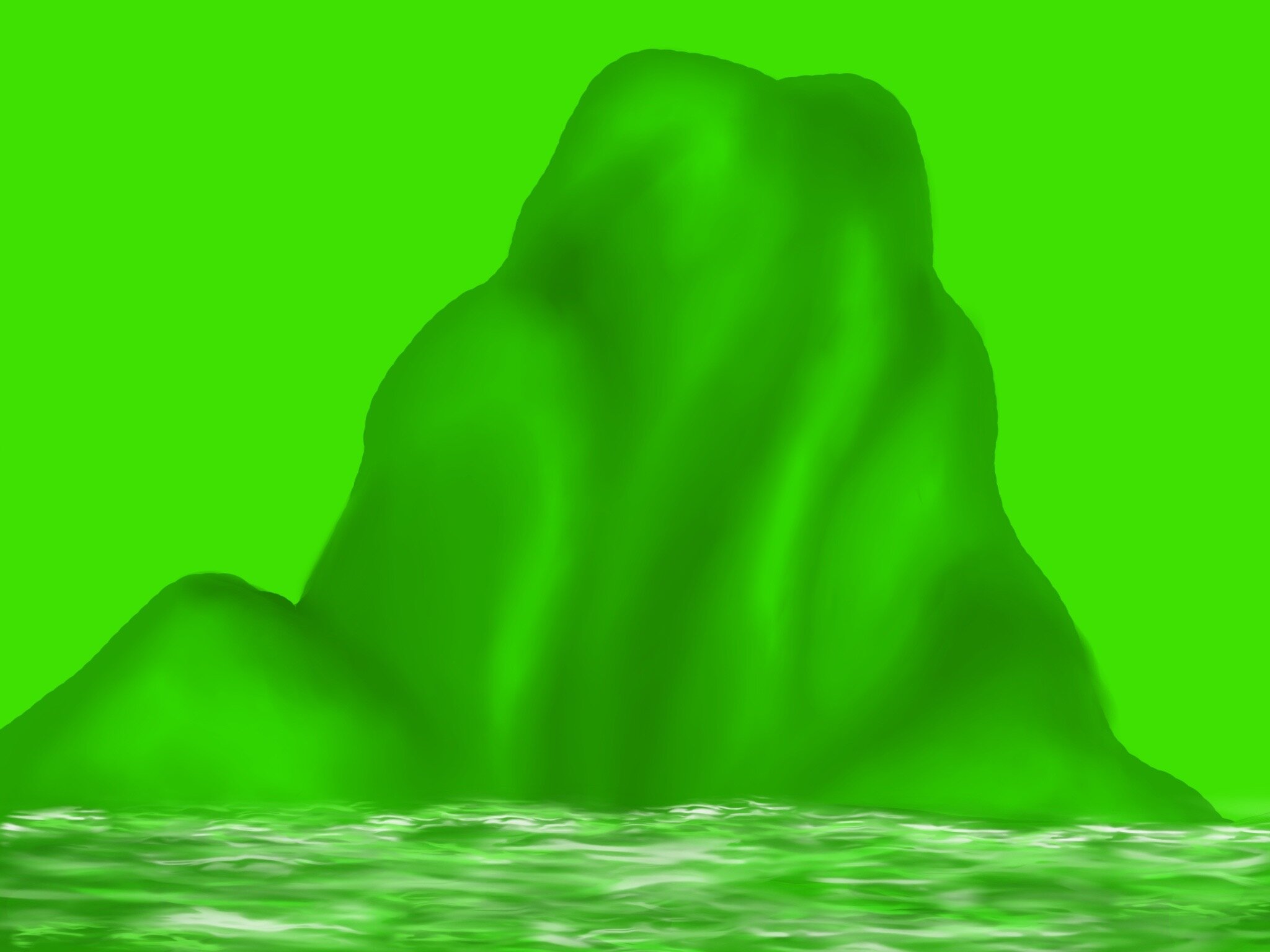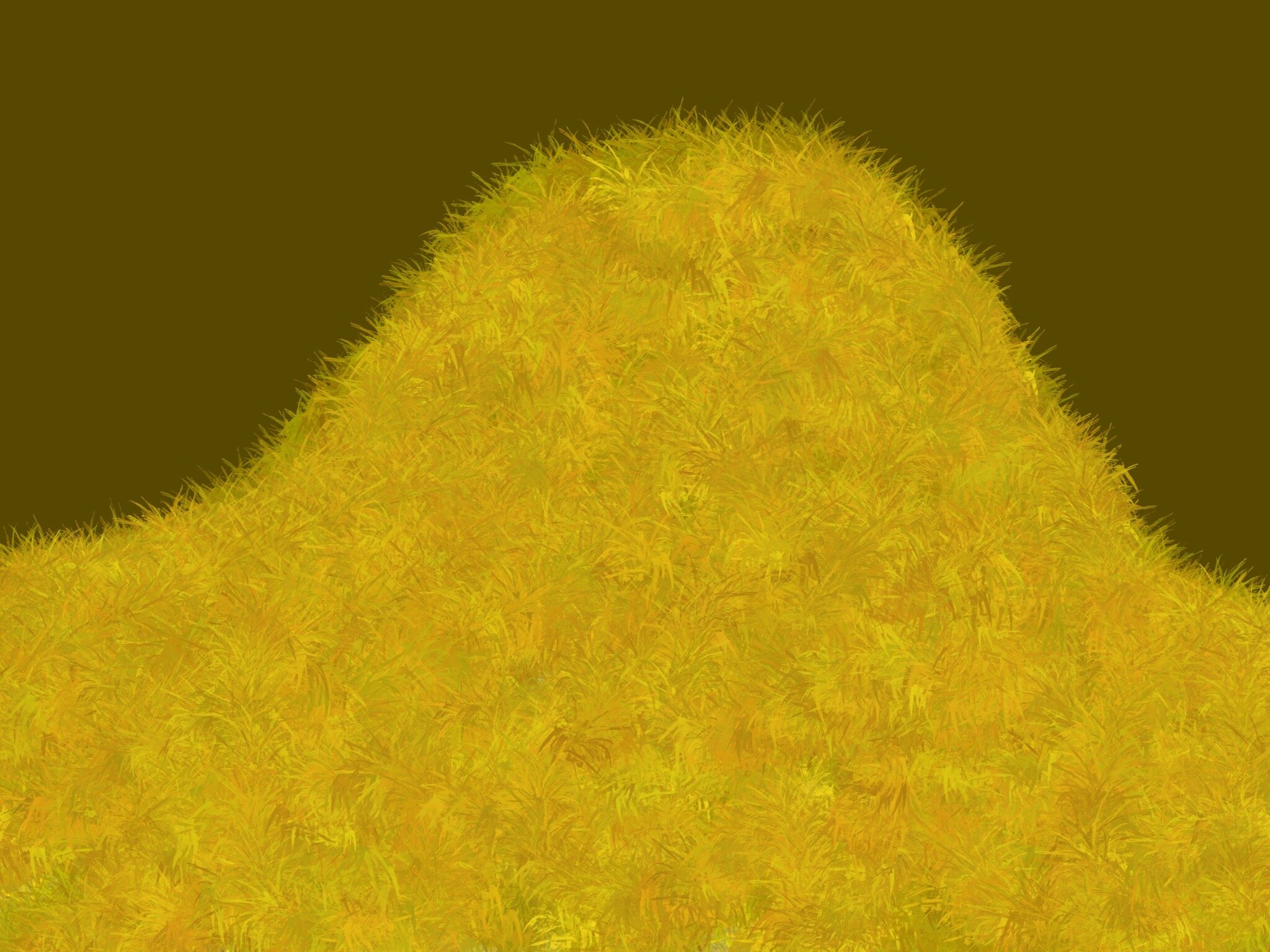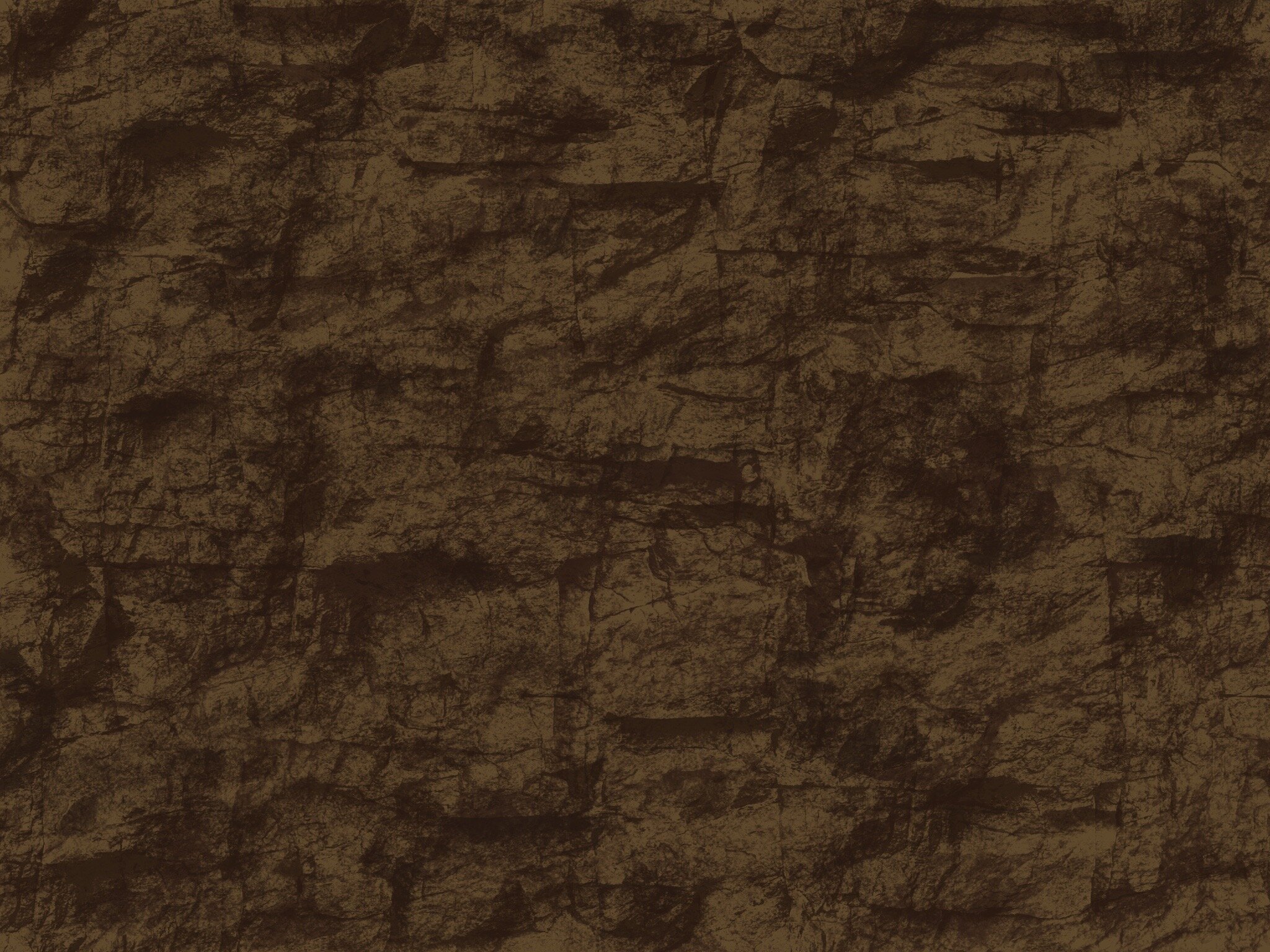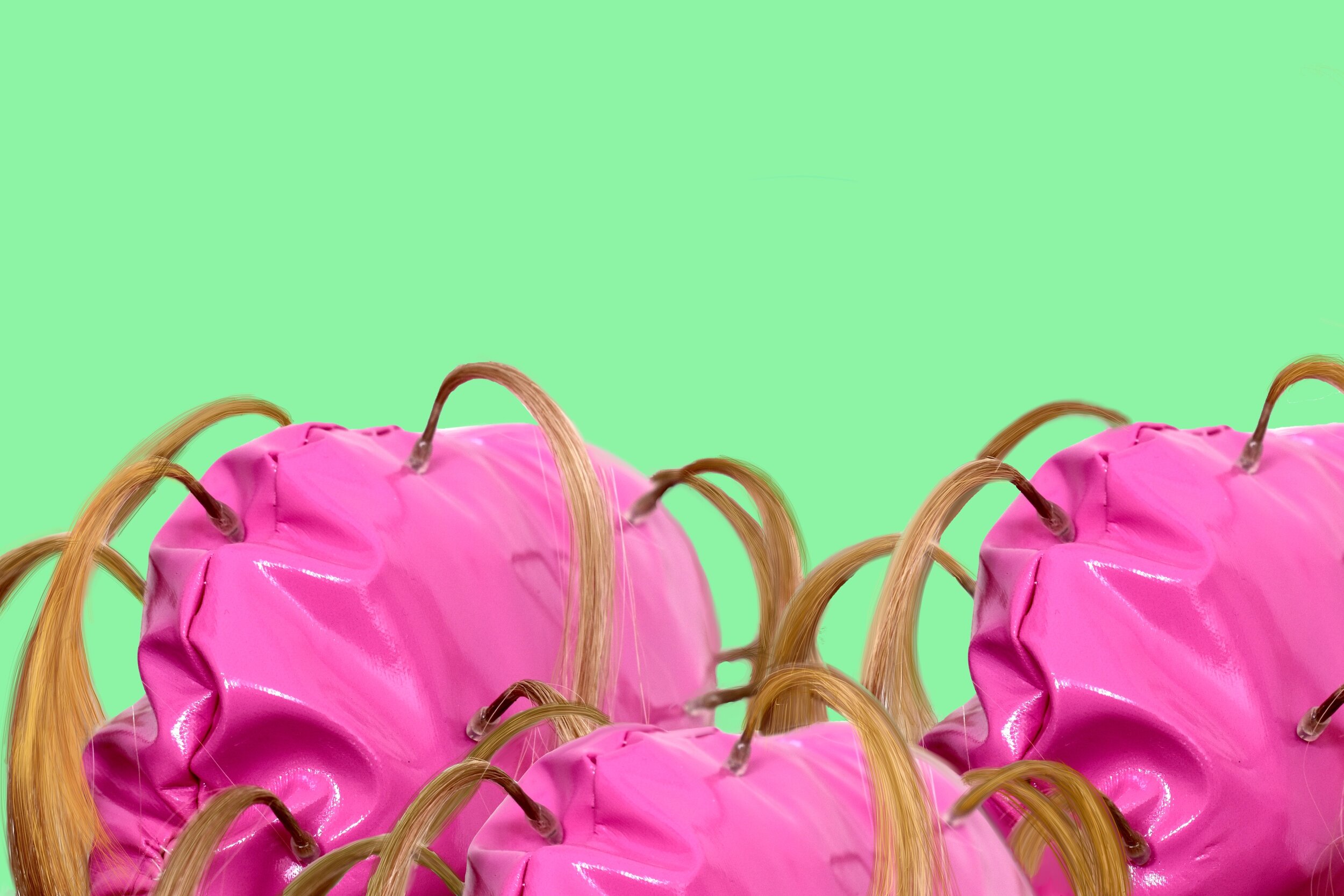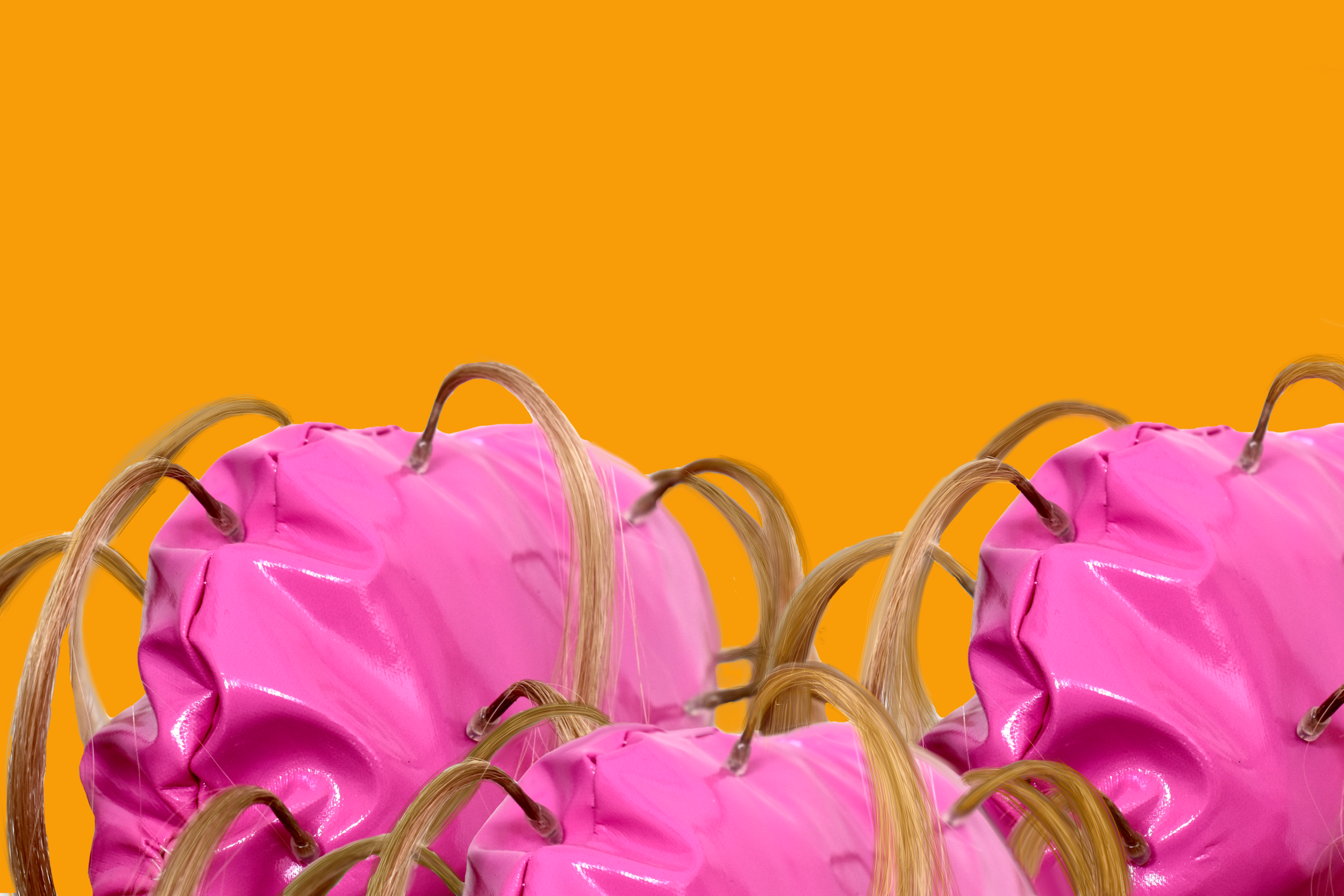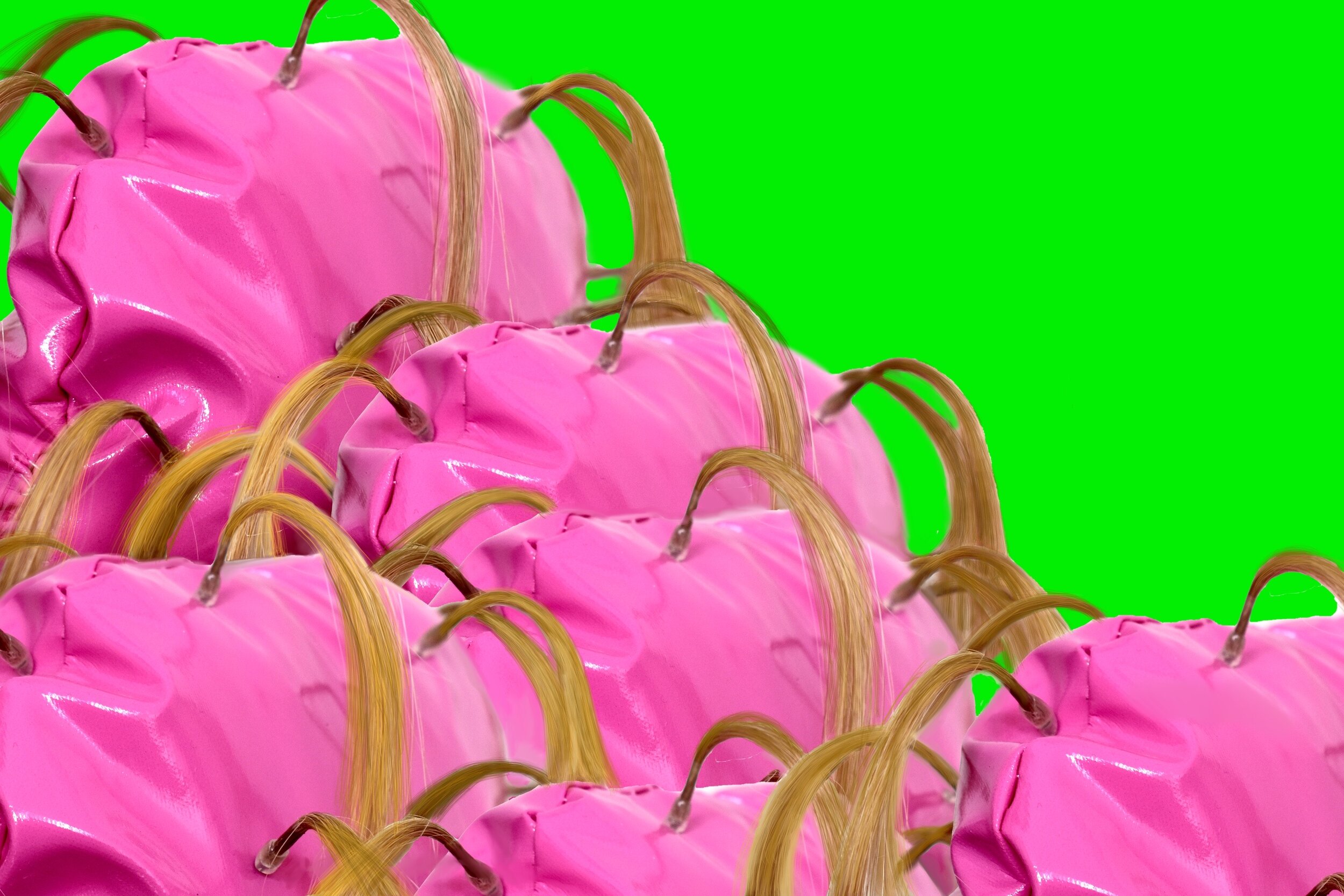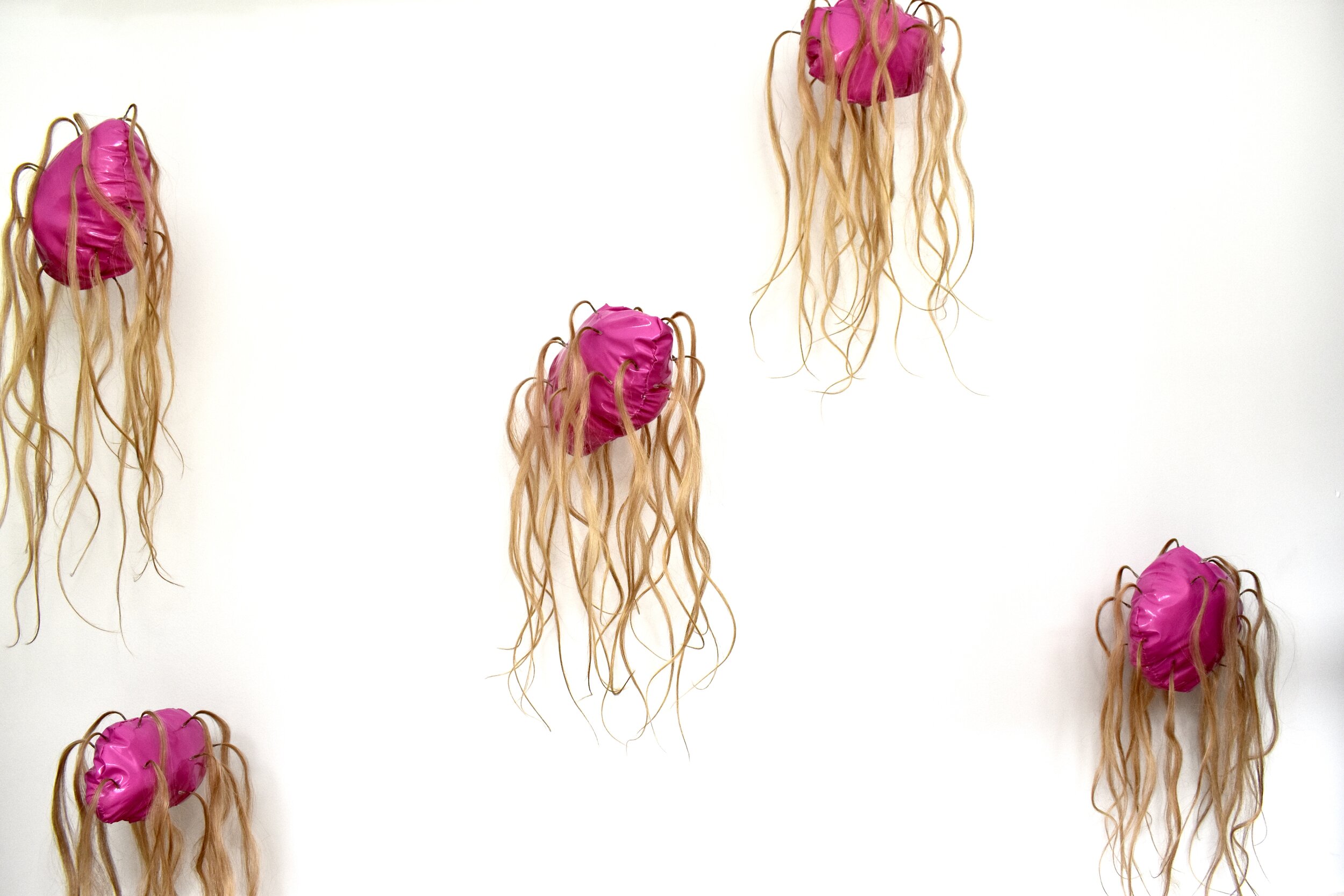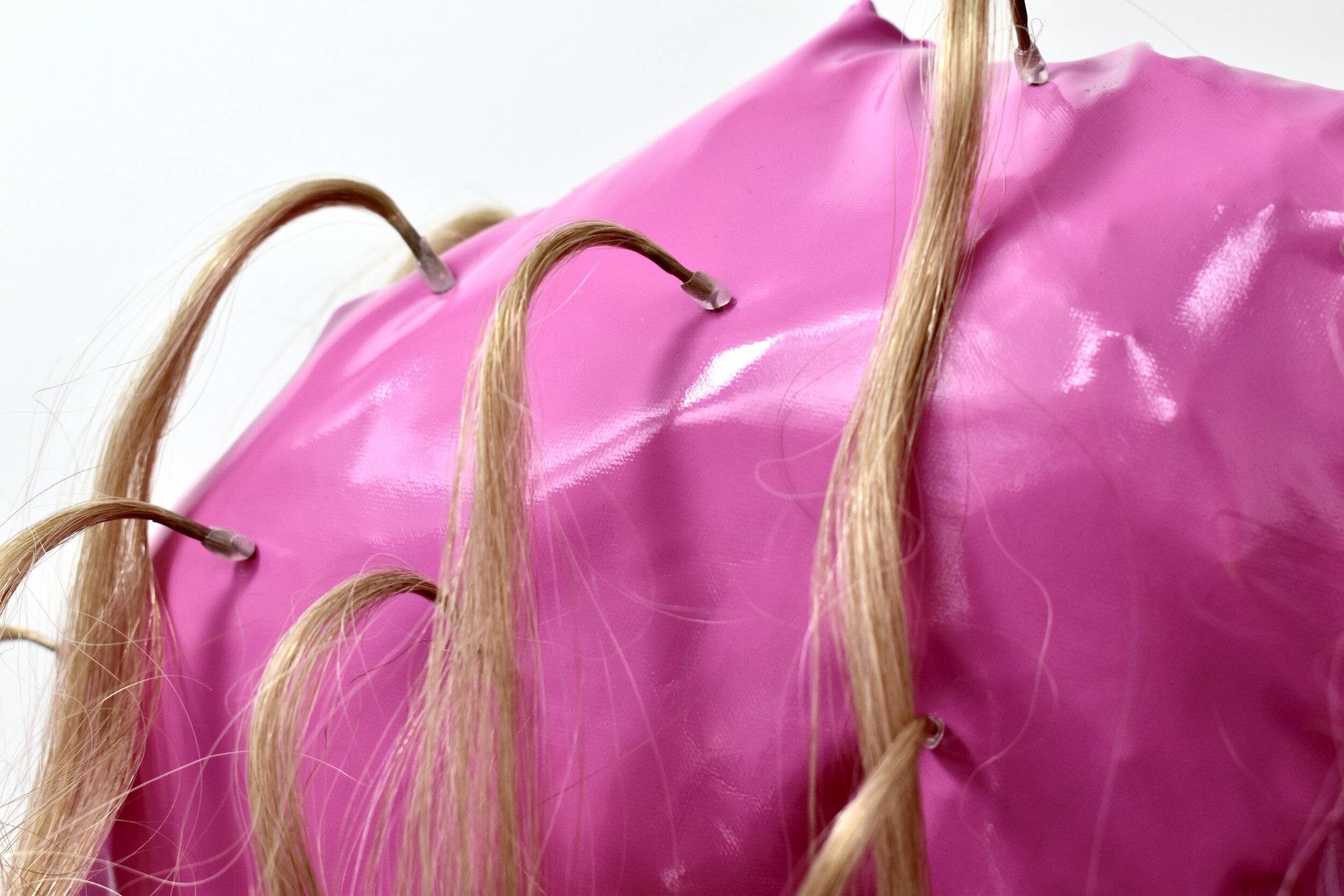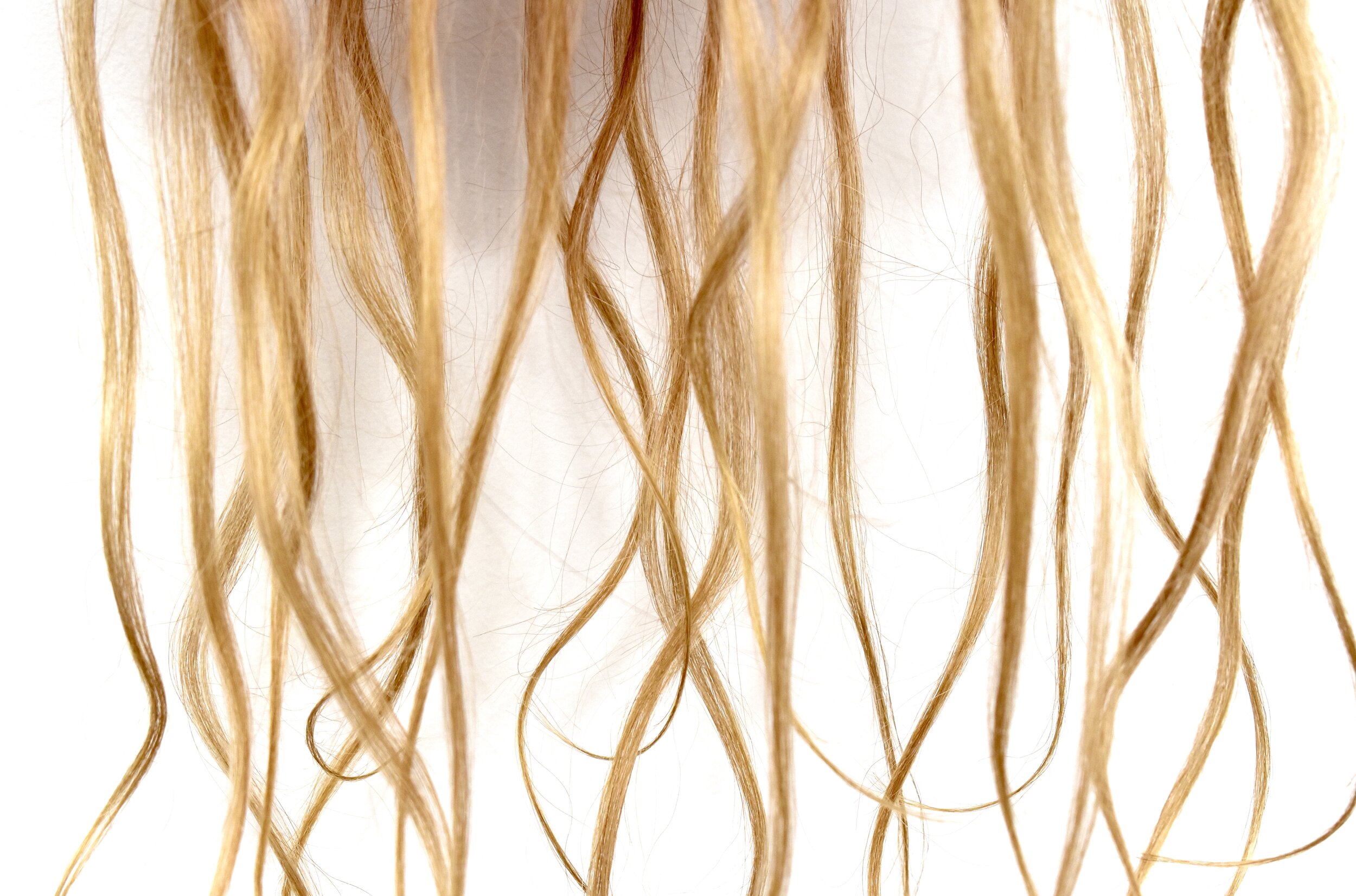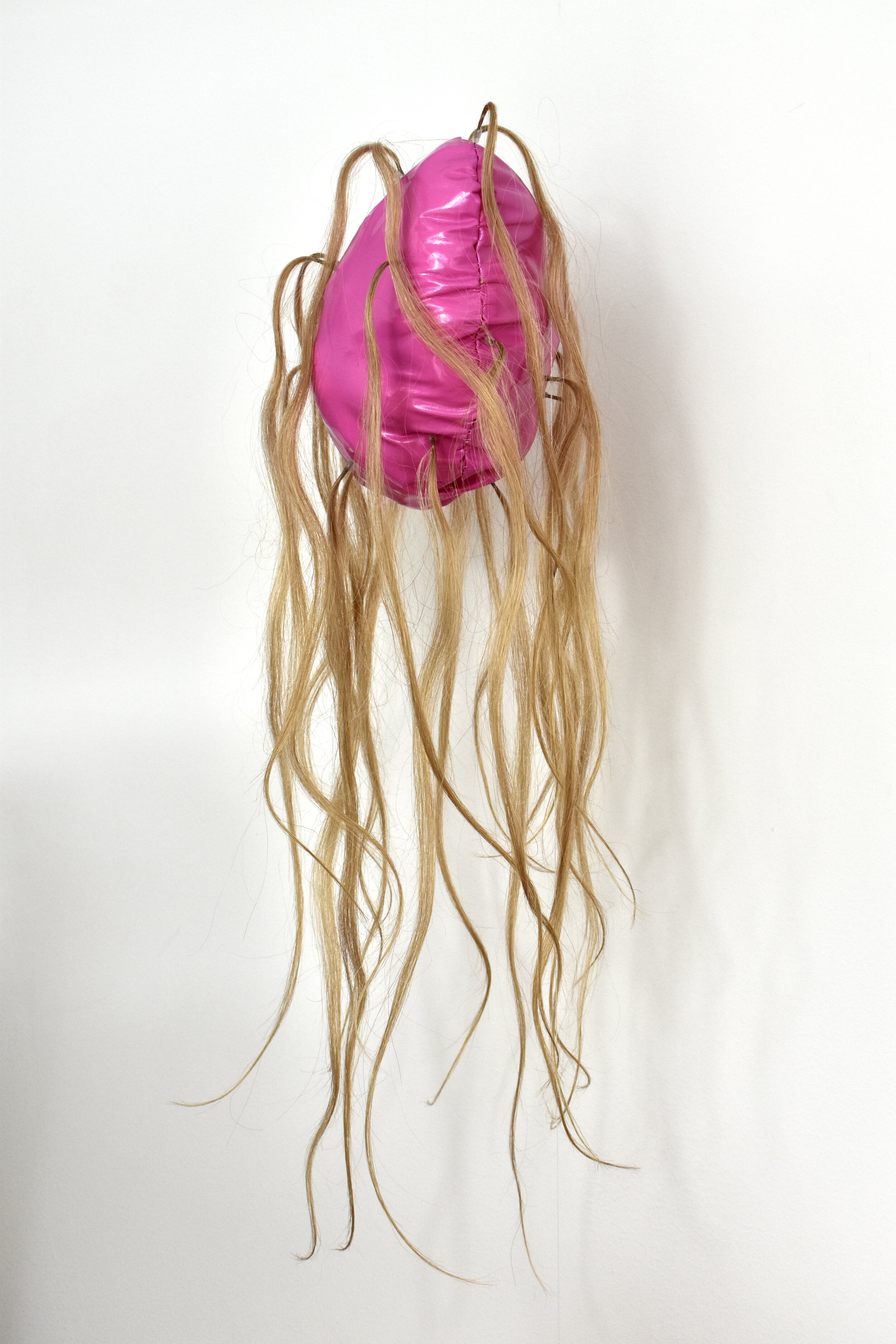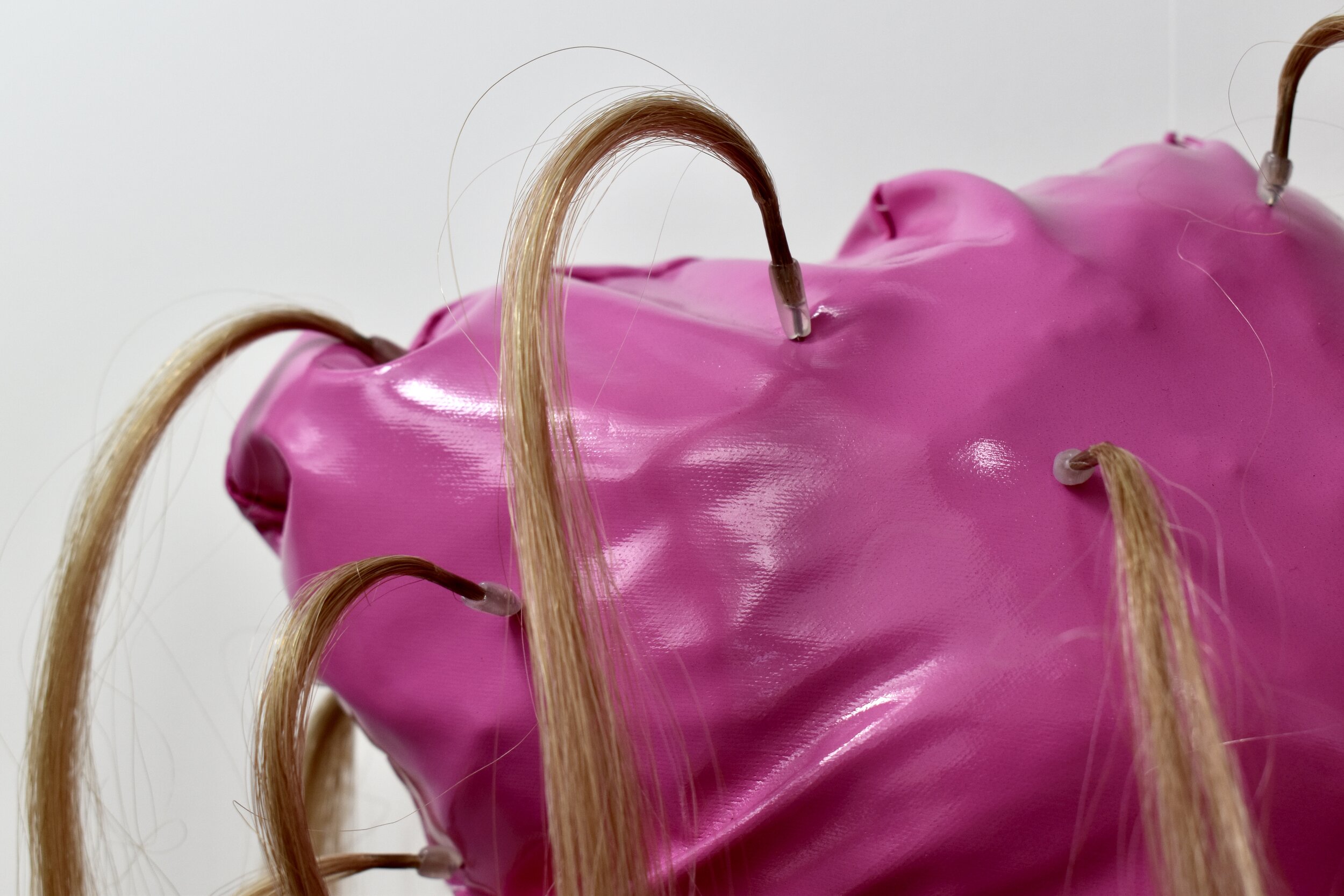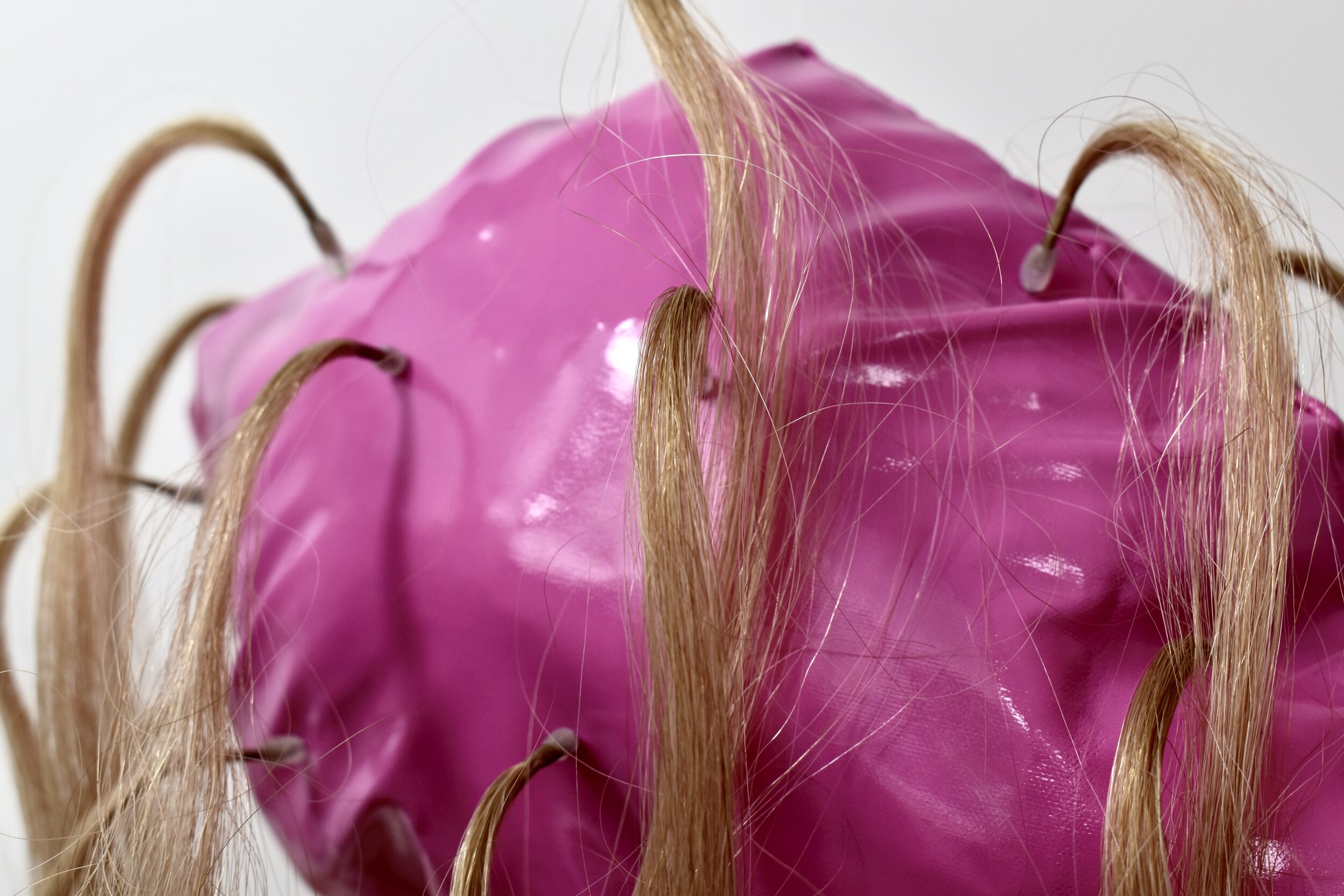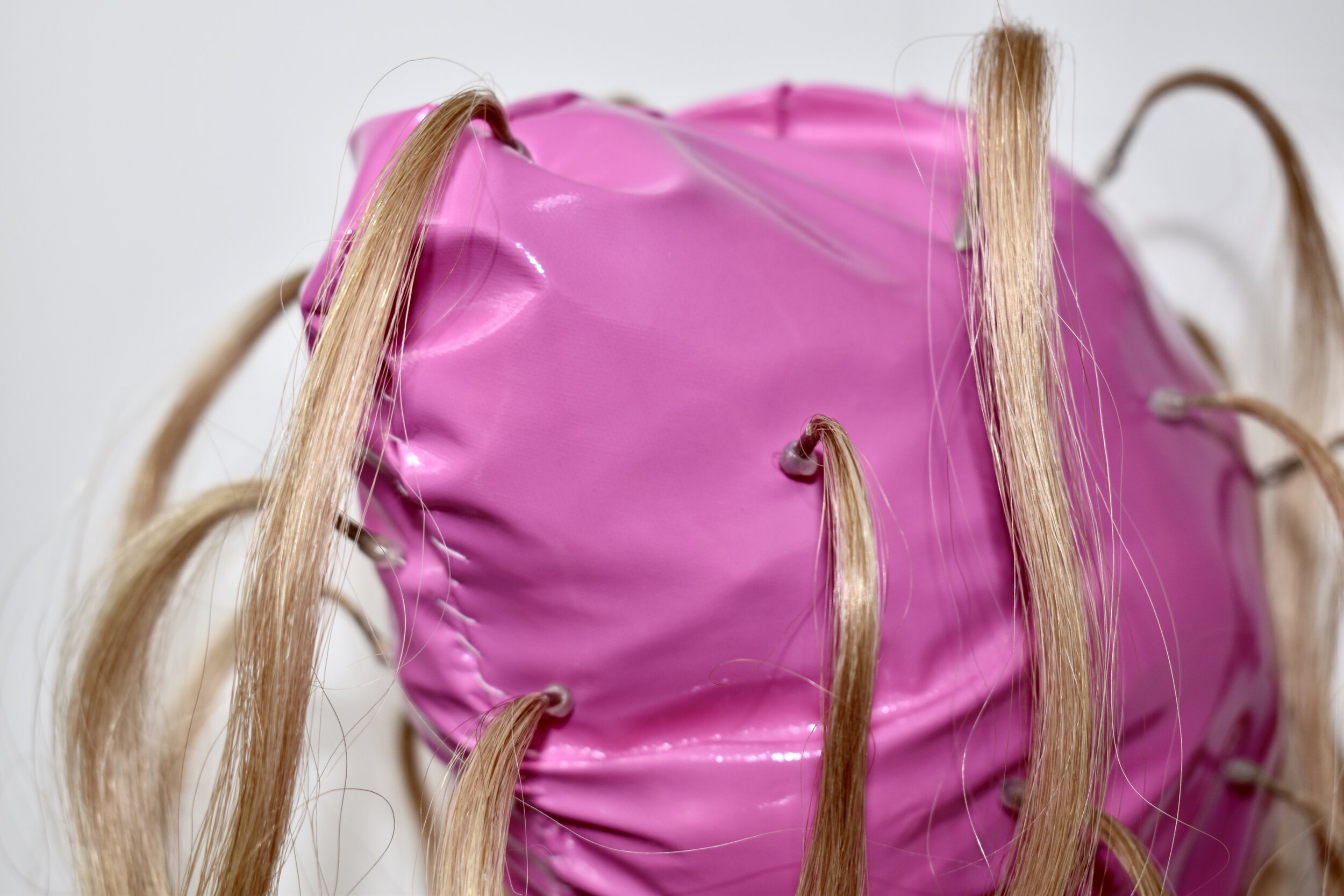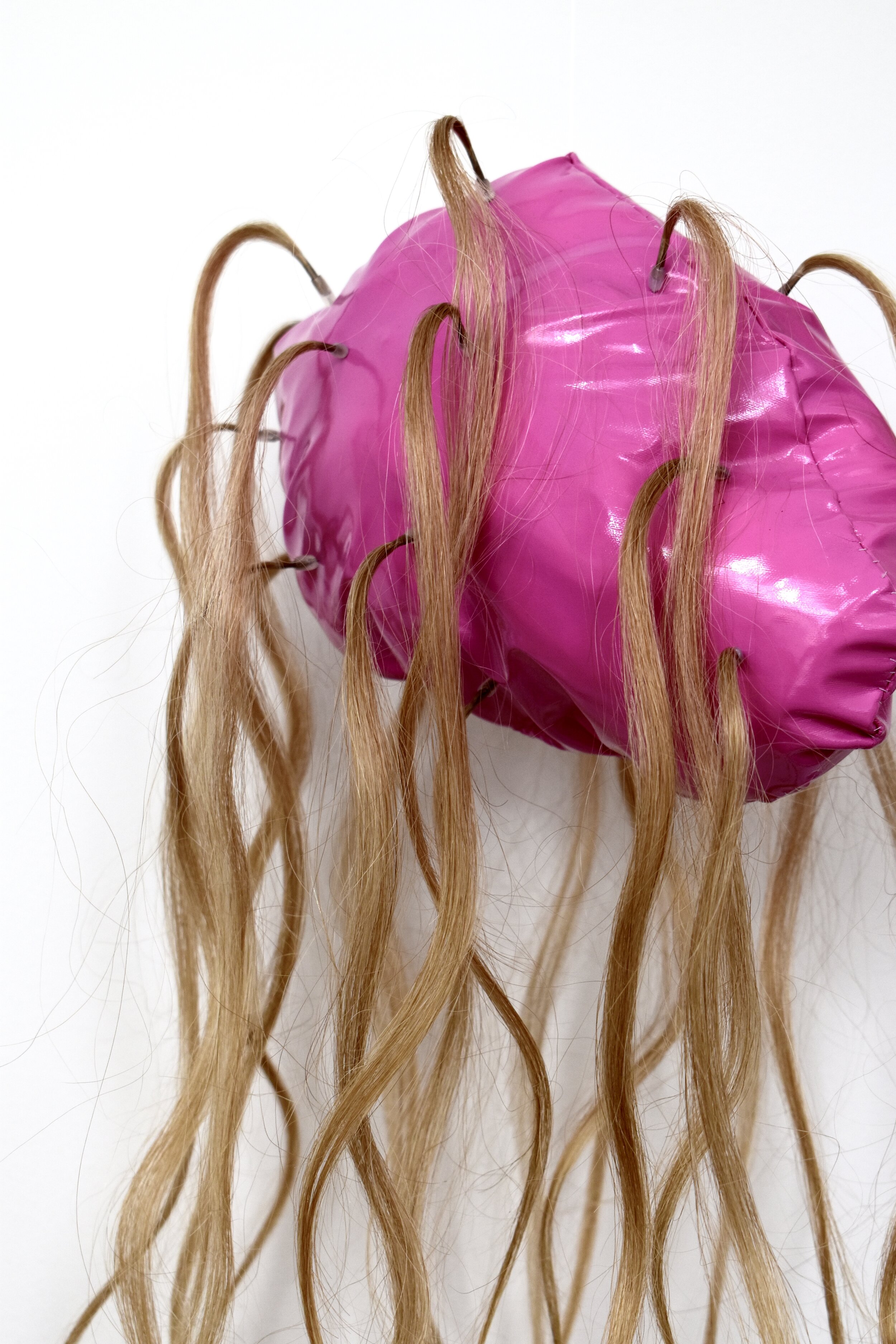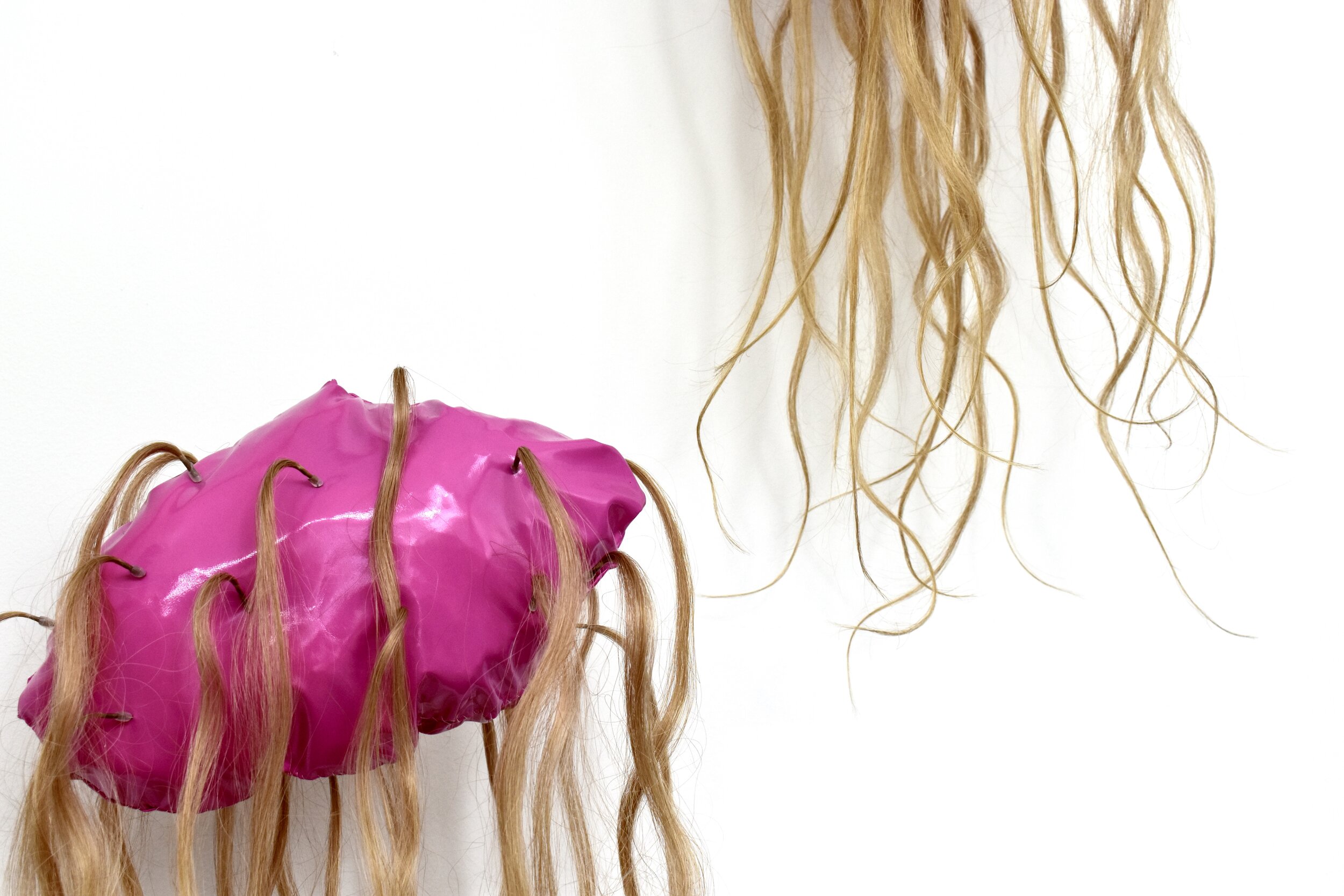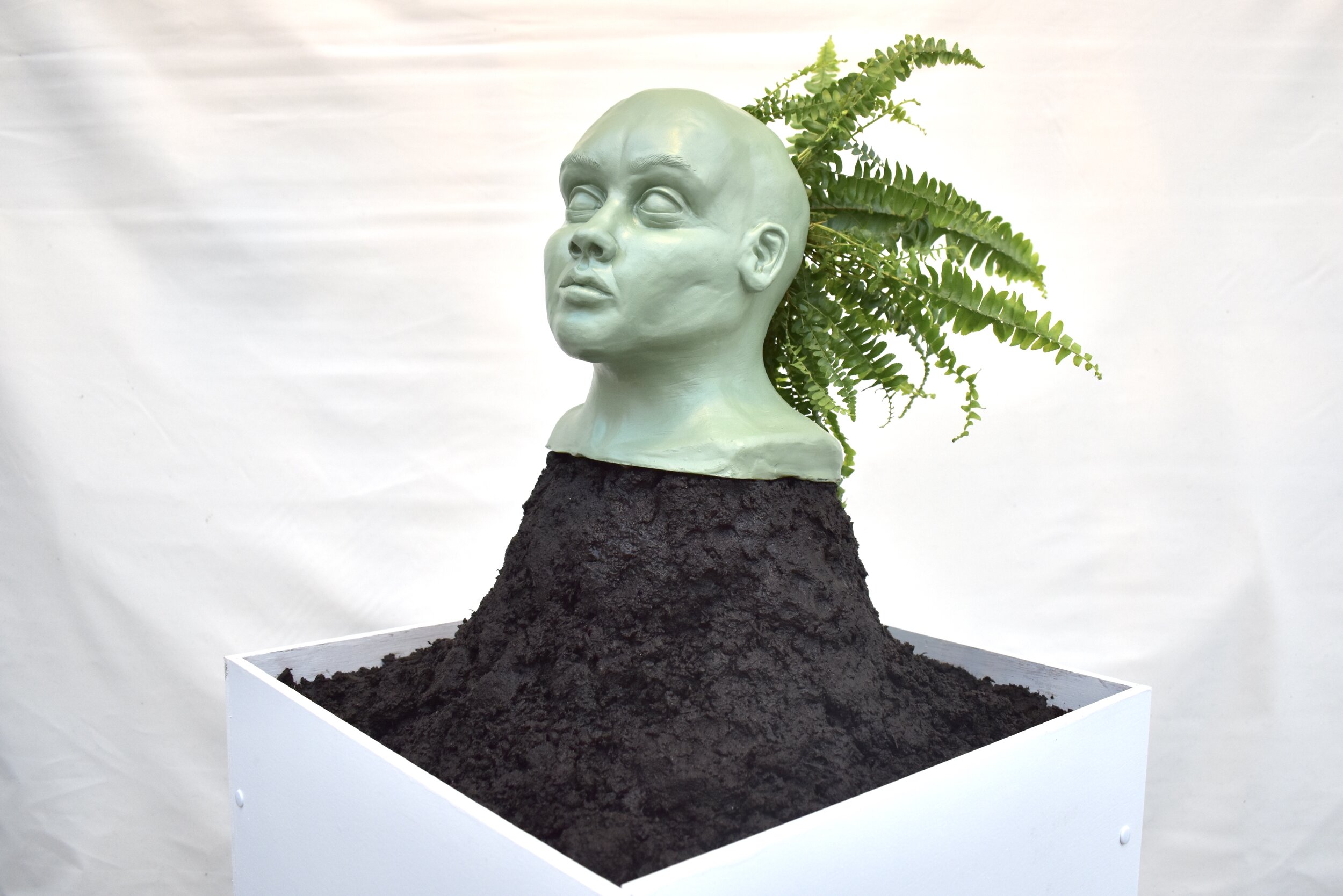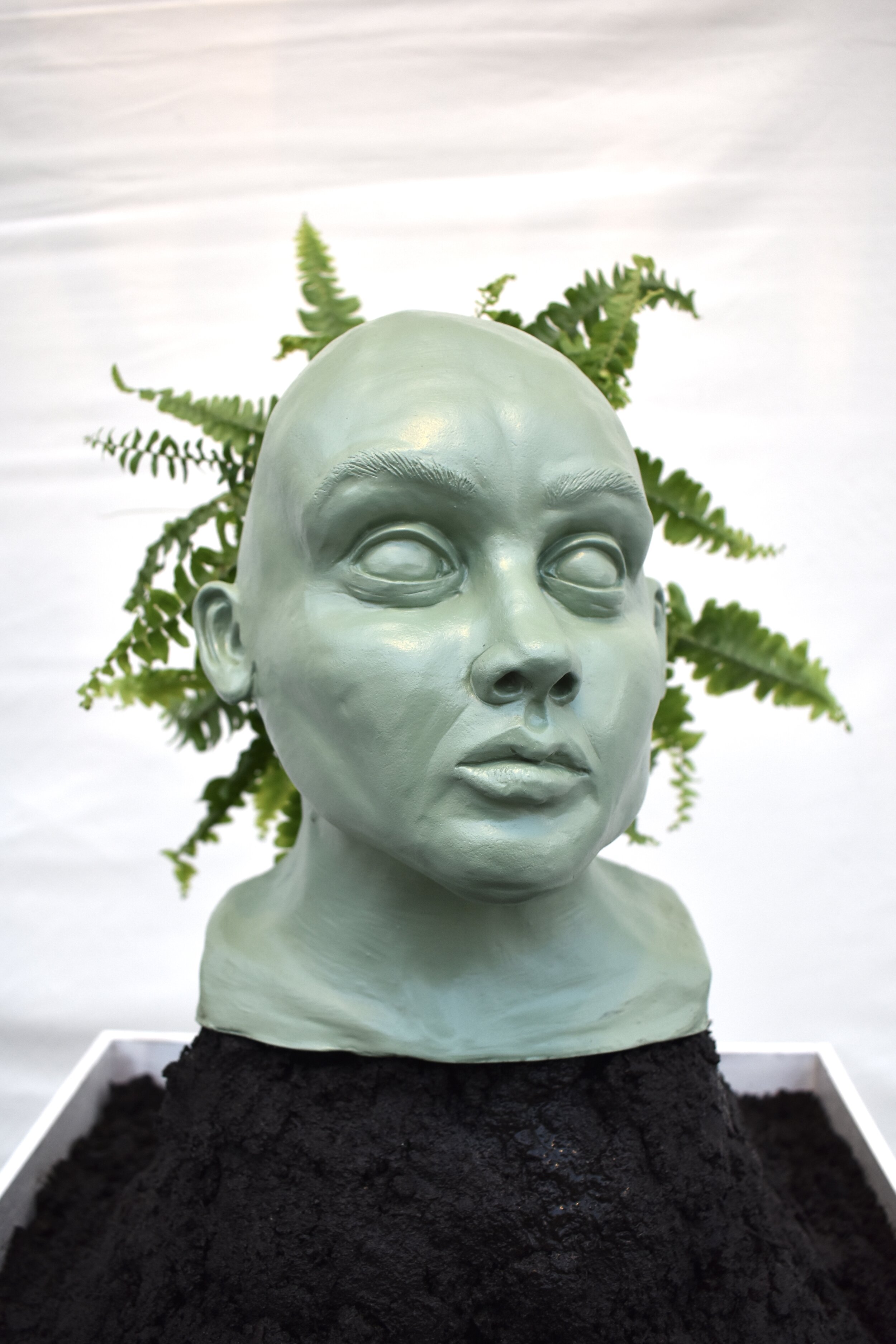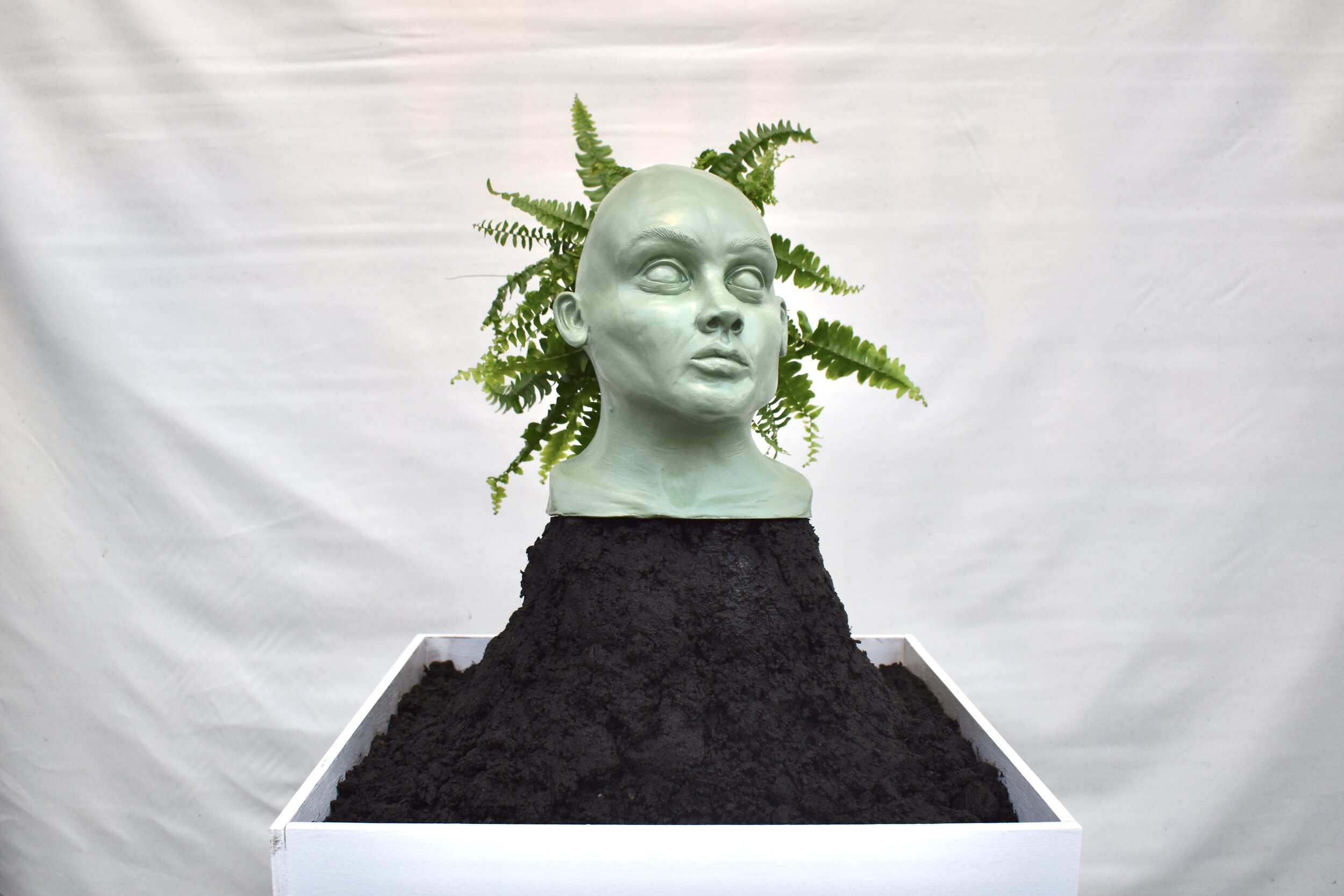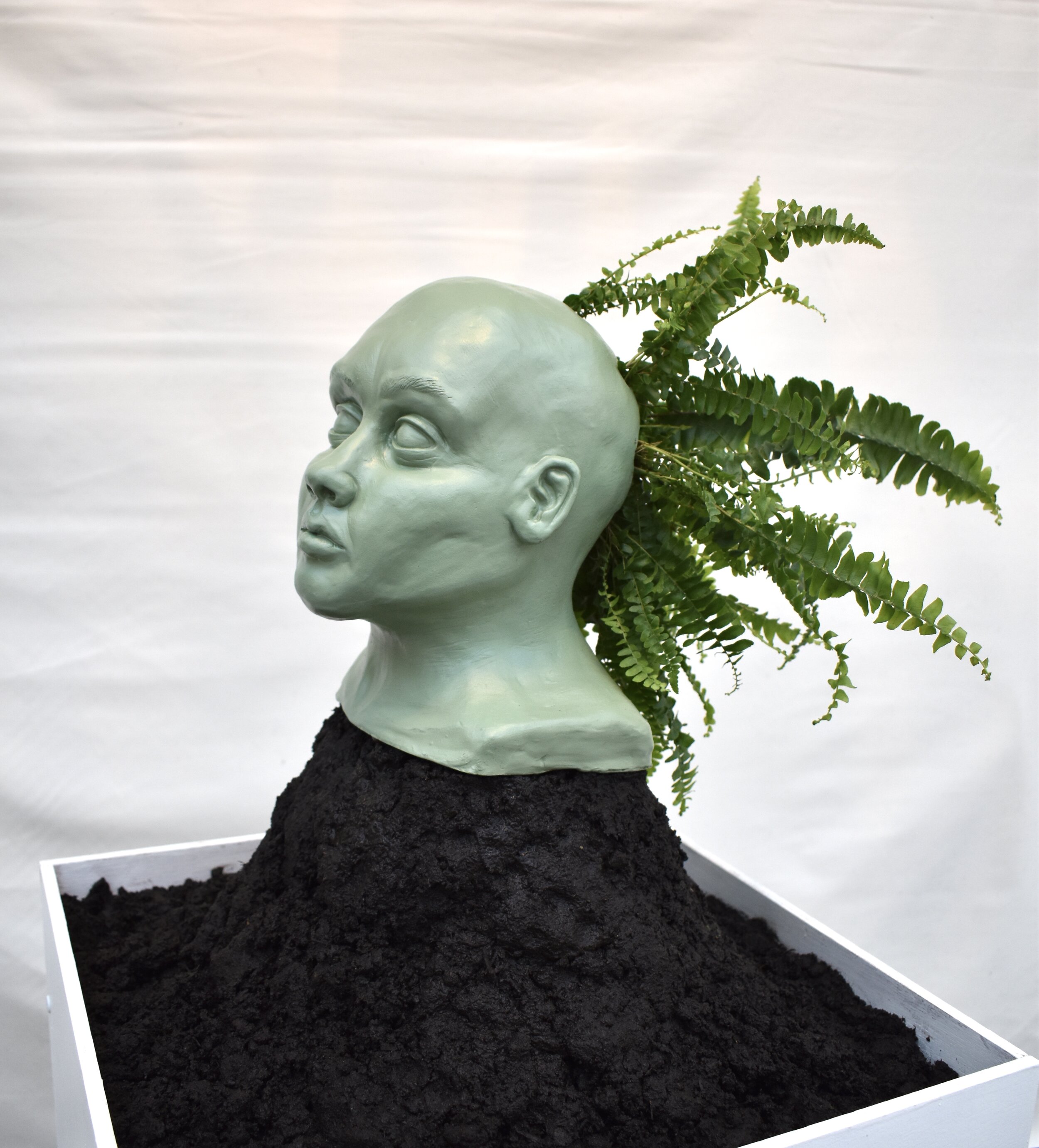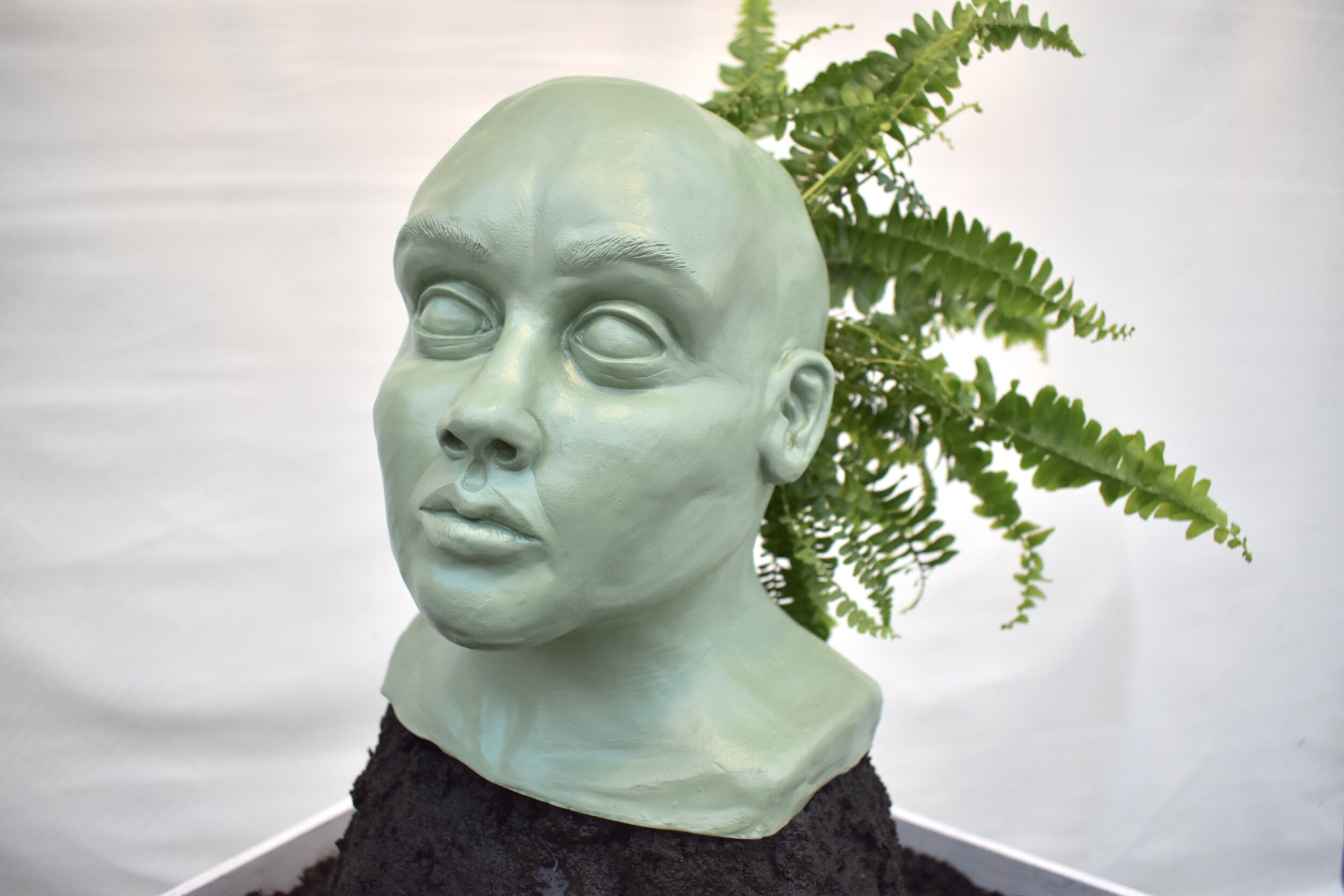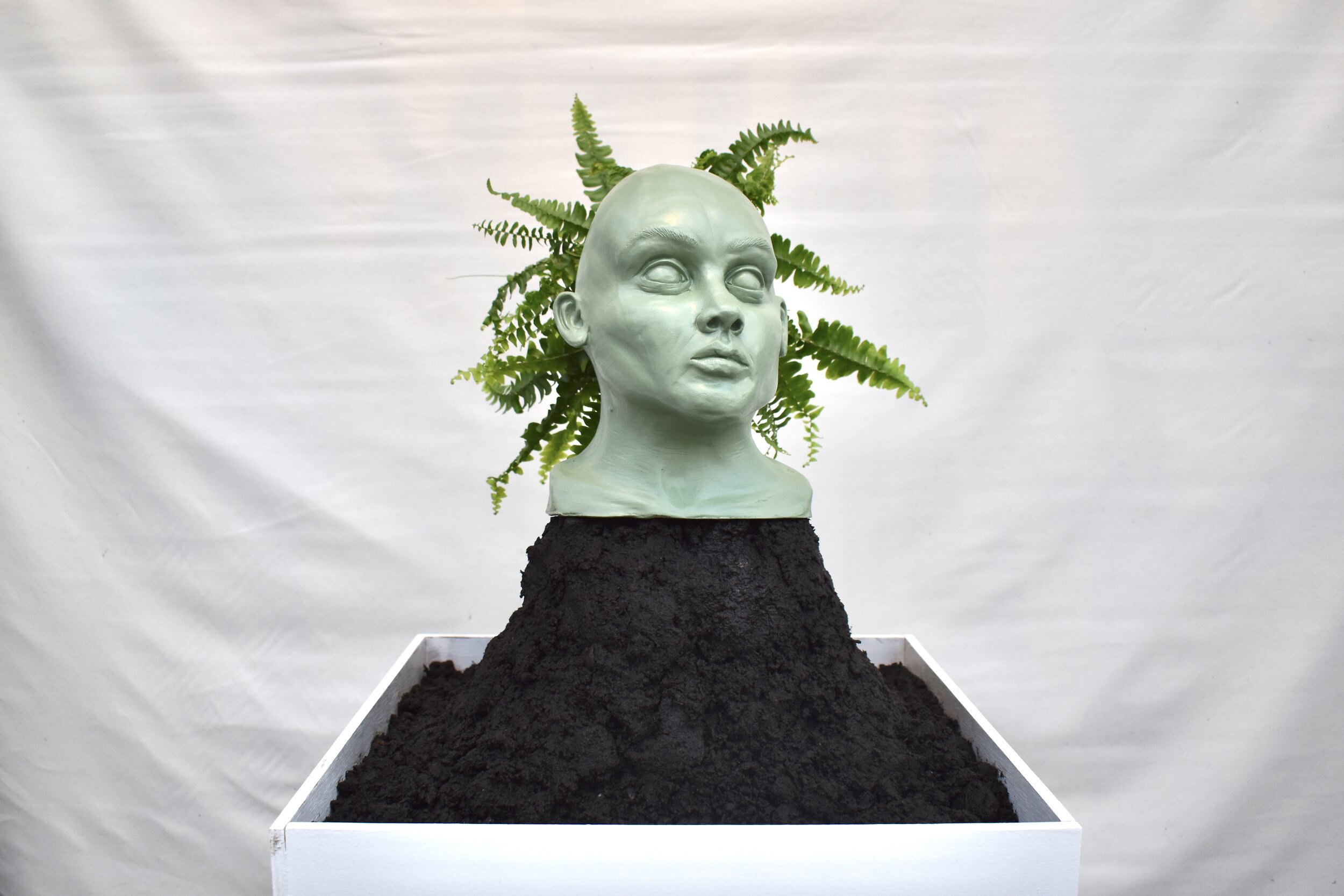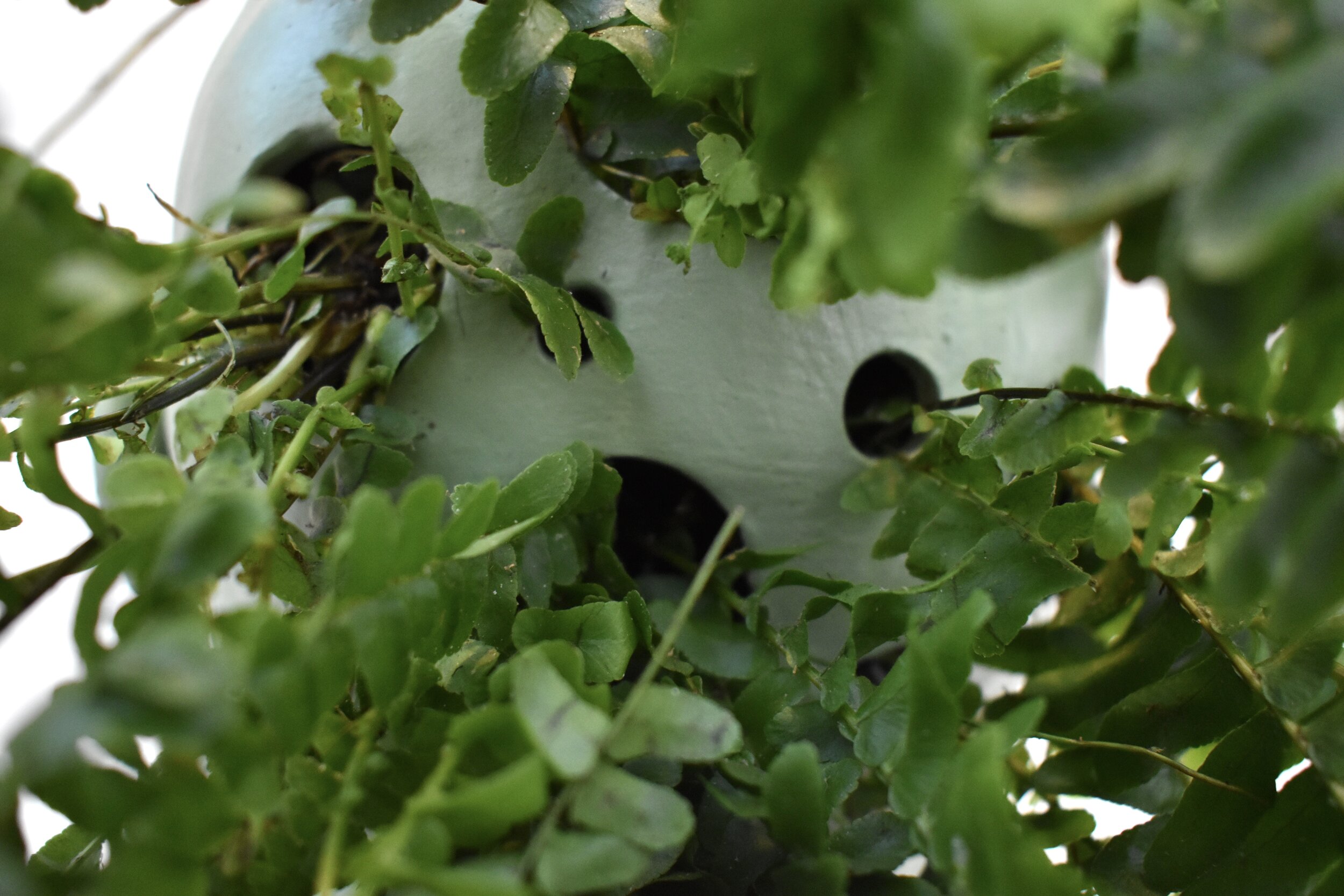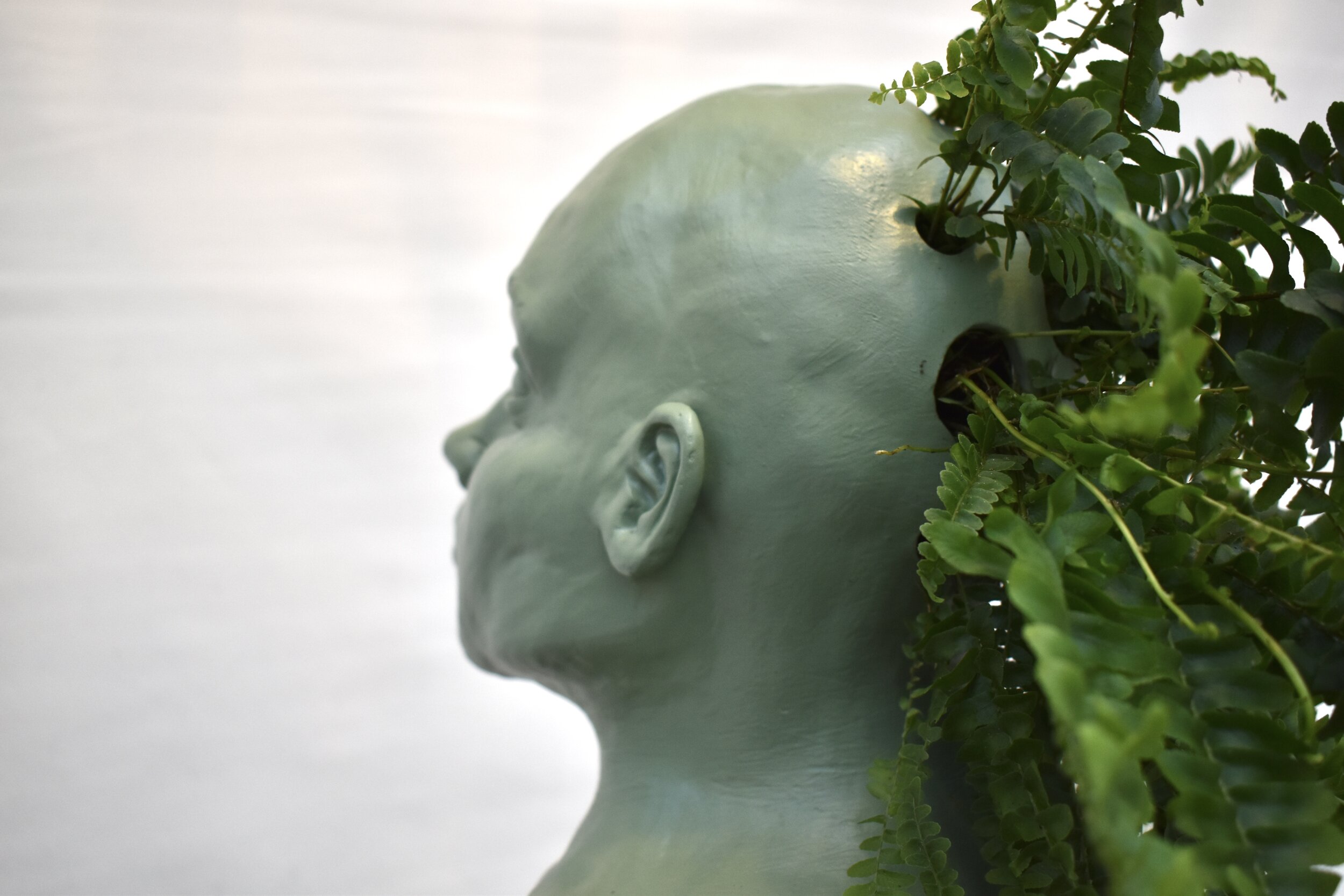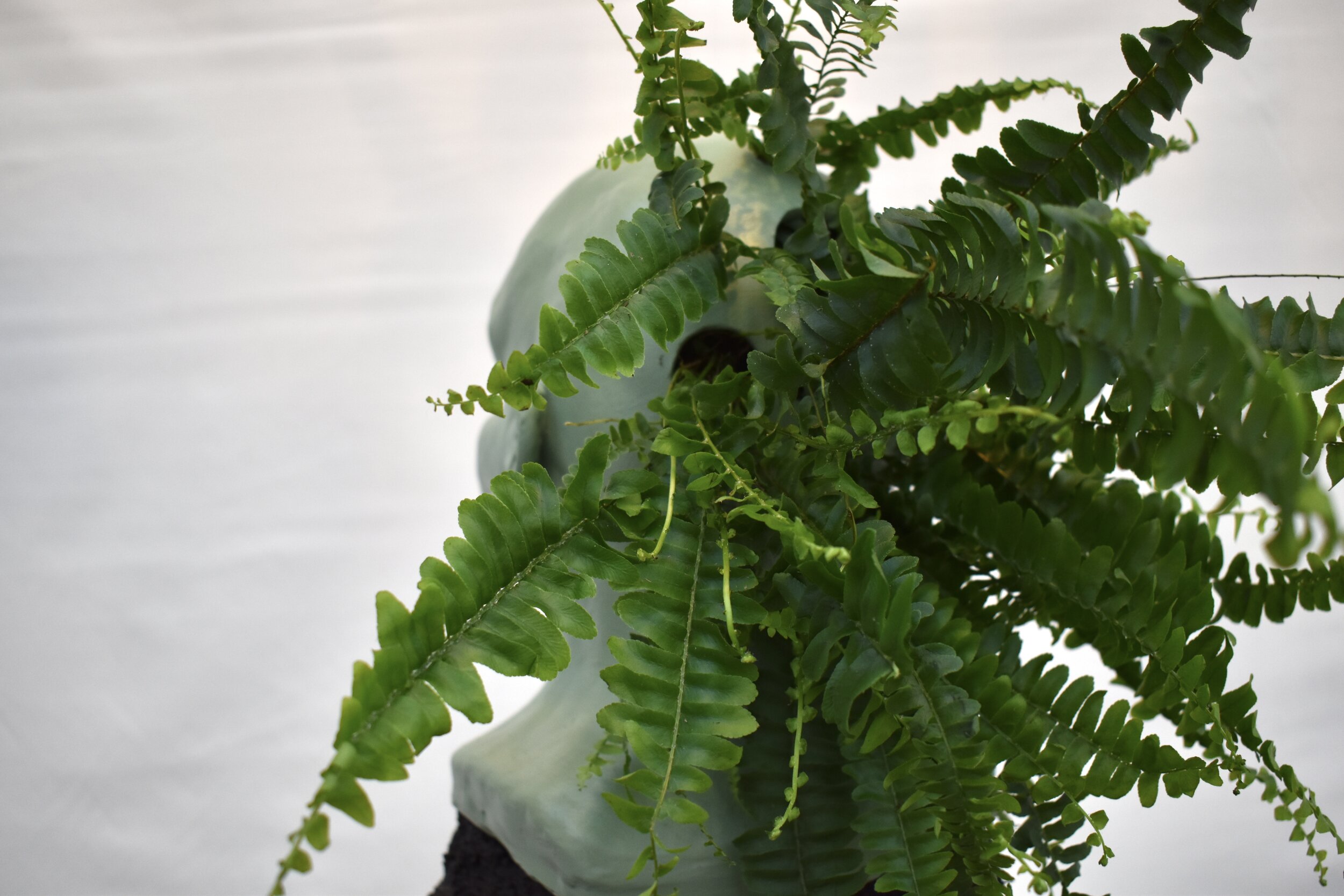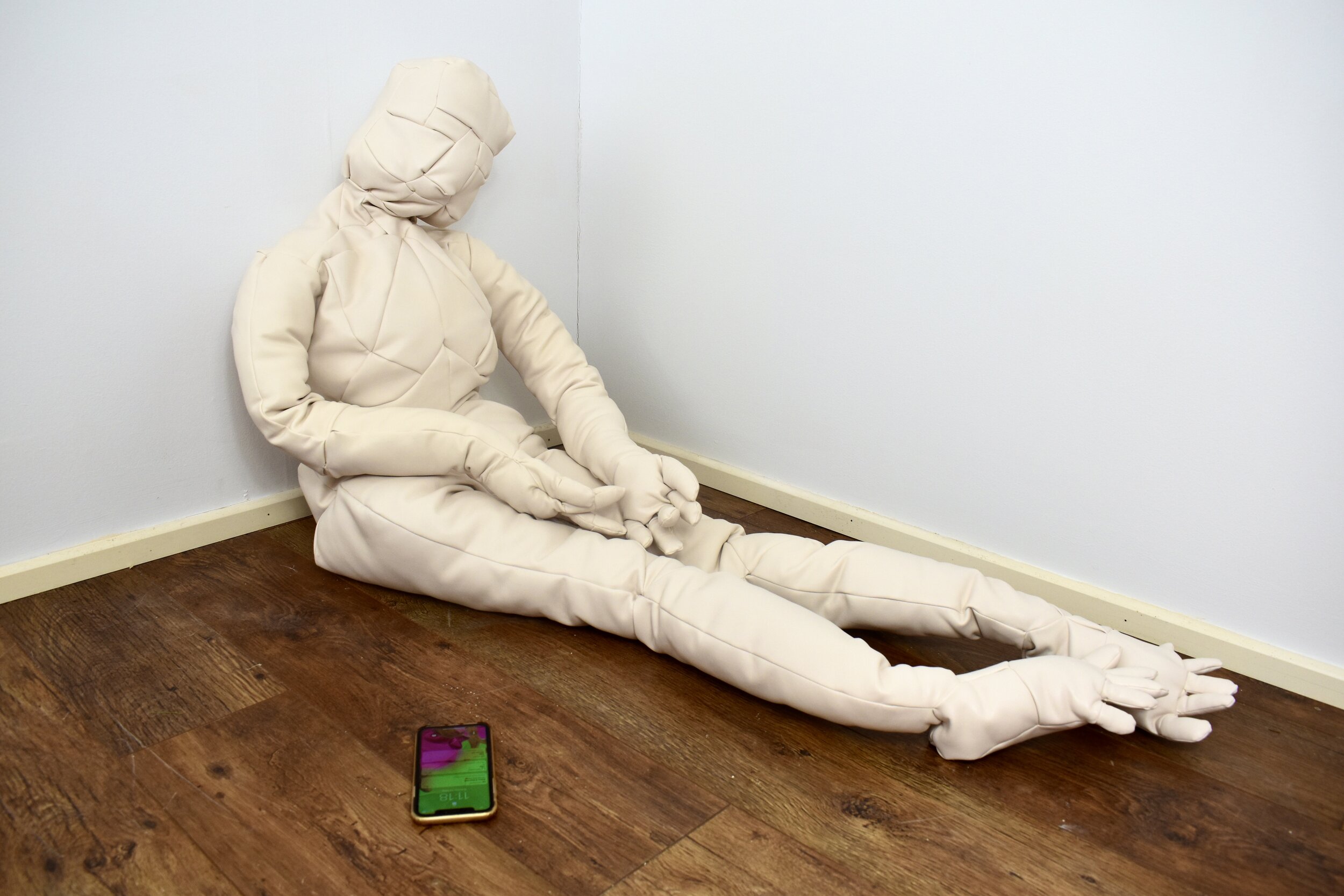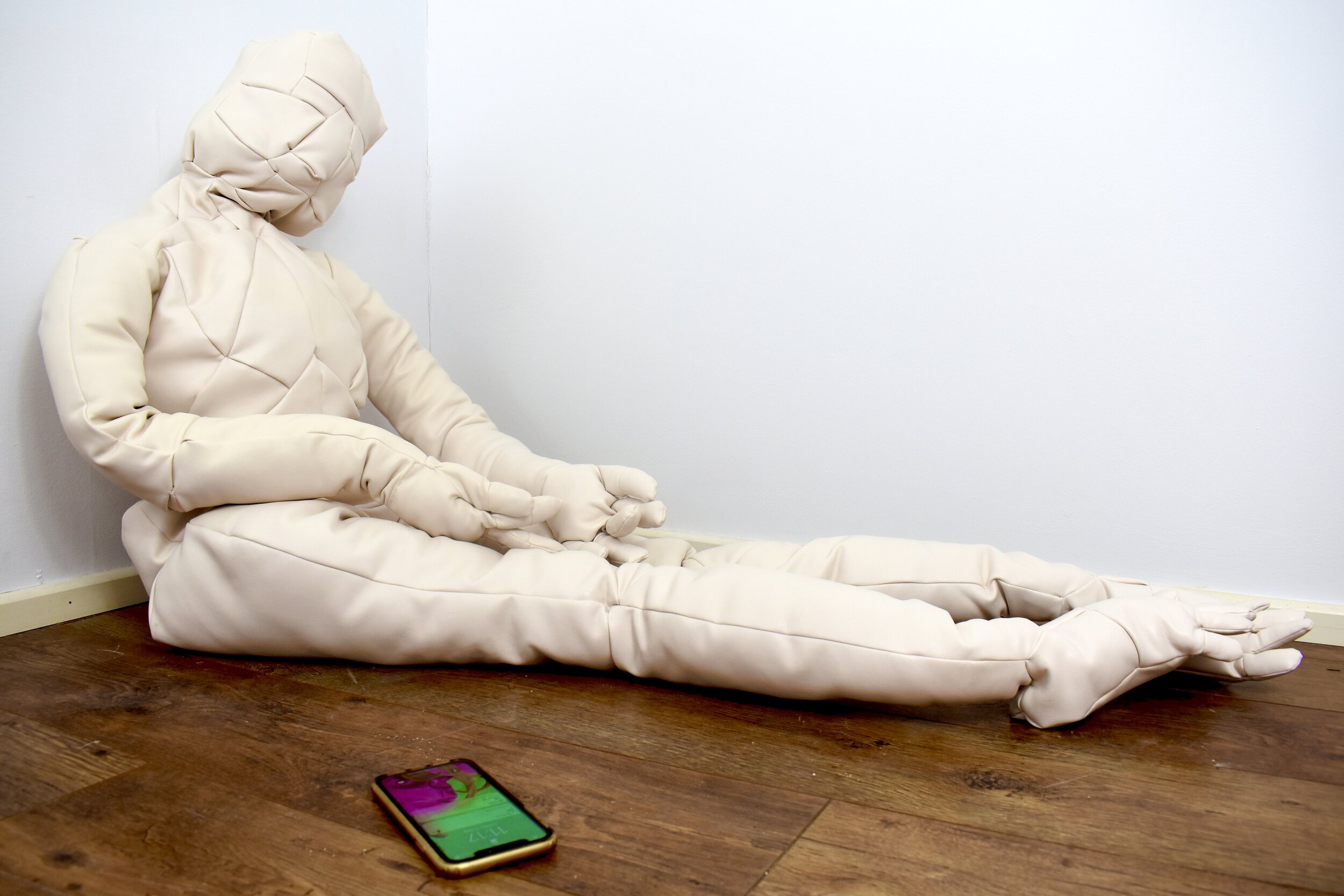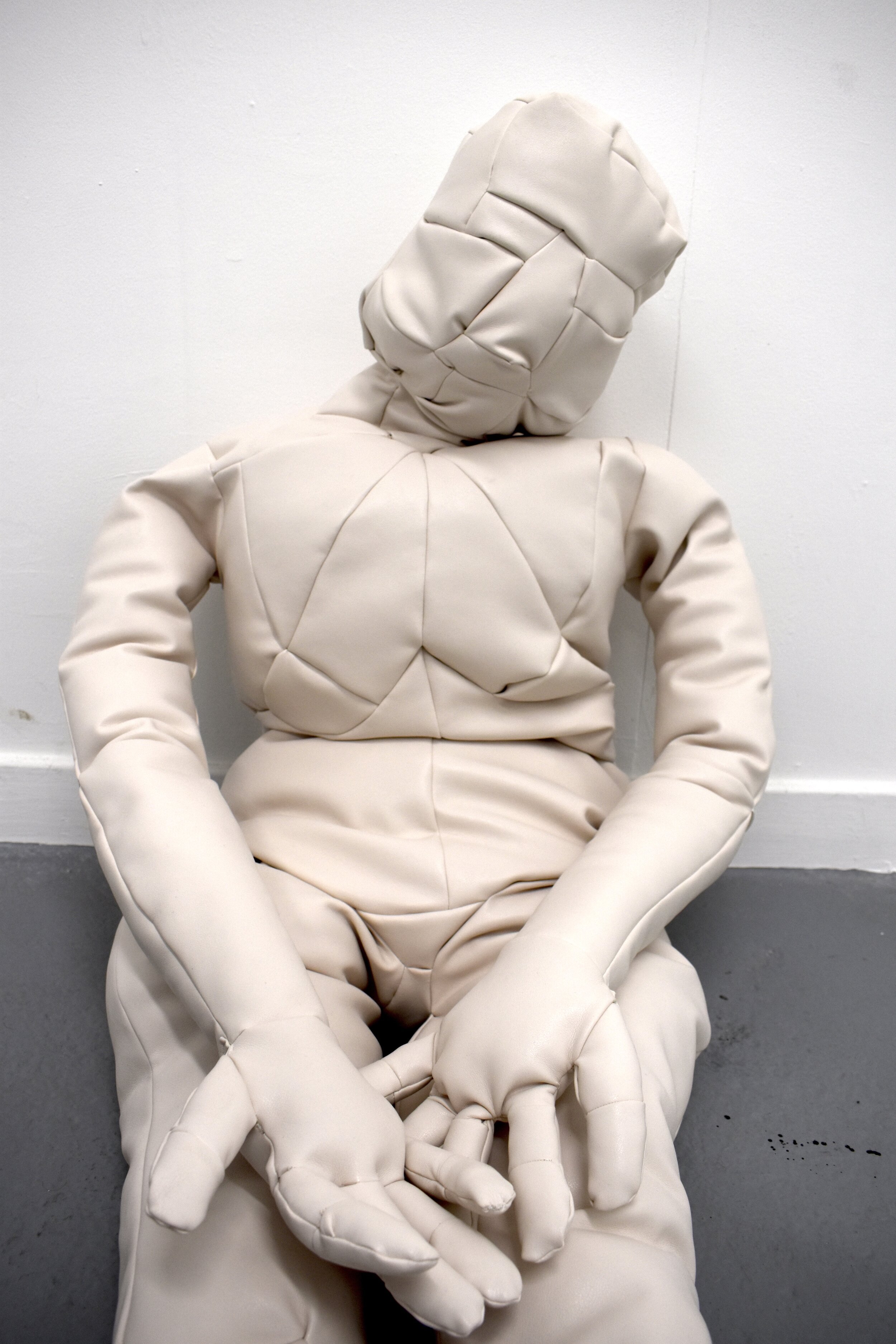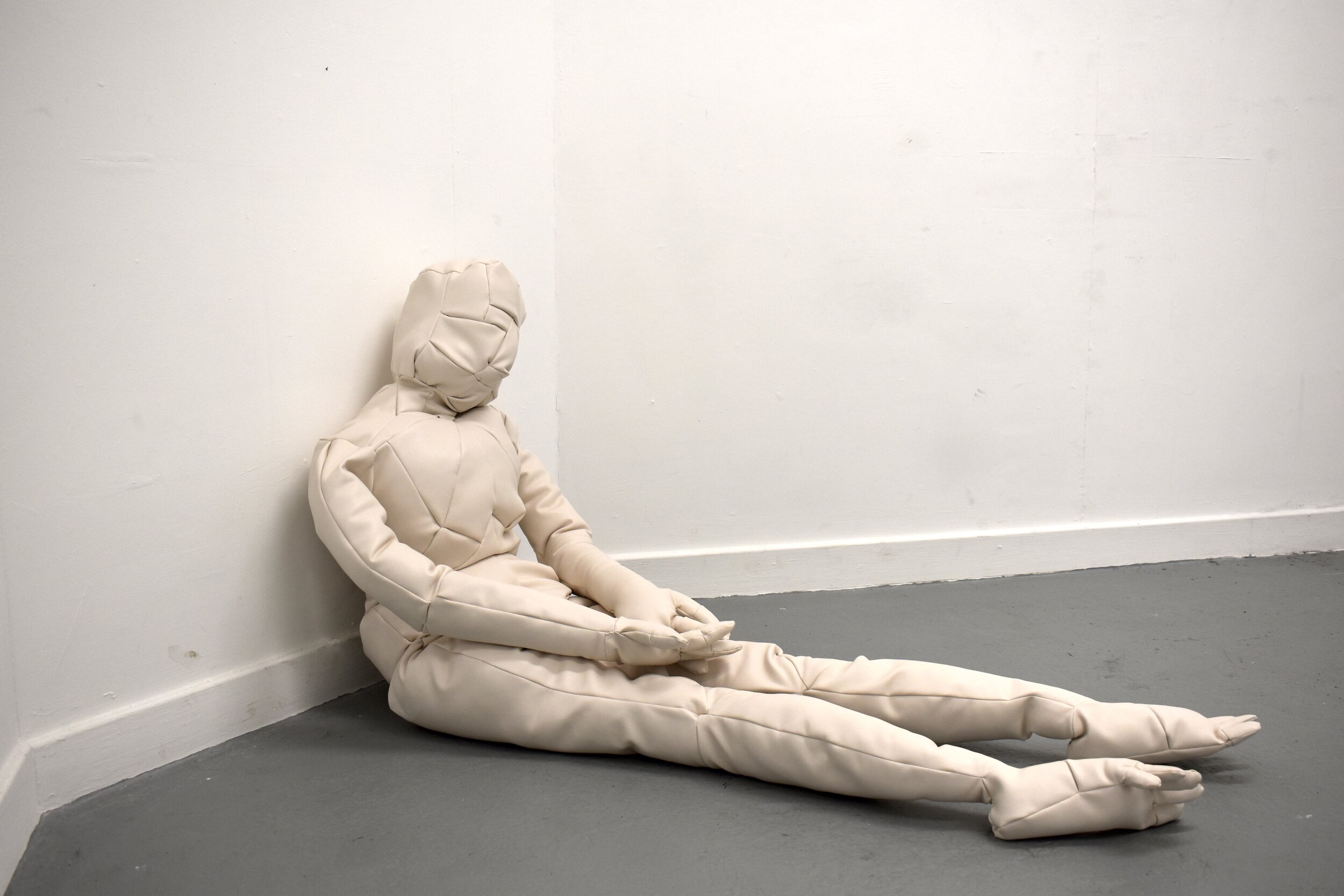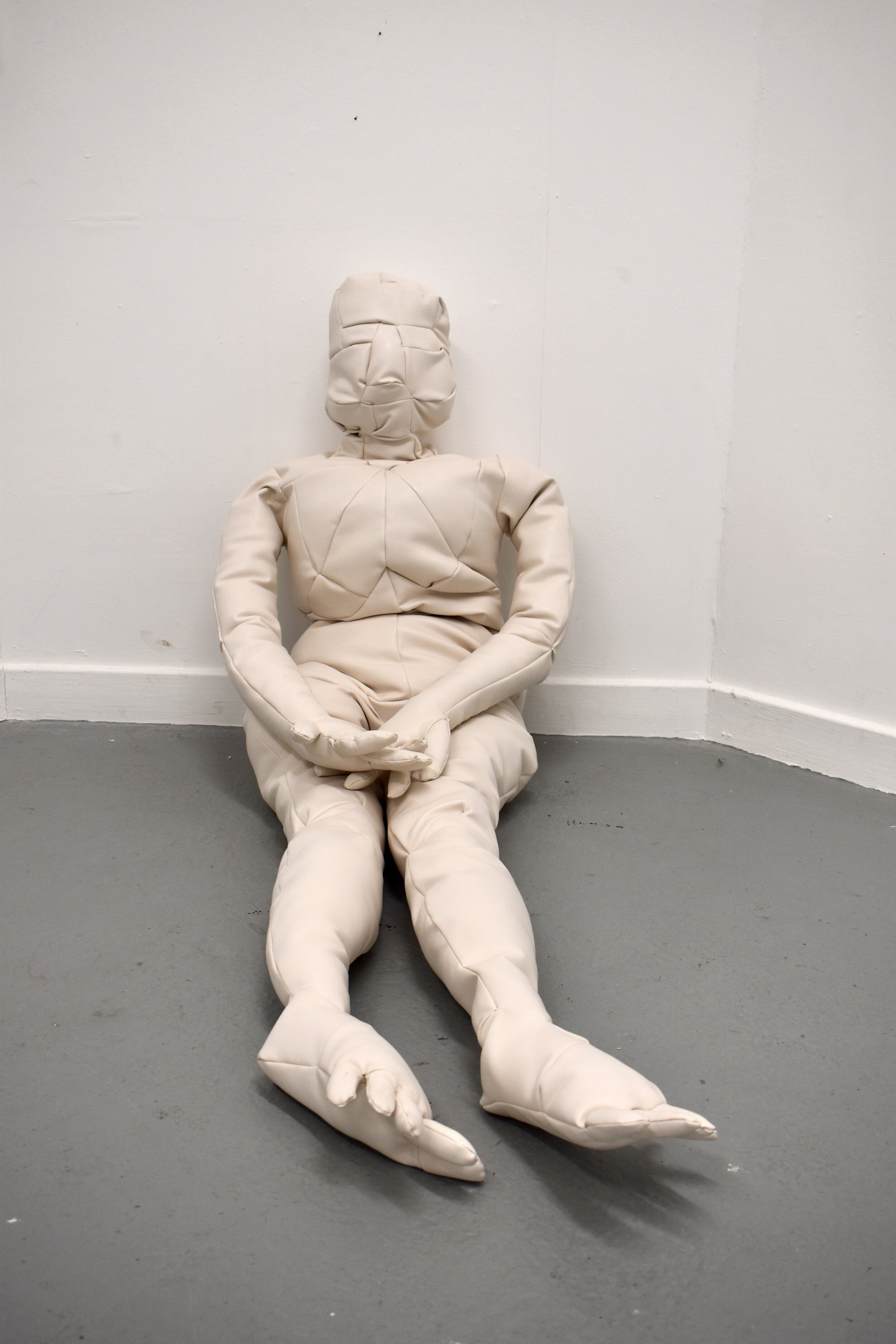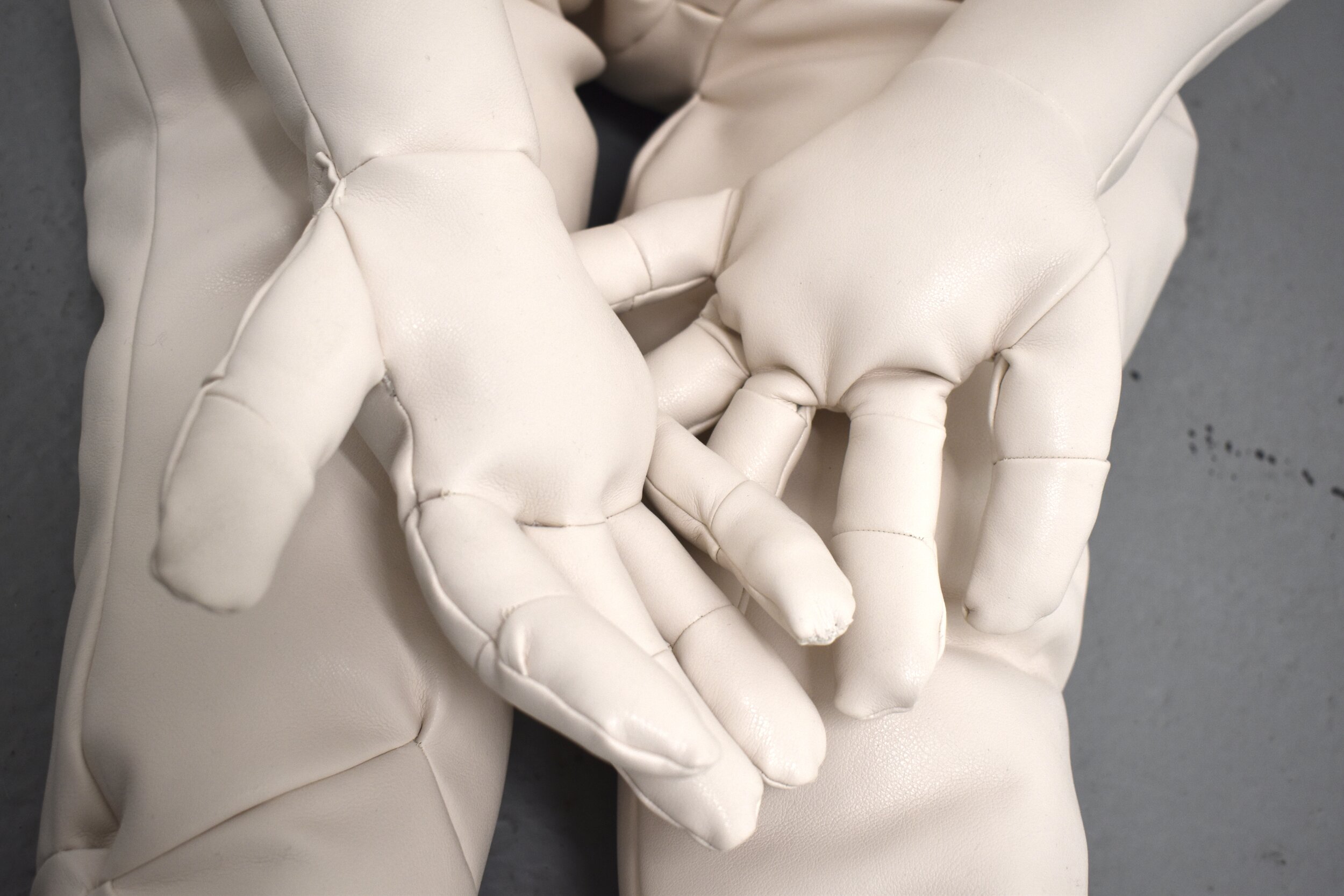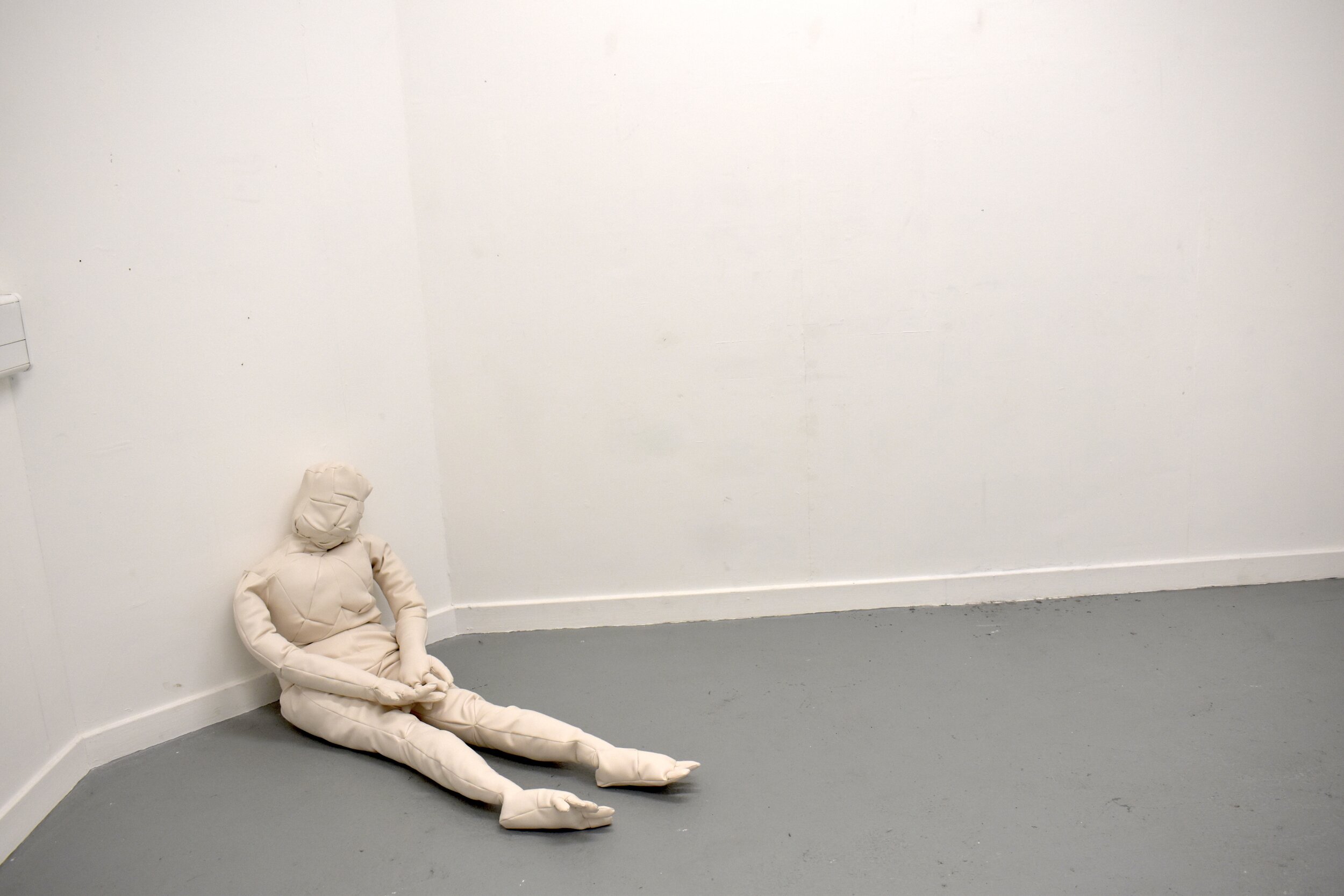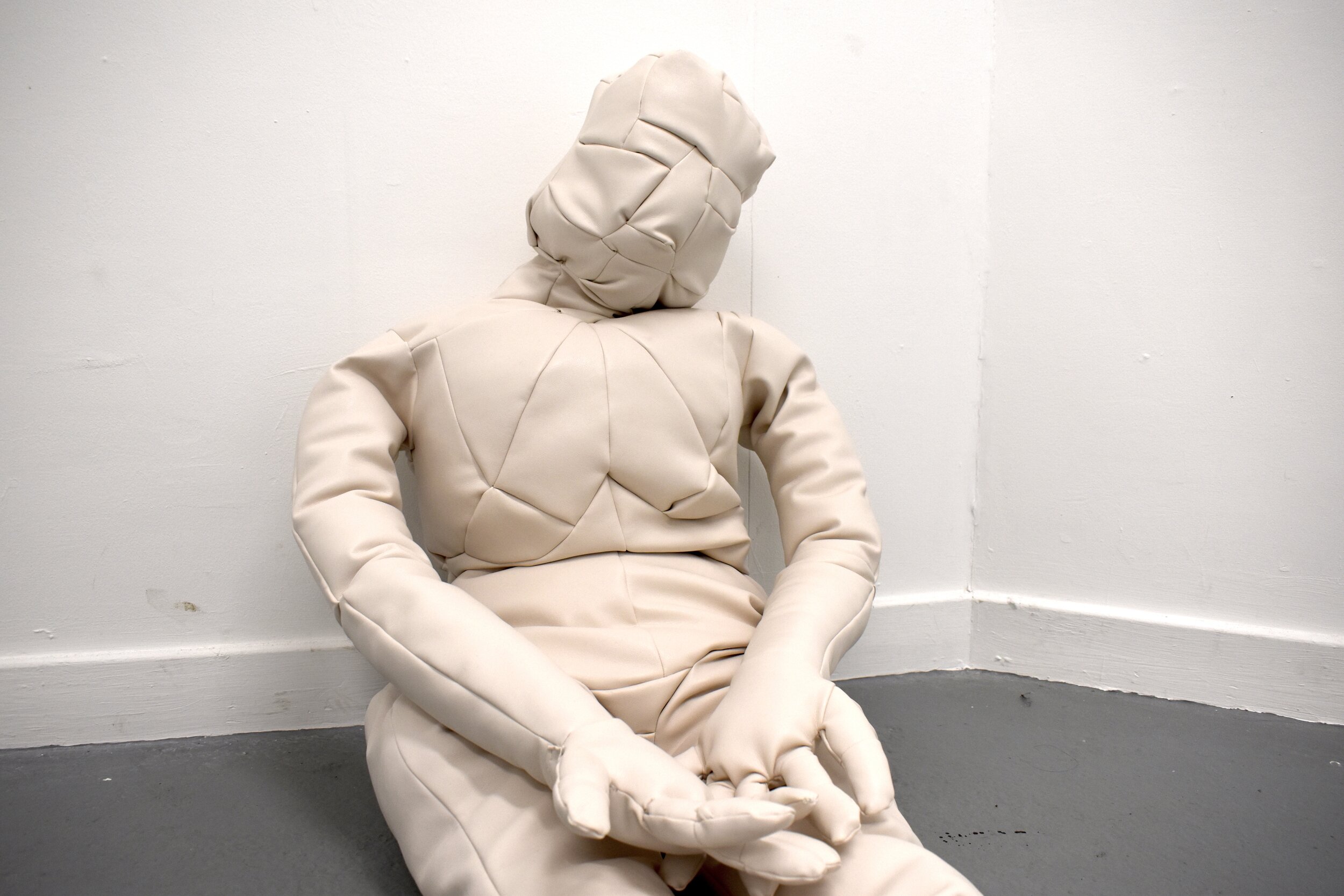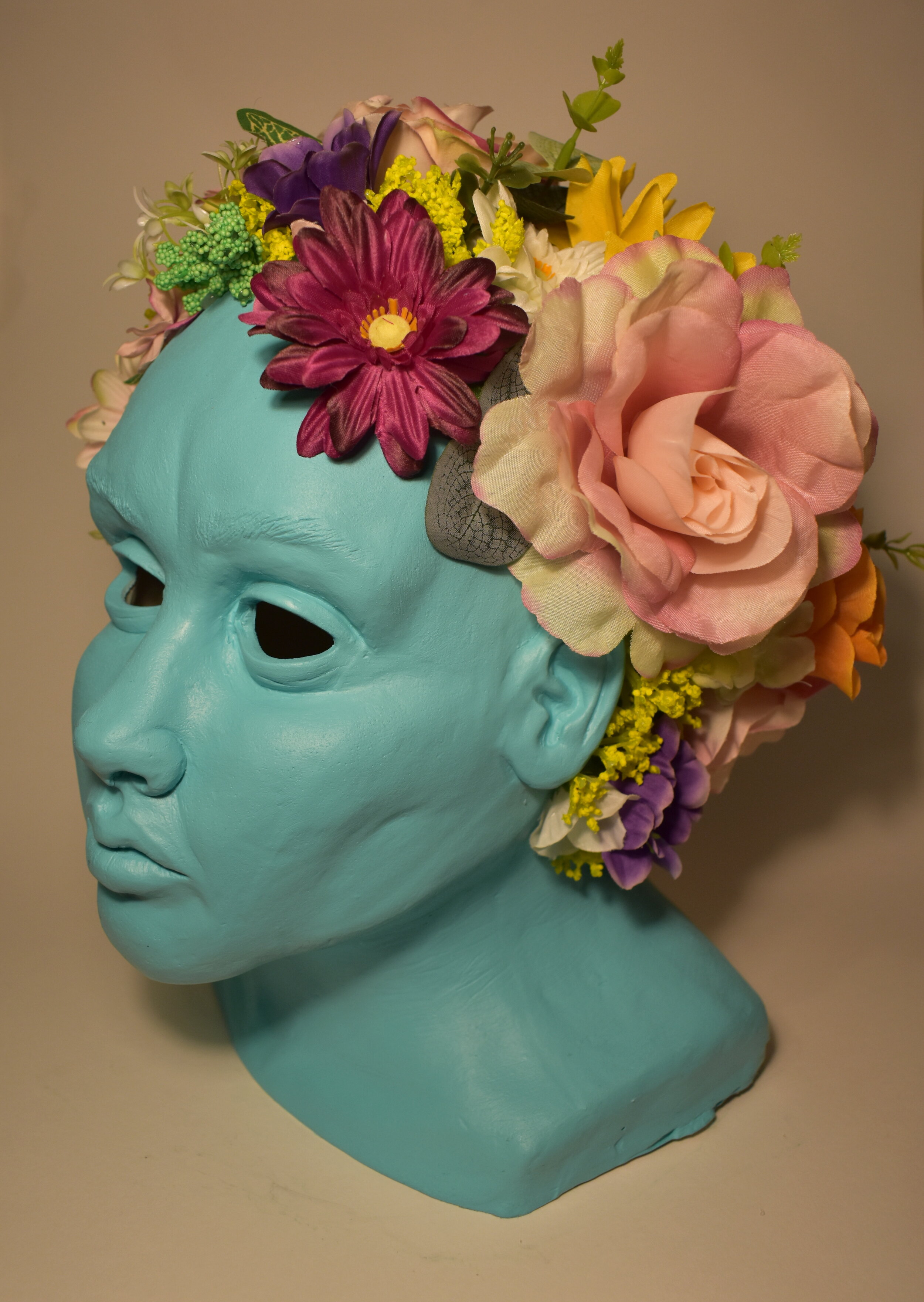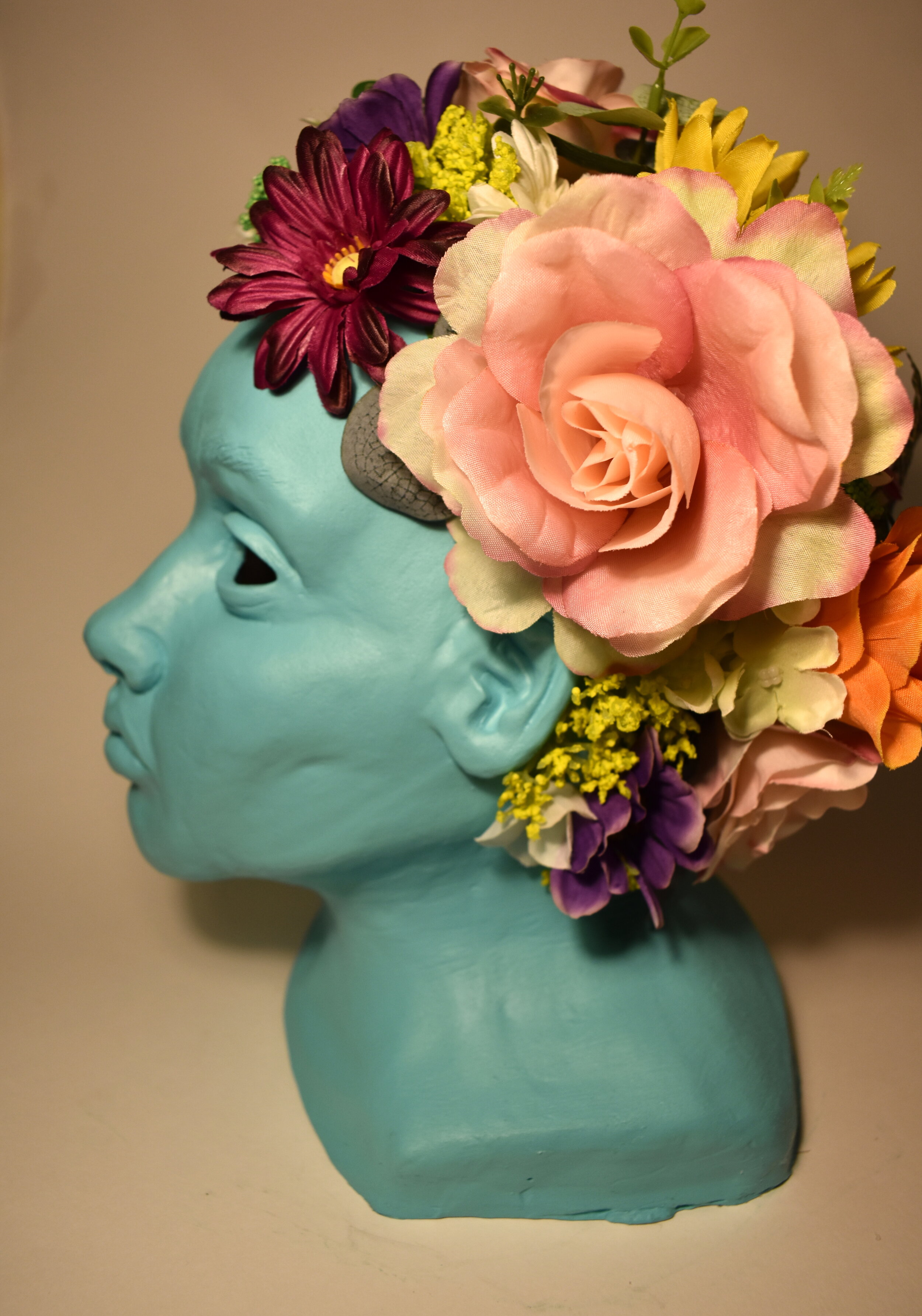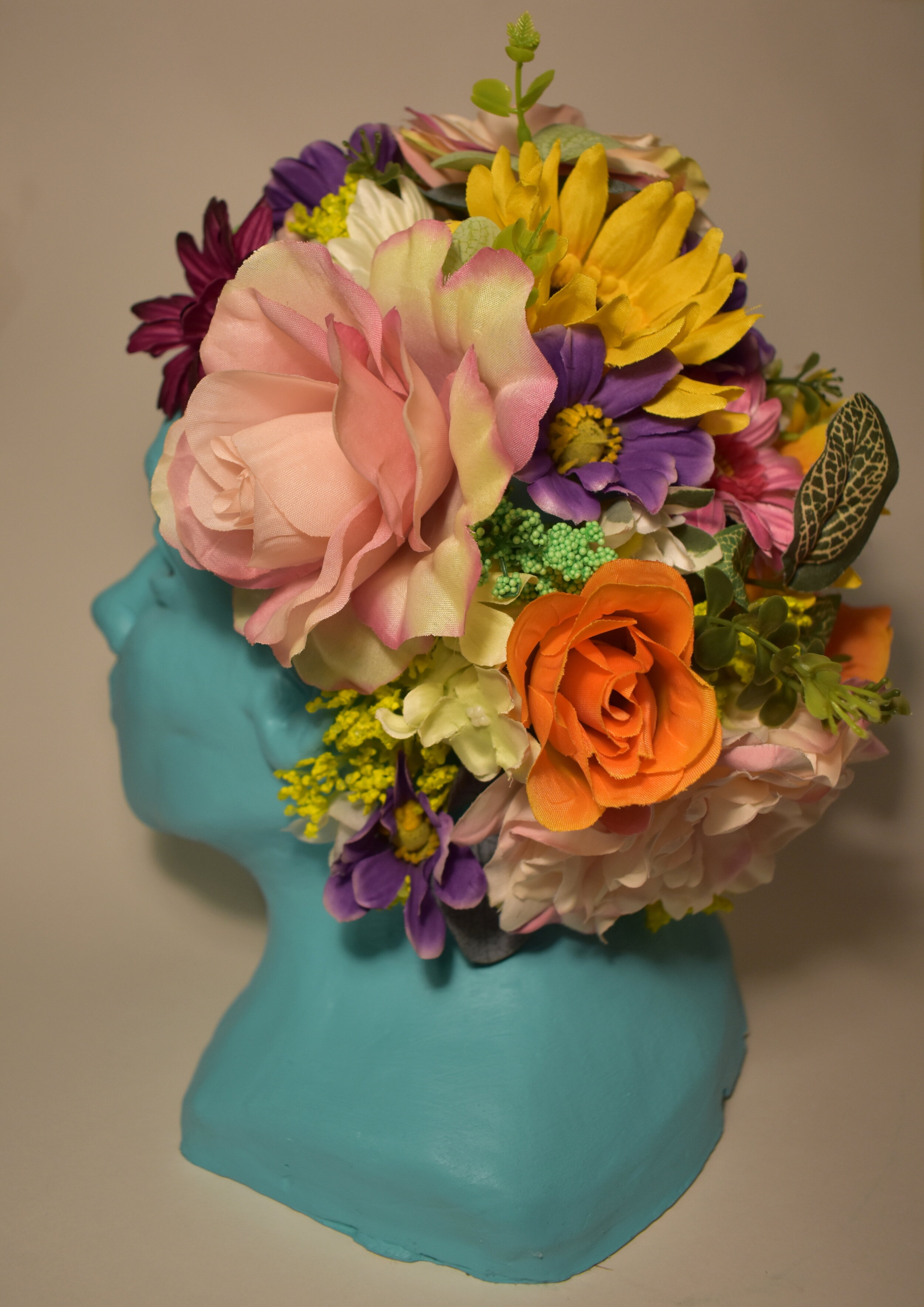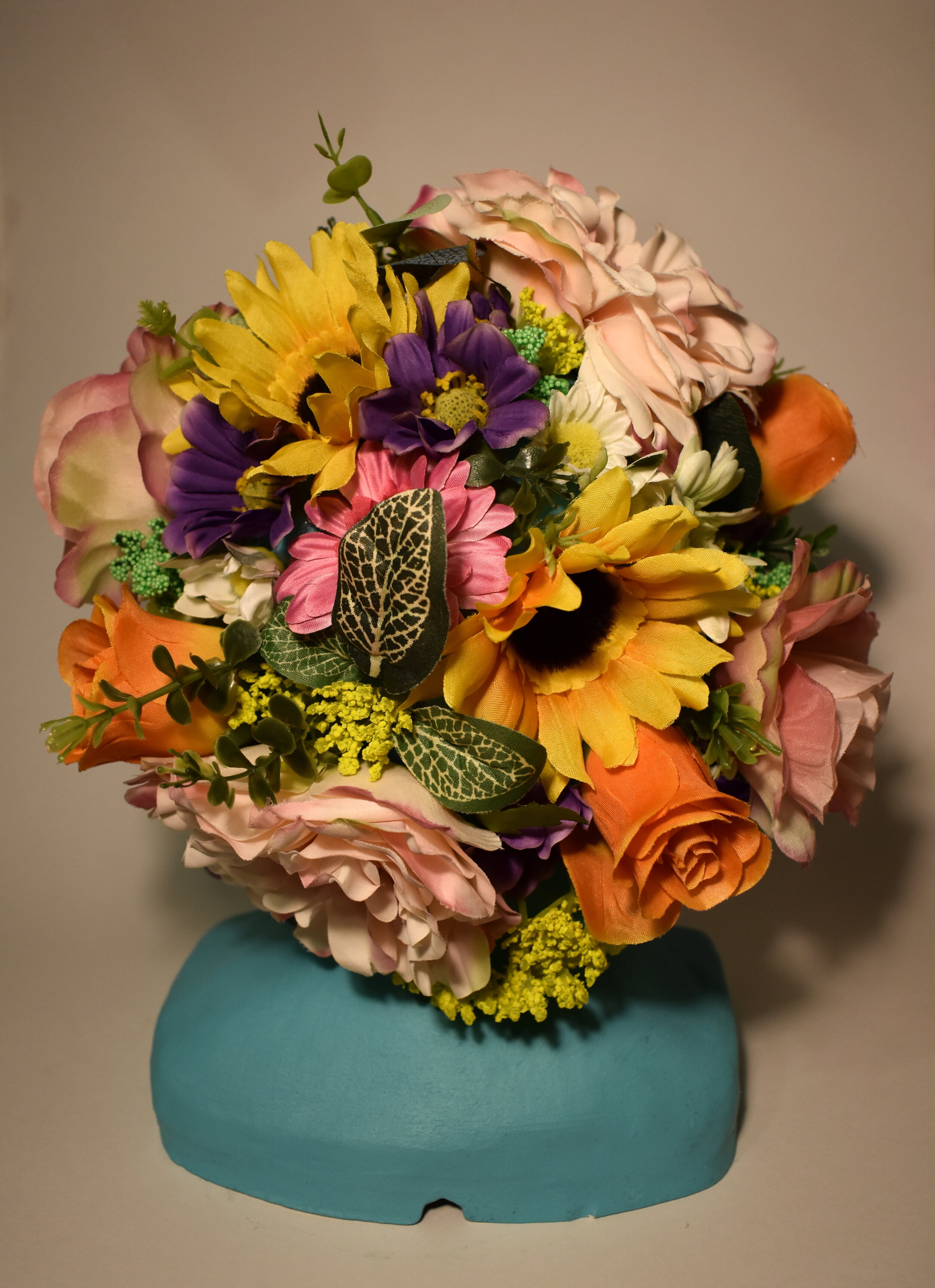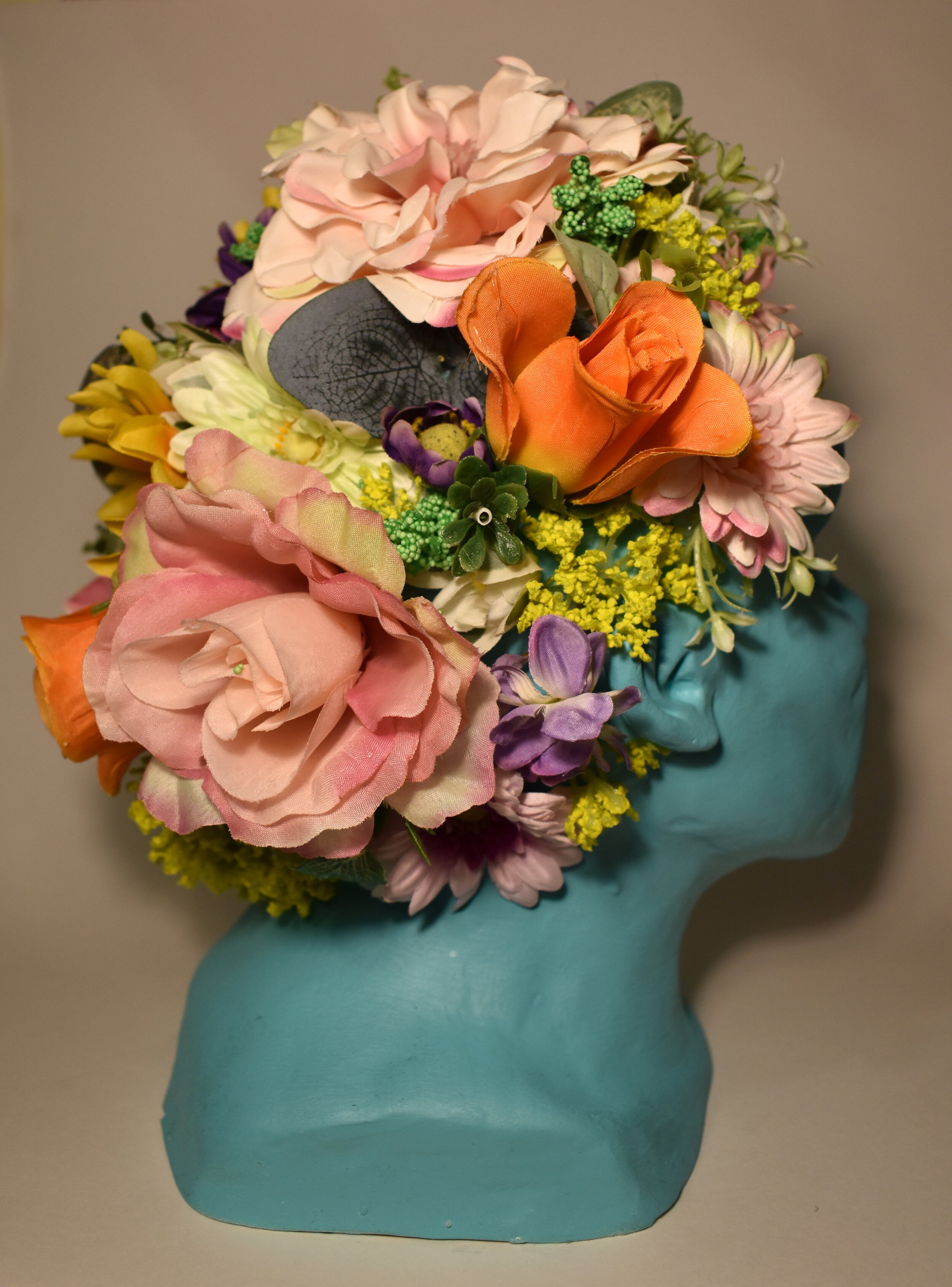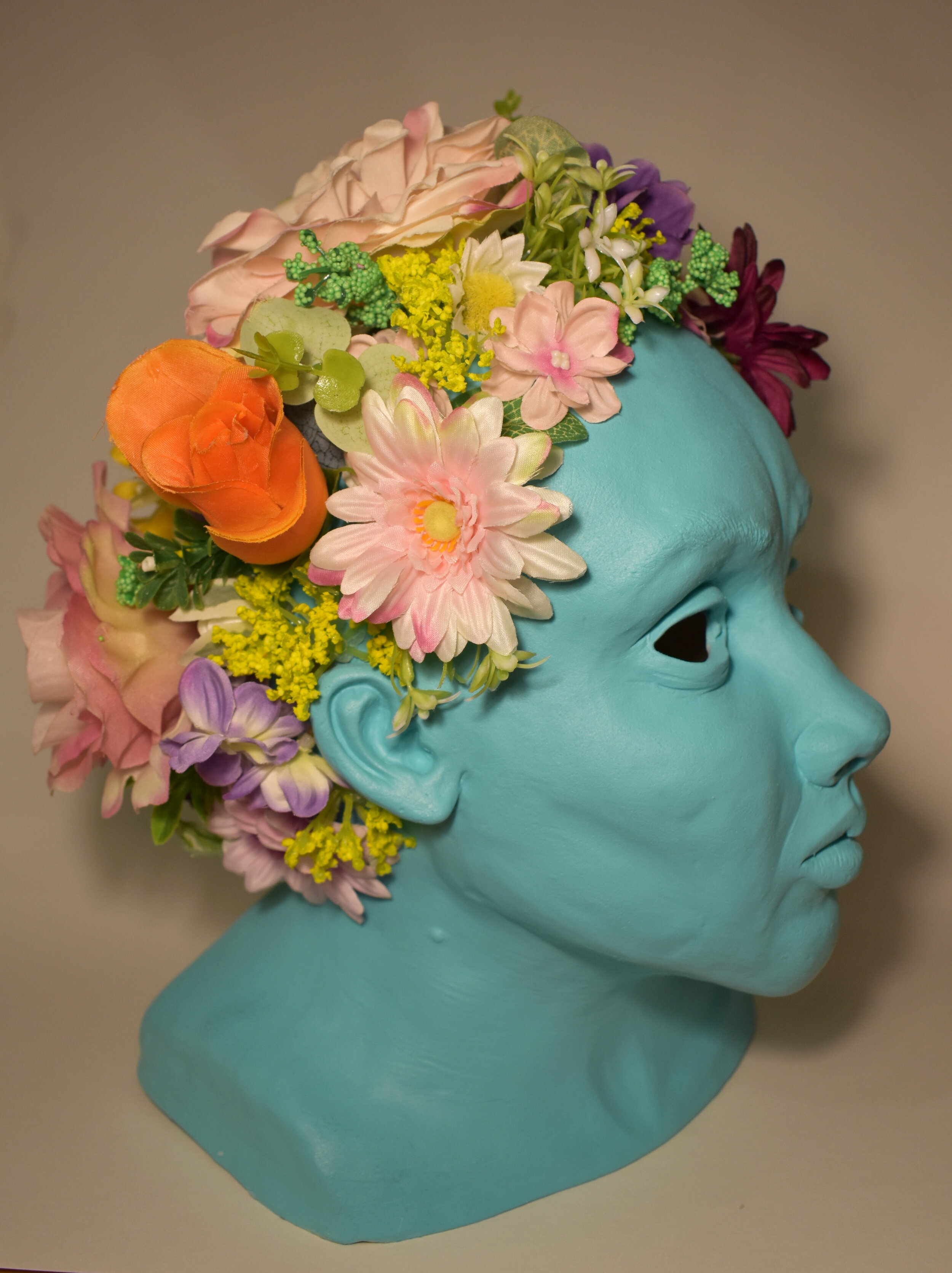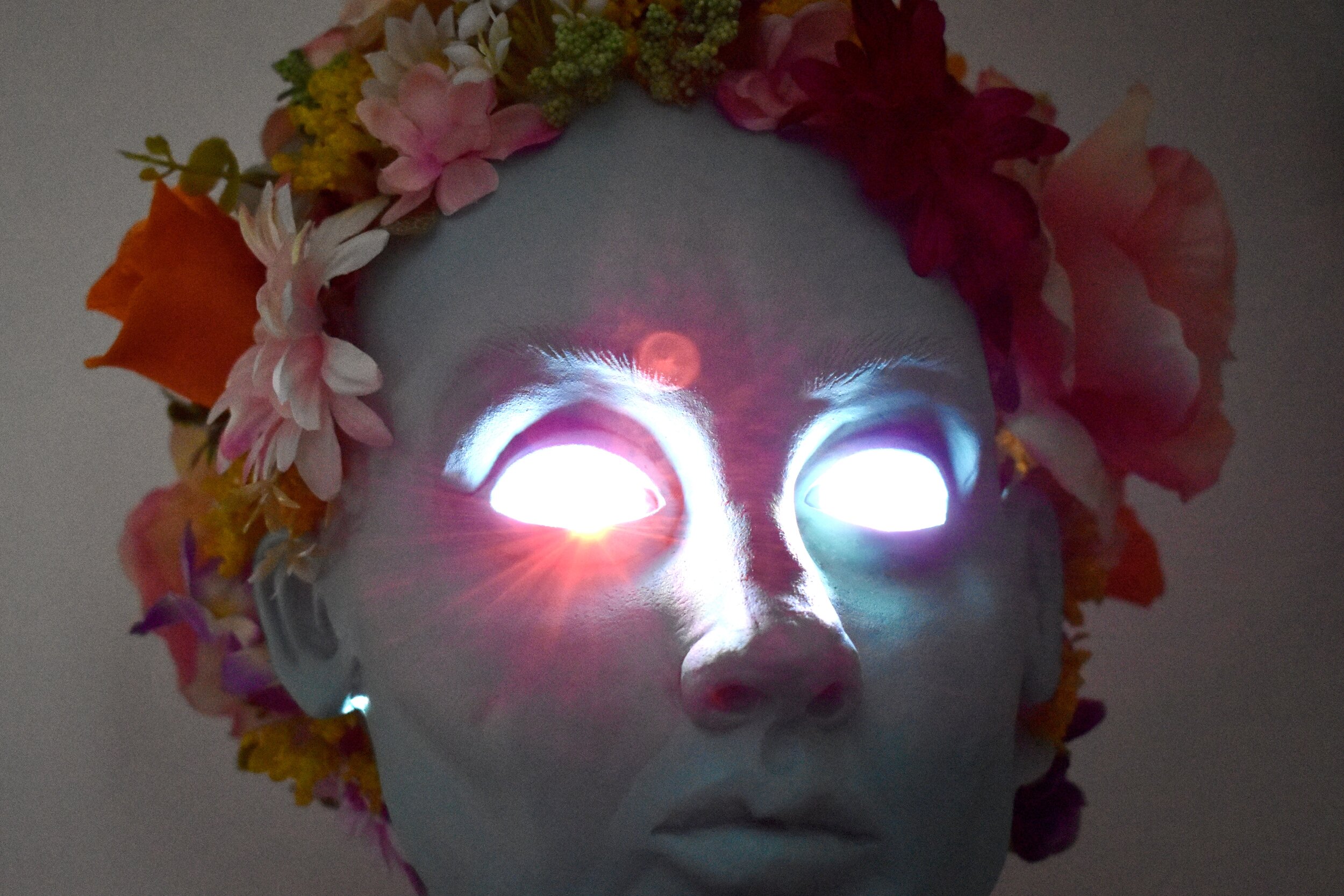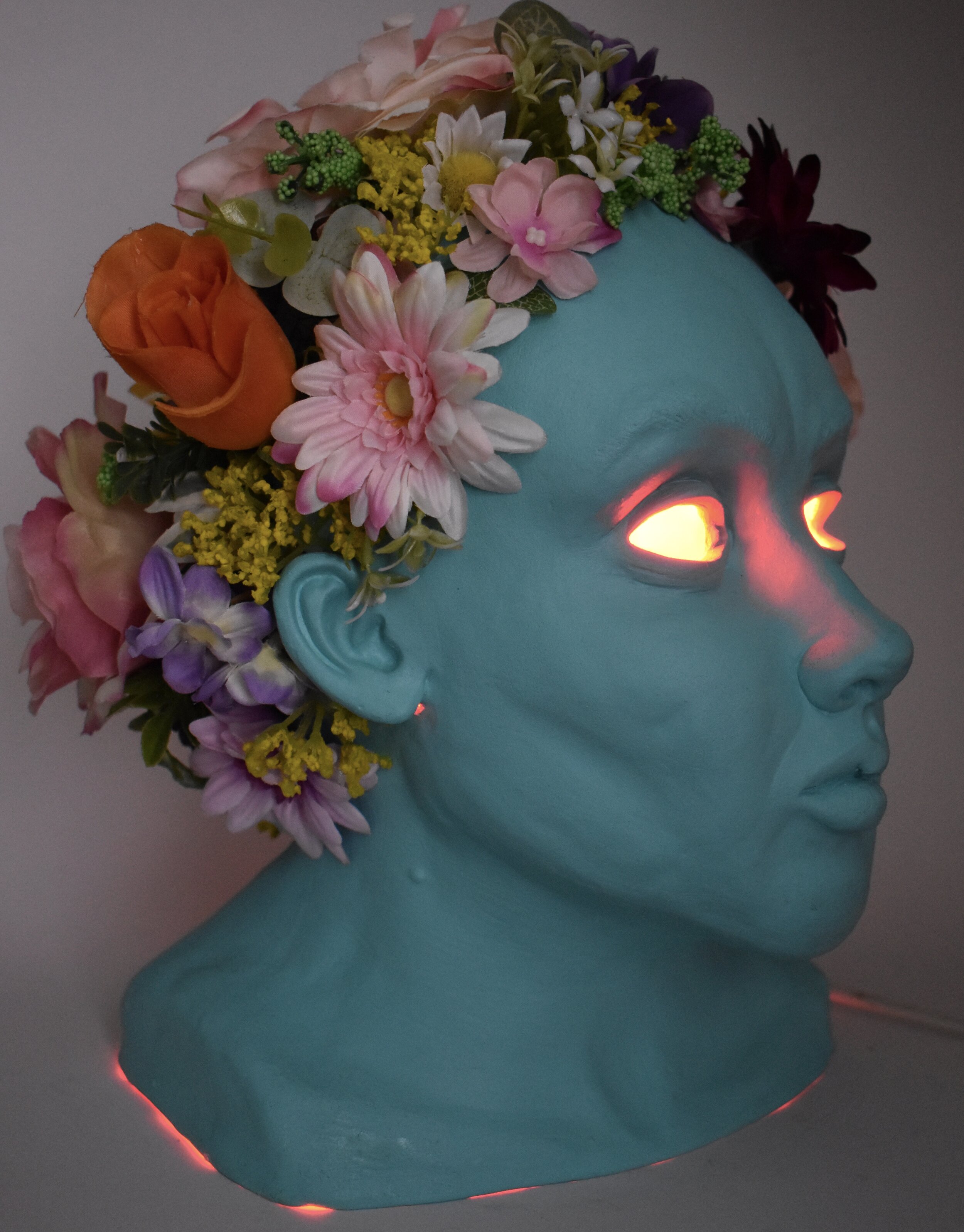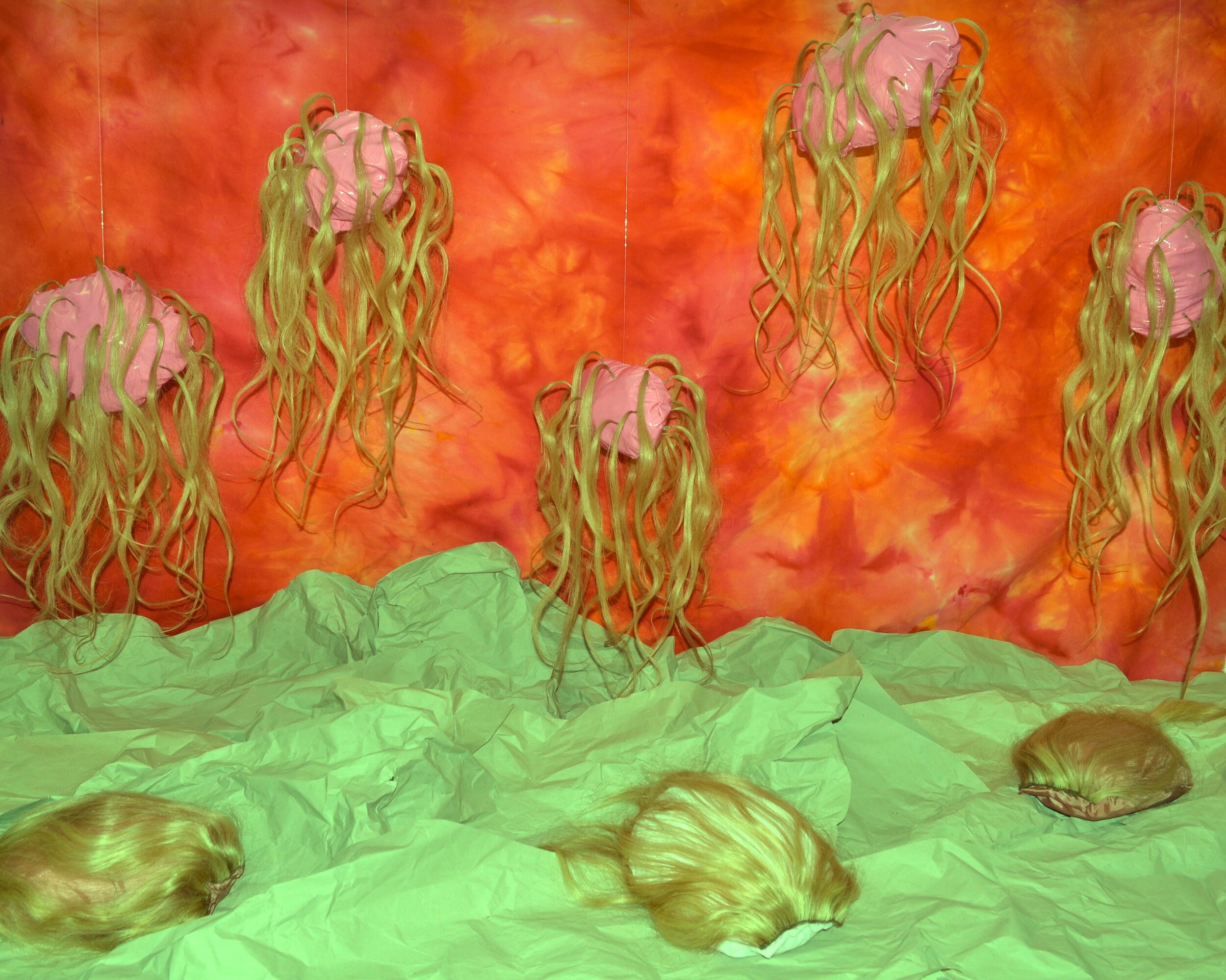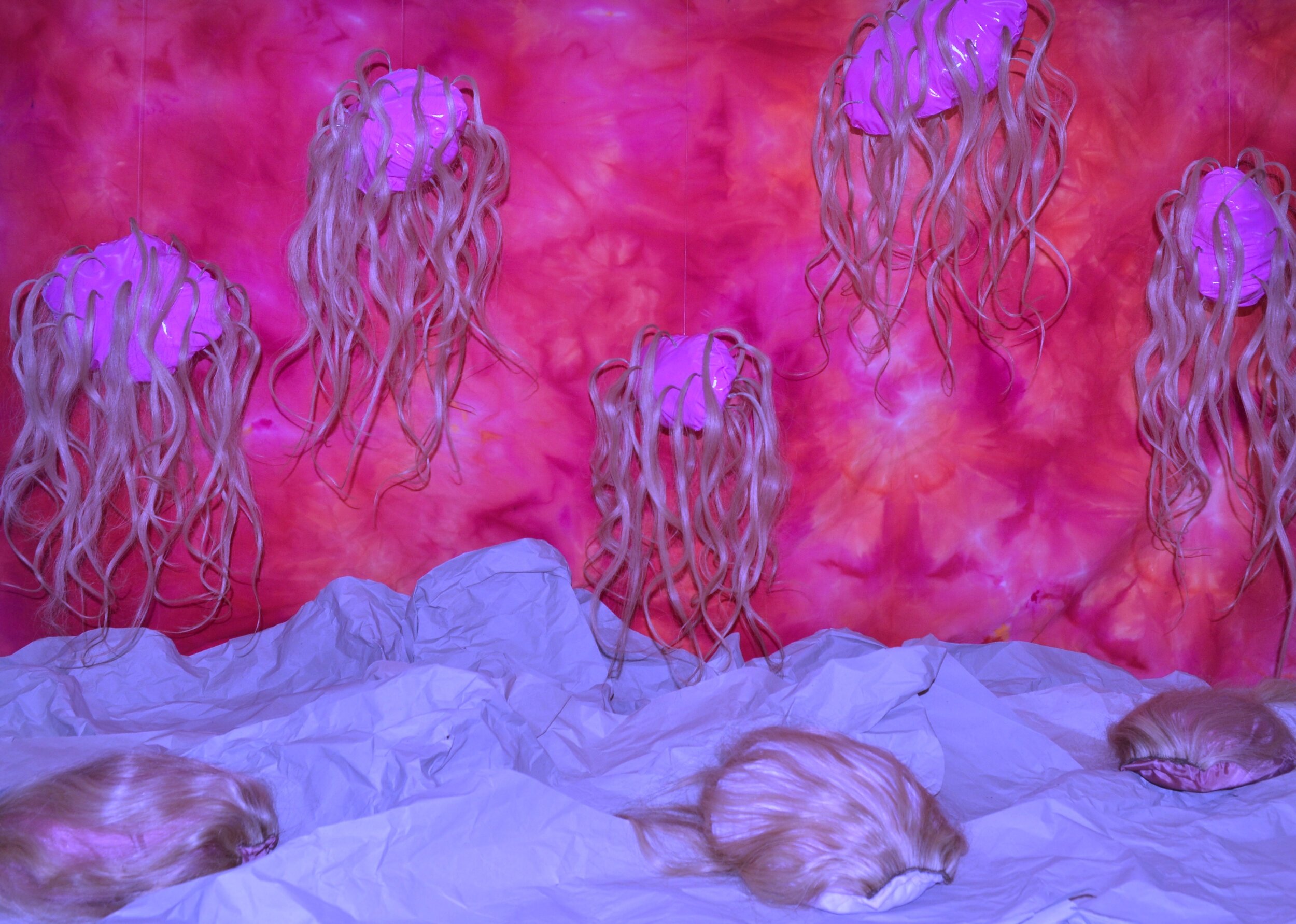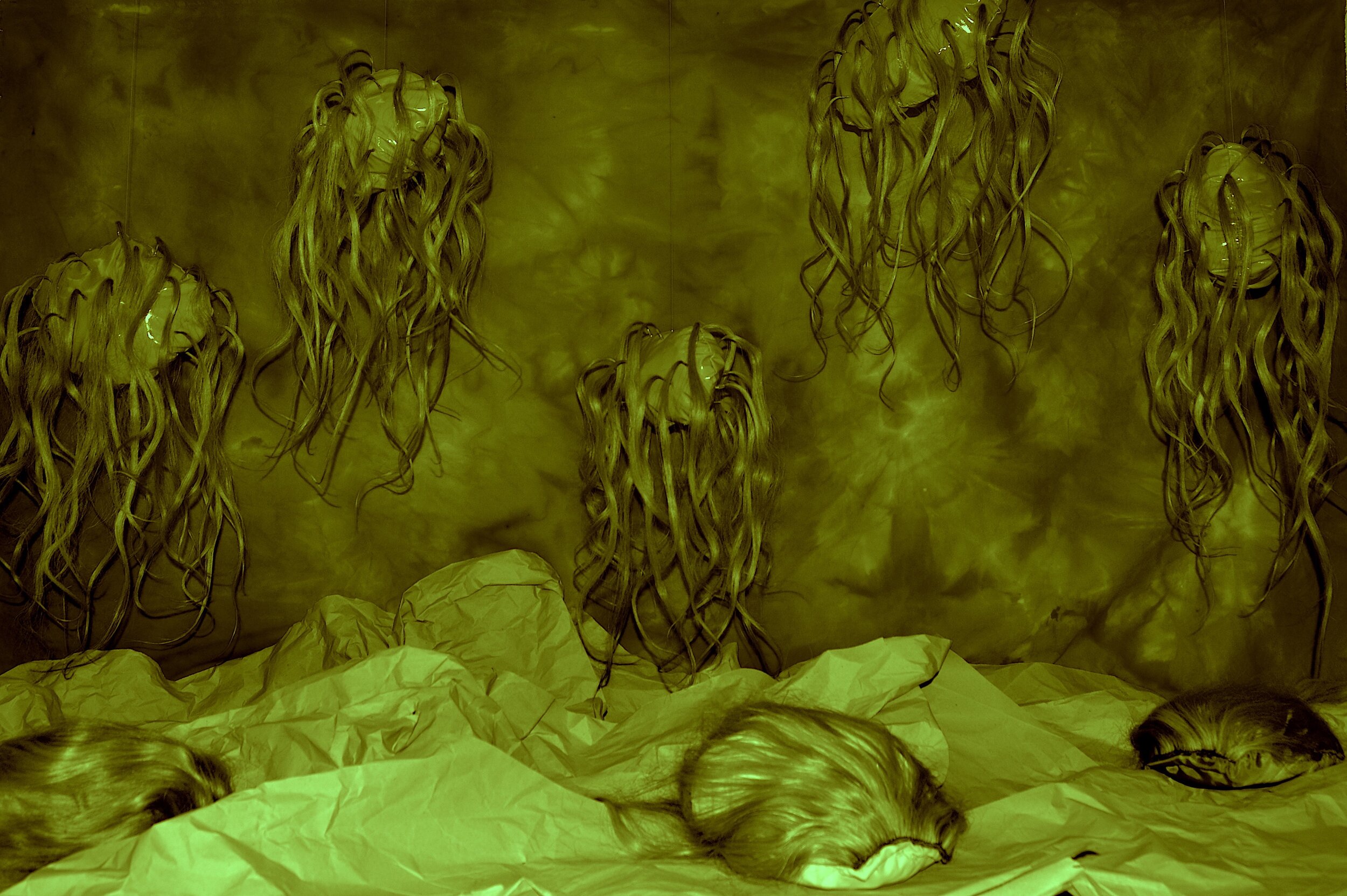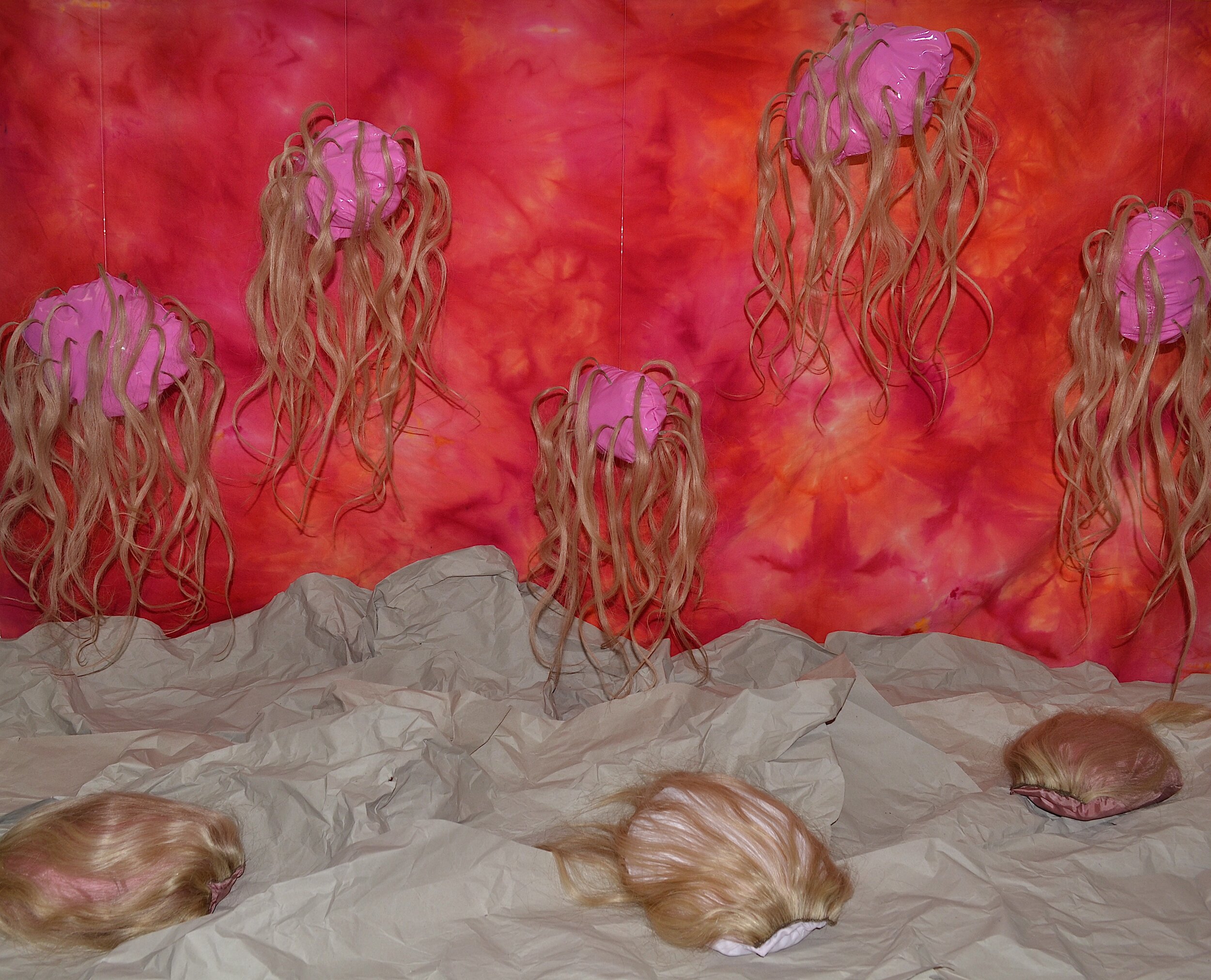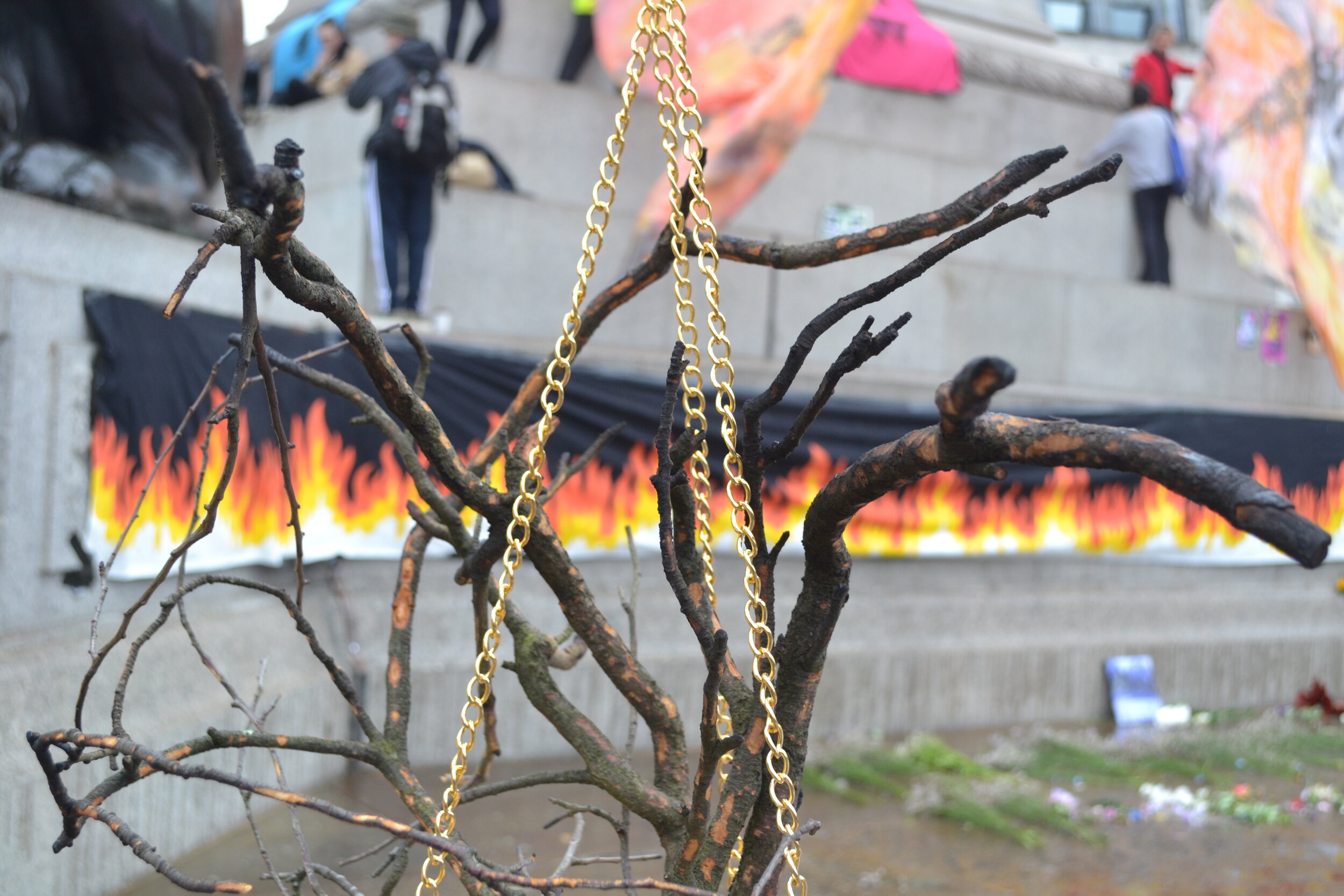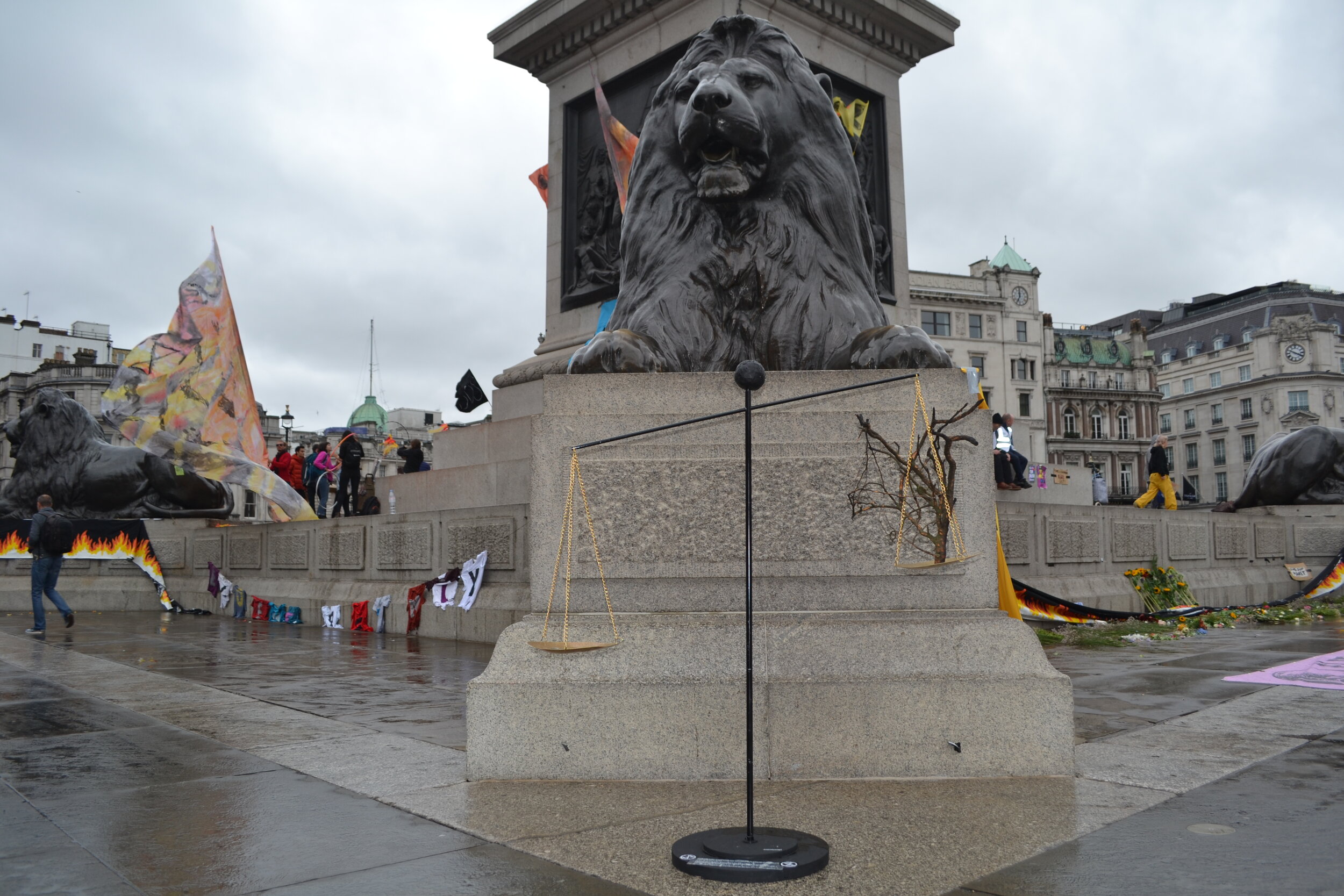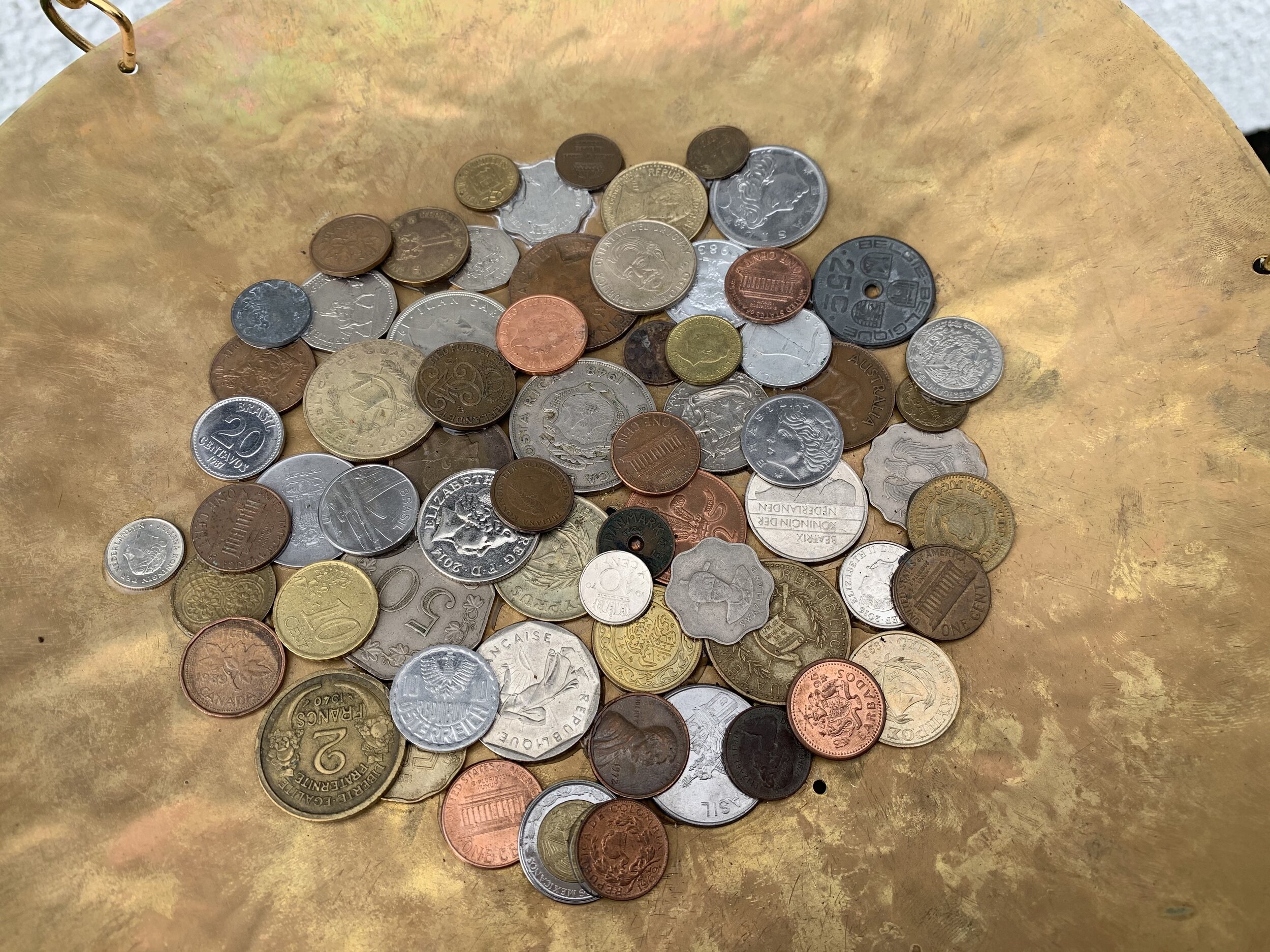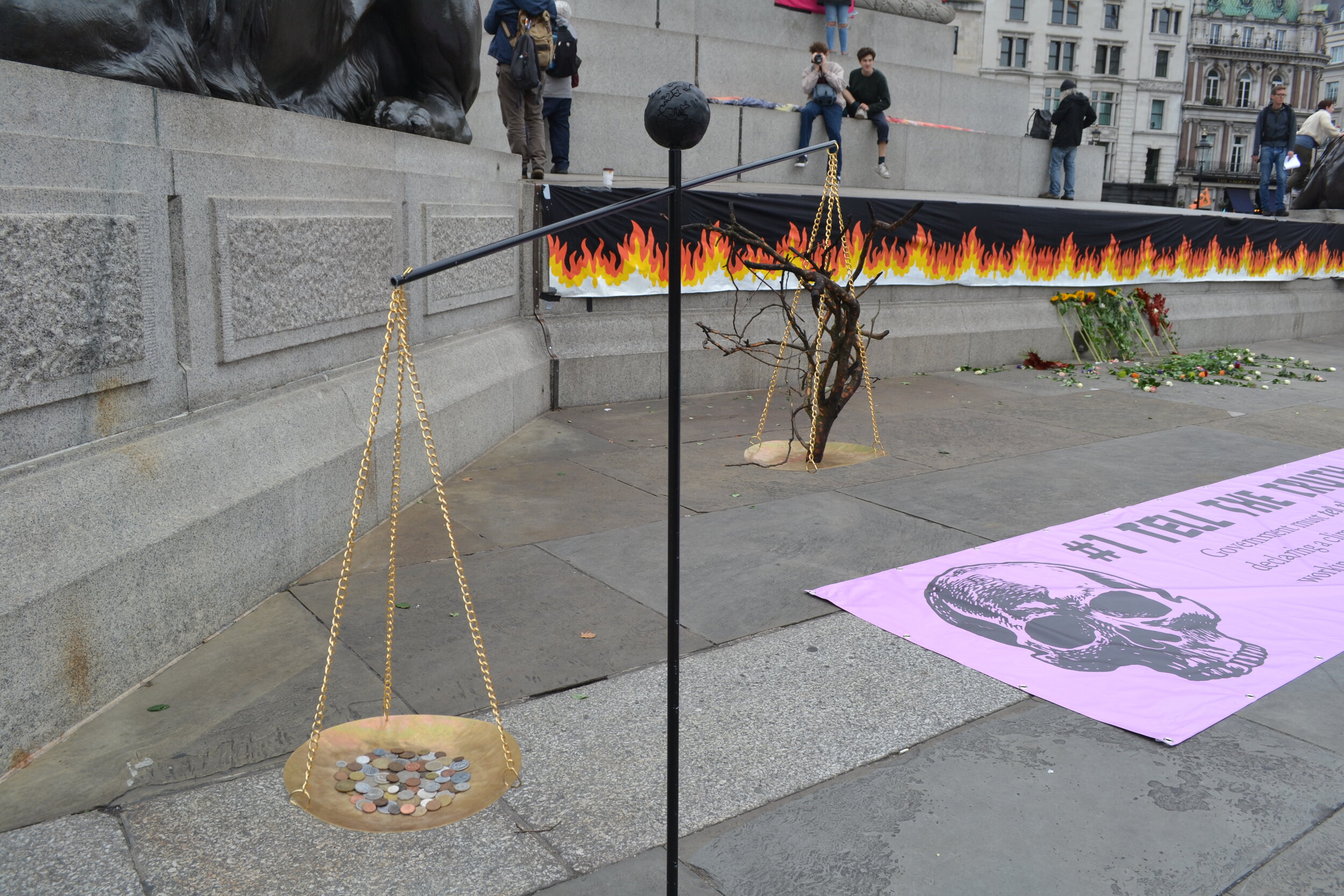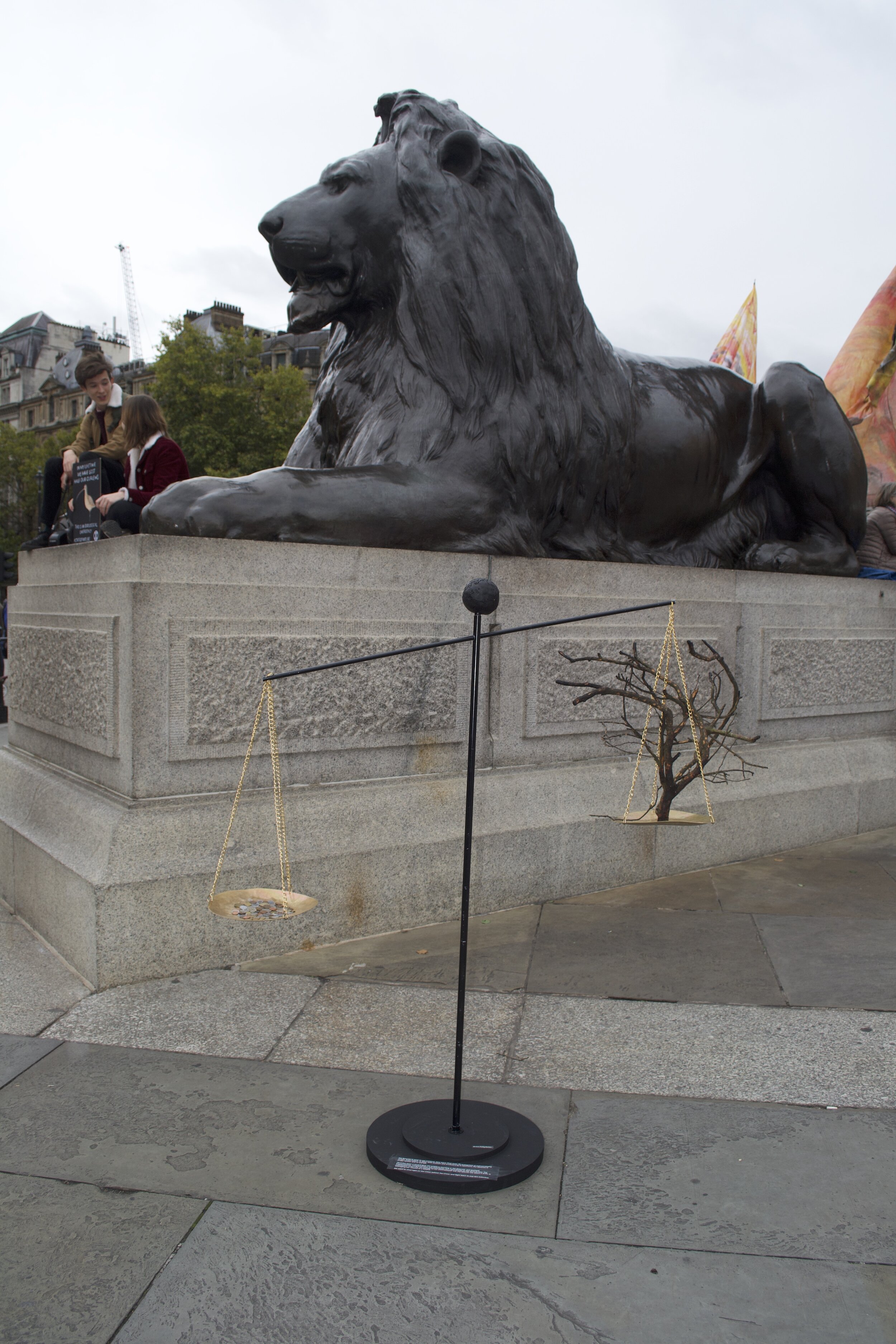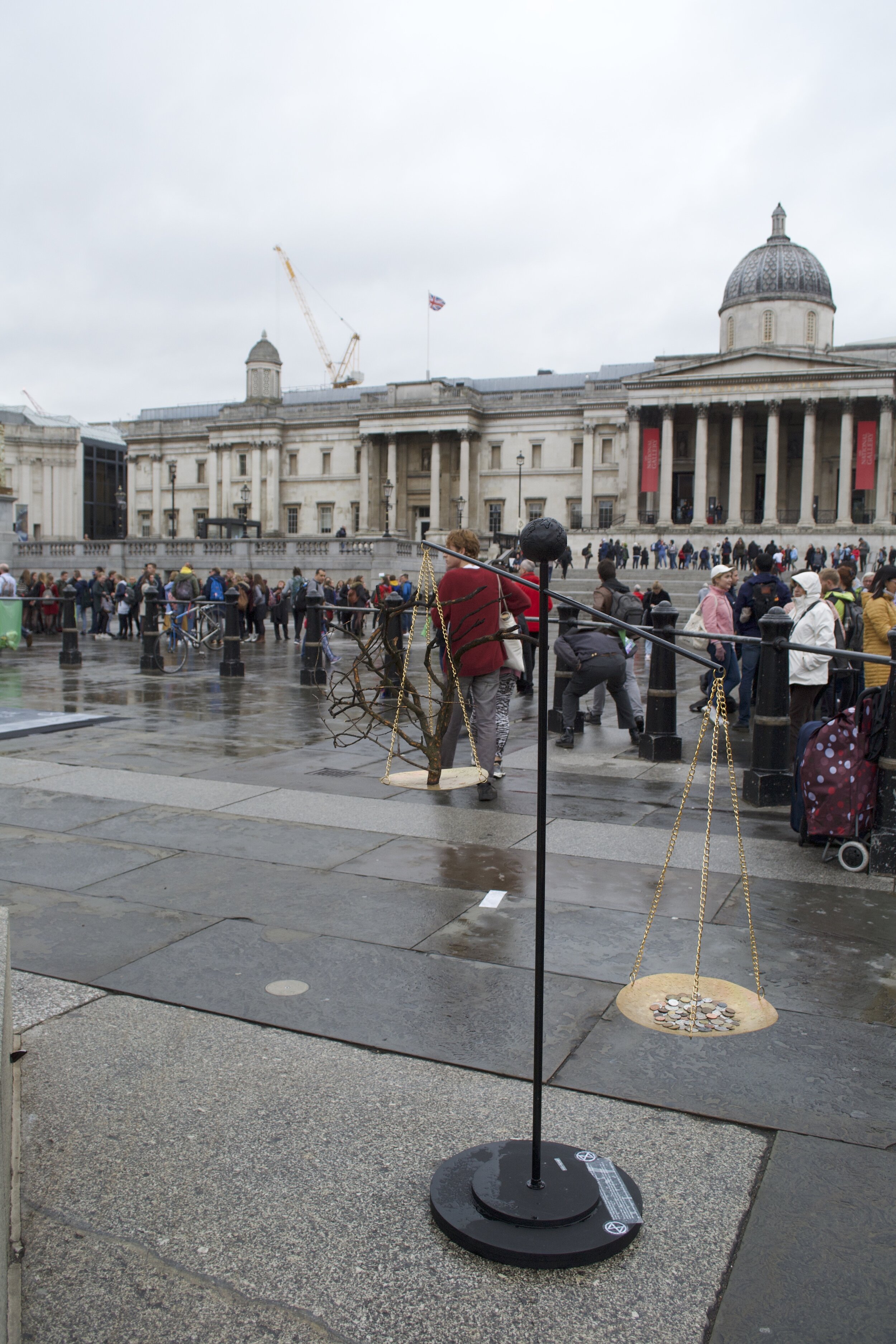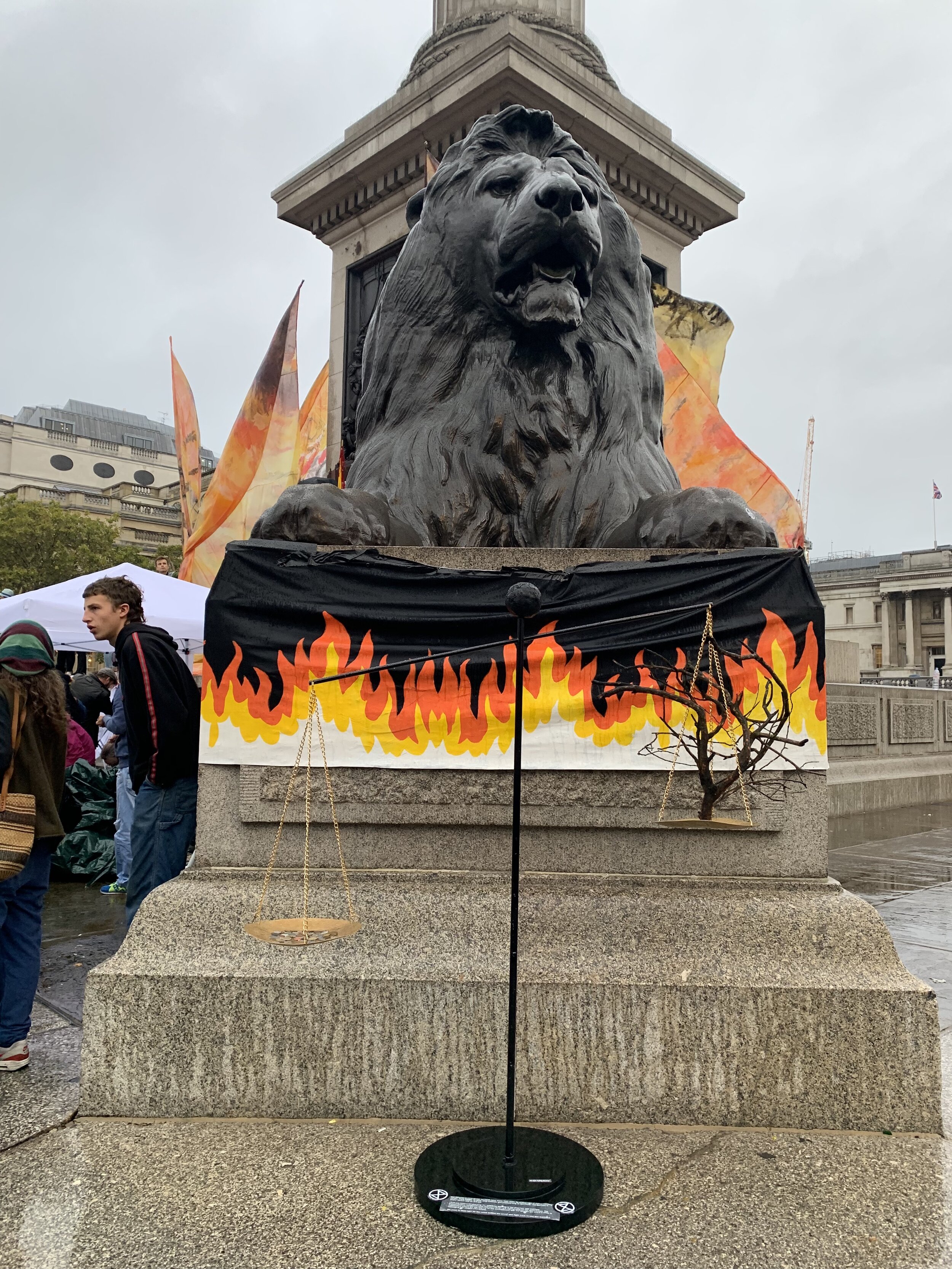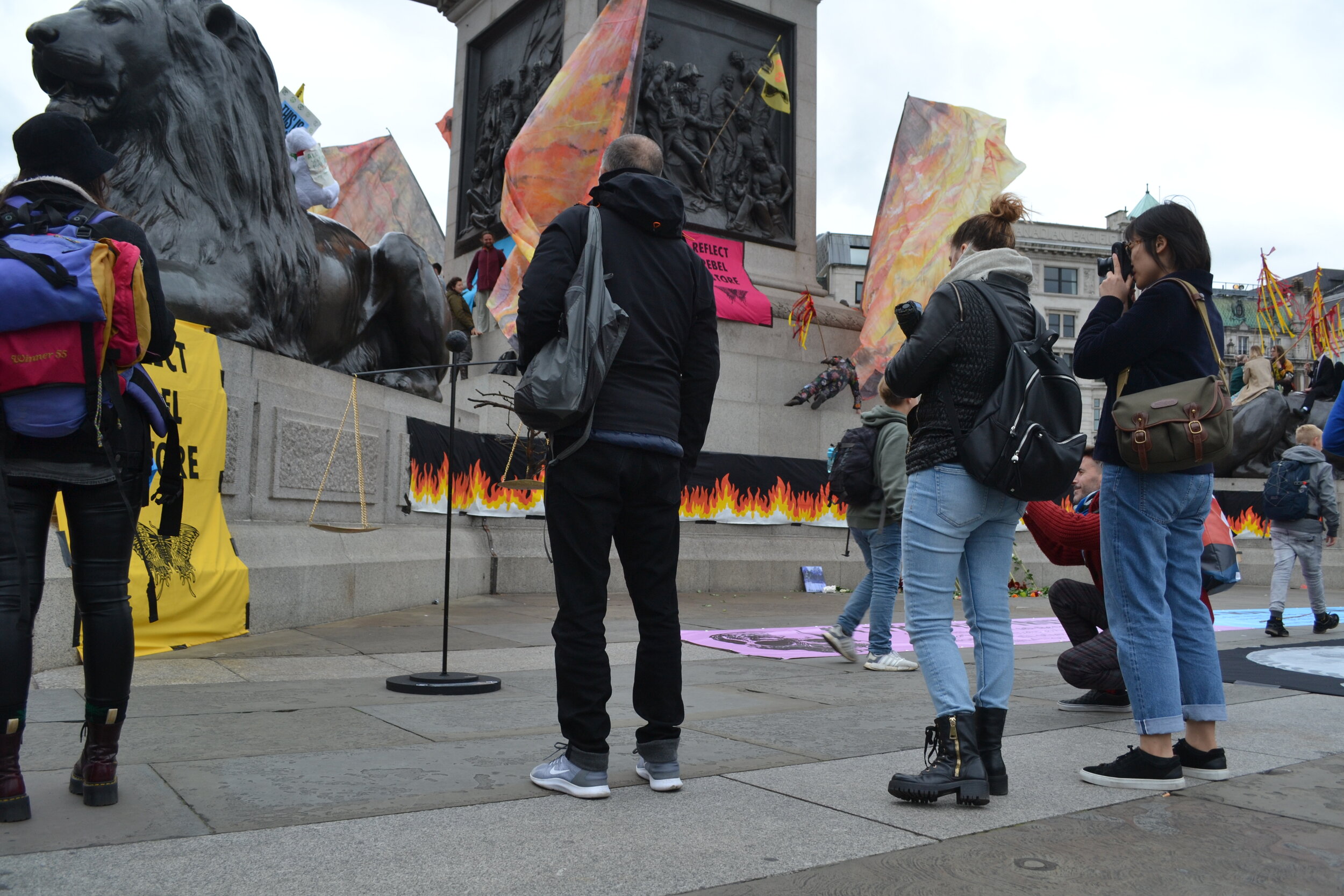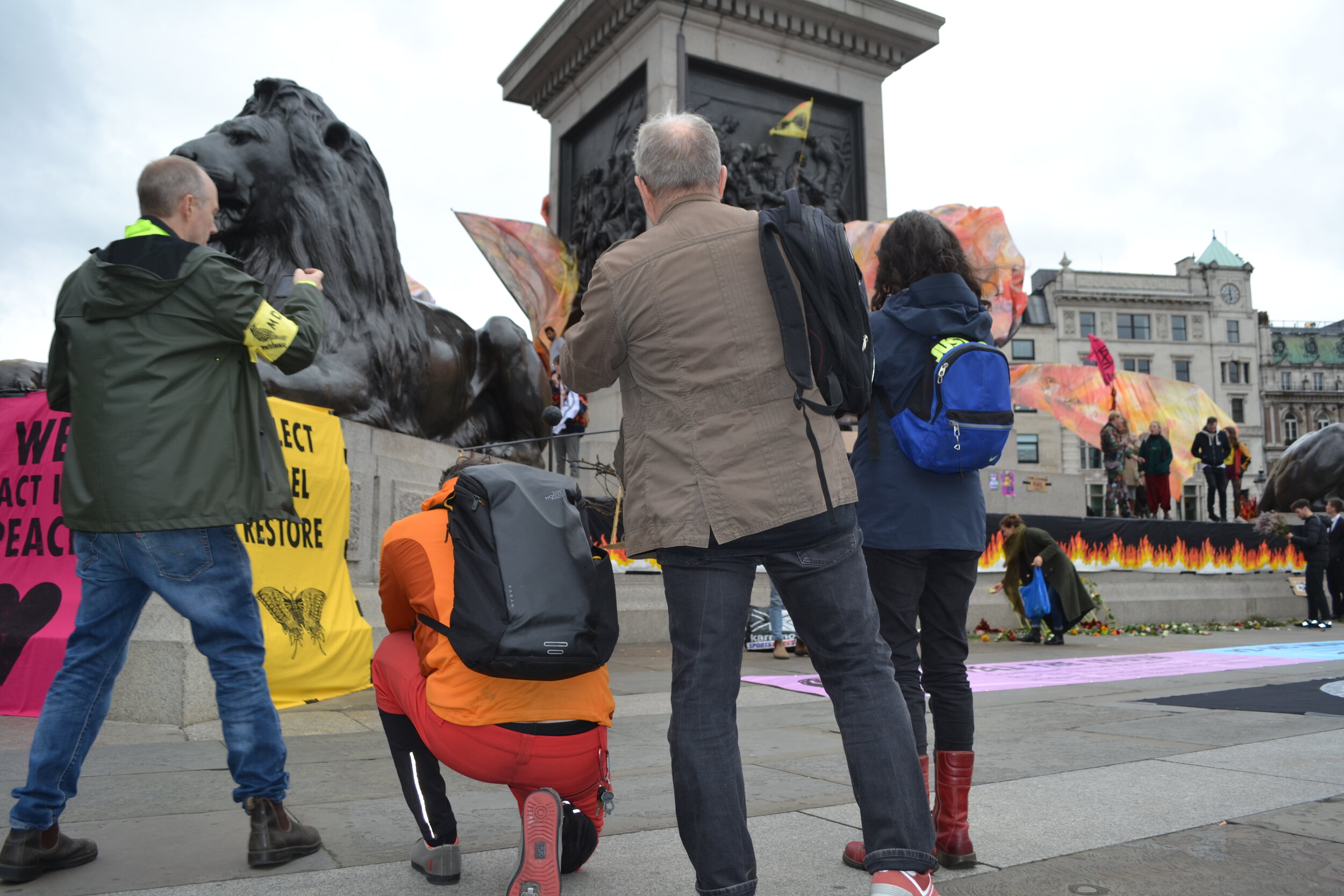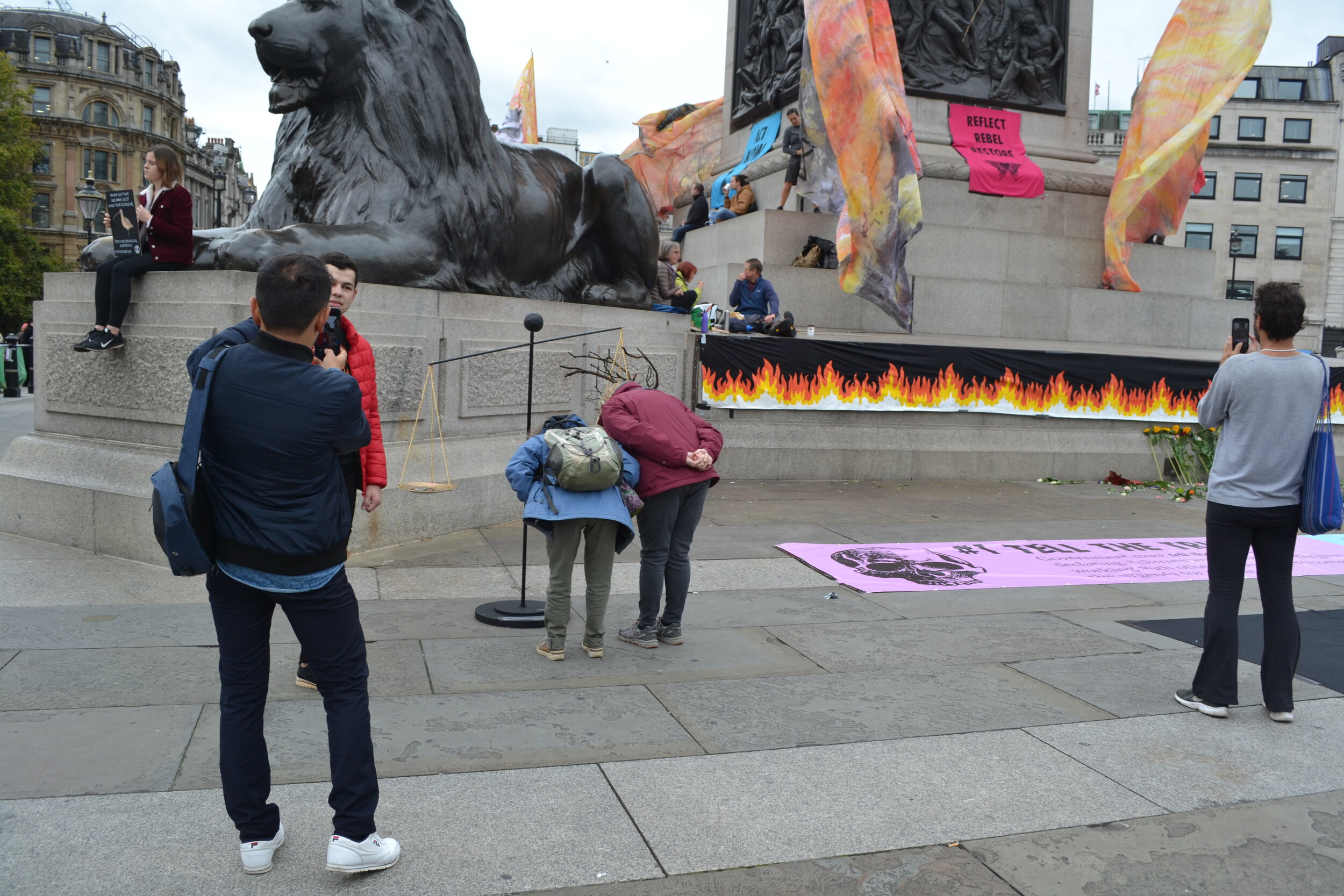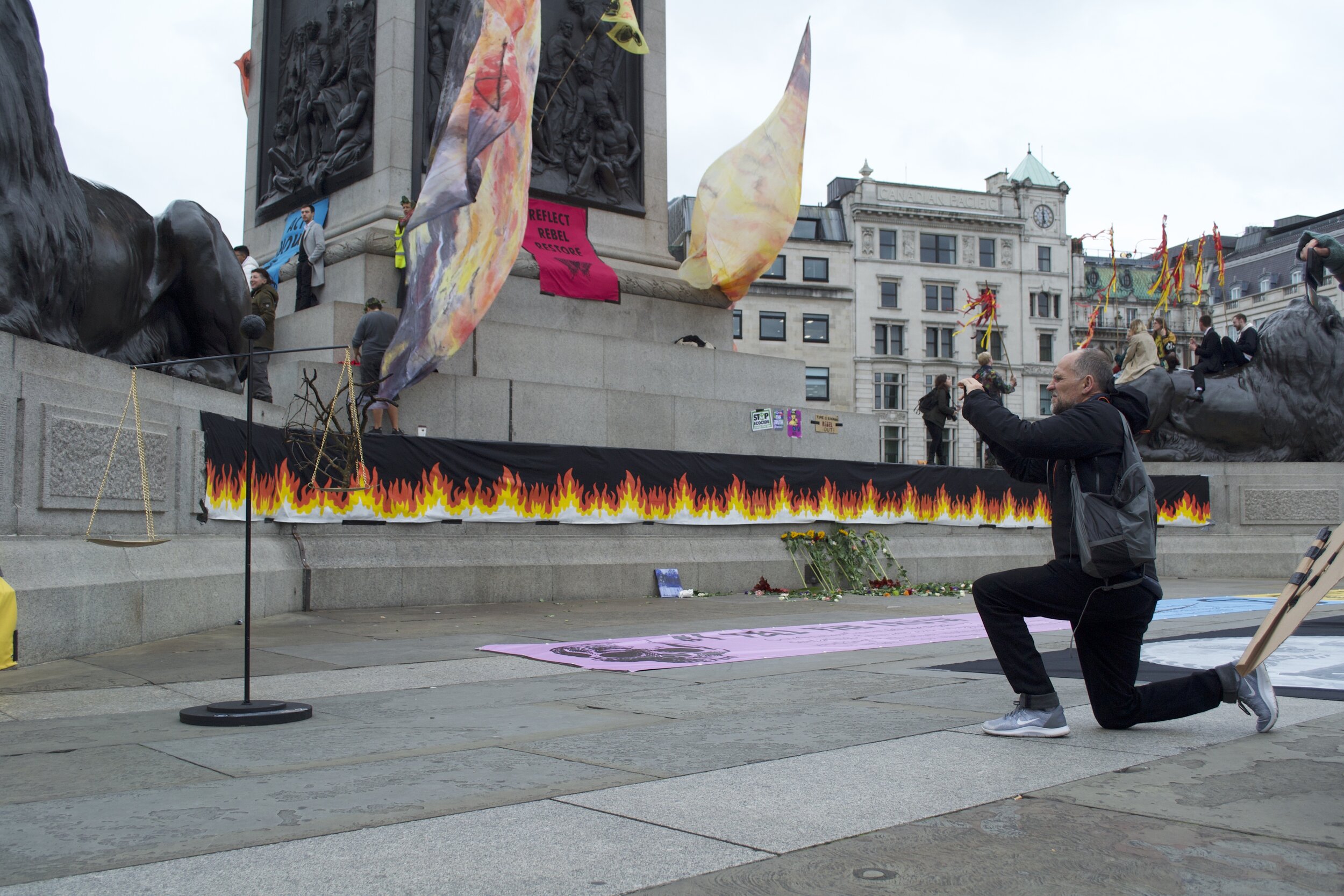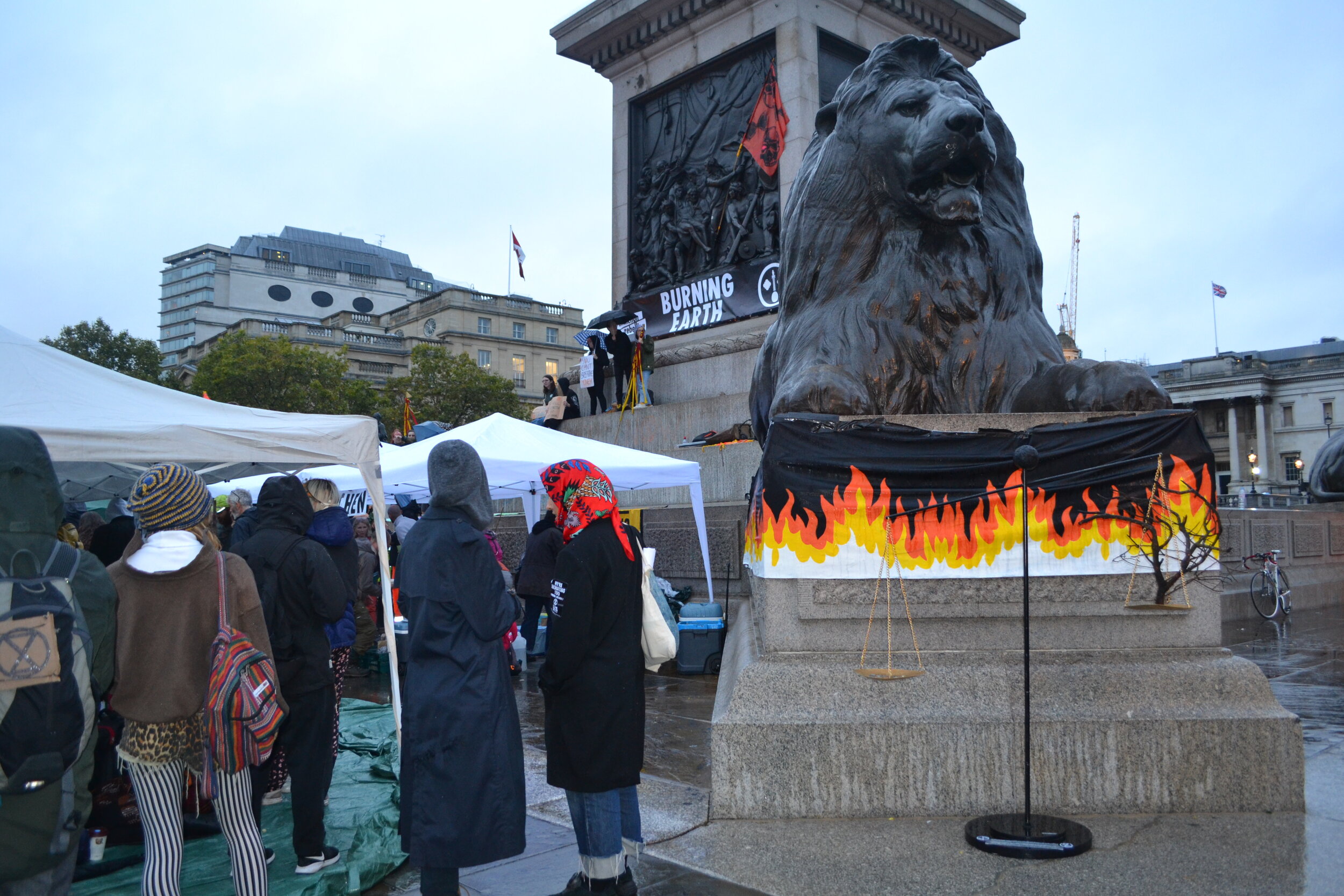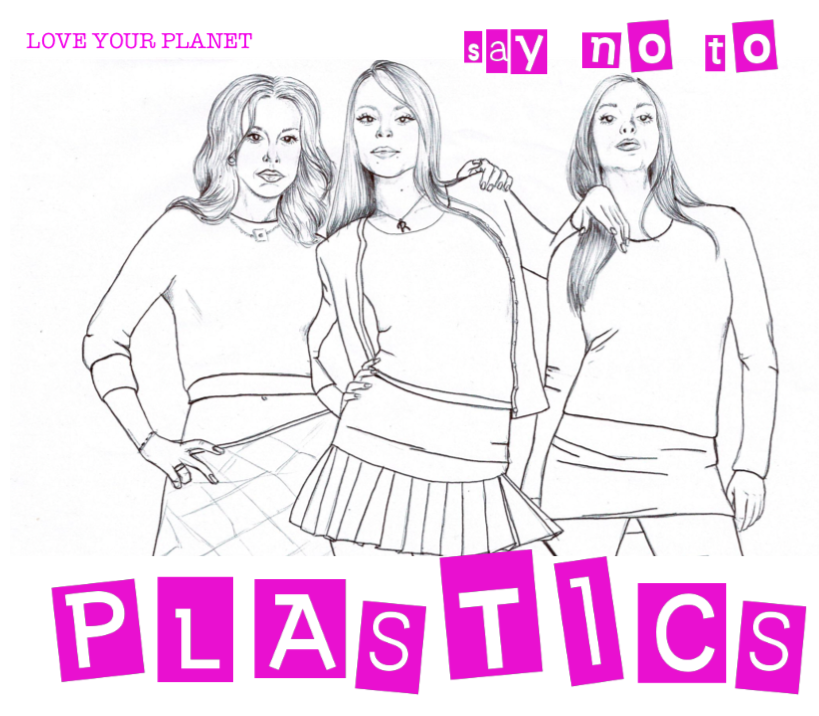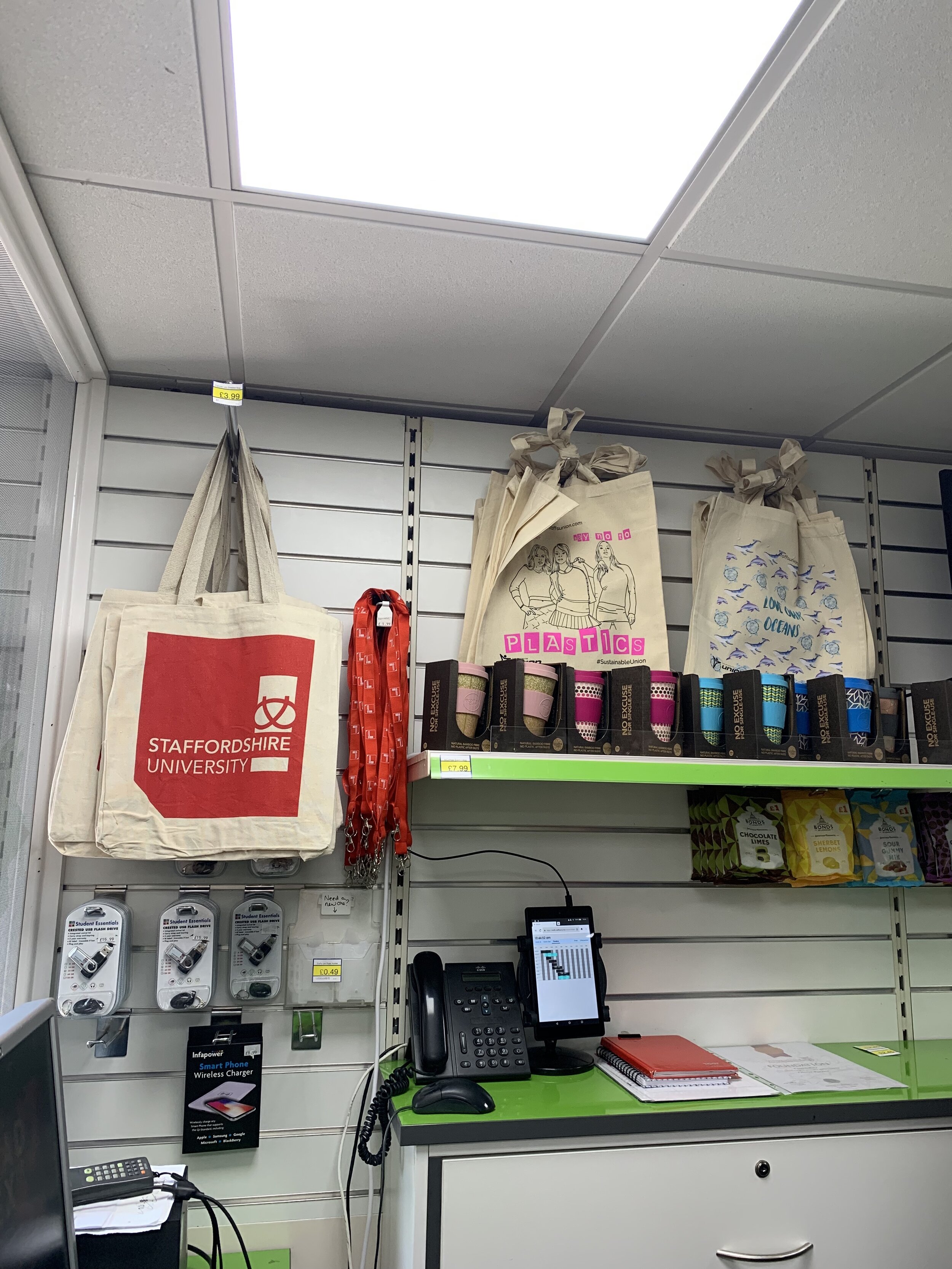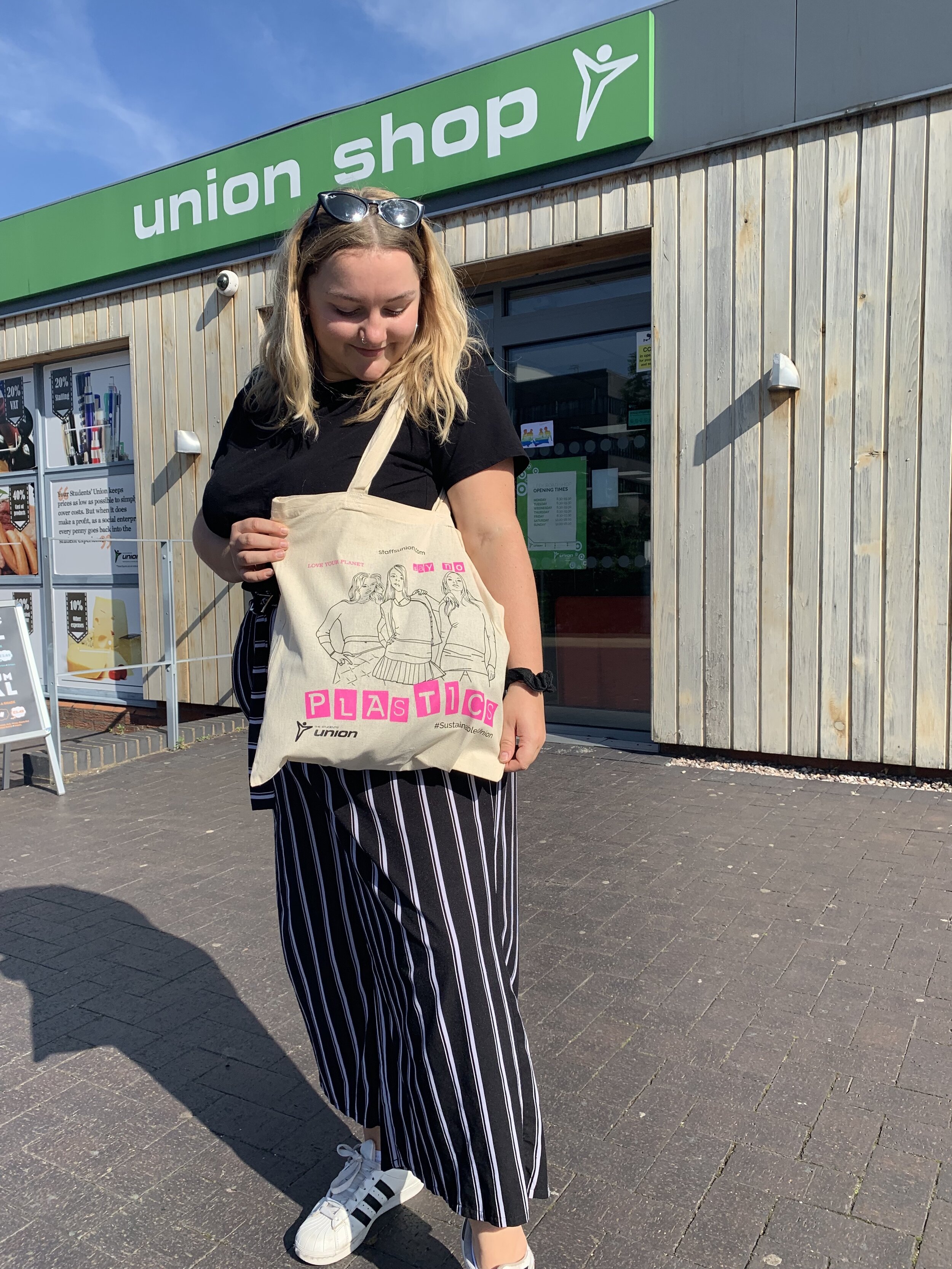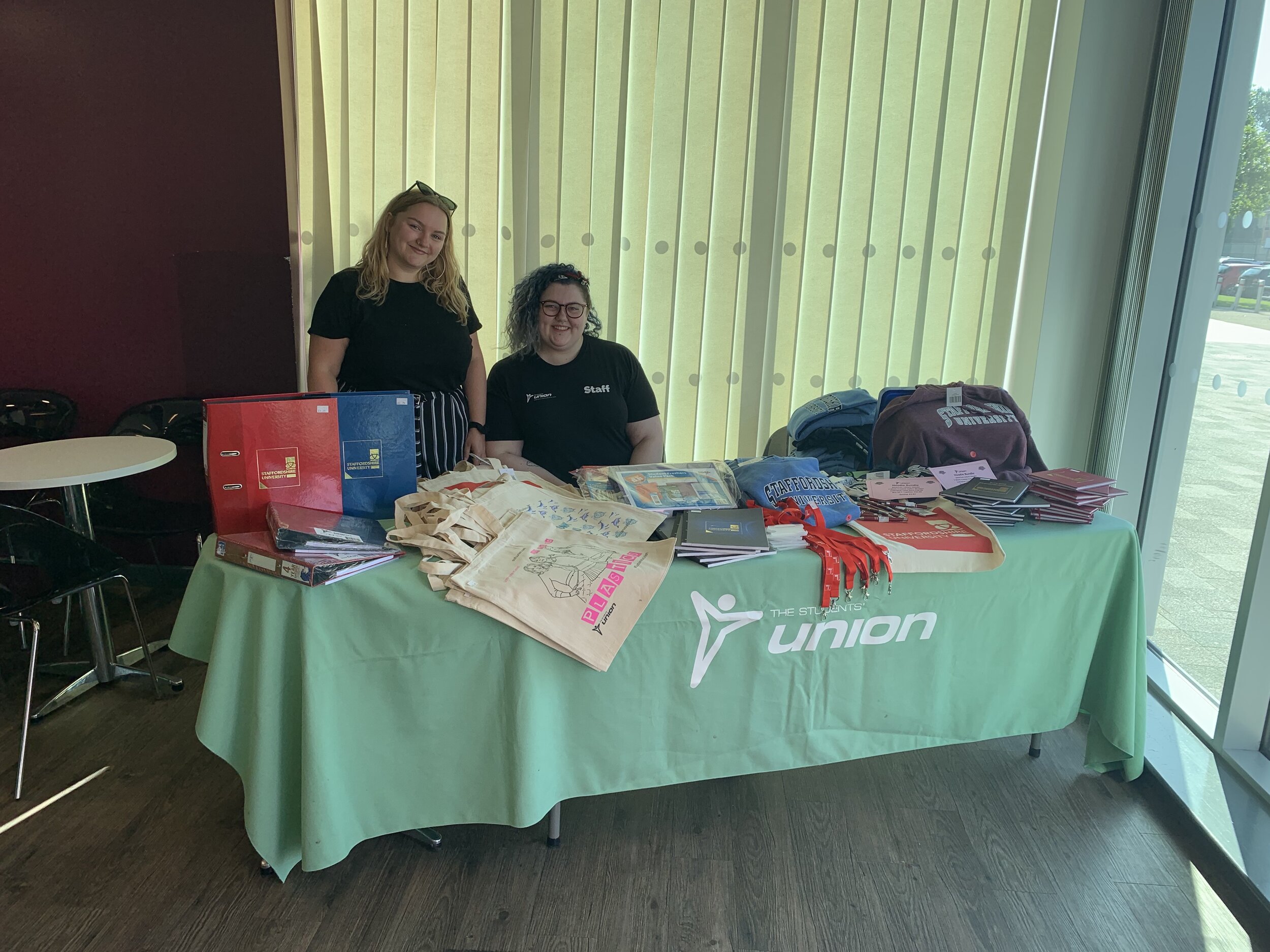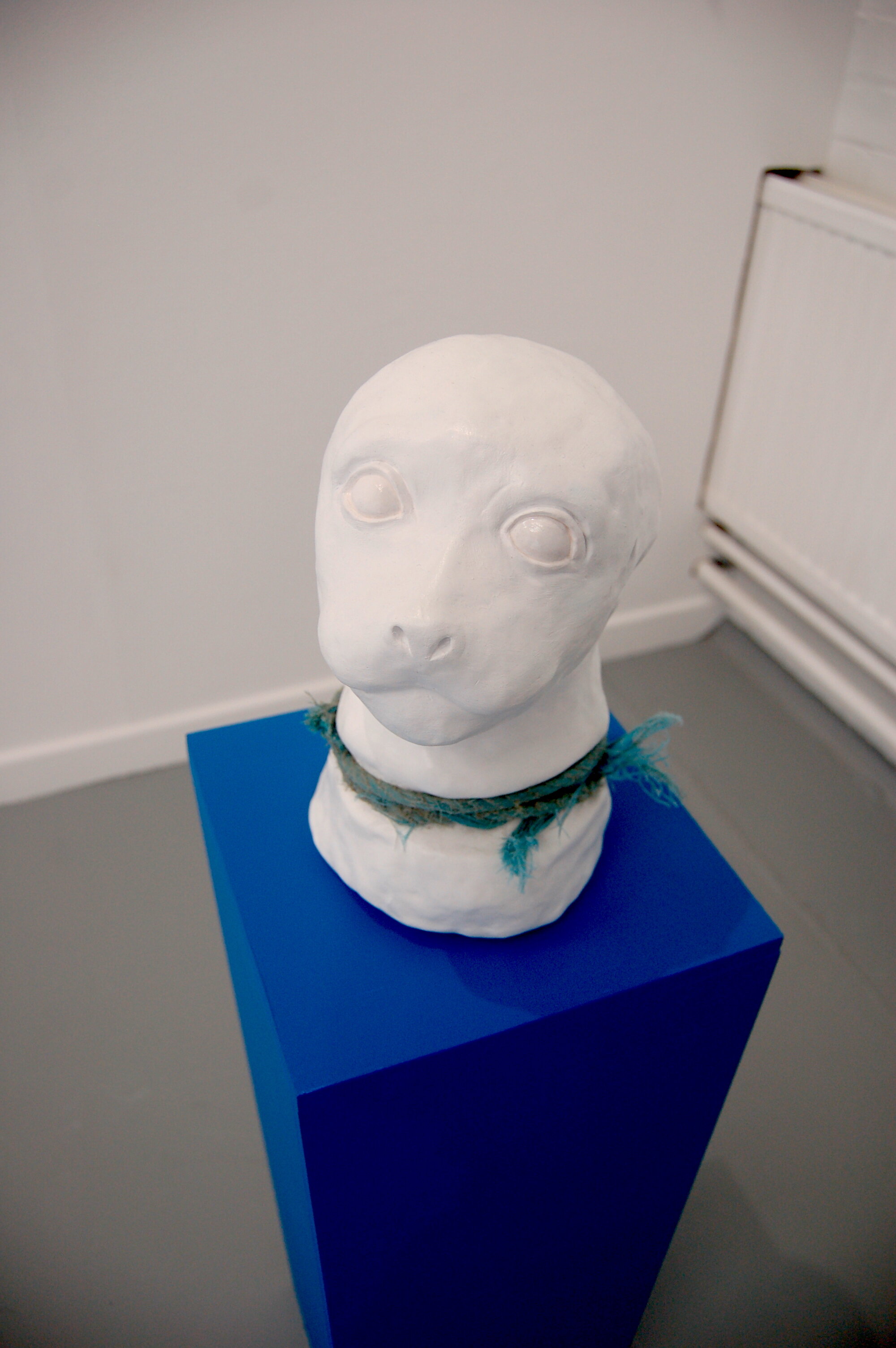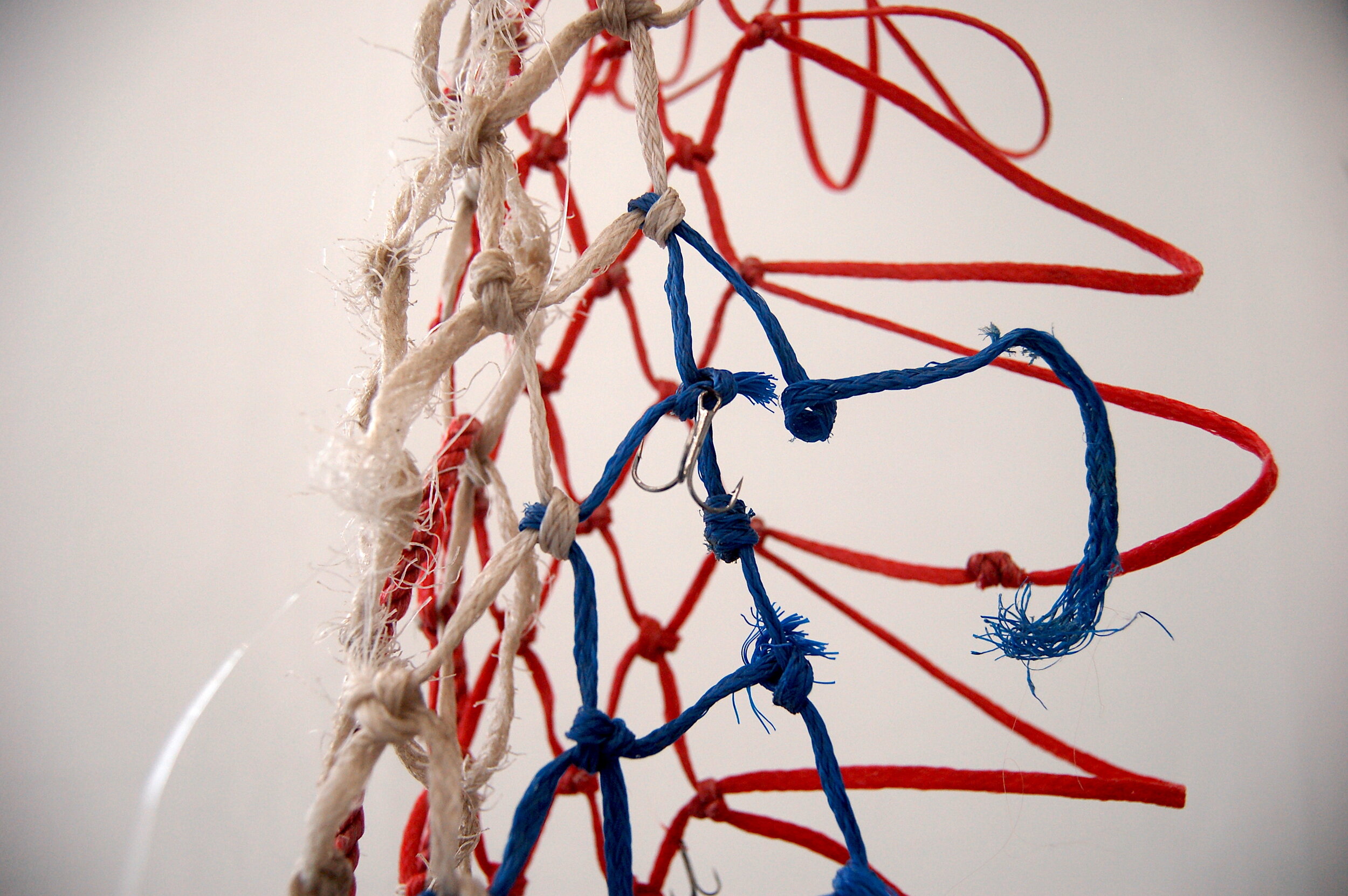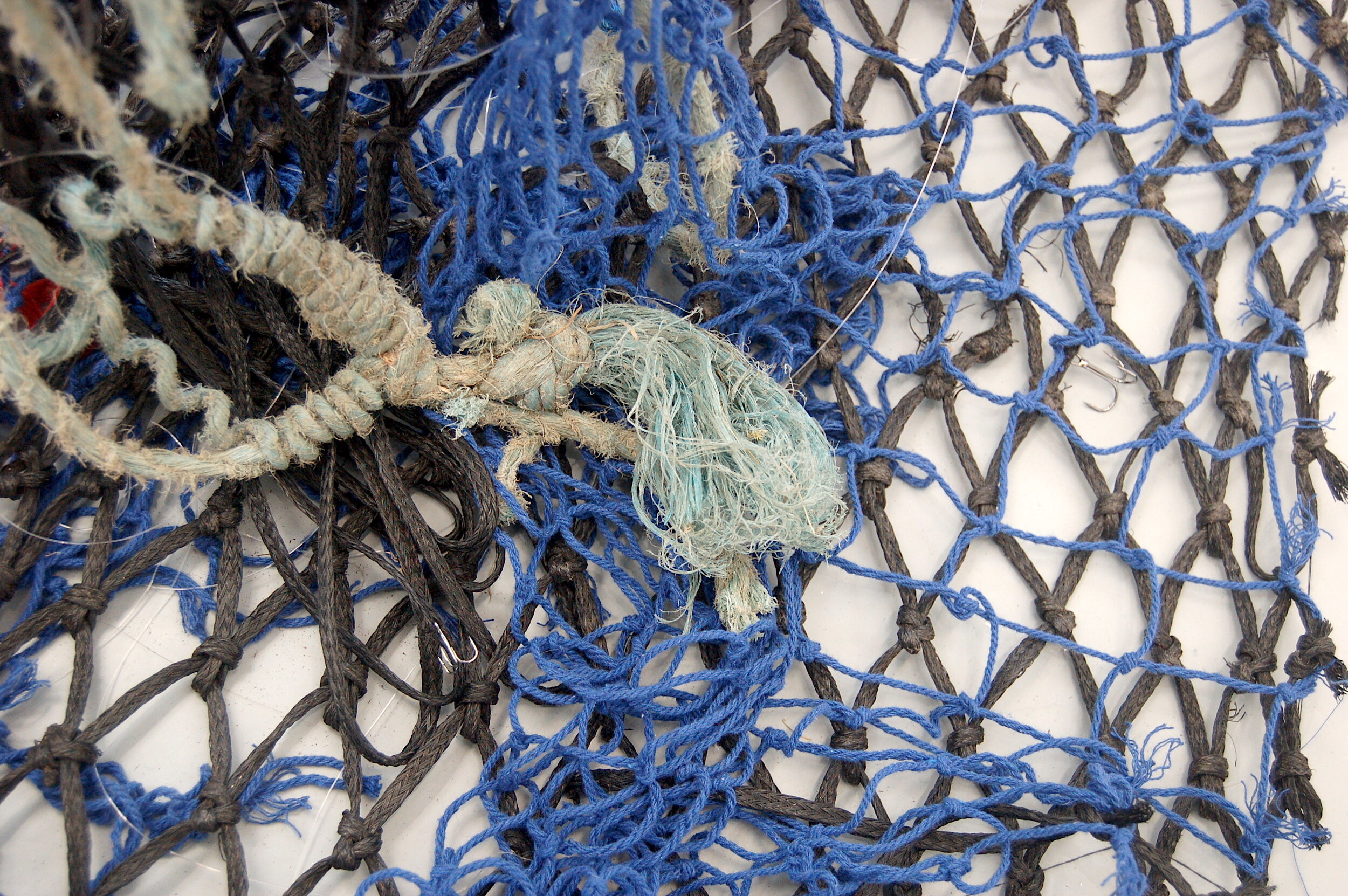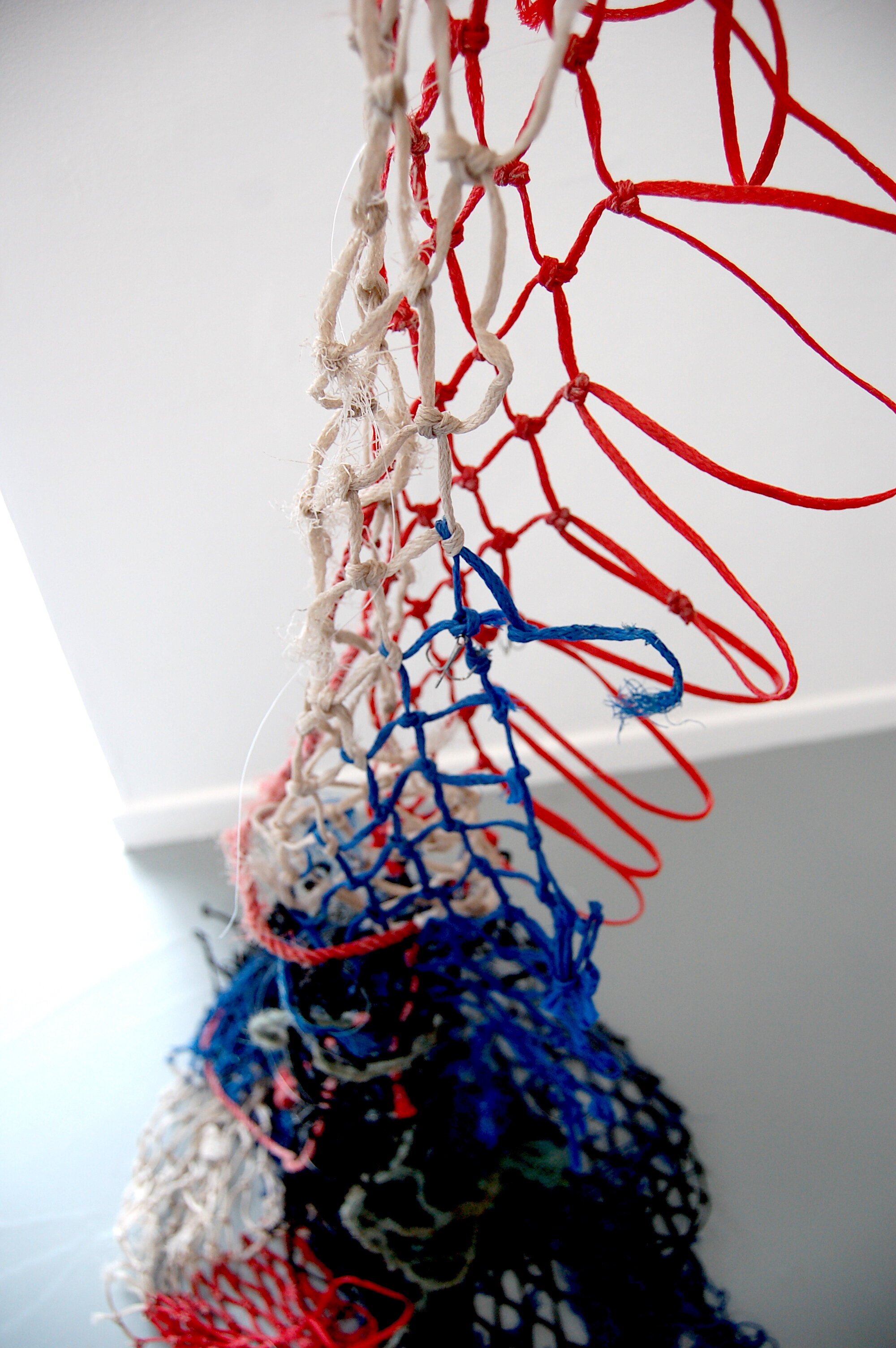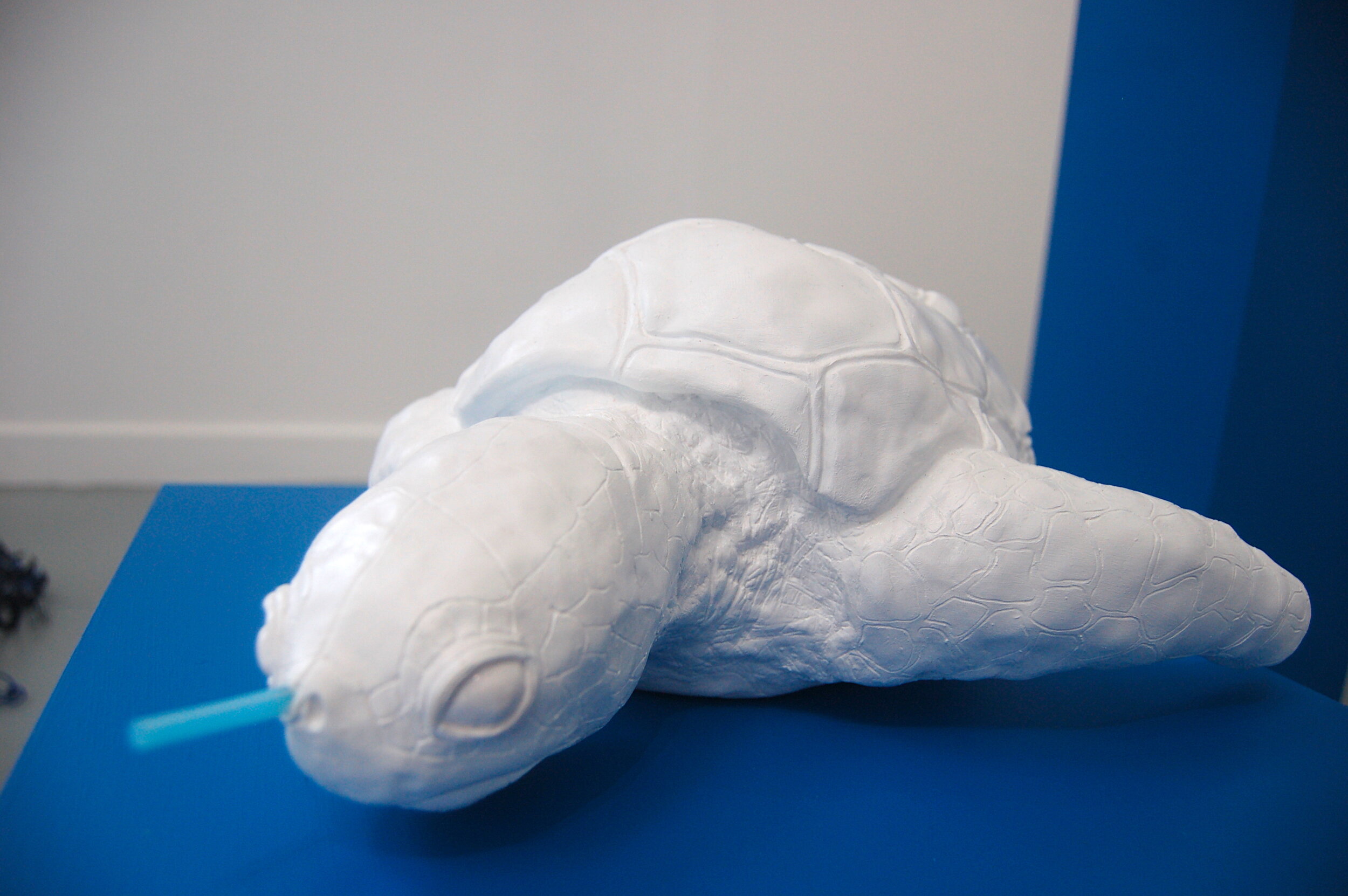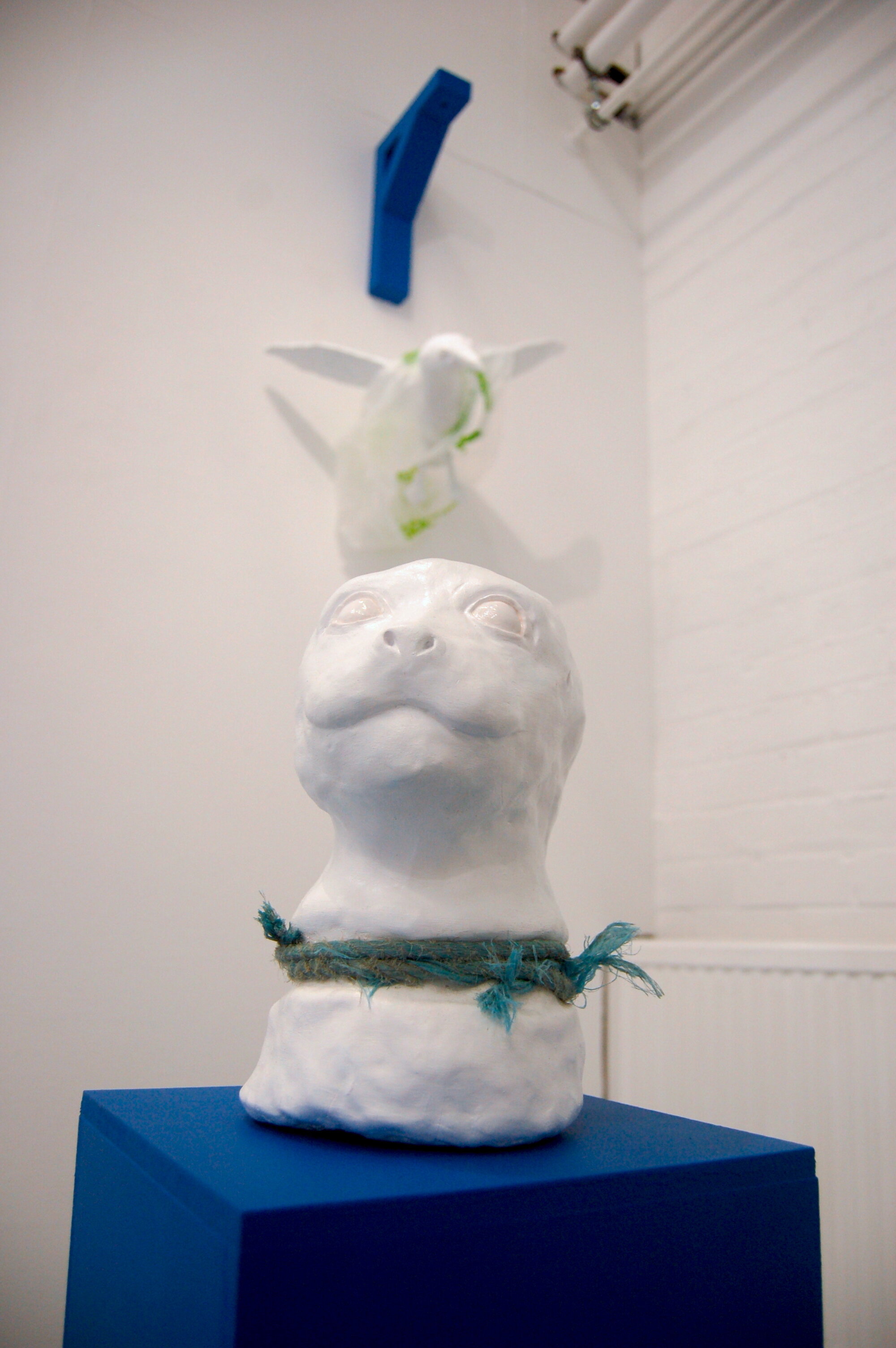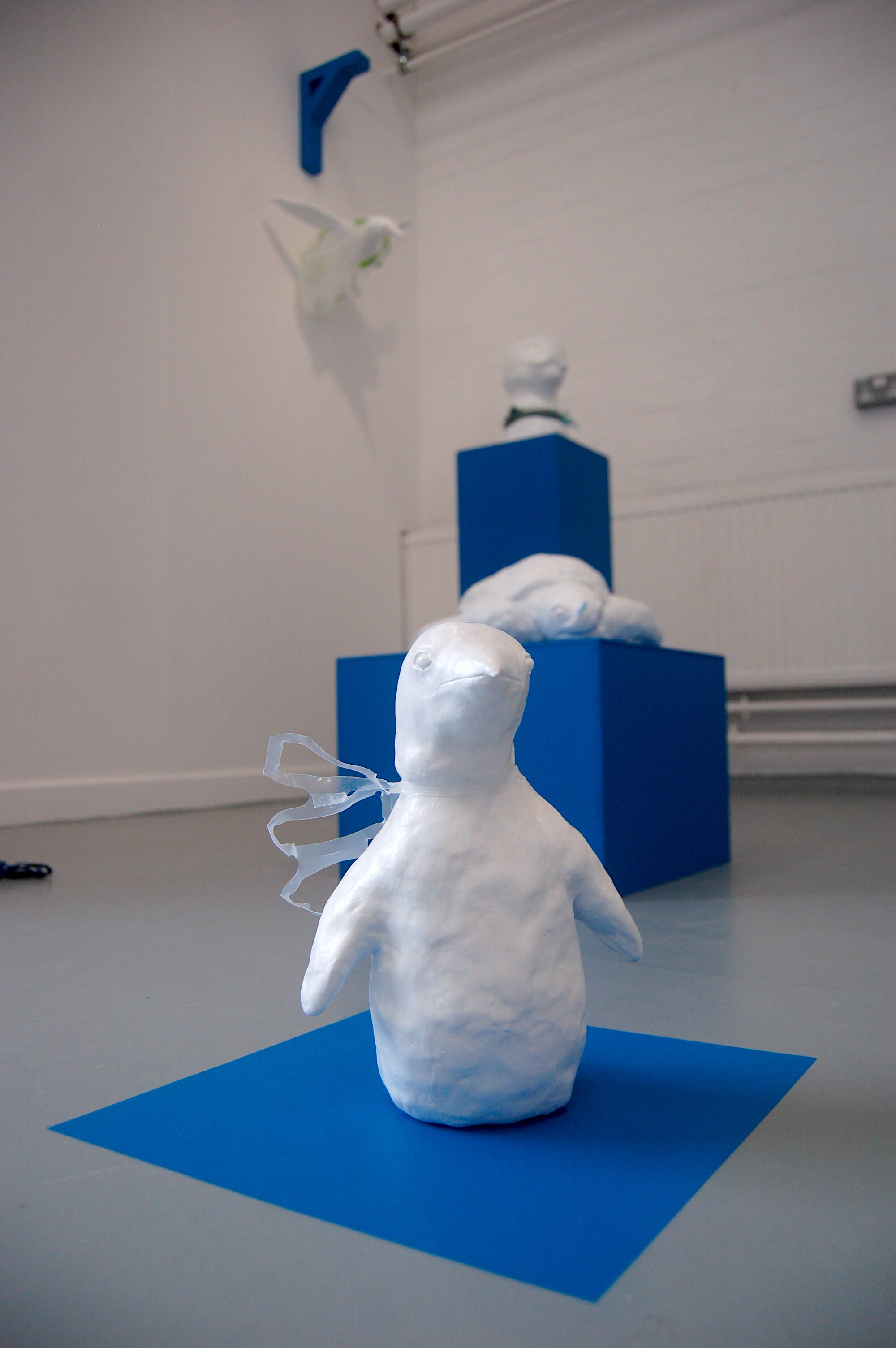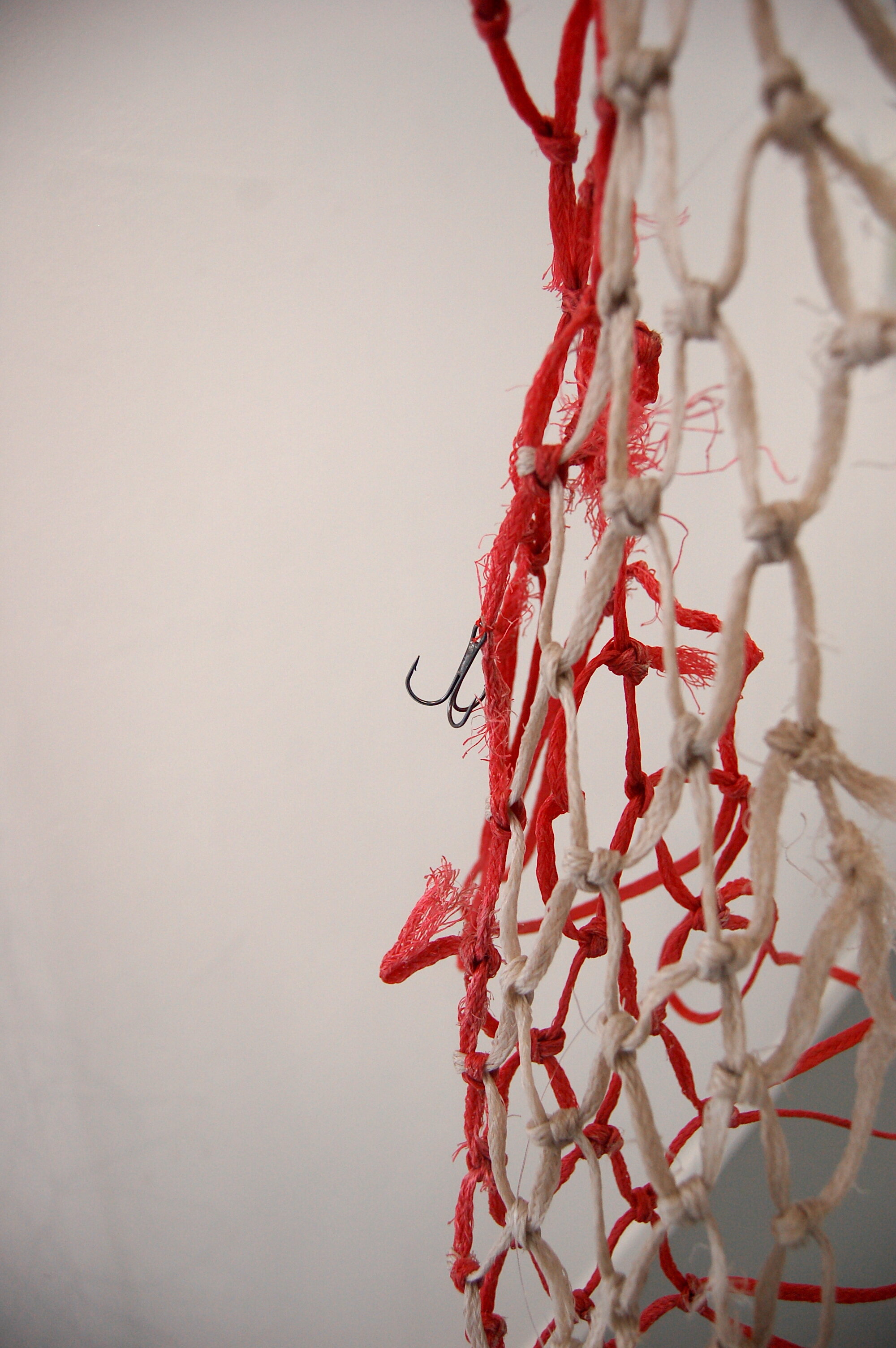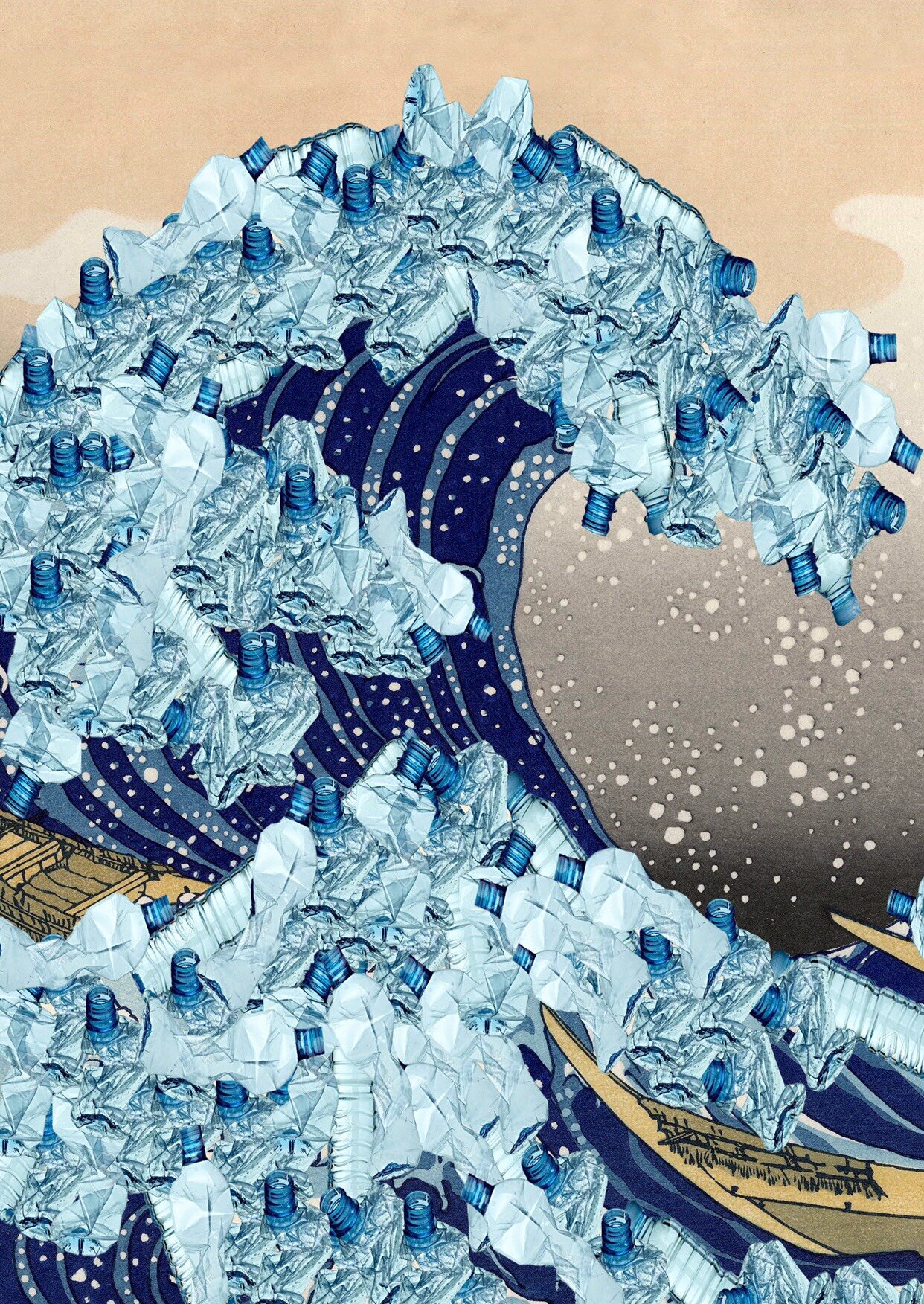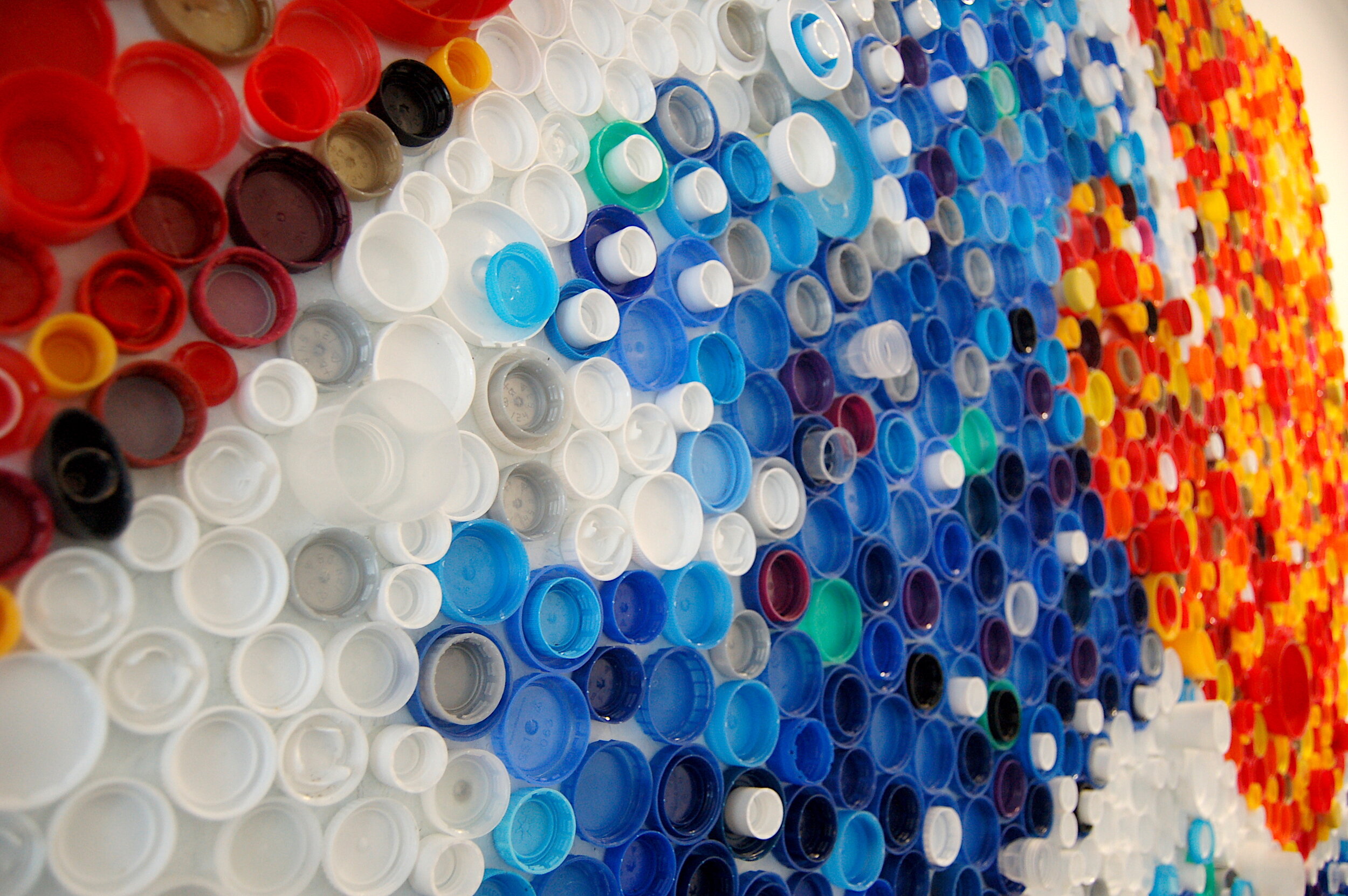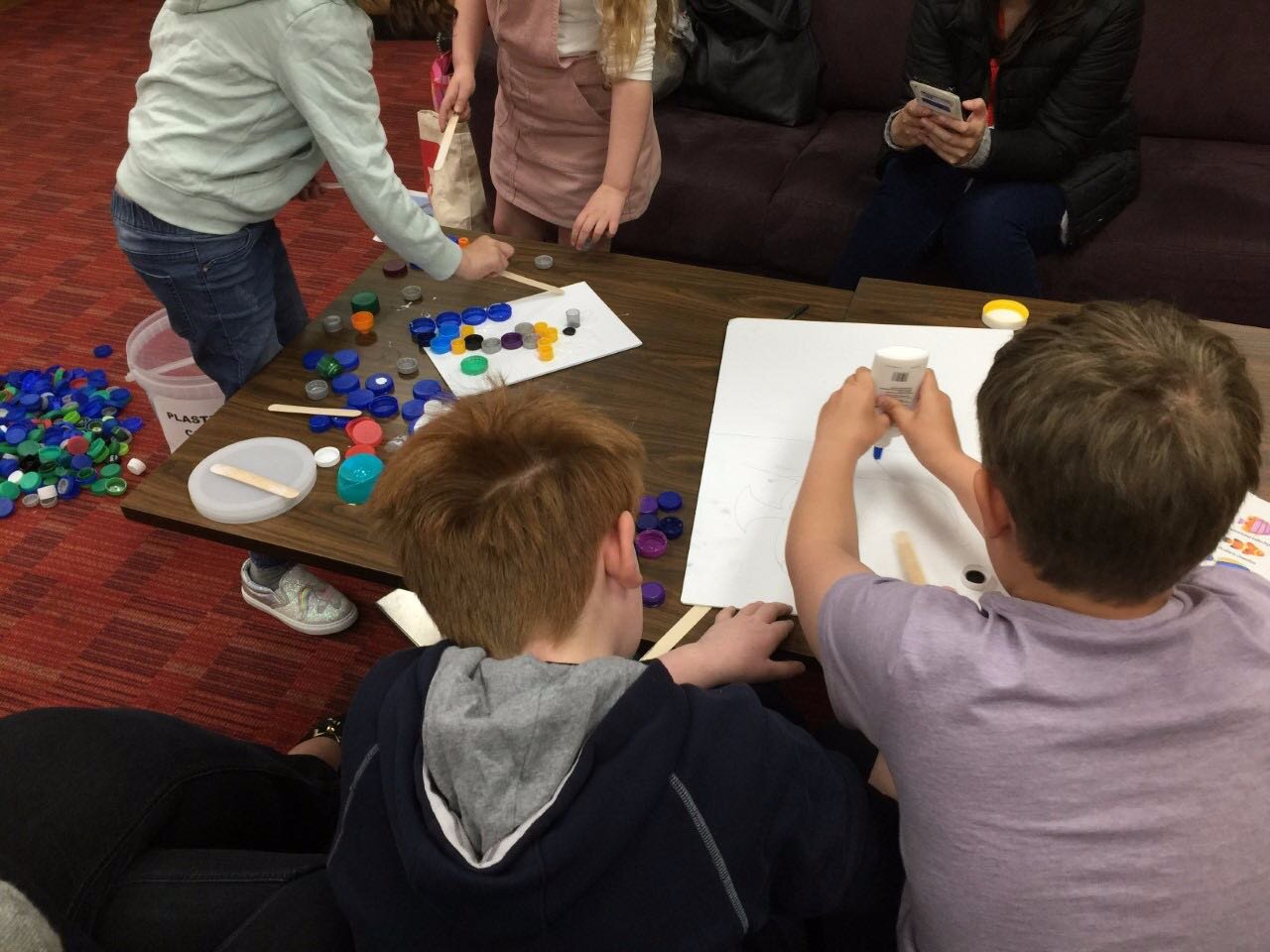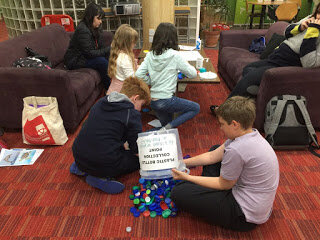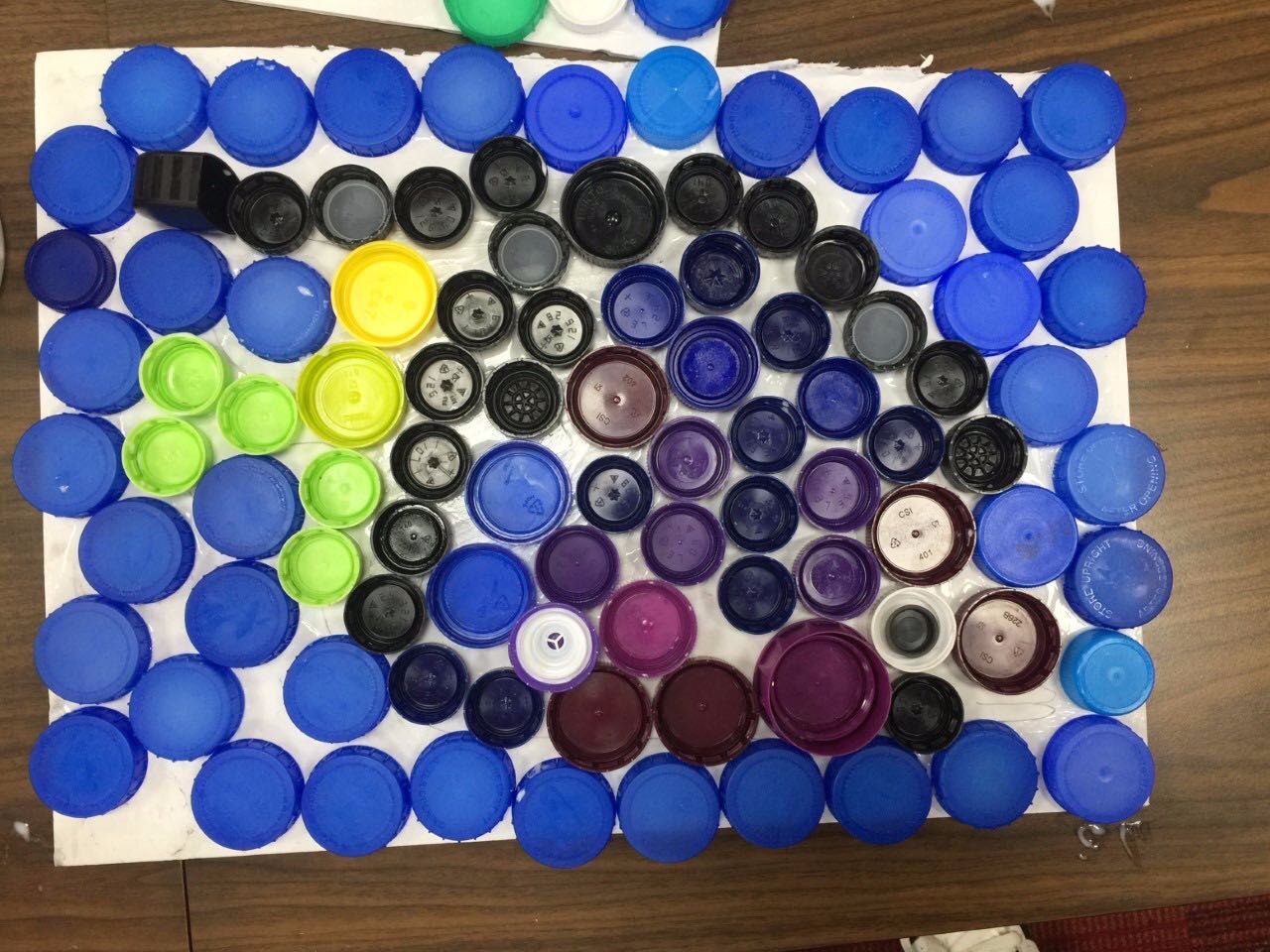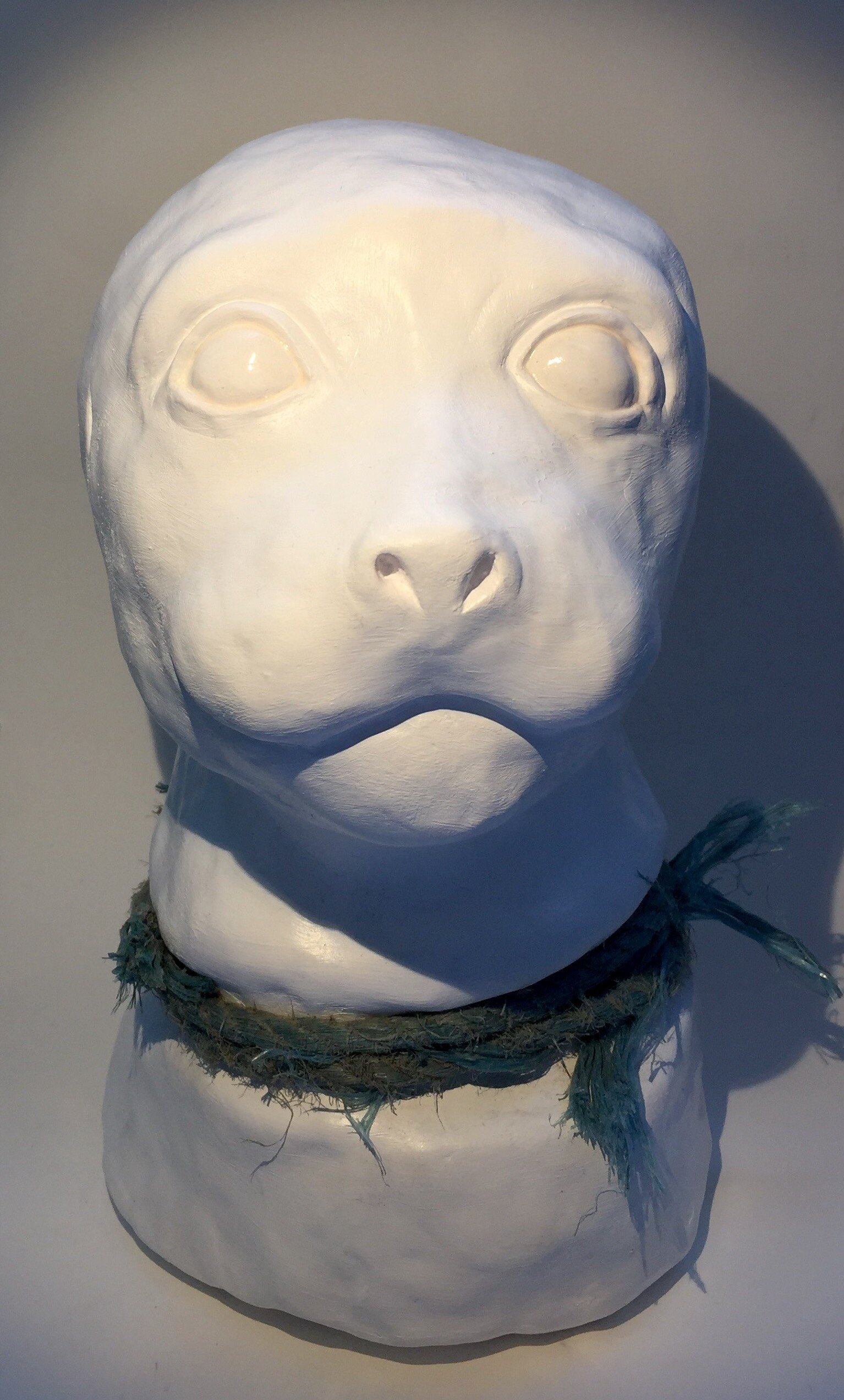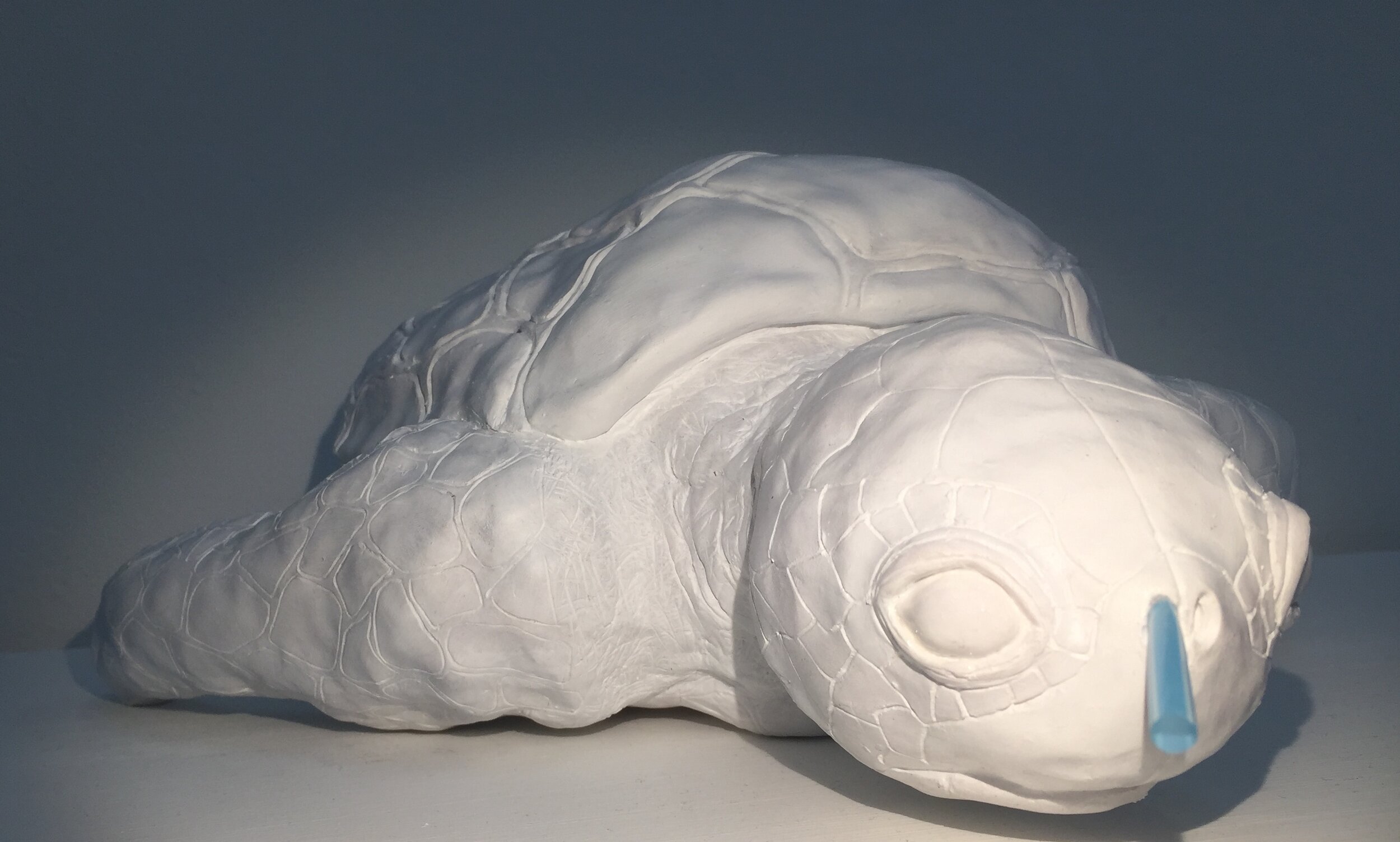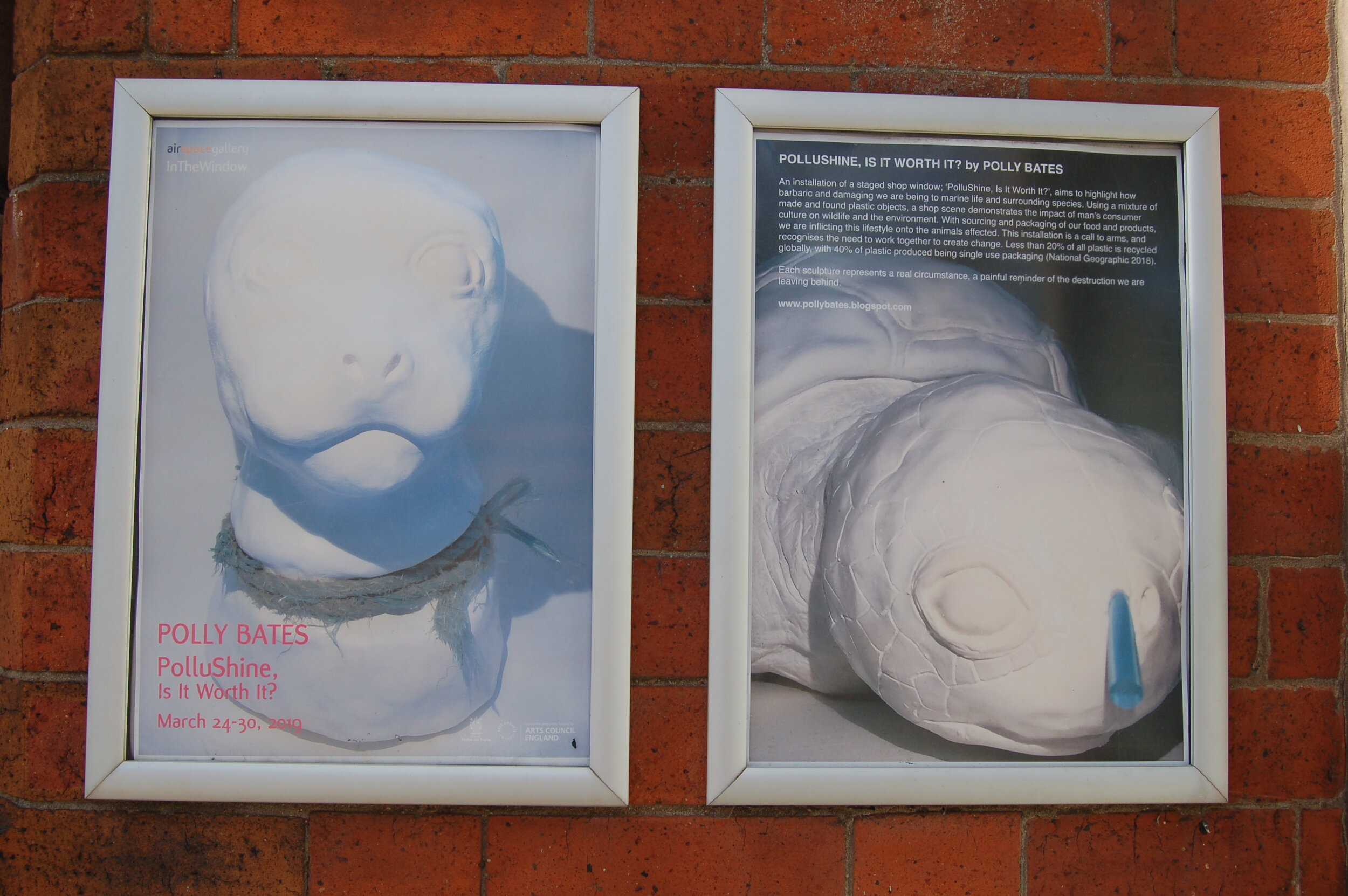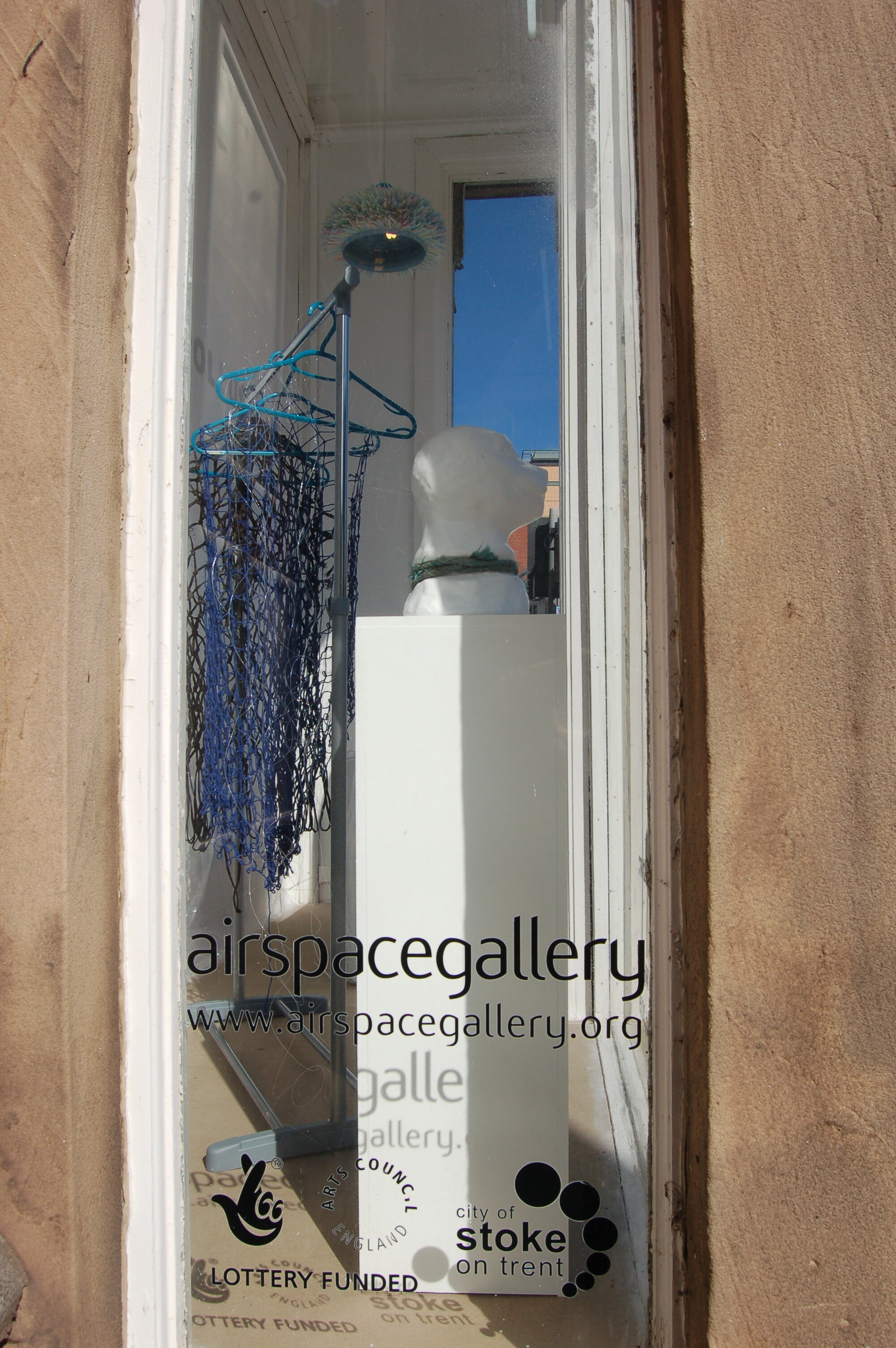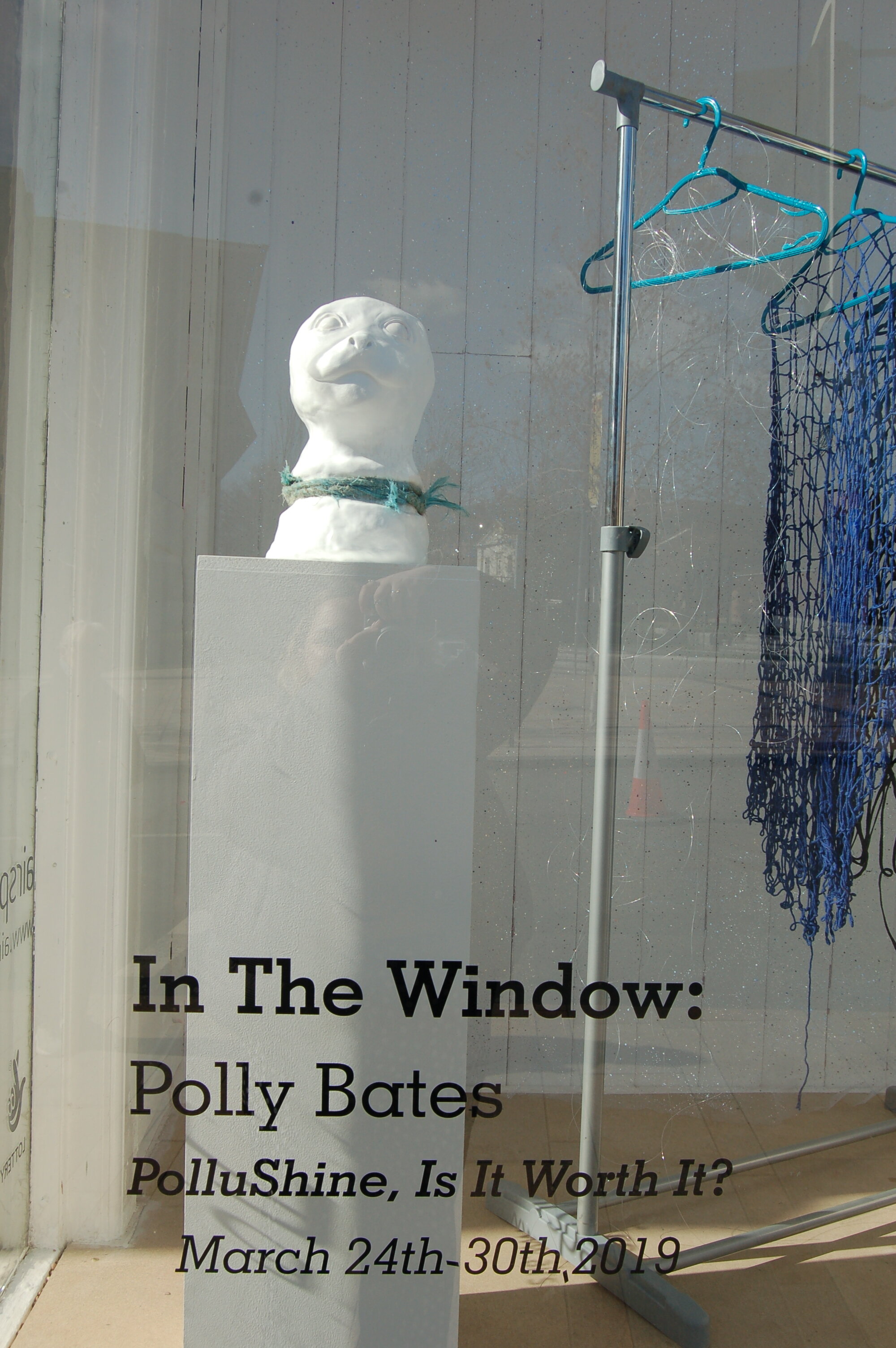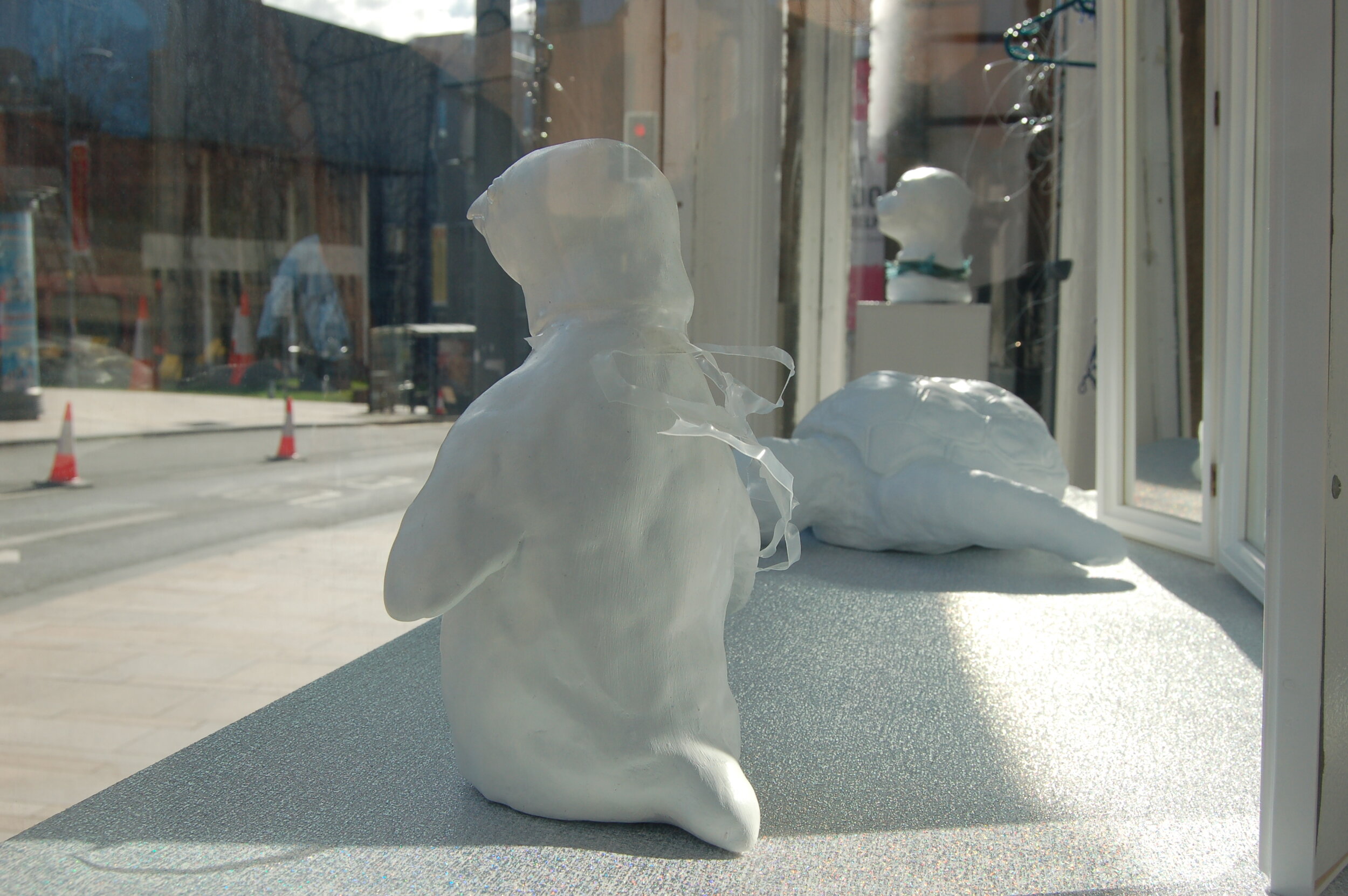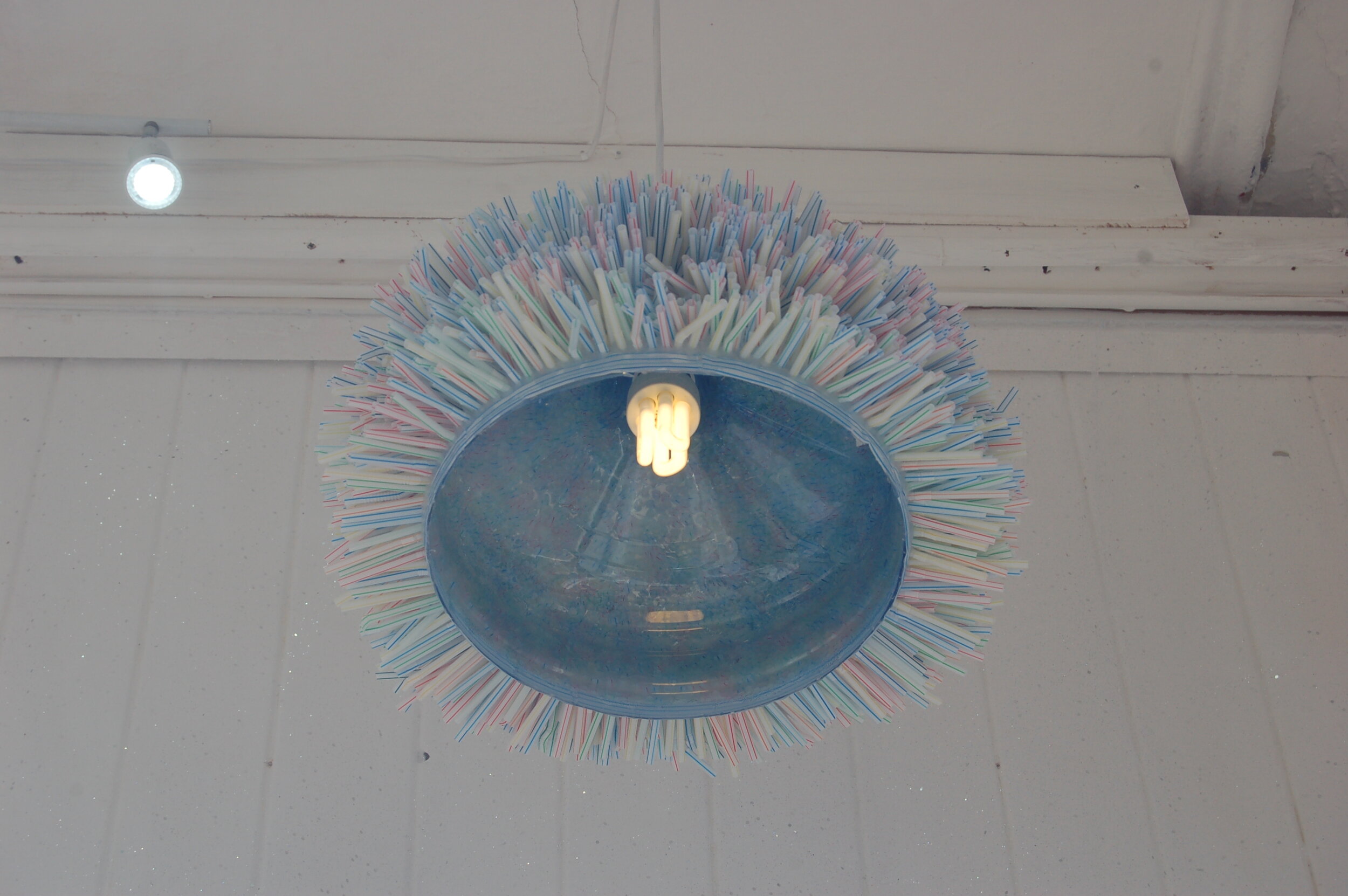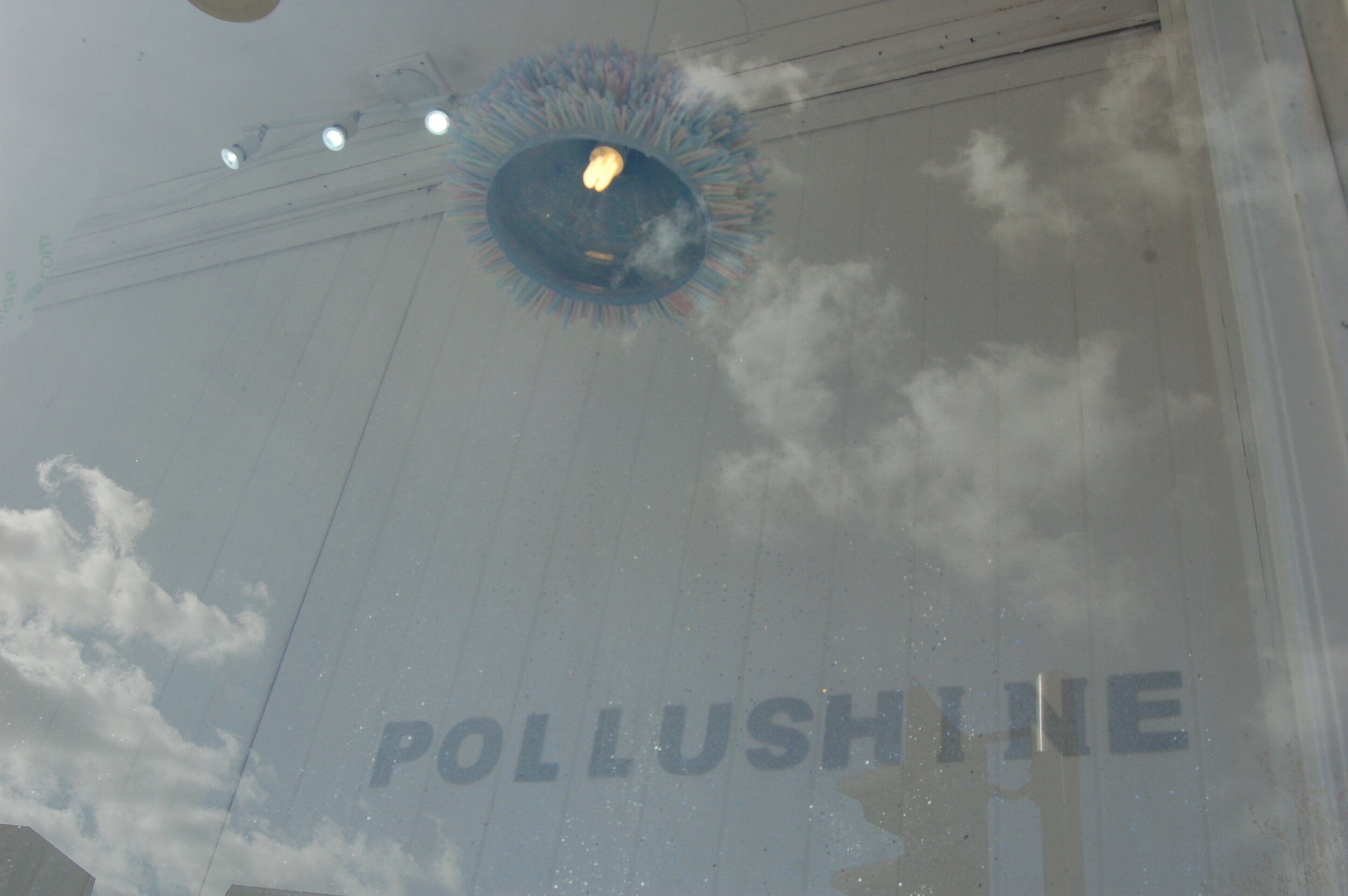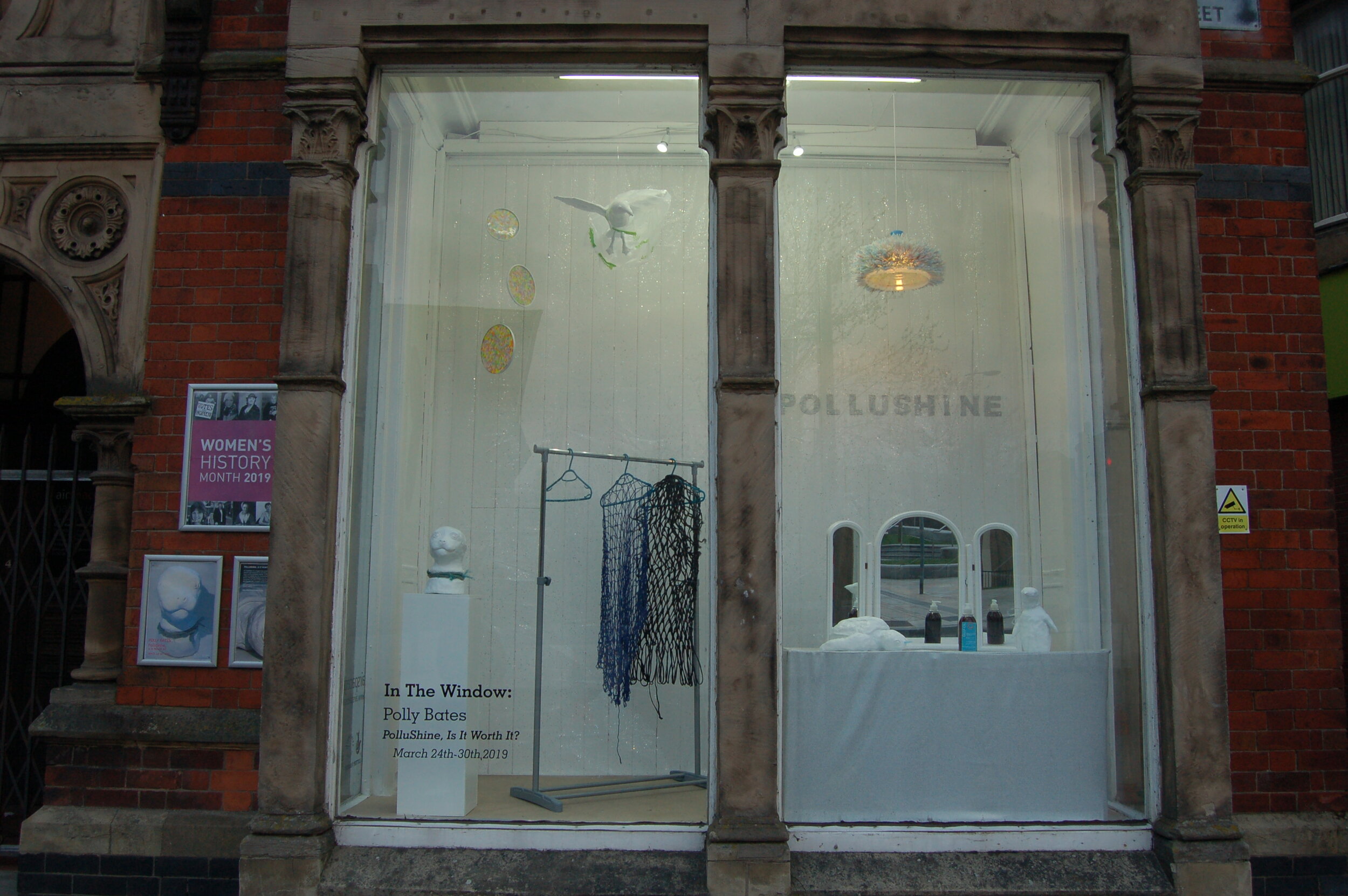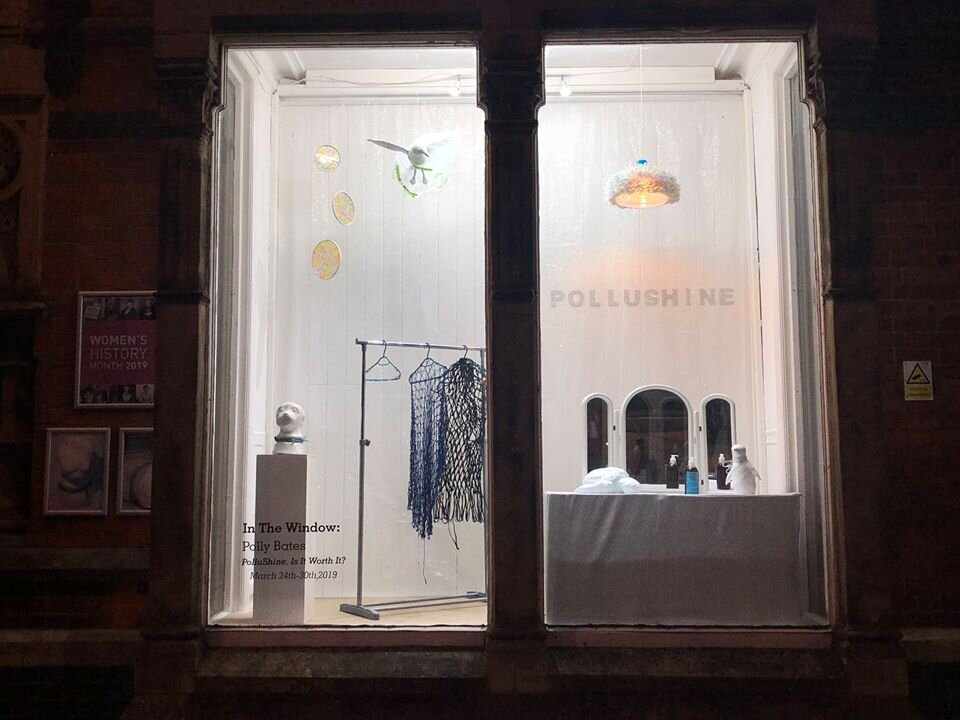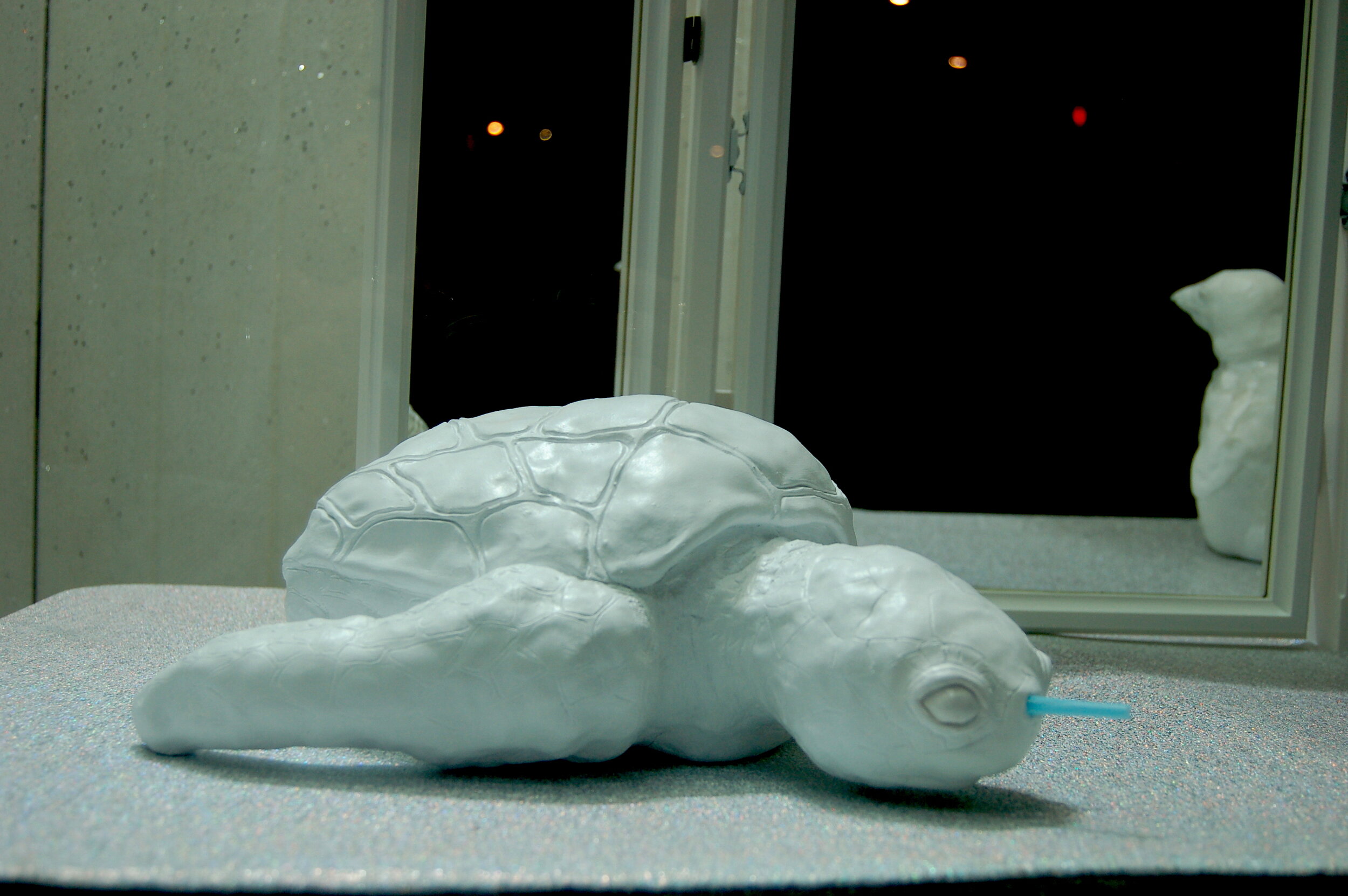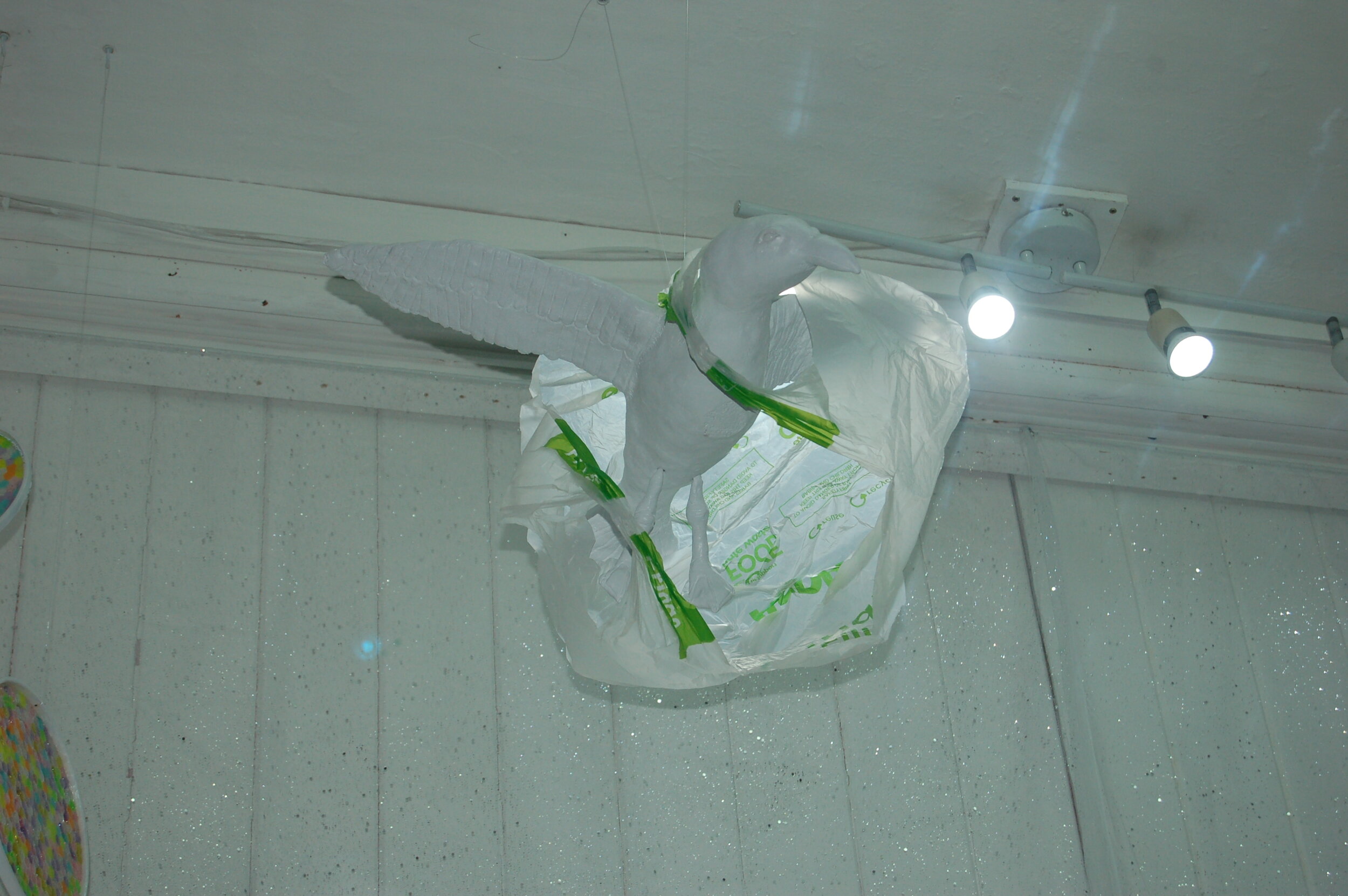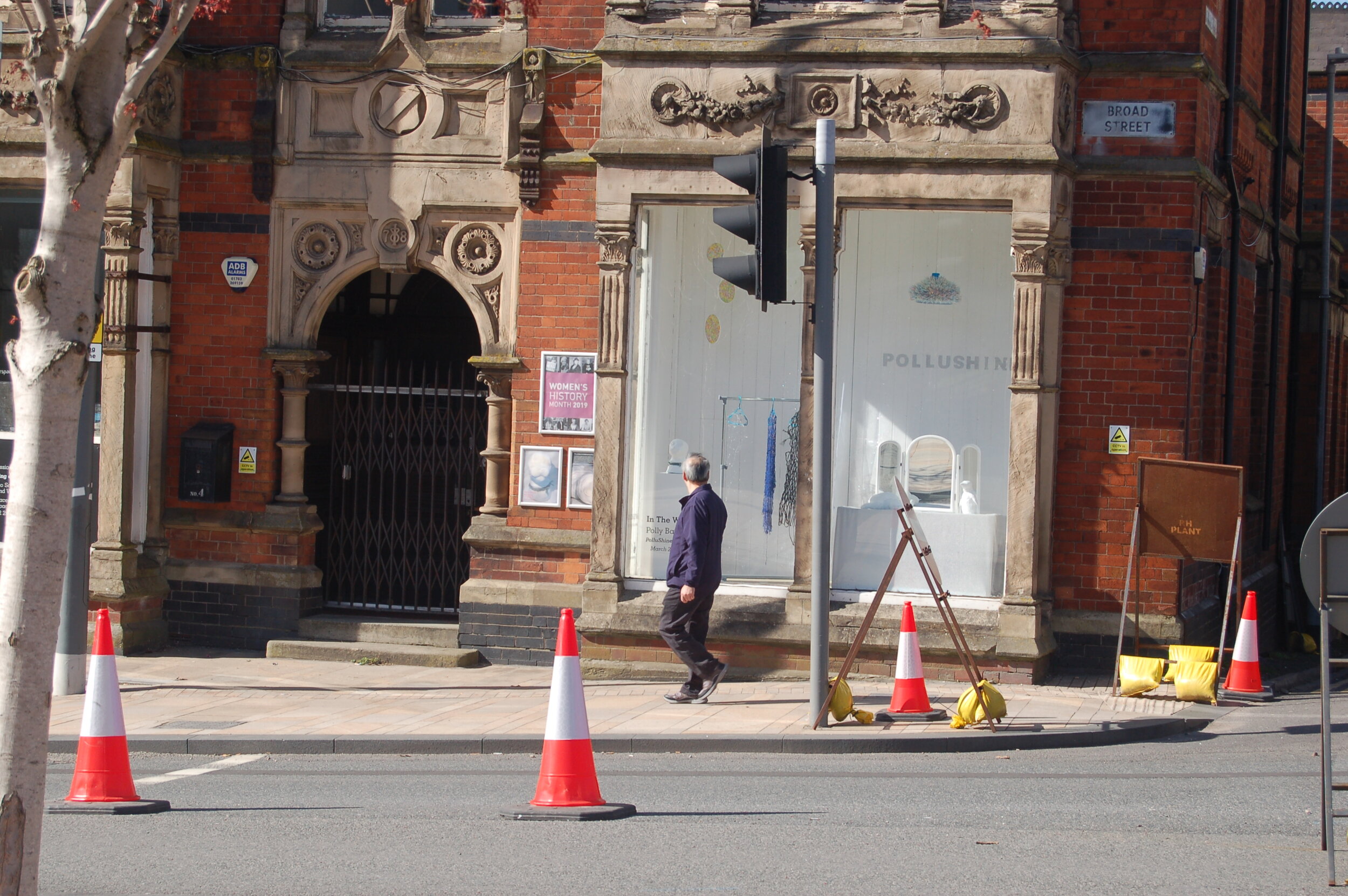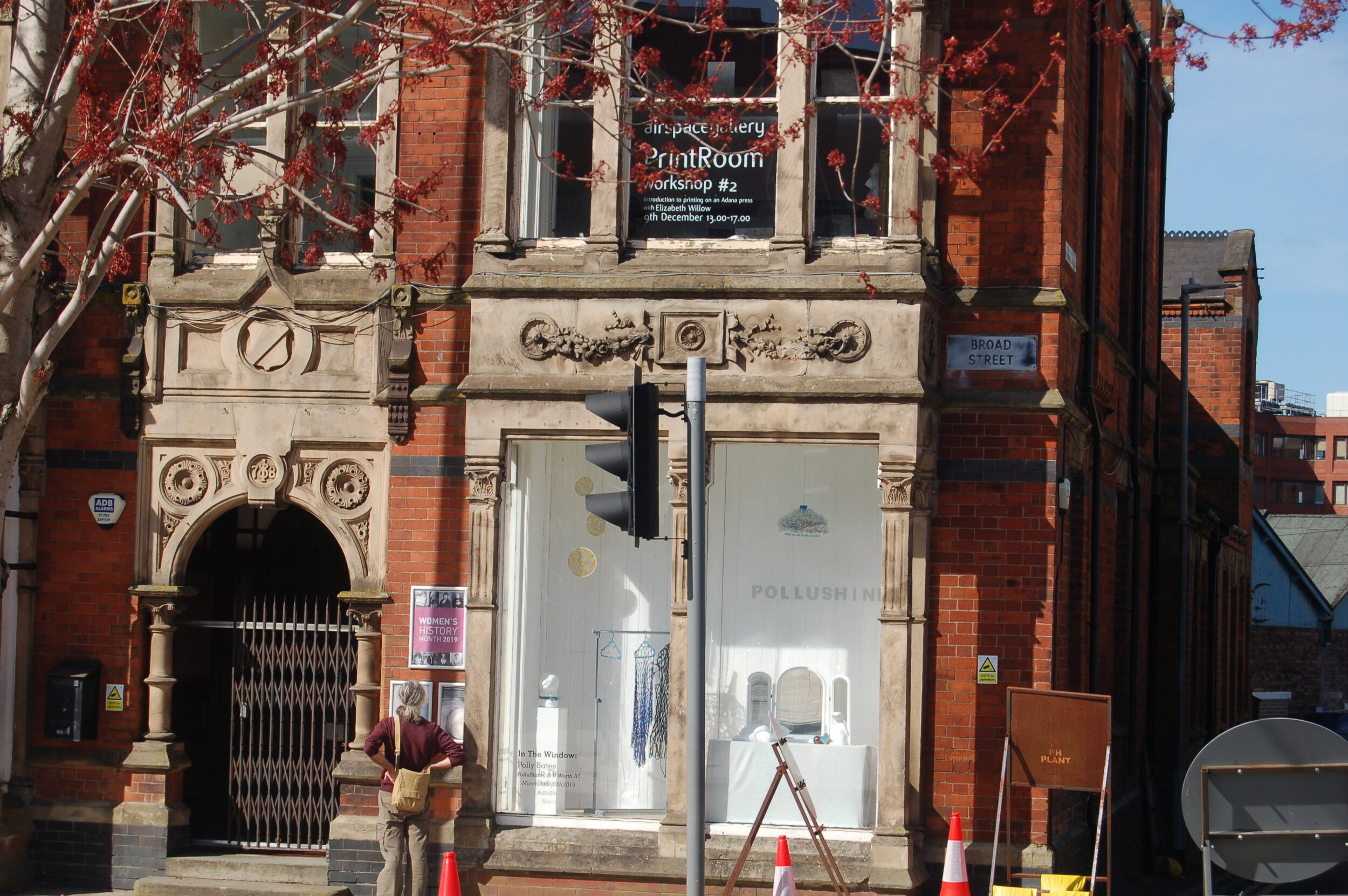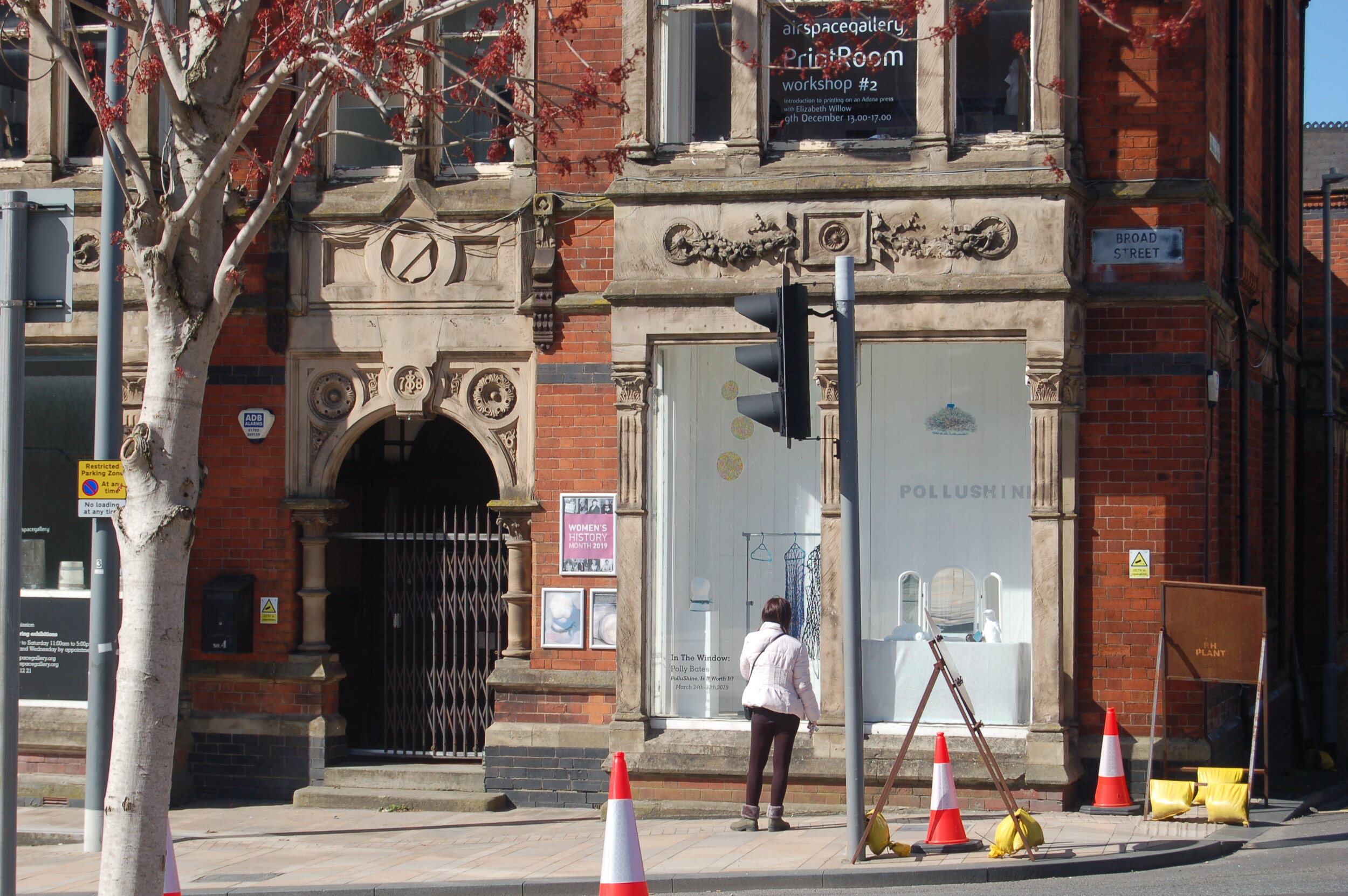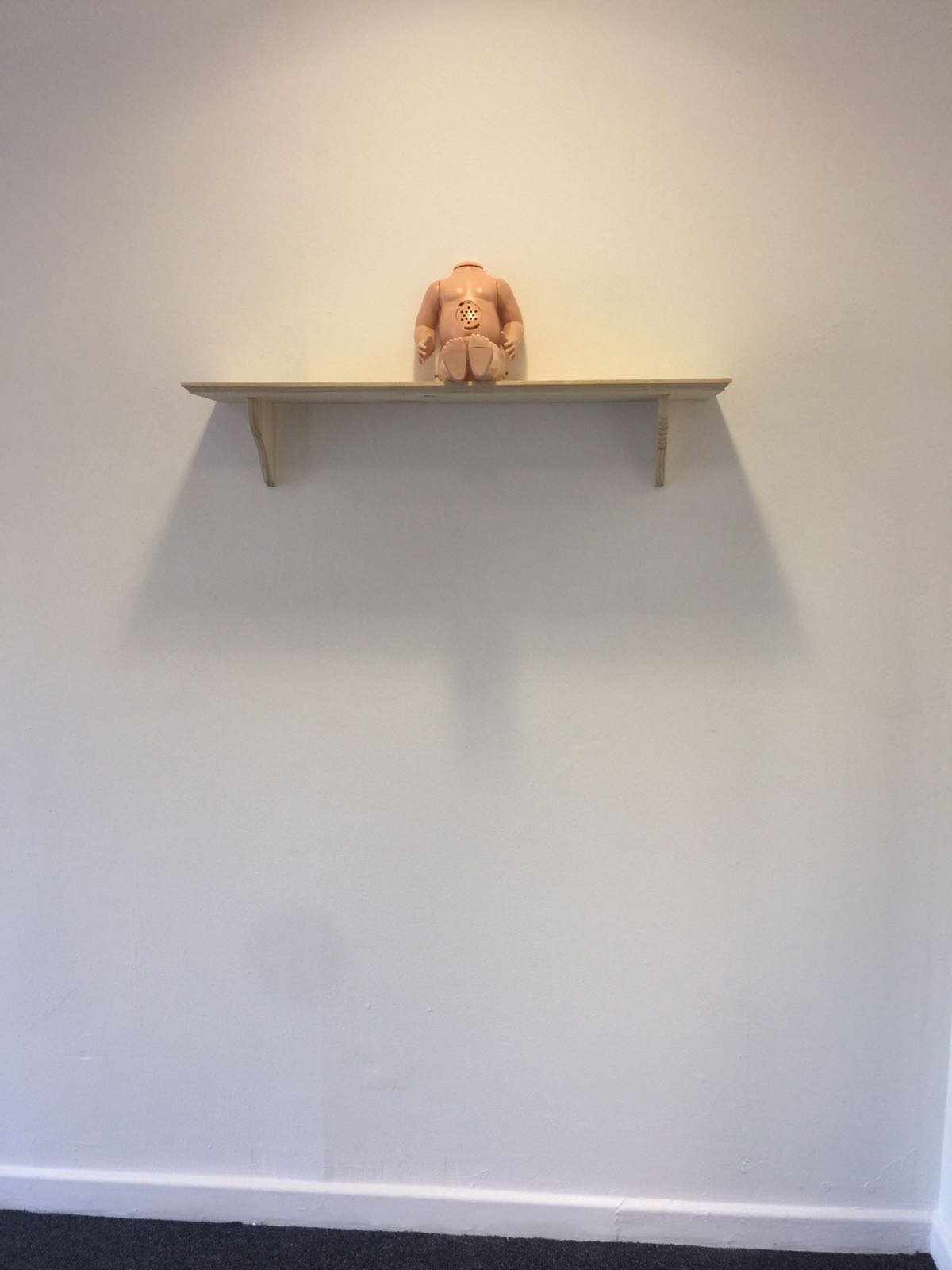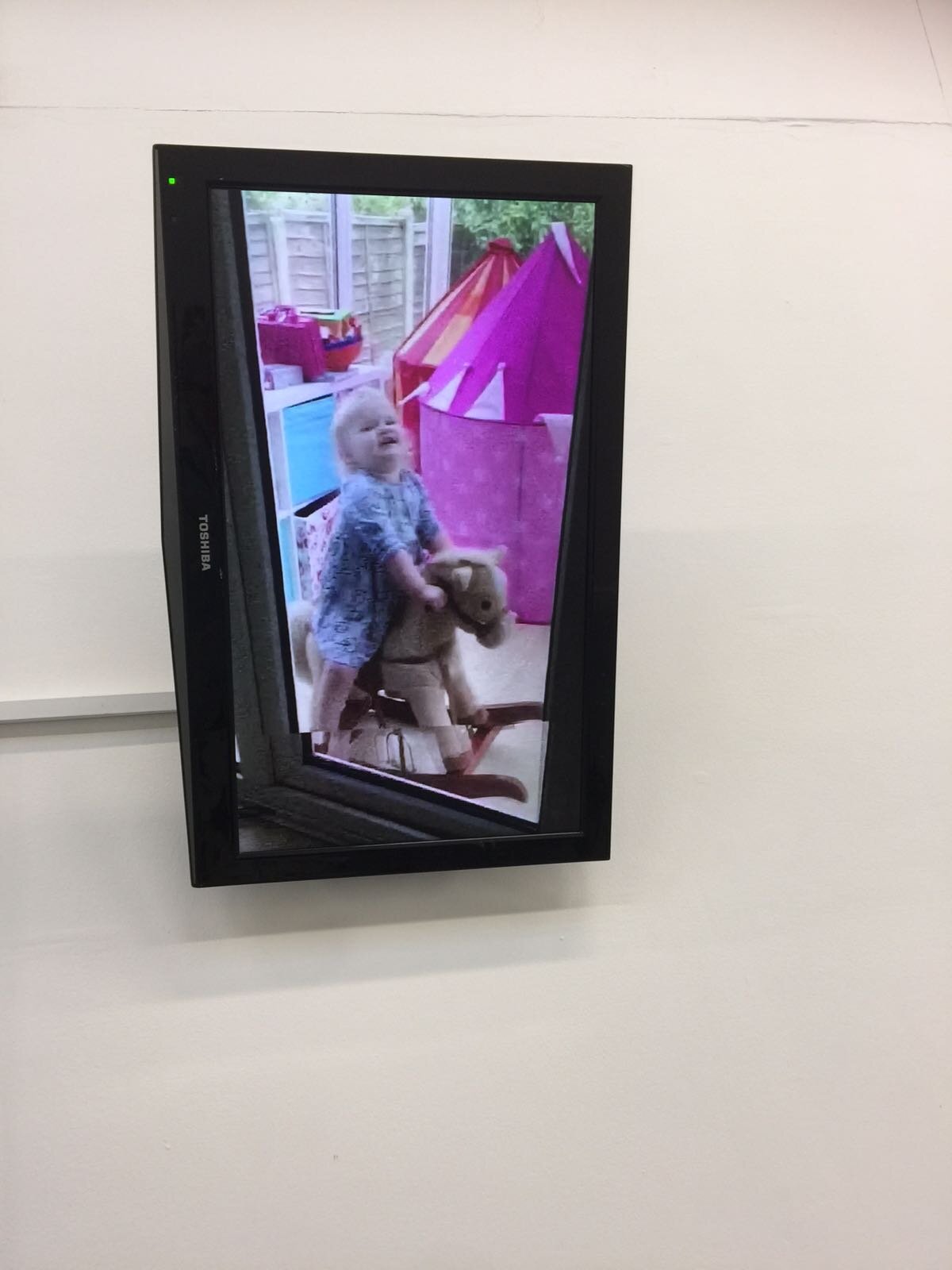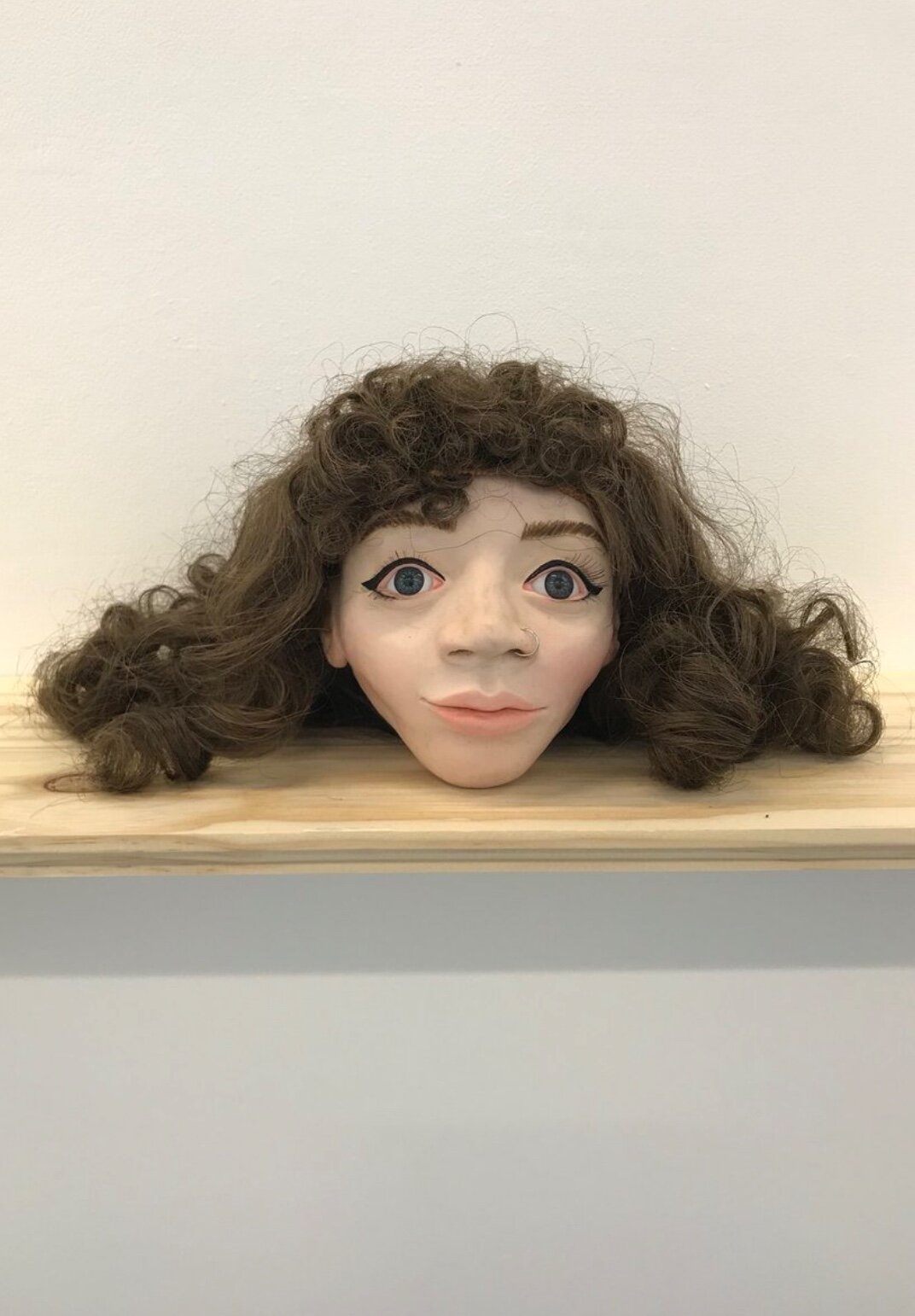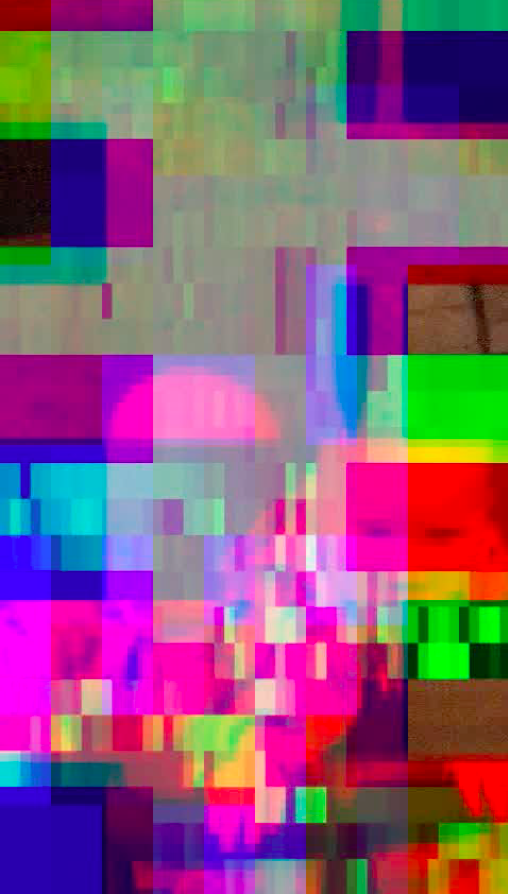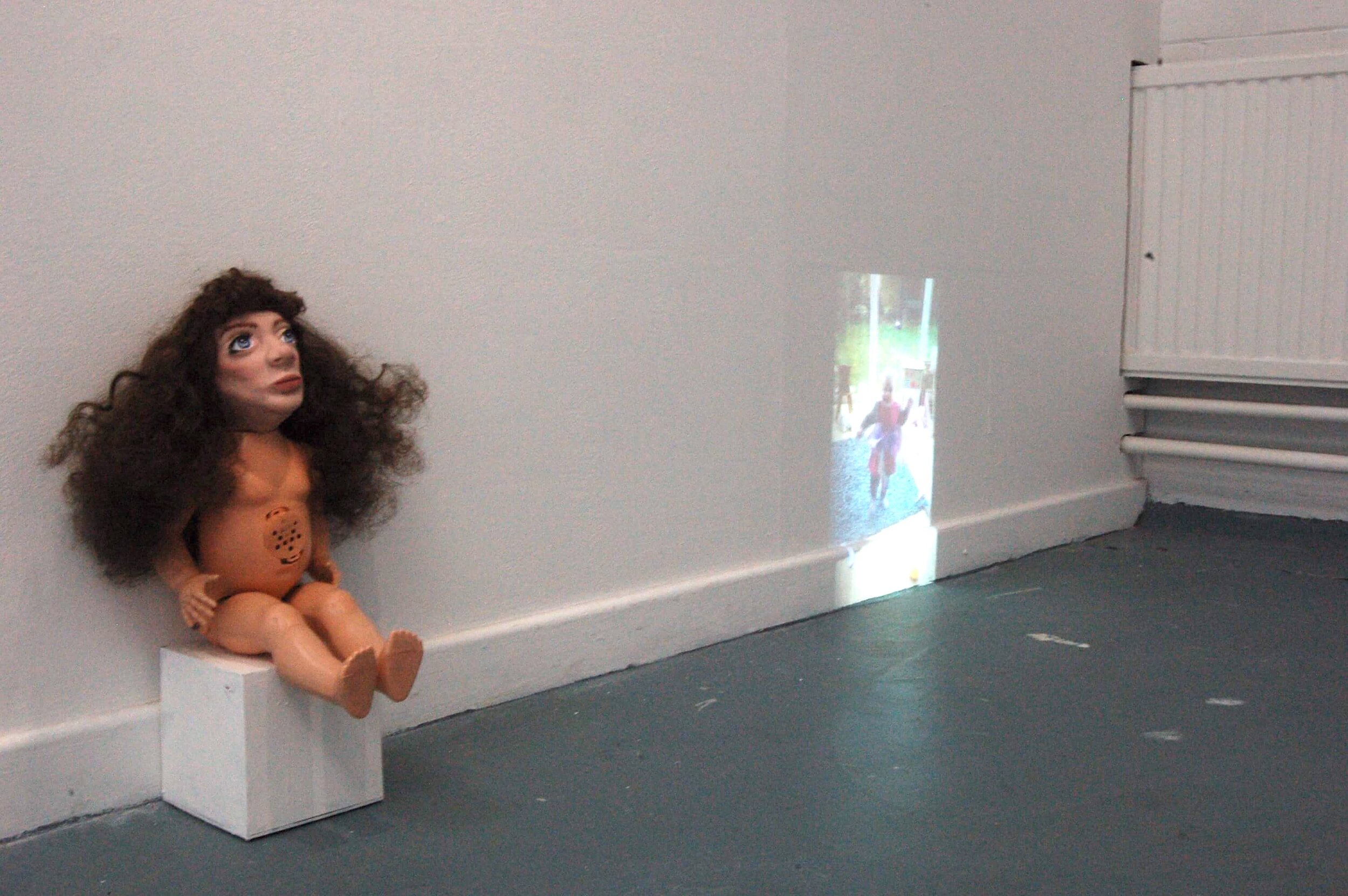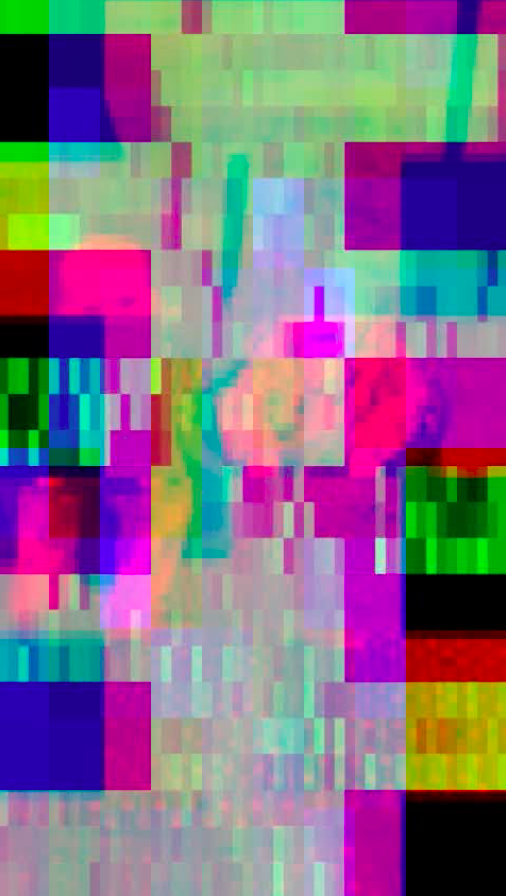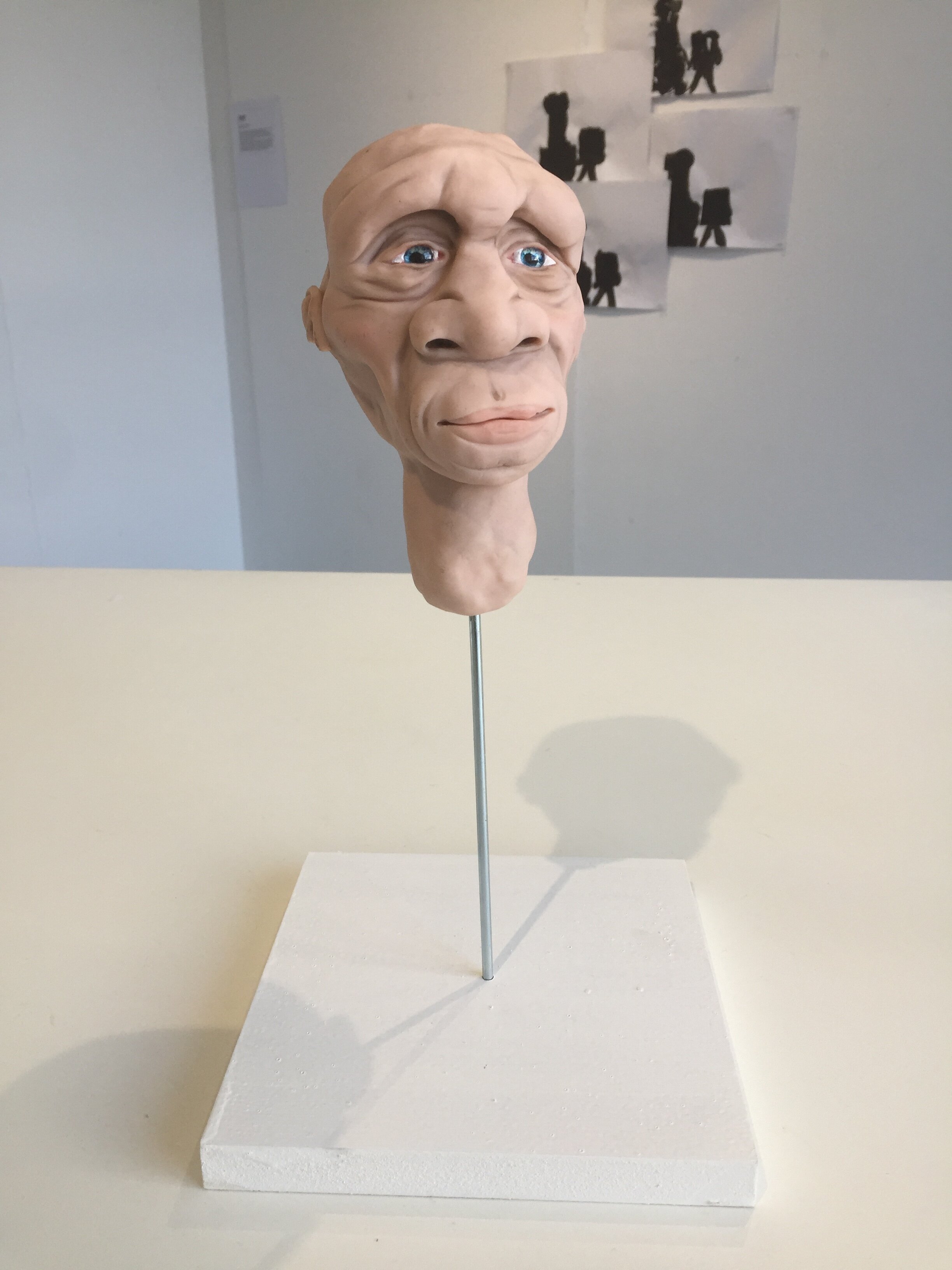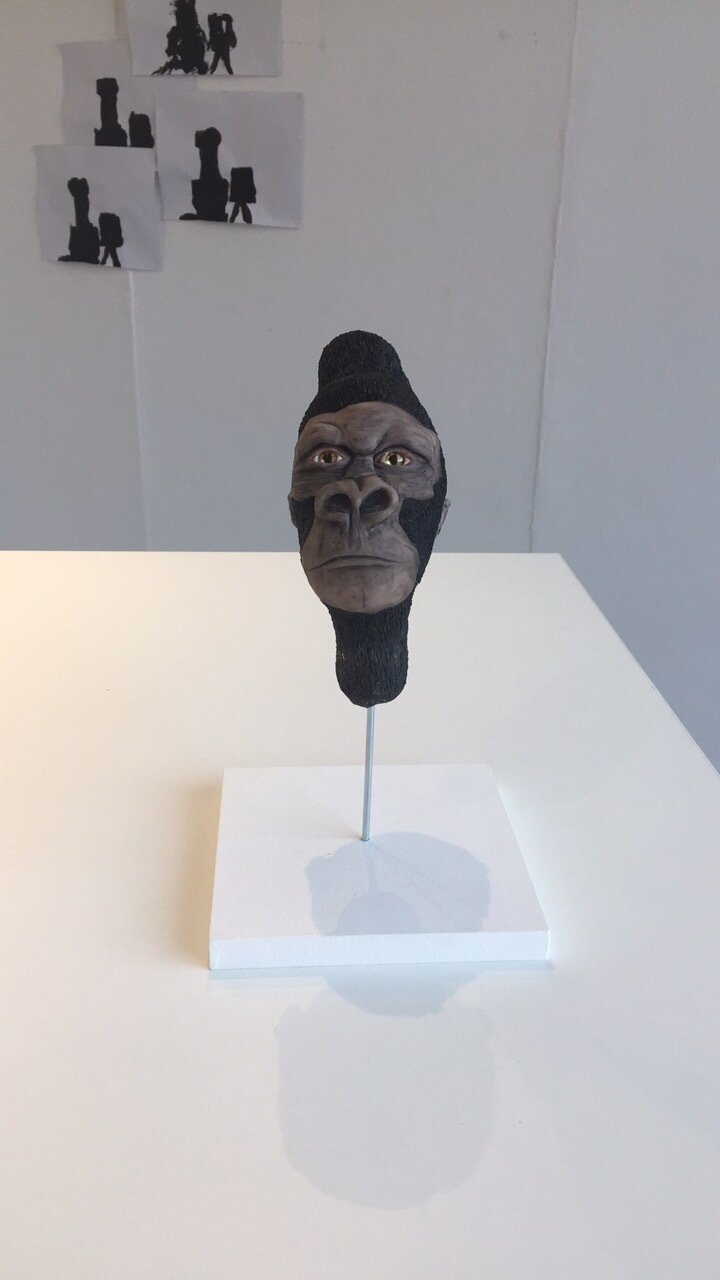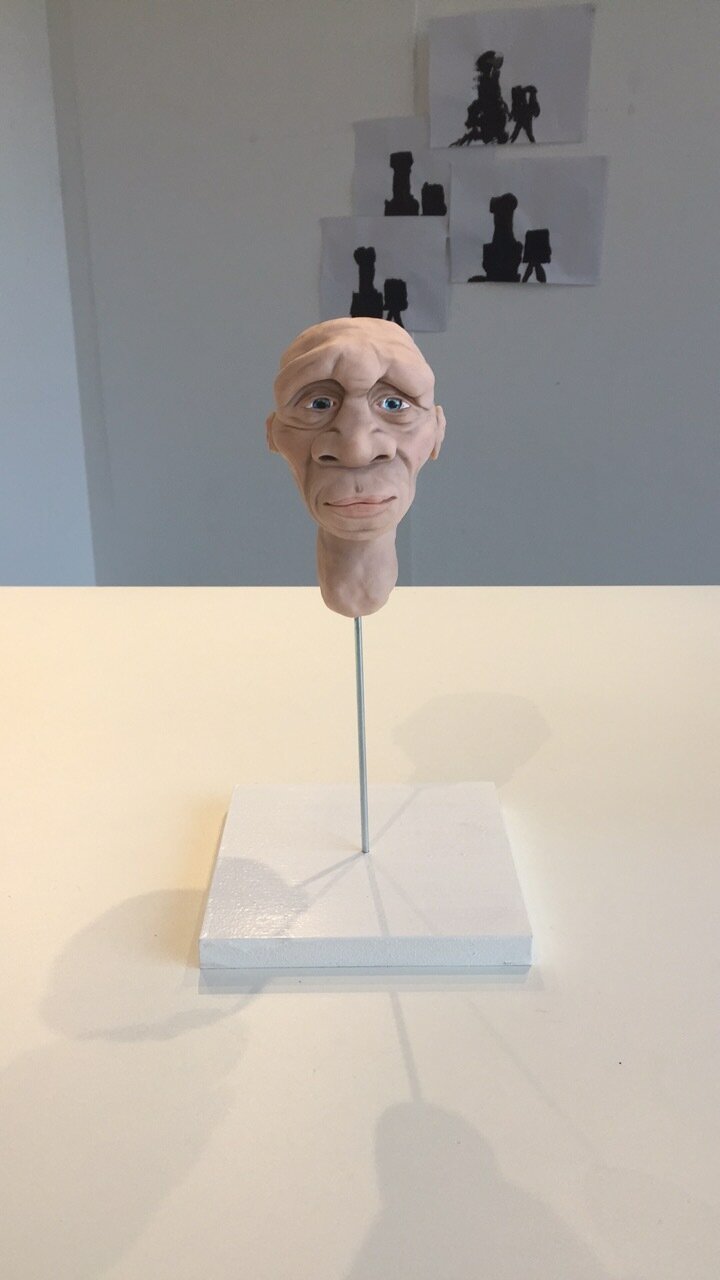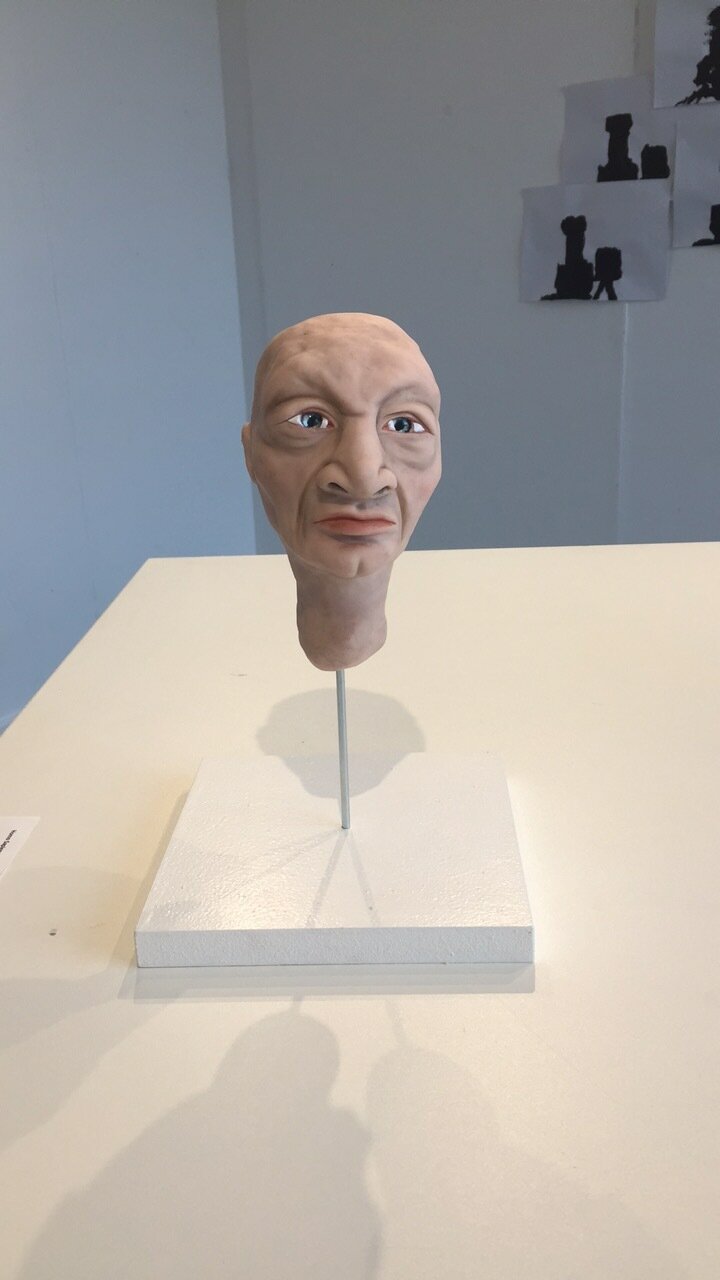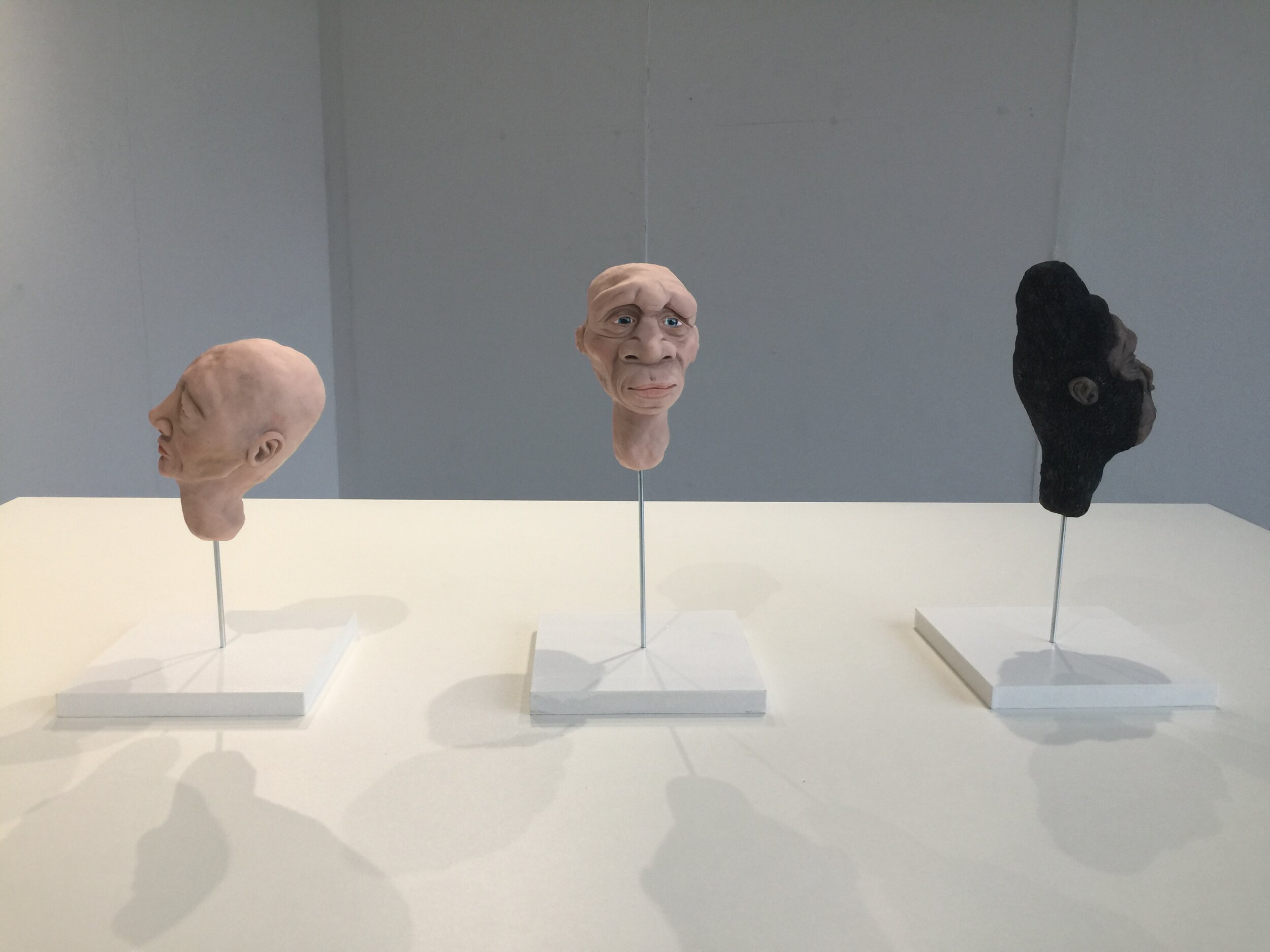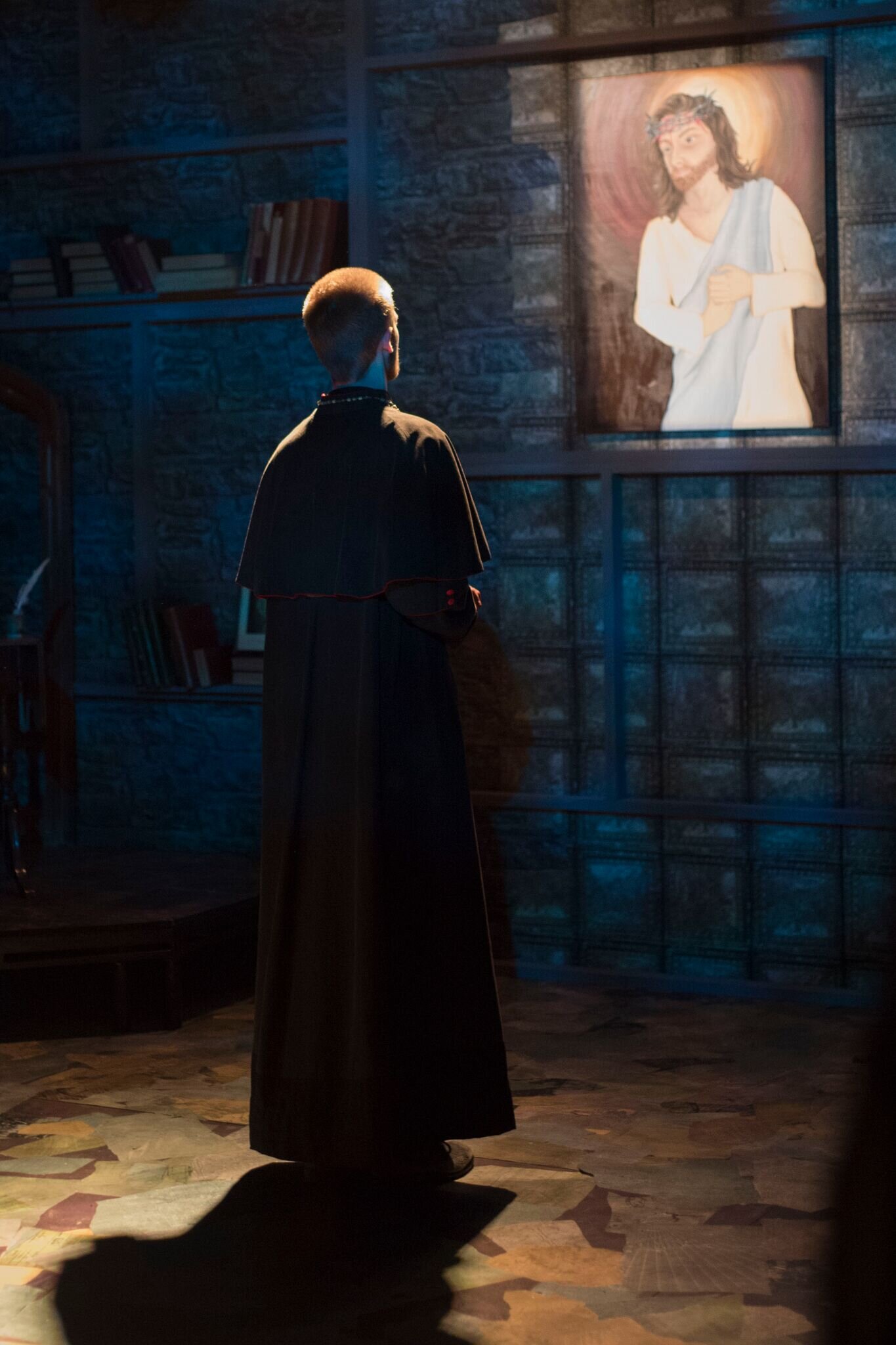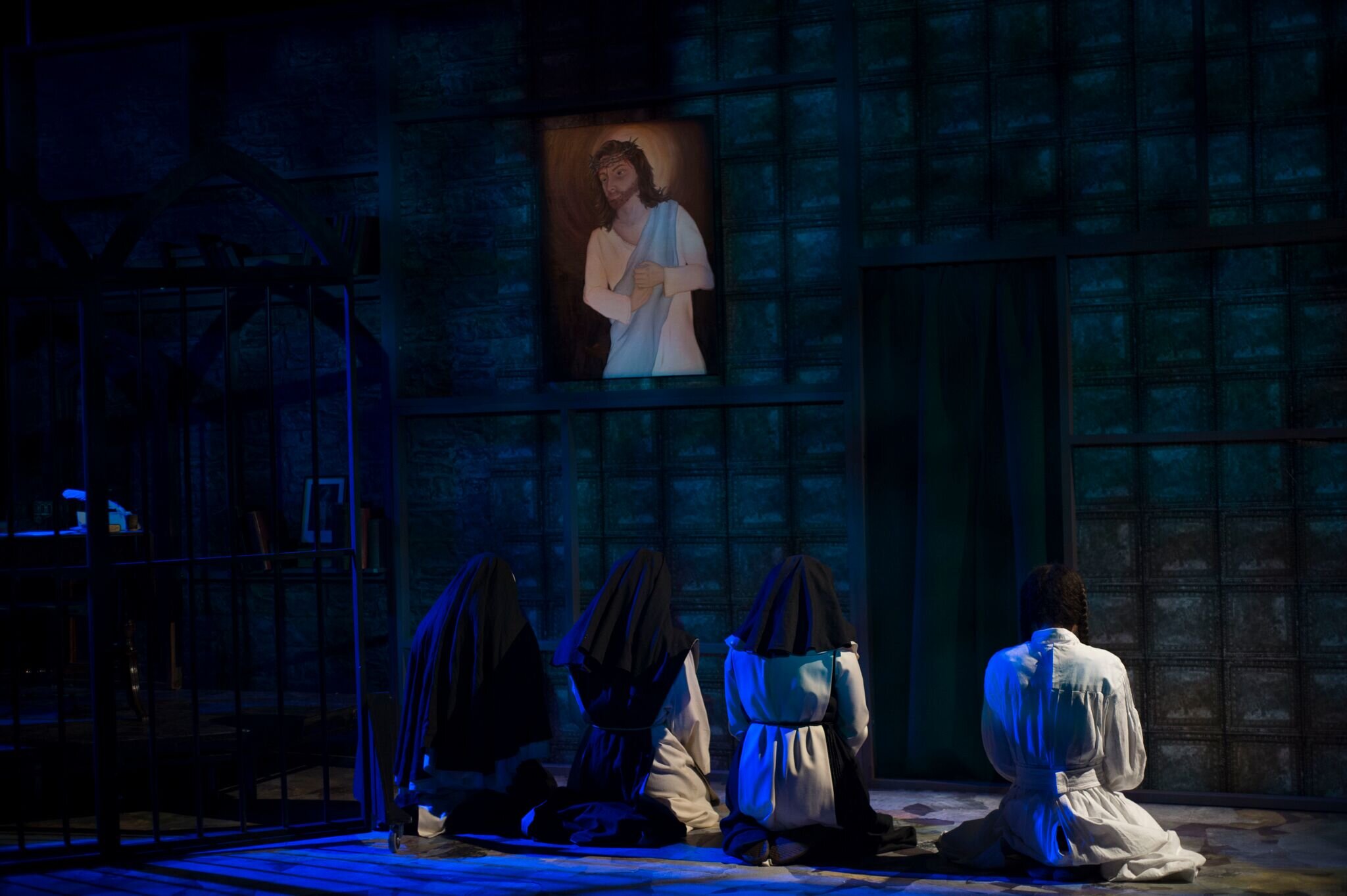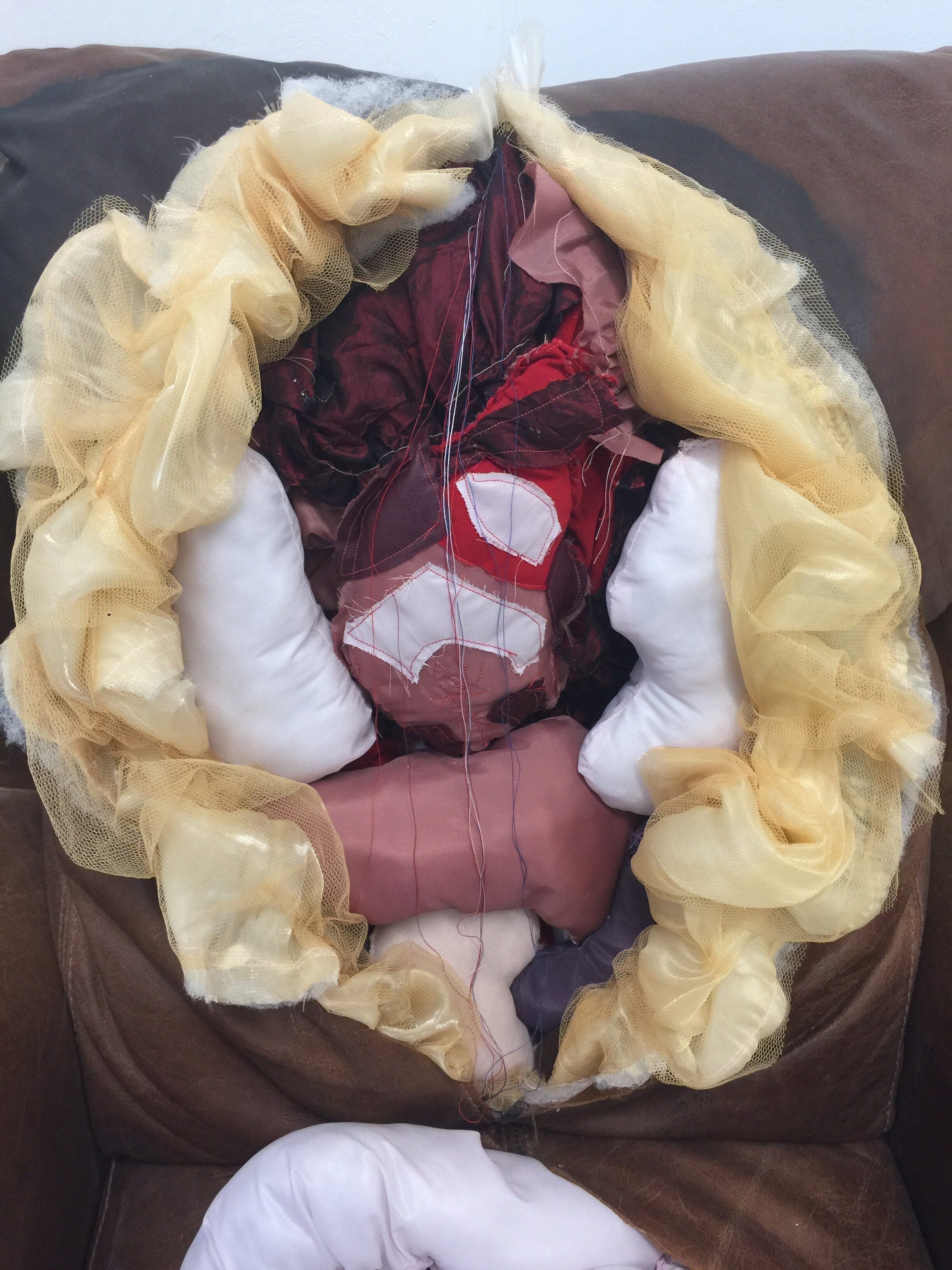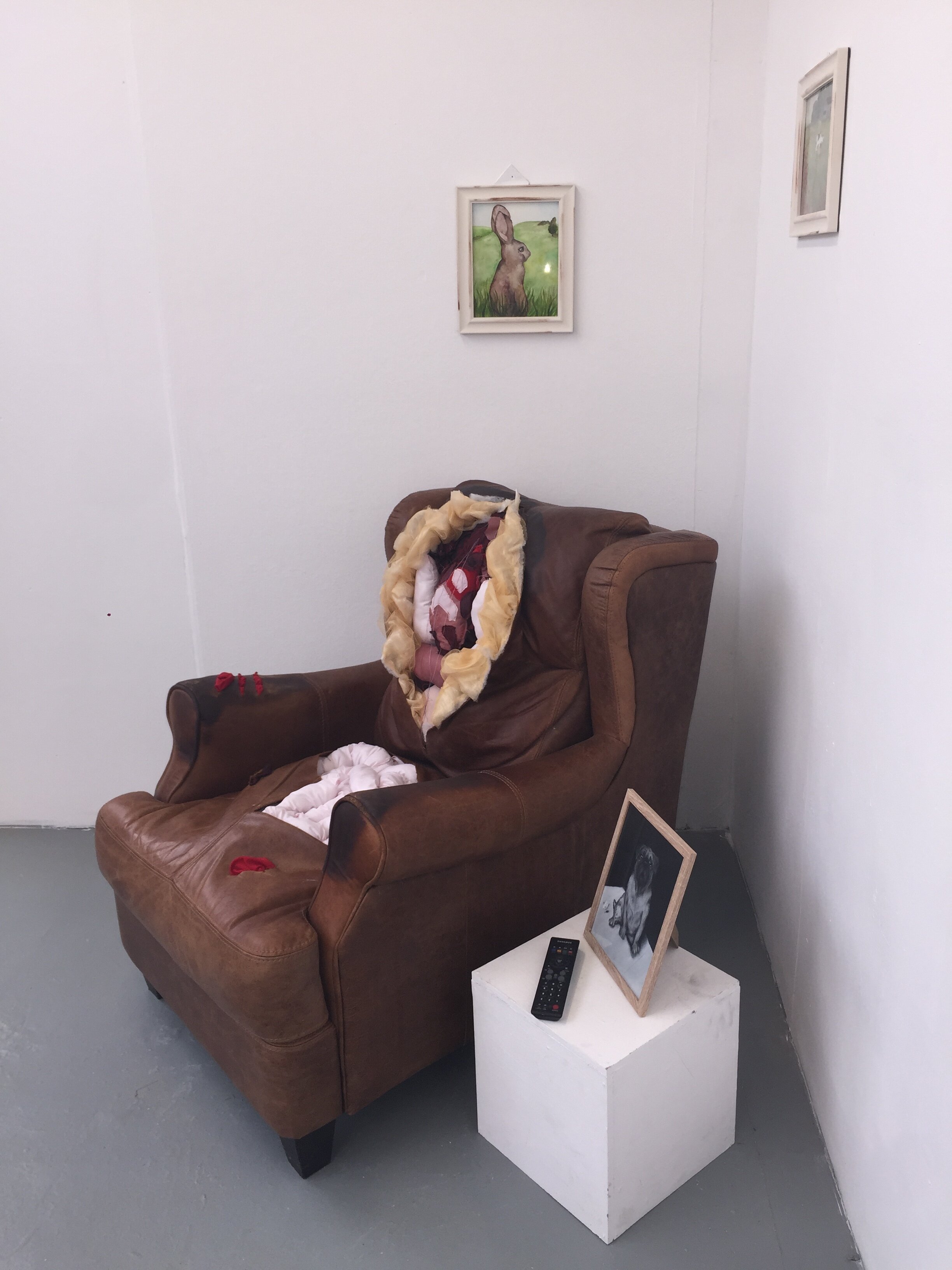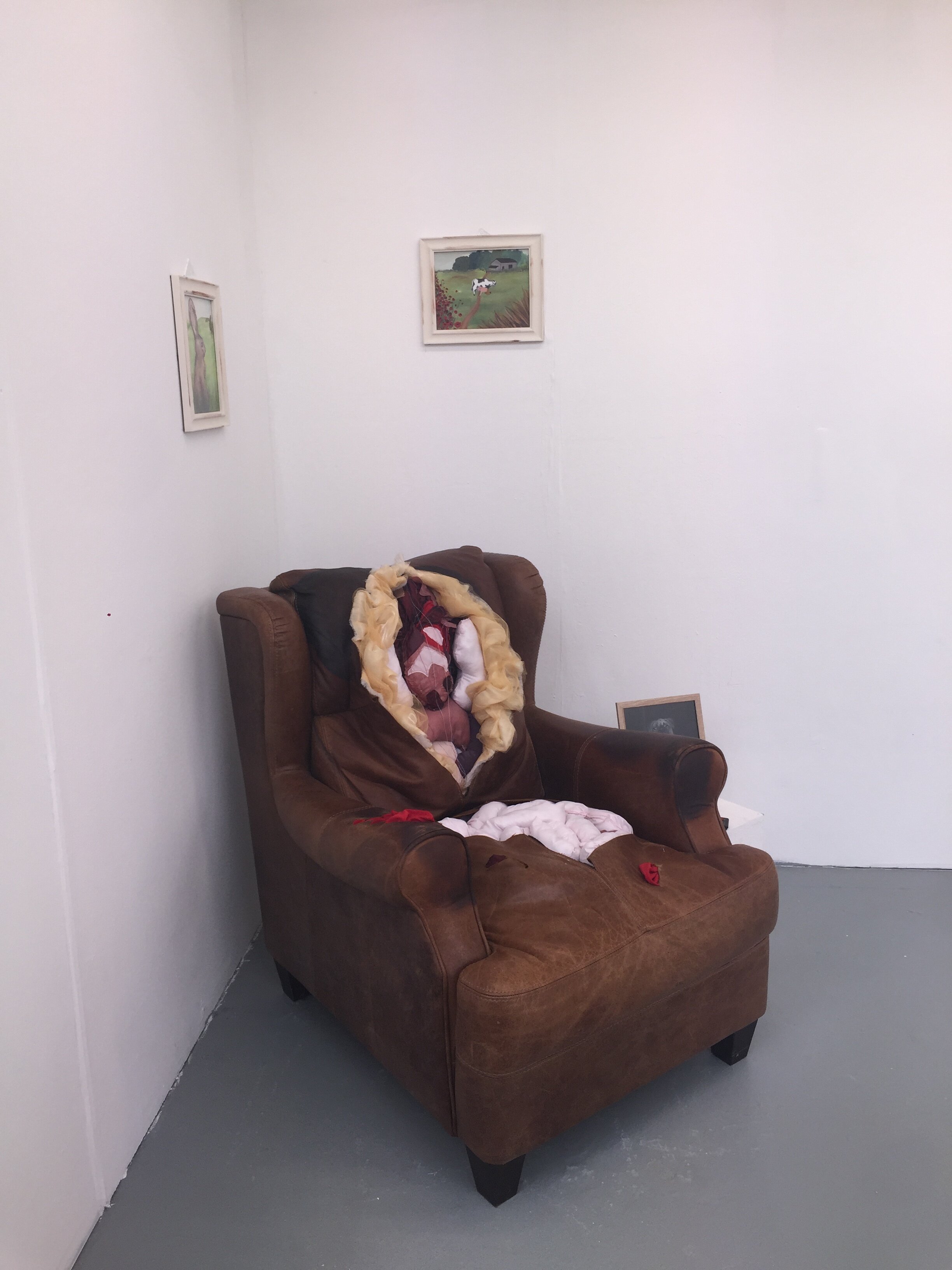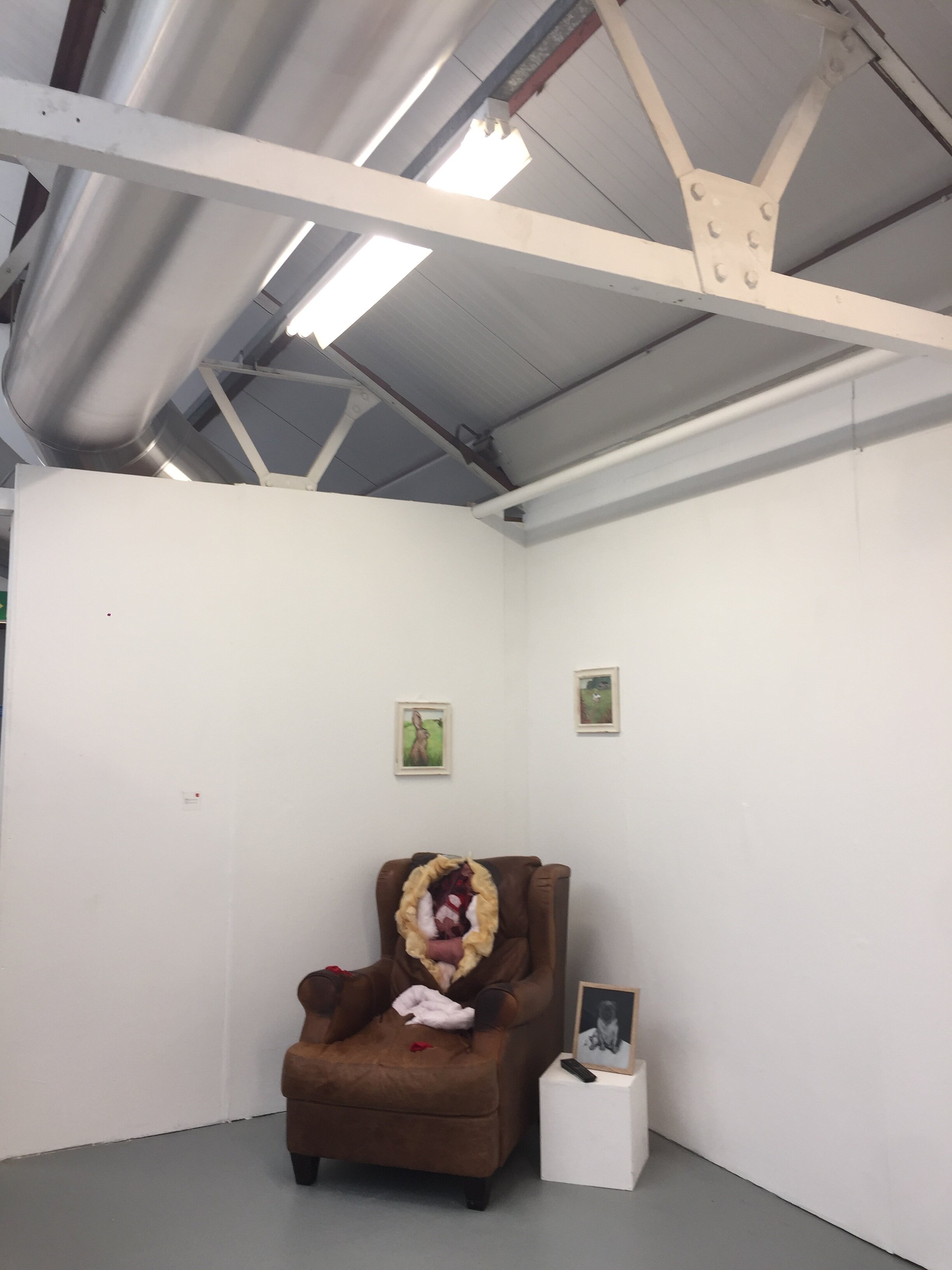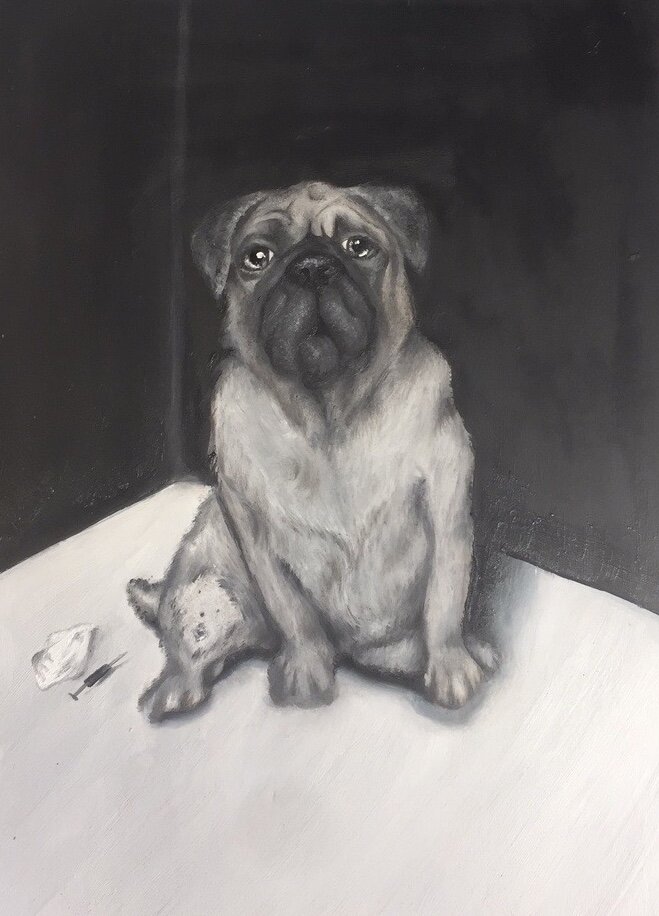Projects & Exhibitions
MK Calling 2024 MK Gallery
22 June – 29 September 2024
This year’s MK Calling features artworks spanning sculpture, painting, photography, installation and film. Over 120 established and emerging artists explore themes including identity, inclusivity, possible futures, heritage, and significant moments across five thematic gallery spaces.
My sculpture ‘Twist My Arm’ was selected to feature in the ‘Possible Futures’ curated space within MK Gallery.
Installation Images Polly Bates ‘Twist My Arm’ exhibited in MK Calling 2024 at MK Gallery.
Installation Images of MK Calling 2024, MK Gallery, Photography by Rob Harris
MA Show 2023 Manchester School of Art
Friday 12th — Monday 22nd January 2024
This exhibition celebrated the class of 2023, and marked the completion of my MFA Fine Art at Manchester Metropolitan University. I was awarded a MFA with Distinction and received a mark of 90% overall for my final year.
POLLY BATES: SYMBIOTIC Solo Exhibition at AIR Gallery, Altrincham, Manchester
Exhibition opening 11th May 2023, 18:00 - 22:00
Exhibition continues 12th May - 3rd June 2023
My uncanny and environmentally anxious ceramic sculptures encourage viewers to reflect on our cultural, spiritual and biological relationships with lesser-considered elements in nature. I transform readings into the Anthropocene, Animism, Gaia Theory and Mycology into hybrids of nature. Fictitious organic beings which eerily echo the world we know.
Symbiotic showcases a surreal glimpse into my exploration of living in a geological era shaped by humanity.
“Since working with clay, I have begun to recognise the material’s vibrancy, energy and agency. I see sculpting as a collaboration between myself and the clay. I welcome a mutual discussion as the material reacts and begins to determine its own form. The unpredictability of clay progresses into the firing process, where air pockets can cause ruptures. The sculpture begins to evolve and alter its appearance without my influence. I believe this to speak to the experience of non-human nature; Western’ society has self-proclaimed humans to be at the top of nature’s hierarchy, but we have ignited a destructive path which is now spiralling beyond our control.”
Polly Bates: Symbiotic features anthropomorphic, ambiguous ceramic sculptures, including Hand Boulder (2022) which has been exhibited in Venice, Italy, Reaching Rock (2023) and Teat (2023). I manipulate clay, a natural, raw material just as humans distort nature and transform landscapes, which become tools in our economy with little concern for degradation and exploitation. These life-like bodily sculptures hold a deep sadness as they reveal dark histories and uncertain futures.
Hand Boulder at Warrington Contemporary Arts Festival 2022
21st October 2022 - 12th February 2023
‘Hand Boulder’ exhibited in Warrington Contemporary Arts Festival, Open Exhibition 2022, a showcase of North-West England artists in collaboration with Castlefield Gallery, located at Warrington Museum and Gallery, Bold Street, Warrington.
“The Open Exhibition is all about celebrating the talents of contemporary artists within the area and we’re delighted to be making our comeback after the pandemic. An incredible opportunity and springboard for emerging artists, first prize includes a solo show at Warrington Museum and Art Gallery in 2023 with full support!”
Handsy Boulder at CONTEMPORARY VENICE: 11th Edition 2022
October 21st - November 10th 2022
After being approached by ITS LIQUID’s event coordinator and being invited to submit, ‘Handsy Boulder’ exhibited in the 11th Venice Contemporary 2022 Exhibition. Venice Contemporary: 11th Edition was an international exhibition of art which analysed the relationship between body and space, the hybridization between identities and cultural, physical, social and urban settings in contemporary time, through two main sections: Mixing Identities and Future Landscapes.
The exhibition ran alongside the Venice Biennale and was held in the cultural centre, Palazzo Bembo, Riva del Carbon, Venice, Italy.
Manchester Metropolitan University MA Show 2022
9th - 16th September 2022
The MA Show 2022 showcases the work of Manchester School of Art's postgraduate students in Fine Art, Painting, Embroidery, and Textiles.
Rock and Roll, 2022
I have recently realised the process of sculpting becomes a collaboration between myself and the materials. For example, when creating ‘Rock and Roll’, the taller the sculpture became, the more stress on the base. This caused the sculpture to react and collapse. I directed the folds somewhat, but the sculpture was twisting and bending by itself, determining its own form. This is a very intriguing notion as it leads to the question; What is the position of the artist if they no longer has the authority or are in complete control of the creative process?
Recognising the vibrancy and energy of materials, I wanted to delve more into sculpture and its agency. Material engagement theory rejects viewing artefacts as merely forms or shapes, instead experiencing them as a collection of gestures and actions. Lambros Malafouris, professor of Cognitive and Anthropological Archaeology calls this “the hylonoetic field of human becoming”. This means that humans have a direct hand in our ontological development, and this development reveals itself through interactions between ourselves and the materials around us.
Hand Boulders, 2022
Throughout further research into geology and human connection, I read an essay by Ilana Halperin, which compares the life cycle of volcanos to humans. She explains “a volcano perpetually erases what we know of its own history”, which I believe relates to our current self-destructive behaviour. We are erasing our future and the possibility to share our history with the next generations. In this essay, Halperin records a discussion with Sara Barnes about how gall stones and kidney stones are made of geology, highlighting relationships between body stones and volcanic rock. When lava and volcanic surfaces elevate beyond the seafloor to the water’s surface, exposed volcanic rock transforms into oceanic islands. Billions of miniature corals begin to form a reef around the island. Hermatypic corals grow a solid exoskeleton of limestone, calcium carbonate. Although this process is distanced from the human body, the mineral material is the same. “Bones and coral are material cousins, composed of calcium carbonate”.
A less biological connection of rocks to humans is through culture and rituals. Rocks in many societies become objects we collect, trade, and shine. Fossils capture moments in history, both human and non-human, and healing crystals are seen by communities to transform energies.
Animism is a religious and ontological belief which is common to indigenous cultures globally. Victorian anthropologist E. B. Tylor explains Animism to be the “animation of all nature… a sense of spiritual beings… inhabiting trees and rocks and waterfalls”. Indigenous cultures have a much lesser divide between humans, animals, and organic beings. Although Animism has become somewhat lost in contemporary life and identified with the past, Gisli Palsson, a professor of anthropology, believes these views testify to environmental orientalism, the “hubristic attitude of colonizers responsible for the desecration and oppression of peoples and ecosystems across the world”. Environmental orientalism draws attention to political-economic processes and behaviours which have become responsible for environmental degradation, such as capitalist mass consumption and inequalities in income.
Natural Plinths, 2022
After researching the implications of plinths and understanding how Modernist sculptor Henry Moore exhibited his works amongst the landscapes which inspired him, I decided to experiment with exhibiting sculptures in and outside of the typical ‘white cube’ gallery setting.
I began to discover local environments and specific locations which reveal layers of human and non-human history. I also aimed to find a location which held hints of an urban, developed city with present natural elements. The River Irwell is significant to Greater Manchester’s history, with significance in the 19th century to accommodate ships travelling into the industrial heart of Manchester, recent attempts to rehabilitate the River and bring back fish that once habituated the waters, the River Irwell exists today as the veins amongst a thriving metropolis of high-rise buildings and capitalistic culture.
I found a stretch of the River Irwell which had a waterfall-like opening and a mound of naturally gathered stones from the riverbed. The mound of stones gathered within the river became a natural plinth and platform, instead of specifically constructed objects to support and present the sculptures. The organically formed surface exhibited the work, building an environment for the sculptures to exist within. The bright white colour of ‘Organic Species’ really pops and has a strong visual contrast to the colours of the stones; however, the foamy whites from the river create a conversation with the sculptures, ultimately reducing the sense of human placement and intervention.
There are clear visual and material relationships between ‘Curvy Cairns’, ‘Curly Wurly’ and the river’s stones through colour, shapes and texture. Although the sculptures are alien to the space, they feel as though they could belong naturally. I imagine multiple relating, yet varying, sculptures within the space, making a more believable natural happening. Brown tones within the clay forms ‘Curvy Cairns’ and ‘Curly Wurly’ in parts become lost amongst the varying earth tones of the stones, and although this is bordering problematic, it aids the illusion of the sculpture habituating its natural habitat.
Vertical Experiments, 2022
Since shifting my approach to more ambiguous aesthetics and forms, I created vertical sculptures which hint to human features, such as the point of an elbow and billowing rolls of flesh. They have recognisably more generalised natural, organic features, such as intestines and cairns. This shift has been pivotal in my realising a new way of working as I am creating a sense of obscurity, which I haven’t engaged with in clay sculptures before. For example, in simply altering the orientation of sculptures from horizontal to vertical, the connection to landscapes becomes less explicit. By abstracting the qualities of human flesh spilling over, connecting in rolls and embodying stacks of rocks and pebbles, there is a more subtle connection to natural environments and objects, as I am no longer working representationally.
Body Boulder Experiments, 2022
‘Body Boulder Experiments’ is an experimental sculptural series that approaches the human form with a bodily ambiguity, which has manifested into creating organic forms with a modernist influence. These uncanny and humorous clay sculptures are anthromorphic, abstract representations of the human body, and begin to create links between humans and geology or non-human organic matter.
Isolation in Short Supply’s MADE IT! 2021 Art Prize and Exhibition





I was selected by Short Supply and their judges Hetain Patel and Emily Speed for the annual MADE IT! graduate art prize and group exhibition. MADE IT! is a selected showcase of 28 North West graduate artists from the Class of 2020/2021. MADE IT! is in partnership with Cass Art 1984, Castlefield Gallery and Rogue Artists’ Studios.
Inside Looking Out in ARTISTS RESPONDING TO … The Postcard Project Exhibition
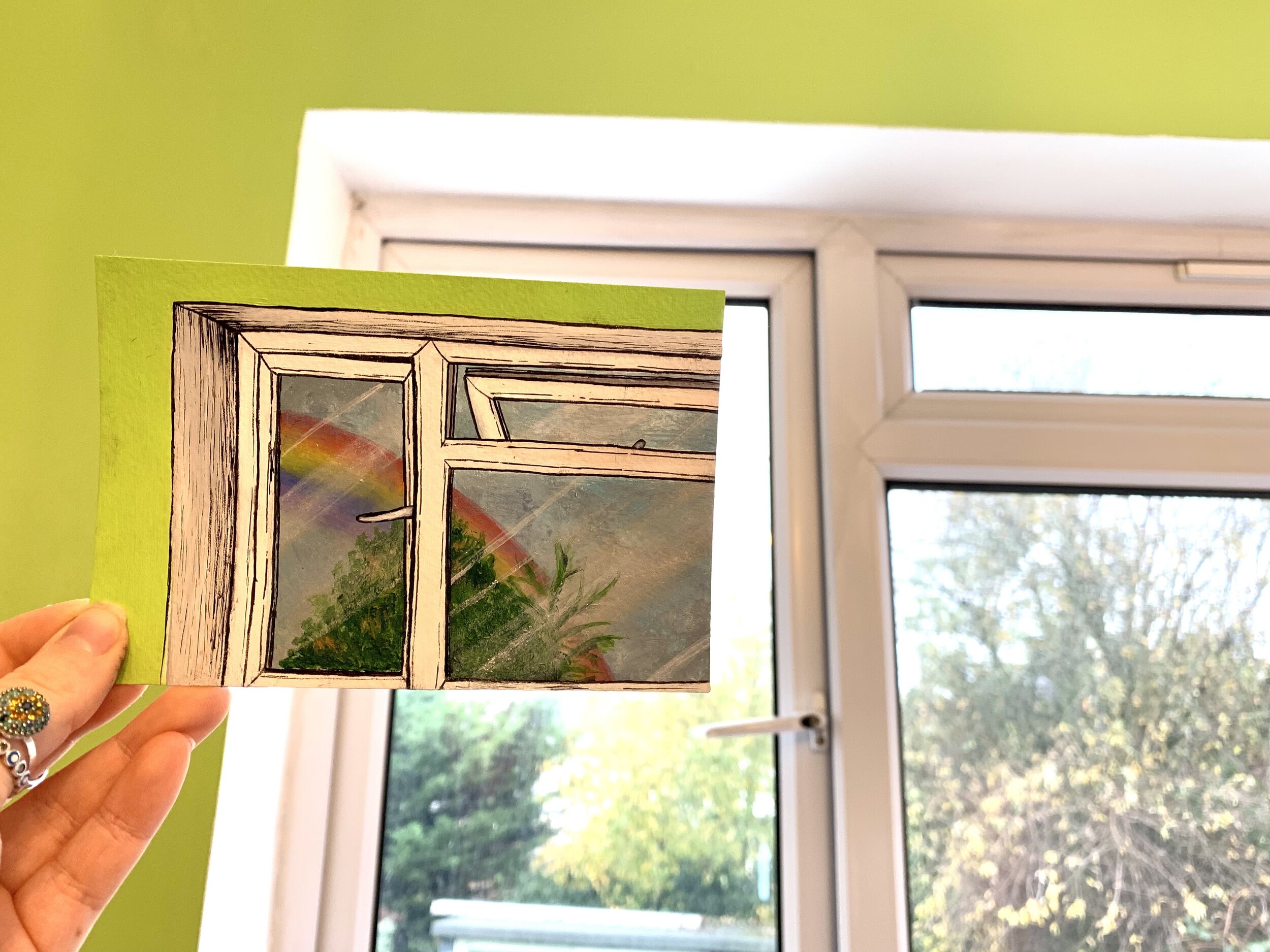
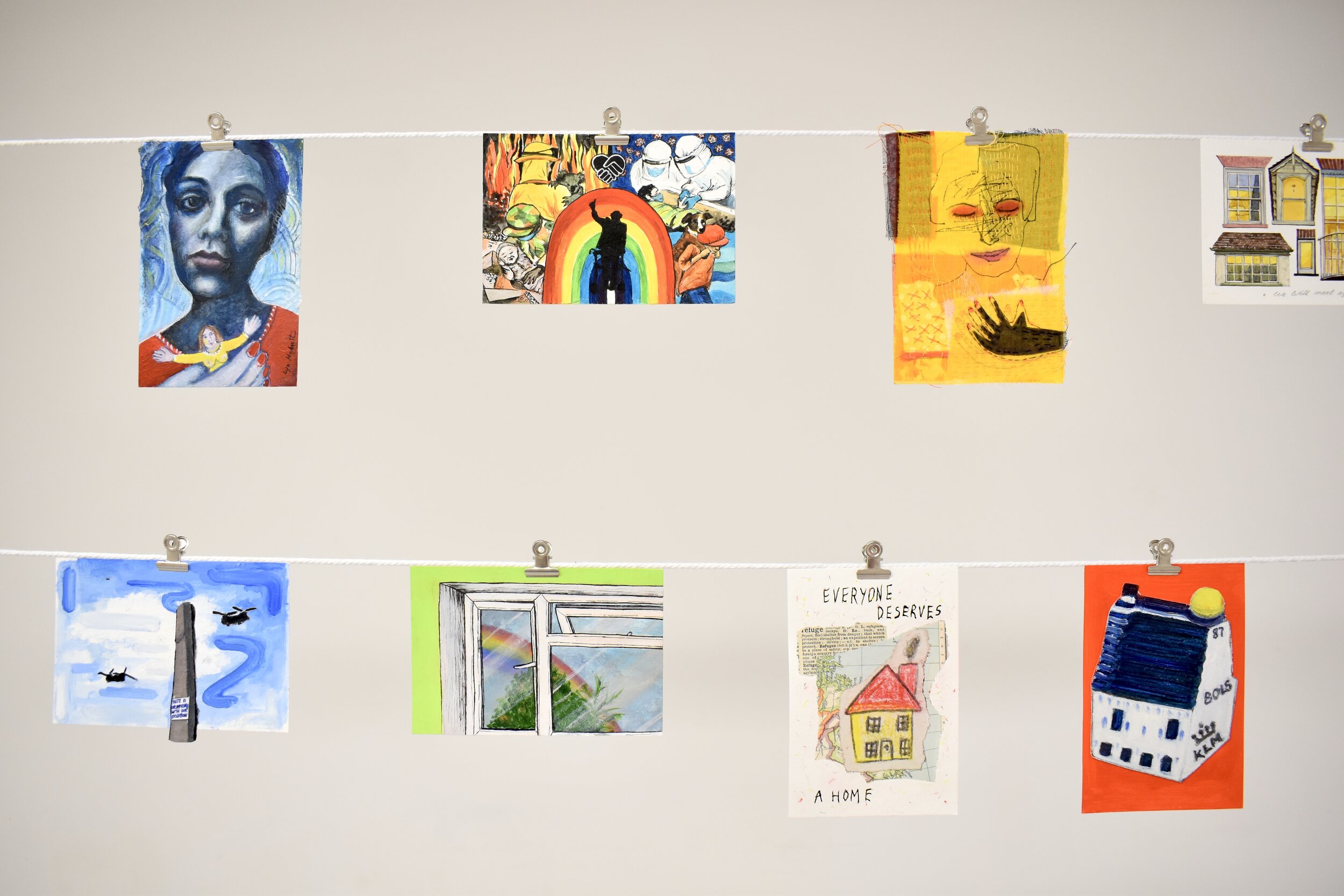
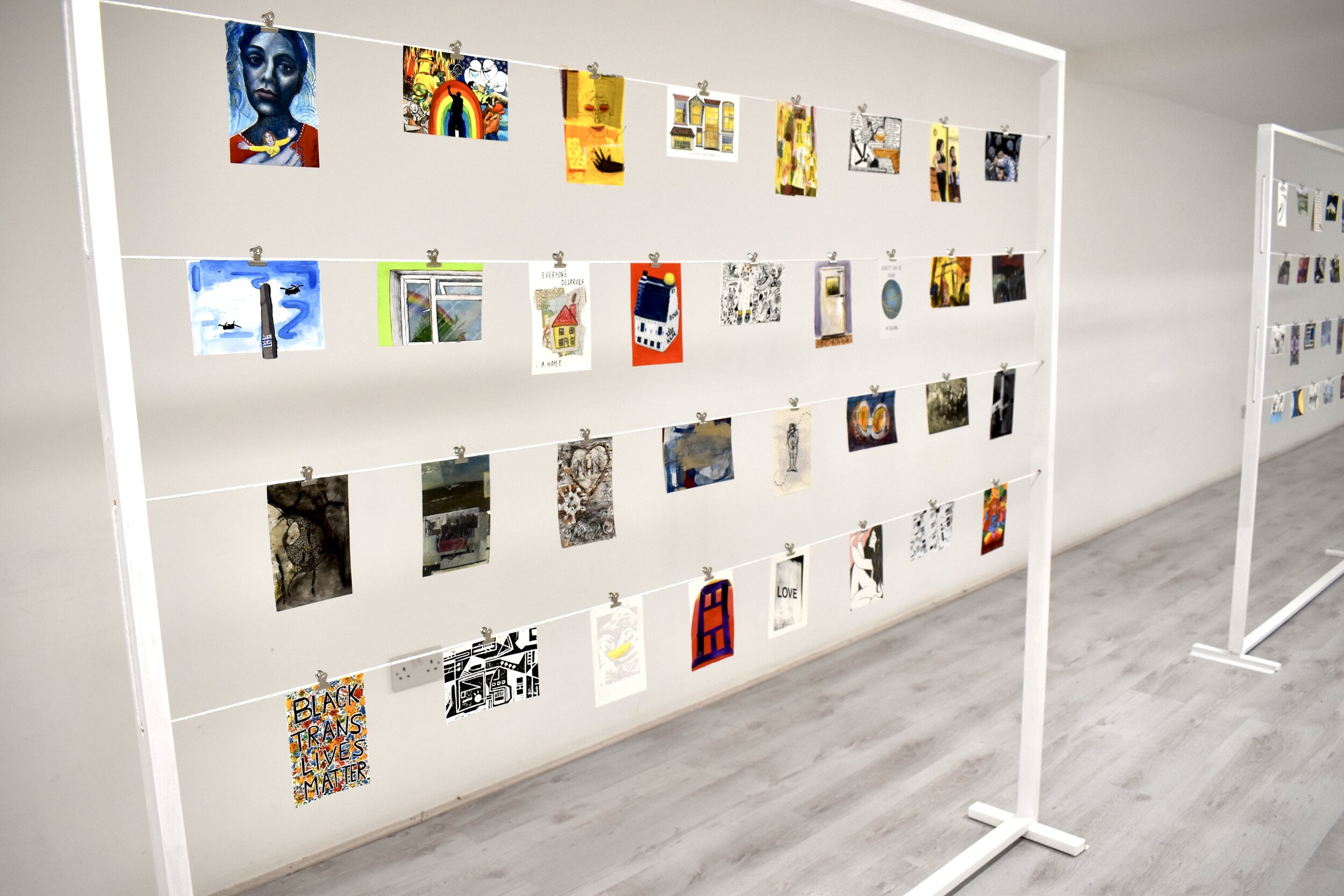
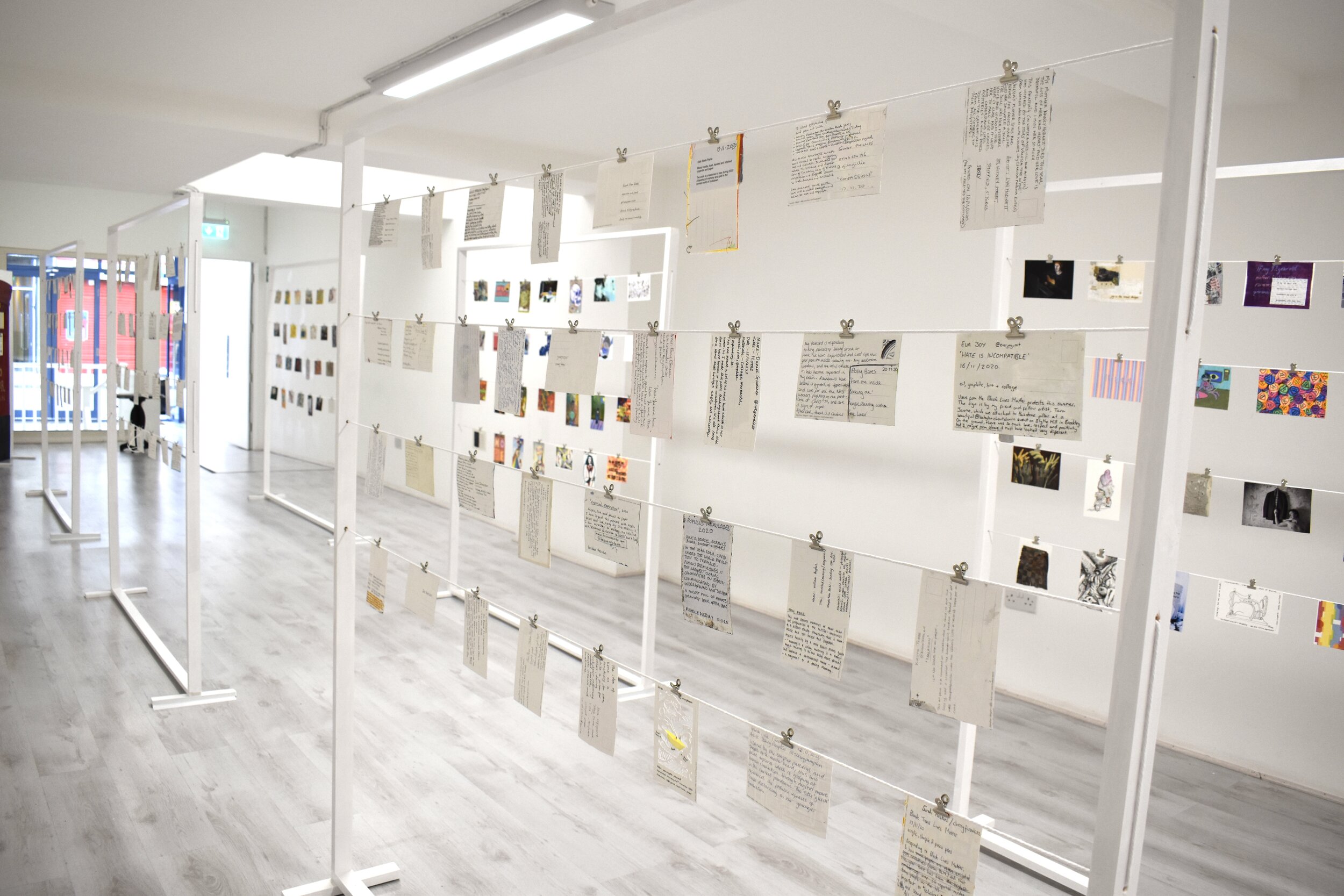

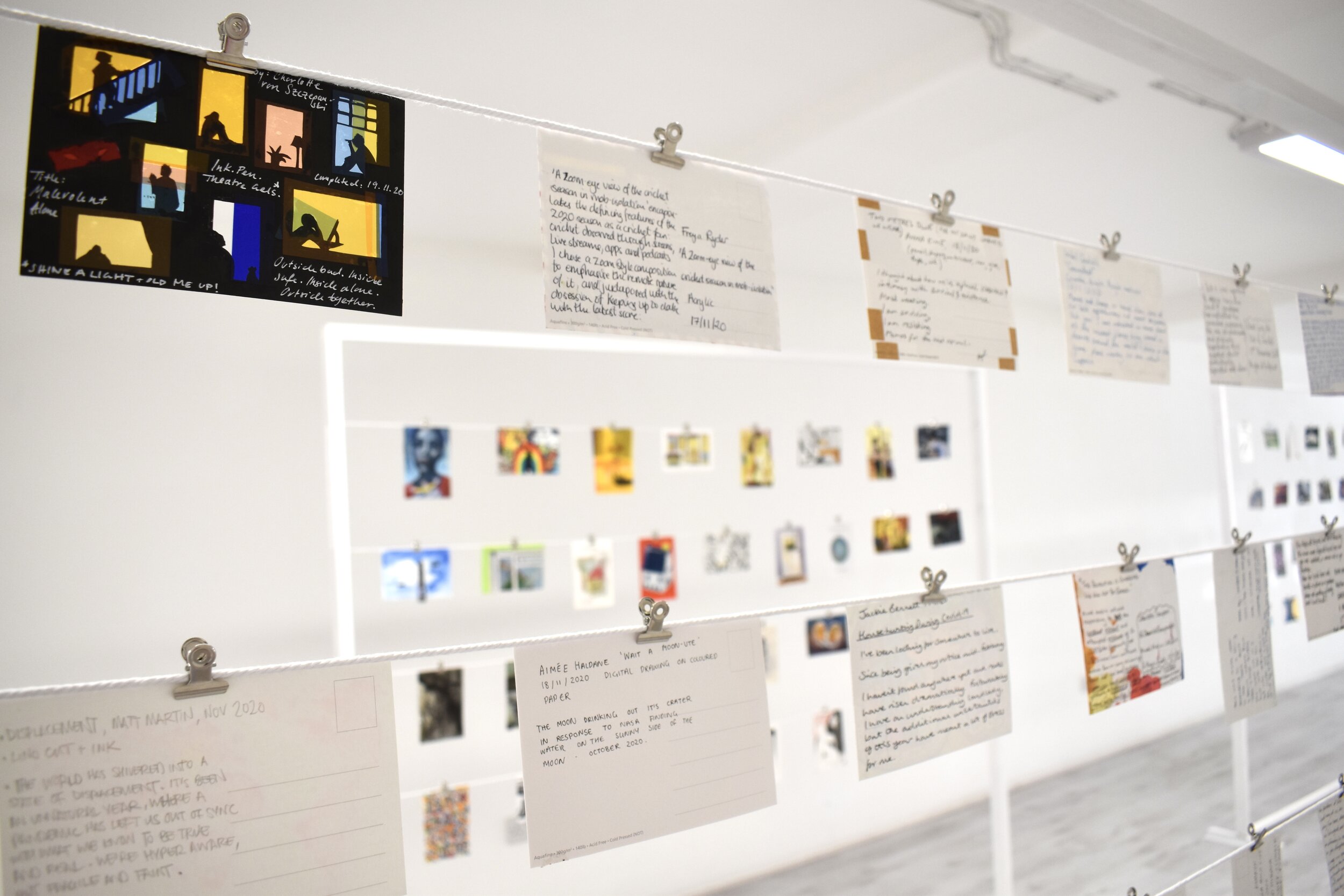
At the beginning of November 2020, and the start of the UK’s second national lockdown, I sent on behalf of ARTISTS RESPONDING TO ... 200 postcards across the UK to 200 artists. These artists were invited to reflect on the year 2020 and create artwork directly onto the postcards.
The artistic responses in the project range from paintings, drawings, lino prints, textile artworks, collages, photography and much, much more. These artworks reflect on experiences of COVID-19 as well as environemntal, political and social issues or triumphs.
2020 and 2021 has been extremely unpredictable, consumed by a global pandemic, environmental turmoil and political warfare, but we have also experienced community, unity and action. We have all been through many physical and emotional challenges or changes, and The Postcard Project demonstrates a strong, inspiring and uplifting sense of resilience and community.
Seeing how much every artist has been affected in such different ways has really put contemporary life into perspective. Each postcard artwork responds to a different personal experience that we can all relate to. They are raw and honest visualisations which shed light on everything these past 18 months have thrown at us collectively, and although they are small in size, they are hugely powerful.
You can purchase a copy of The Postcard Project Book at: https://www.artistsrespondingto.co.uk/product-page/the-postcard-project-book
Isolation in AIR Gallery’s 2020 Graduate Show
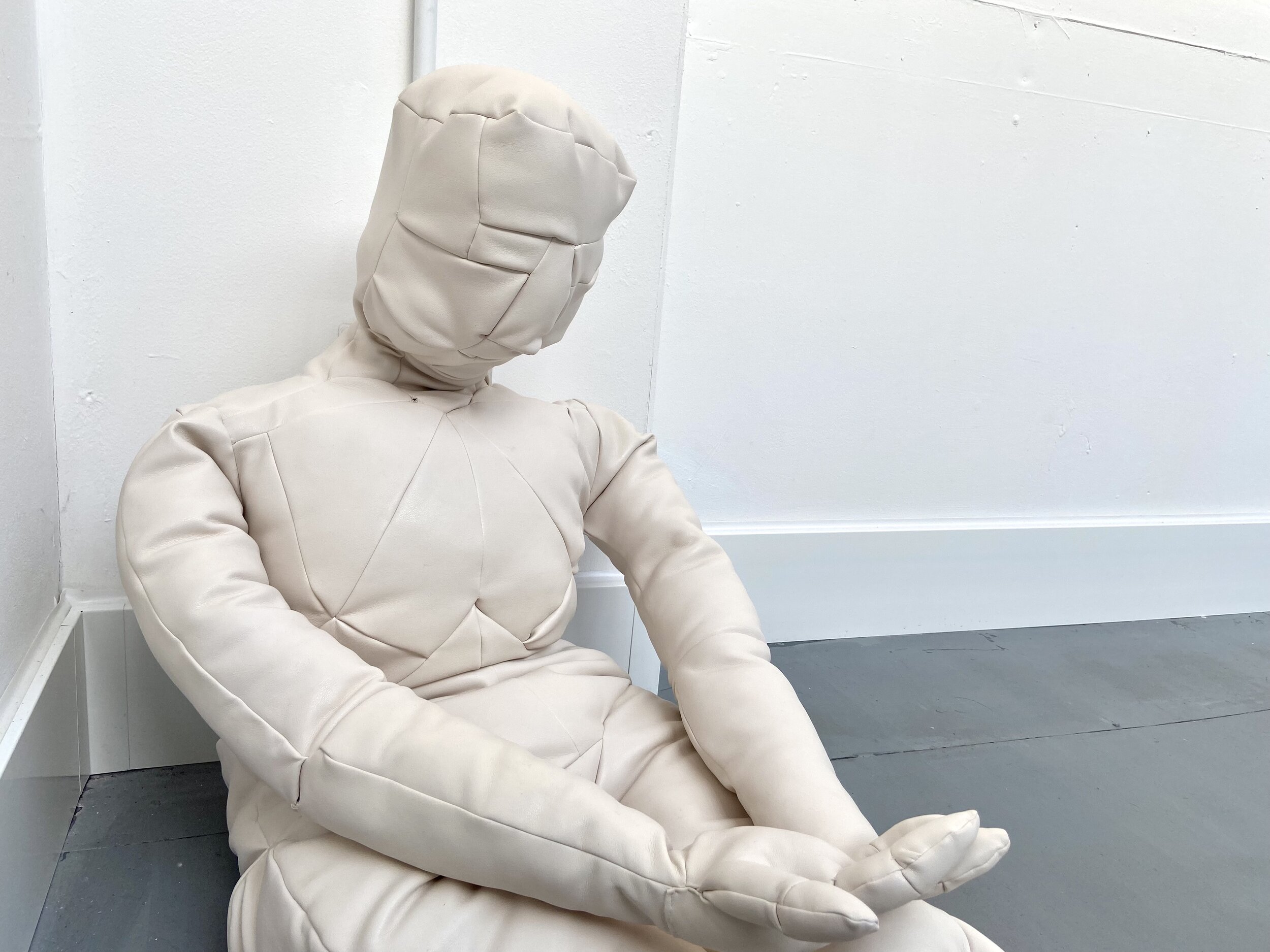
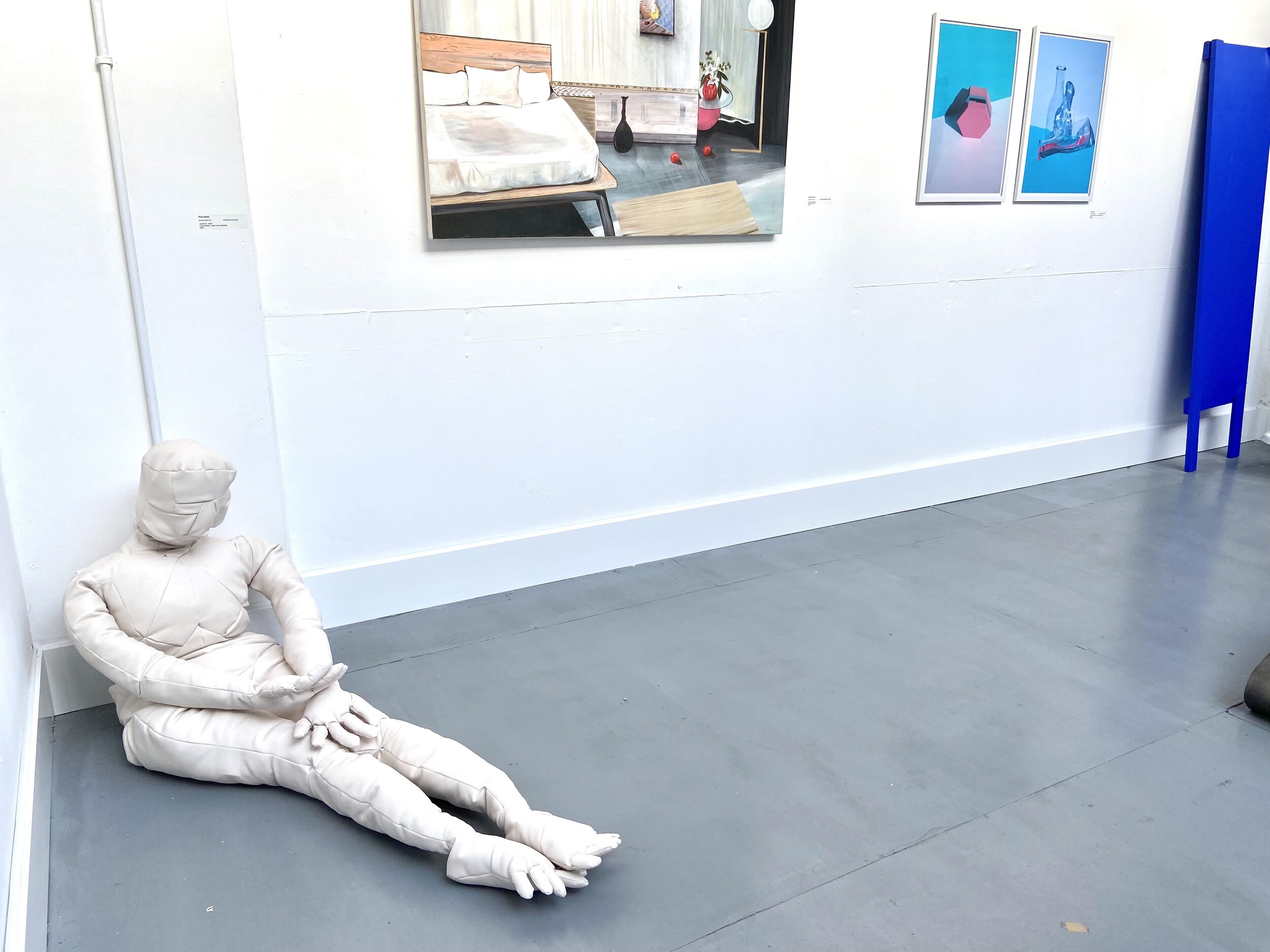

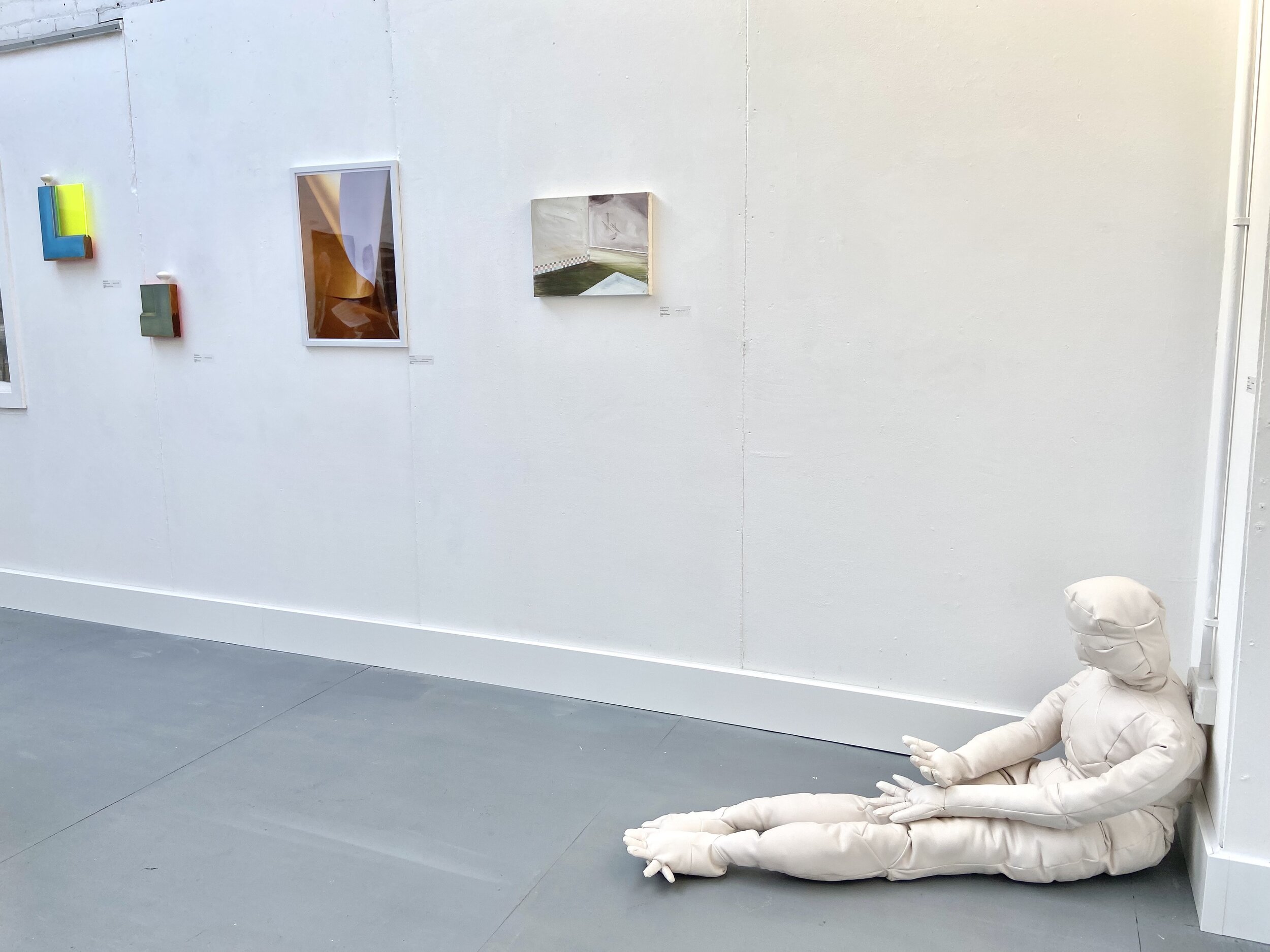
The ‘2020 Graduate Show’ was created for North West Fine Art graduates that unfortunately missed the chance to exhibit their final projects in a Degree Show last year. A selection of 20 graduates from 20 North West Institutions made for an incredibly diverse and exciting show! The exhibition was held at AIR Gallery, just outside of Manchester City Centre, and is in partnership with Short Supply and Castlefield Gallery with funding from Arts Council.
‘Isolation’ explores how technology has altered human connections. The sculpture embodies the sedimentary state we adopt when interacting with technologies such as our phone, consoles or social media, with the construction mimicking a leather sofa. Although we may be together virtually during Covid social distancing and national lockdowns, we cannot ignore the difficulties of the current isolation.
Nurture Nature, 2020
Polymer clay, Lucky Bamboo and wooden block.
40cm x 22cm x 55cm
Nature has the ability to recover after significant disturbances and changes. A survival instinct of adapting to thrive and survive. ‘Nurture Nature’ is a sculpture of two hands with Bamboo growing from the bottom through the palms.
Although the hands were once an obstruction to the Bamboo, the plant continued to grow and they soon became a protector. Bamboo is an integral part to forests and ecosystems across the world, with many humans, animals and environments relying on it for survival.
This sculpture is a symbol for what we can become to nature and our environment. A protector and a nurturer. Although nature is resilient, it is facing an increasing battle of change due to anthropogenic effects. The rate that these changes are occurring means nature’s time is running out. ‘Nurture Nature’ is a call to action and is a plea for a more sustainable and green future.
Polymer clay, Lucky Bamboo and wooden block. 40cm x 22cm x 55cm
I was invited to submit a proposal to Curaty’s exhibition ‘Resilience’, and chose to reflect on nature’s resilience and adaptation of contorting to reach the sun. After sketching a design, I then had 3 weeks to sculpt and finish the artwork in time for their one day pop-up exhibition.
“Resilience is a different reality to each of us. In our all female exhibition, we will bring you inspiring and empowering expressions of resilience, and what the means to each artist.
Curaty will incorporate digital works alongside paintings, prints, and sculptures. Not only will it showcase artists interpretations of resilience it will be an oasis of vibrant colour. Here we can reflect on the triumph within resilience.
Our aim is to get artists sharing their thoughts and spark a community discussion that connects artists, art appreciators and art newbies alike. Let’s join together and speak up!” Curaty.
It was incredibly exciting to be approached to exhibit in this exhibition, and was my first exhibition in London, where I have just re-located to after University.
‘Nurture Nature’ at Curaty’s exhibition Resilience 24th September, 2020, in Mayfair, London.
Toxic in GRADCURATE’s Summer 2020 Exhibition
‘Toxic’ exhibited in Gallery 4 of GRADCURATE’s Summer 2020 Exhibition
“From the outset, a major objective of GRADCURATE was to deliver an exhibition every season. Following the first exhibition at the Bloc Gallery in March, it was hoped that there would be another exhibition in Edinburgh this summer. However, less than a week after the exhibition finished, it was announced that the UK would be going into lockdown amid the ongoing Covid-19 pandemic. As a result, plans for further physical exhibitions have had to be put on hold. Instead, the Summer 2020 Exhibition has taken the form of a series of virtual galleries.
While it is disappointing not to be able to fulfil the original goals of the project, this disappointment surely pales in comparison to that experienced by the graduating class of 2020 – having had their studio time cut short, their final degree shows cancelled and the beginning of their careers stunted by unprecedented uncertainty and adversity. For these reasons, GRADCURATE is proud to include 31 2020 graduates in this exhibition, with many of them choosing to display work that was intended to be part of their degree shows.
These artists join a further 33 recent graduates participating in the exhibition, taking the total number of artists up to 64. Their work spans across painting, printmaking, drawing, photography, film, sculpture, textiles, writing, illustration, mixed media and digital art. Undoubtedly, it would not be possible to include such a high volume and scope of artwork had the exhibition not been delivered digitally.” GRADCURATE.
‘Toxic’ exhibited in Gallery 4 of GRADCURATE’s Summer 2020 Exhibition
Parasite, 2020
Stop-frame animation of dystopian abstract environments which explore the relationship between anthropogenic effects onto the environment, human dominance over land and nature, and how pollution as a symptom of climate change will affect the biological environments that dwell within us.
Parasite explores a dystopian environment which reflects on a potential future and our current world. Parasite explores the relationship between anthropogenic effects onto the environment, human dominance over land and nature, and how pollution as a symptom of climate change will ultimately affect the biological environments that live within us and are essential to our survival.
This film includes 9 short scenes where the human body becomes abstract landscapes. Sculptures occupy these bodyscapes by either travelling through or protruding from the environments. The short scenes are to create a sense of confusion and curiosity, with bizarre short animations similar to aspects of surrealist film. These animations are clunky, absurd and humorous reflections of a dystopian world. Embracing the beauty, and in some scenes the grotesque and ugly side, of the human body is a method I have used with the intentions of creating emotional responses from the viewer. The bright colours have the potential to create an upbeat tone, whilst in the context of natural environments reflect harsh and undesired living conditions. The sound of the video includes animal-like noises of deep buzzing sounds and whispers of alien conversations which are paired with the short scenes.
Latex Landscapes series, 2020
Latex Landscapes explores human’s dominance over land and nature. There is a present relationship and contrast to the notion of natural and synthetic, as man-made, synthetic materials are used to mimic natural landscapes.
Sunset, 2020. Latex portrait sculptures, 3-D sculptural painting made from hand-printed fabric, painted discarded fishing line with a latex bubble, against a digitally painted background.
Life-size latex imprints from a plaster mould of a portrait clay bust sculpture, 3-D sculptural painting made from hand-printed fabric, painted discarded fishing line with a latex bubble, against a digitally painted background. The pairing of the latex portraits with the sculptural painting as foreground create a physical connection to our world, whilst a digital background reconceptualises the sculptures into an imagined environment. There is a certain degree of staging and manipulation within the image and has a clear relationship and interaction between the works. The playfulness of scale within Latex Landscapes is interesting and humorous as you have a magnified depiction of skin against the perspective of monumentous peaks. These sculptural works are existing within a digital environment, and contrasts of the toxic backgrounds create an apocalyptic, dystopian atmosphere.
Hairy Land, 2020
This imagined landscape reflects on endangered plant species such as European wild grass, destroyed from conversion of land and poor agricultural practices. This man-made landscape was constructed using natural materials which creates an interesting connection to human intervention. Our hair holds an abundance of information from genetics, gender, age, race and many more sociocultural contexts, using hair to create this landscape hints to human dominance over land.
Hairy Land, 2020. Human hair, wooden board, bamboo. Roughly 25cm H x 20cm L x 20cm W
This landscape mimics recognisable elements within natural environments and utilises the natural form and curves within hair as a material. Hair can be seen as a beautiful human trait but also trigger responses of disgust. I find this contrast interesting and have fostered it through silky smooth textures against rougher edges. The use of human hair also begins to hint to Ecofeminism, as women are typically suffering from climate change than men. One example of this is due to having to travel further for water in areas such as Africa. Using long hair which is typically worn by women as a material begins to touch on how humans are affecting their environments, but also how those environments are impacting many lives.
Hairy Land sculpture inserted within a digital environment.
Projections, 2020
Earthenware ceramic bust sculpture with an animation of a human hair sculpture projected onto, and protruding from the holes. I began to create a relationship and dialogue between the physical world and the imagined, by combining animations of sculptures projected onto sculptures, making a much more interesting and dynamic setting for the animations to inhabit.
I had created ceramic hollow casts using a six-part mould I made from a clay bust sculpture and made some incisions in two of the cast sculptures in the back of the head. These were very severe incisions in what is a life size realistic human head sculpture. This allowed me to have animations of sculptures protruding and creeping out from inside the head.
Flesh, 2020
3-D sculptural painting fashioned from hand-painted fabric using oil paint, painted discarded filing line and a latex bubble as an ingrown hair.
I chose to create a magnified representation of skin with large strands of hair which started to play with perspective and scale, manipulating it to create a grotesque surface with the intention for a repulsed and uncomfortable response. Adding a silicone bubble as an ingrown hair also adds a gross and ugly touch. There is a contrast between synthetic and natural, with man made materials such as fishing line, synthetic fabric and silicone used to mimic a human organ.
Human hair and synthetic fabric sculptures, 3-D sculptural painting including hand painted fabric, painted discarded fishing line and a latex bubble within a digital landscape. Inserting the sculptures to be living within the environments has begun to speak about the living beings, organisms and bacterium that inhabit the human body which we rely on to keep us healthy. There is a direct connection between the relationship of these biological environments inside the human body, and anthropogenic effects onto the environment. As symptoms leading to climate change increase, so does the amount of pollutants our bodies are exposed to. Whether it be from microplastics in the water we drink or food we eat, to air pollution, these toxic pollutants will begin to show the effects on our bodies. I find irony in man-made destruction to our environment which at the moment is for (in most cases) making aspects of life easier, leading to symptoms which become harsh environmental living conditions and will also begin to effect our health.
Lurid Landscapes, 2020
Lurid Landscapes is a digital painting series that reflects on environments we typically recognise today, but hold hints to flooded, degraded and exhausted land succumbed to the pressures of climate change, and begins to create a dystopian world.
Fissure, 2020. Lurid Landscapes digital painting series.
Lurid Landscapes is a digital painting series that reflects on environments we typically recognise today, but hold hints to flooded, degraded and exhausted land succumbed to the pressures of climate change.
Produced digitally, the series retains a painterly aesthetic of deserted and quiet environments. The colour palette for these landscapes are unrealistic and have a caricature nature to them. I used a colour palette similar but dis-similar to colours found in nature, for example reds, yellows, greens and blues, but in bright, bold and synthetic tones. This adds to their futuristic and dystopian feel. The exaggerated and intense colours hold a certain amount of aggression and danger to the landscapes, hinting to hostile and harsh living conditions. These landscapes create a warning for symptoms of climate change that we are beginning to experience the effects of in all corners of the earth. The simplicity of the paintings are effective as they are non-descriptive environments. They are not trying to convince the audience of a recognisable place but give enough information to spark the viewers imagination as to the possible location. The viewer is welcomed to inject their personal surroundings or experience into the landscape.
This is a short stop-frame animation feating a dystopian digital painting from my series Lurid Landscapes and ceramic digit sculptures occupying the environment. The sculptures are floating aimlessly in the water, with a certain amount of mystery as to where they came from or where they are going. They are floating like debris in the oceans.
Psychedelic Landscapes, 2020
Human hair and vinyl sculptures combined into digital environments, with digital paint touch ups. Later experiments with ceramic sculptures occupying the environments.
The uneven surfaces are similar to those on mountains and hills whilst the colours and hair protruding from the ground remind me of coral reefs. The hair is interesting as a form as it could be protruding out from the pink sculpture or pushing its way in. They are invasive and show human hair in an unusual and not typically experienced way. The hair is in thin clusters flowing from the object it is attached to, a contrast in form to the bulky and heavy bright pink objects. This is taking a recognisable human feature and flipping. There is also a clear contrast between natural and synthetic, with human hair as a material in its natural colour against man-made synthetic vinyl material. The colour of the material was chosen as it is an exaggerated and unrealistic, but not too dissimilar, fleshy tone. The making of the sculpture also reflects this contrast as I was taking a natural material and creating something new, with human intervention manipulating the material’s placement.
Alien, 2020
Re-photographed sculptures. These sculptures hold contrasts of synthetic vs natural. The shapes of the sculptures are hybrids of shapes and animals found in nature, such as human heads, jelly fish, spiders and micro-organisms.
Alien, rephotographed 2020. Human hair, vinyl fabric, aluminium foil, tissue. Each varying in size but no wider than 30cm or longer than 50cm.
These sculptures are made from aluminium foil, recycled synthetic fabrics and human hair. I used aluminium foil and tissue for the fleshy insides of the sculptures as both materials are connected to nature and human intervention. For example, aluminium is a natural chemical element which has been processed and manipulated for personal use. PVC is a manmade synthetic material which represents human engineering and involves plastic, a material which is threatening the life of many species including our own, particularly in areas such as New Delhi. The material used to make the sculptures are shades of pink similar but distant to flesh tones, with the PVC material in relation to faux leather. The shapes of the sculptures are hybrids of shapes and animals found in nature, such as human heads, jelly fish, spiders and micro-organisms.
Earth, 2020
A sculpture to be exhibited at Climate Cocktail Club’s event Creative Responses to the Climate Crisis - postponed due to corona virus.
Earth, 2020. Earthenware Ceramic bust sculpture, ‘Green Lady’ fern plant, soil. Roughly 45cm in height.
Using clay and wire I produced a self-portrait bust which I then used to produce a 6-part plaster mould. From this mould I created a slip-cast sculpture adding a few incisions before being fired and painted in an earthy green. On a mound of soil, the sculpture sits at the peak with a plant growing from inside, seeping out of the head. Sitting the sculpture on a mound of soil hints to the hierarchy we have imposed against nature.
Circles and ovals are reoccurring shapes found amongst nature at incomprehensible sizes, from the enormous heights of the sun, moon and earth, down to fruits, flowers and even microscopic cells. Circles have no beginning or end and can represent lifecycles. The ‘Green Lady’ fern has air purifying qualities and is a plant that flourishes indoors and requires a certain amount of care and attention from human interaction. The plant is protruding from the darkness and into the light through the circular shapes in the back of the head. This represents a possible harmonious relationship between humans and nature. But in contrast, sitting the sculpture on the mound of soil which feeds the plant shows obstruction and a dominance humankind currently holds. Soil is an essential ecosystem which most life on earth relies upon including humans. From plant and crop growth to atmospheric carbon capture, soil condition mediates many processes that affect the climate. Soils are the second largest carbon sink after our oceans, storing three times more carbon than is found in the atmosphere. Rising temperatures, a change in precipitation patterns, mega droughts and massive floods are all symptoms of climate change which are increasing erosion in soil and leading to degradation. When soil loses its fertility and ultimately degrades, it loses its absorption capacity, suffers a loss in nutrients and ability for crop growth and will release immense levels of carbon into the atmosphere.
Regenerating our relationship with nature begins with soil and re-building a harmonious and healthy partnership is instrumental to our future. Working mostly with sculpture, I continue to explore the experience of being human through environmental, social and political influences. Over the past few years I have merged my environmental passions and anxieties within the content of my practice, creating thought-provoking pieces that reflect on and investigate the Anthropocene.
Leave a message, 2020
Images from a performance of a life size PVC sculpture with a phone ringing and buzzing with notifications, messages and calls sitting slightly out of reach. Placing it slumped in a room with a phone slightly out of reach and buzzing with notifications, texts and calls creates an overwhelming sense of anxiety and avoidance. From personal experience phones can sometimes overwhelm me with the sheer amount of notifications and messages, causing me to retract and ignore my phone entirely. The sound of constant messages can create frustration and annoyance which I wanted this piece to reveal. There is also a sense of no escape, linking it with the dangers and accessibility for bullying or online trolling, and the pressures of up keeping online personas.
Squishy Sculpture, 2020
In an age dependent of technology I created a sofa-like body to portray the sedimentary state we adopt when interacting with devices such as our mobile phones or televisions. This sculpture investigates how technology impacts and effects humans in a mental and social capacity, addressing the consequences of technology with increased isolation and a loss of human interaction. We are social creatures and with the use of online messaging or texting becoming the normal way of interacting with each other, opportunities for physical connection is dwindling resulting in a loss of our human qualities.
Squishy Sculpture, 2020. PVC life size sculpture.
The construction of this sculpture reflected on leather sections within sofas but also mirrored the anatomy of the human form. This sculpture is also life size and creates an uncomfortable entity. Created to be androgynous, the sculptural being can reflect everyone and anyone.
As the sculpture is life size, being in the room with it creates an uncomfortable feeling as it is slumped over and lifeless, creating a lonely sadness when looking at it. The slumped over position of the sculpture and placement on the floor means the audience was looking down to it, adding to the pity felt. I intend to photograph this sculpture in a range of social and isolated environments to test out different responses and how it interacted within those settings.
Flower Girl, 2020
Commission for Undergrowth, a Birmingham music events brand
Flower Girl, 2020. Earthenware ceramic slip cast hollow sculpture, spray painted blue with artificial flowers. Rotating disco bulb lighting fixture to be fitted.
Apocalypse, 2019
Apocalypse uses Eco-Speculative Fiction as inspiration for a method to imagine an alternate universe which reflects on our future. Apocalypse represents effects of climate change which have imploded, leaving an unrecognisable Earth with evolved ‘creatures’ roaming the land.
The sculptures have been placed within the installation to look as though they have been roaming the barren land in search for food or shelter. This is a reflection on how humans as a species could be forced to return to a nomadic existence in hope of survival from the aftermath of societal collapse, war, erratic weather and the decay of our urban habitat.
Apocalypse, 2019. Human hair, synthetic fabrics, aluminum foil, paper tissue, hand-dyed cotton fabric, brown paper collected from packaging. 150cm x 75cm x 50cm.
The sculptures are made from aluminium foil, recycled synthetic fabrics and human hair. I used aluminium foil and tissue for the fleshy insides of the sculptures as both materials are connected to nature and human intervention. For example, aluminium is a natural chemical element which has been processed and manipulated for personal use. PVC is a manmade synthetic material which represents human engineering and involves plastic, a material which is threatening the life of many species including our own, particularly in areas such as New Delhi. The material used to make the sculptures are shades of pink similar but distant to flesh tones, with the PVC material in relation to faux leather. The shapes of the sculptures are hybrids of shapes and animals found in nature, such as human heads, jelly fish, spiders and micro-organisms.
Injustice Scales, 07.10.2019 - 18.10.2019
Commission for Extinction Rebellion
The Amazon is vital to our survival, now more than ever. An ecosystem of extraordinary riches, from timber to gold, wild animals and biodiversity to livestock; the Amazon is under threat and so are we.
2019 has been a record year for wildfires burning in the Amazon, and multiple organisations, conglomerates and individuals are capitalising on the destruction. The cumulative effect we are having on our environment and the species we share it with, is damaging our chance of a future.
We need to shed light on the crime behind the crisis; and fight back to end this injustice.
Steel metal rods, brass hand hammered bowls, a pile of international metal coins, a scorched branch collected from a fallen tree, metal chain and D hoops, polymer clay sculpture of the world painted black with a MDF two-tiered board stand.
Injustice Scales, 2019 on site at Extinction Rebellion’s Burning Earth movement in Trafalgar Square 07.10.19 - 18.10.19.
Injustice Scales was a sculpture made for the International Extinction Rebellion movement at the Burning Earth site in Trafalgar Square, London. An artwork which would be outside 24/7 amongst the event from 07.10.19 - 18.10.19. This meant the sculpture would have to withstand rain and winds, close contact with crowds, had to be sturdy and suitable for placing on the ground, whilst having an artistic representation of the burning Earth.
After submitting a proposal, I was contacted by the group requesting the sculpture. I then had just 9 days to get Injustice Scales made and delivered to their storage space.
On Monday 7th October, I erected the sculpture in Trafalgar Square amongst the other artworks in the form of flags, banners and actions such as leaving flowers to commemorate the death of thousands of species, and the suffering of the Earth itself.
Say no to Plastics, 2019
Staffordshire University’s Greek Week Design Competition Winner
Say no to plastics, 2019 winning design from Staffordshire University's Green Week competition.
For my University’s Green Week in February 2019, the Students Union (SU) held a competition with the theme ‘love your planet’. The 2 winning designs were to be printed onto canvas tote bags and sold across campus. The money from sales of plastic carrier bags in the SU shops paid for the production of the tote bags, and the proceeds from the sale of the tote bags will go back into funding future Green Week competitions and innovative ways to become a greener University.
I submitted my design which was then picked in the top 10, the top 10 designs were put onto the SU’s facebook page where my peers voted on their favourite design. With the most popular design; In September 2019 (ready for welcome week) it was printed onto canvas tote bags and are currently being sold in the SU shops. With the aims of encouraging students towards reusable bags, reducing the amount of plastic carrier bags being bought in the SU shops.
Pollution Debris, 03.05.2019 - 04.05.2019
Group Exhibition, Amalgamation, Staffordshire University, Cadman Gallery
This installation aims to highlight how barbaric and damaging the human race are being to marine life and surrounding species through pollution debris in our oceans. Less than 20% of all plastic is recycled globally, with 40% of plastic produced being single use packaging (National Geographic, 2018).
An estimated 640,000 tonnes of nylon ghost nets, lines and discarded fishing gear is abandoned in our oceans each year; ensnaring, maiming, drowning or simply starving hundreds of thousands (World Animal Protection 2014).
This installation is a call to arms, recognising the need to work together to create change. Each sculpture represents a real circumstance, a painful reminder of the destruction we are leaving behind.
Polymer clay sculptures each featuring a plastic consumable or piece of pollution debris now typically found in the ocean (plastic carrier bag, nylon fishing rope, plastic straws, and plastic packaging), an assortment of nylon nets and rope, metal 3 claw fishing hooks, MDF board plinths and wooden frame painted renaissance blue.
Pollution Debris, 2019 Installation for Group Exhibition Amalgamation.
This installation includes polymer clay sculptures featuring a piece of plastic pollution, a collage of nylon nets, rope, fishing line and hooks.
Plastic, The Slow Tsunami, 2019
Public Permanent Artwork Commission For Staffordshire University Students’ Union
An artwork commissioned by Staffordshire University Students’ Union, reflecting on the unnatural disaster of a material that is consuming our oceans; plastic. Working alongside the Students Union, Polly has been encouraging peers to reconsider the quantity of plastic bottles we consume as a University. Bringing the global problem of plastic consumption back to the individual and their personal responsibility.
These bottle tops have been collected across the University campus, as a material for making the work but also with the aim of raising awareness; encouraging staff and students to consider alternatives to become a more sustainable university.
Plastic bottle tops on MDF board.
Plastic, The Slow Tsunami 2019 commission for Staffordshire University’s Students Union, Stoke on Trent.
1.5 metre x 1.5 metre
In March 2019, I was commissioned by my University's Students Union to create a wall-based design, that would become a permanent public artwork. For this project I campaigned with the student’s union whilst collecting bottle tops across campus, which then became the material for the artwork.
Creating a bottle tops mural 'Plastic, The Slow Tsunami', which shed light on the unnatural disaster of a material that is consuming our oceans. Whilst also with the aim of encouraging peers and staff to reduce the number of plastic bottles we consume as a University, to become greener and more sustainable.
PolluShine, Is It Worth It? 24.03.2019 - 30.03.2019
Solo Exhibition at AirSpace Gallery, Stoke on Trent, Hanley
An installation of a staged shop window; ‘PolluShine, Is It Worth It?’, aims to highlight how barbaric and damaging we are being to marine life and surrounding species. Using a mixture of made and found plastic objects, a shop scene demonstrates the impact of man’s consumer culture on wildlife and the environment.
With sourcing and packaging of our food and products, we are inflicting this lifestyle onto the animals effected. This installation is a call to arms, and recognises the need to work together to create change. Less than 20% of all plastic is recycled globally, with 40% of plastic produced being single use packaging (National Geographic 2018).
Each sculpture represents a real circumstance, a painful reminder of the destruction we are leaving behind.
Polymer clay sculptures each featuring a plastic consumable or piece of pollution debris now typically found in the ocean (plastic carrier bag, nylon fishing rope, plastic straws, and plastic packaging), One size fits all clothing range fashioned from fishing line and nylon nets displayed on plastic hangers and a clothes rail, sun catchers made from melted micro-plastic beads and wooden hoops, light shade made from a plastic water barrel cut in half with plastic straws to decorate - repurposing single use and throw away items into the more permanent material in which they are, feather oil in a plastic beauty pump to reflect on past oil spills in the ocean claiming the lives of many, 3 part mirror, PolluShine spelt in glittery lettering - another dangerous micro plastic material with a sparkly tulle backdrop.
PolluShine, Is It Worth It? 24.03.2019 - 30.03.2019, Solo Exhibition at AirSpace Gallery, Stoke on Trent.
I contacted AirSpace Gallery in hopes of using their ‘In The Window’ exhibition programme as part of my Professional Placement experience for my degree. After meeting with the director and submitting a proposal, In February I had confirmation from the gallery. This led to my creating a shop window display for a jewellery/clothing store ‘PolluShine, Is It Worth It?’. An installation to highlight how barbaric and damaging we are being to marine life and surrounding species.
This was a very rewarding experience which I learnt a lot from, also giving me an insight into life as a working artist.
Growing Old Is Mandatory, 20.04.2018 - 21.04,2018
Group Exhibition, Buoyed, Staffordshire University, Cadman Gallery
A disturbing journey through time, a desperate attempt to hold onto memories of an easier life.
“Growing old is mandatory. Growing up is optional”.
We choose to mostly remember the good, but what about the bad?
Growing Old Is Mandatory, 2018. Polymer clay sculpture wearing a dolls wig, a video montage with harsh VHS style interference glitches, plastic dolls body, wooden typically domestic shelving.
An installation through a hallway of a disturbing journey through time.
An old dolls headless body placed out of reach on a shelf, with an accompanying recording on loop of a child both crying and laughing intertwining into one.
A video with confronting video and sound glitches of a child happily playing against an adult staring aimlessly into a mirror.
Finally leading you to the dolls head, which instead is sculpted and painted similar to an adult human, along with an eerily slow child continuously singing ‘row, row, row, your boat, gently down the stream, merrily merrily merrily merrily, life is but a dream’.
A Harsh Reality, 08.03.2018 - 09.03.2018
Group Curated, As Time Goes By, Staffordshire University, Cadman Gallery
A sculptural installation to disturb and remind the viewer of the never ending battle against time.
“Growing old is mandatory. Growing up is optional.”
Polly’s installation has an accompanying montage style video, in which reality forcefully intrudes its way through the happy memories of a care free life.
A Harsh Reality, 2018. Polymer clay sculpture wearing a dolls wig, plastic dolls body displayed besides a projection of a video montage with harsh VHS style interference glitches.
A video and sculpture installation kept low to allow people to bend and crouch to a similar height of a child.
A montage style video of a child playing, with harsh glitches and interference sounds similar to VHS.
The dolls head has been sculpted similar to the form of an adults, but painted in the fashion of a doll. A harsh reality check to a coming of age.
Science Fiction, 31.01.2018
Group Exhibition, Dispatches, Staffordshire University, Cadman Gallery
In a time plagued by fake news, how can we know what information to trust?
Science Fiction is a display created in a similar format to what you would find in The Natural History Museum surrounding human evolution. These sculptures were created entirely from imagination, before pairing them with plausible facts and dates collected. Science Fiction creates conversation about what information we can trust, leaving questions about what we actually know.
Science Fiction, 2018. Polymer clay sculptures displayed in a suggestively scientific and artefact layout with accompanying texts.
In a time of fake news I created a display similar to what I saw in the Natural History Museum, complete with facts and dates collected, but using my imagination to create the artefacts the audience saw. Creating conversation about what information we can trust, and leaving questions about what we actually know.
Painting for a theatre set, 2017
Oil Painting on canvas designed for and used in the Staffordshire University’s Level 5 performing arts show.
Images taken from Staffordshire University’s Drama Facebook Page.
Living room, 06.06.2017 - 10.06.2017
Group Exhibition, Final Foundation Exhibition, Staffordshire University, Foundation Studios
An installation of sculpture and oil paintings, reflecting the misuse of animals in industries such as beauty, meat or dairy and clothing.
The Living Room, 2017. Leather arm chair, flesh coloured fabrics and materials mimicking organs, oil and watercolour paintings shedding light on some of the injustices of animal product or testing industries.
Oil Paintings show a man on all fours drinking milk directly from a cow, a rabbit bruised wearing makeup, and a depressed pet pug with a shaved patch and a needle buy its leg.
The leather chair is seeping fabric mimicking organs and flesh, as a reminder of the blood spilt to create the chair.
















